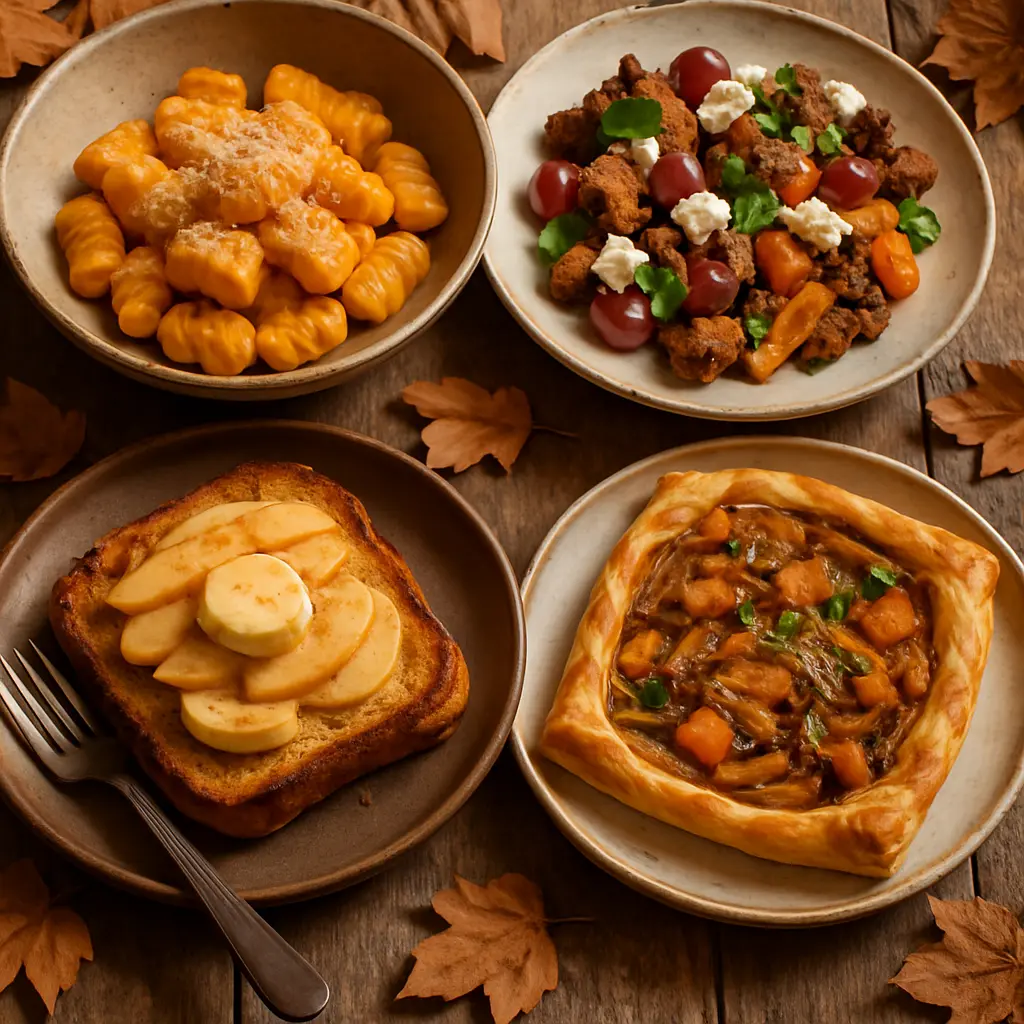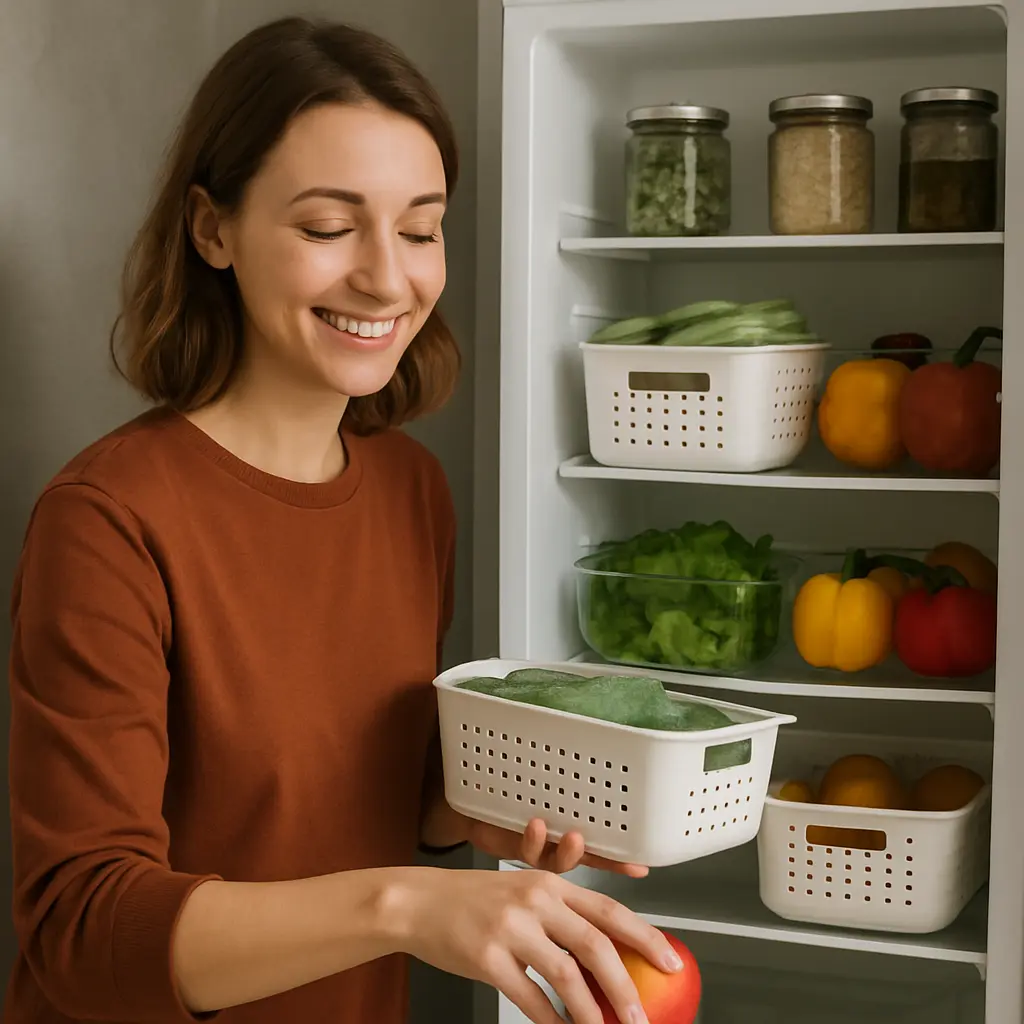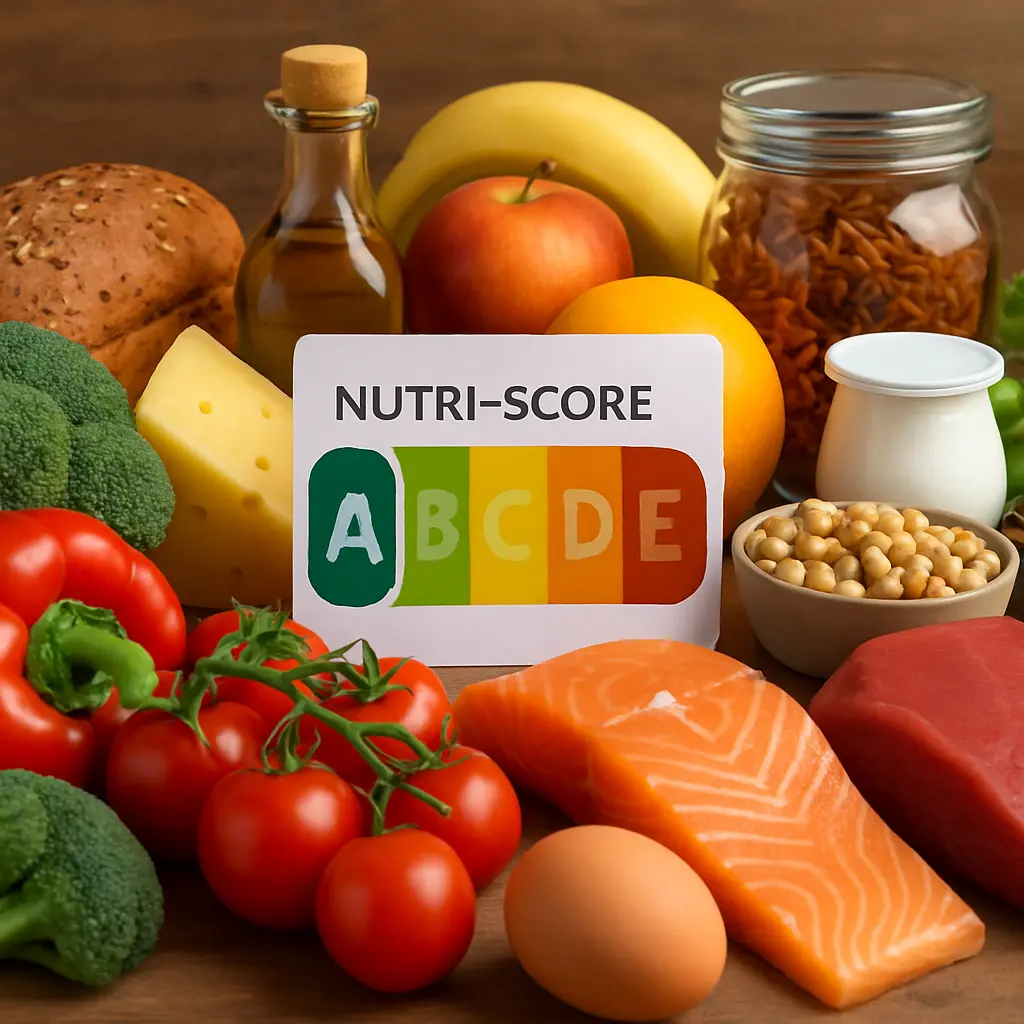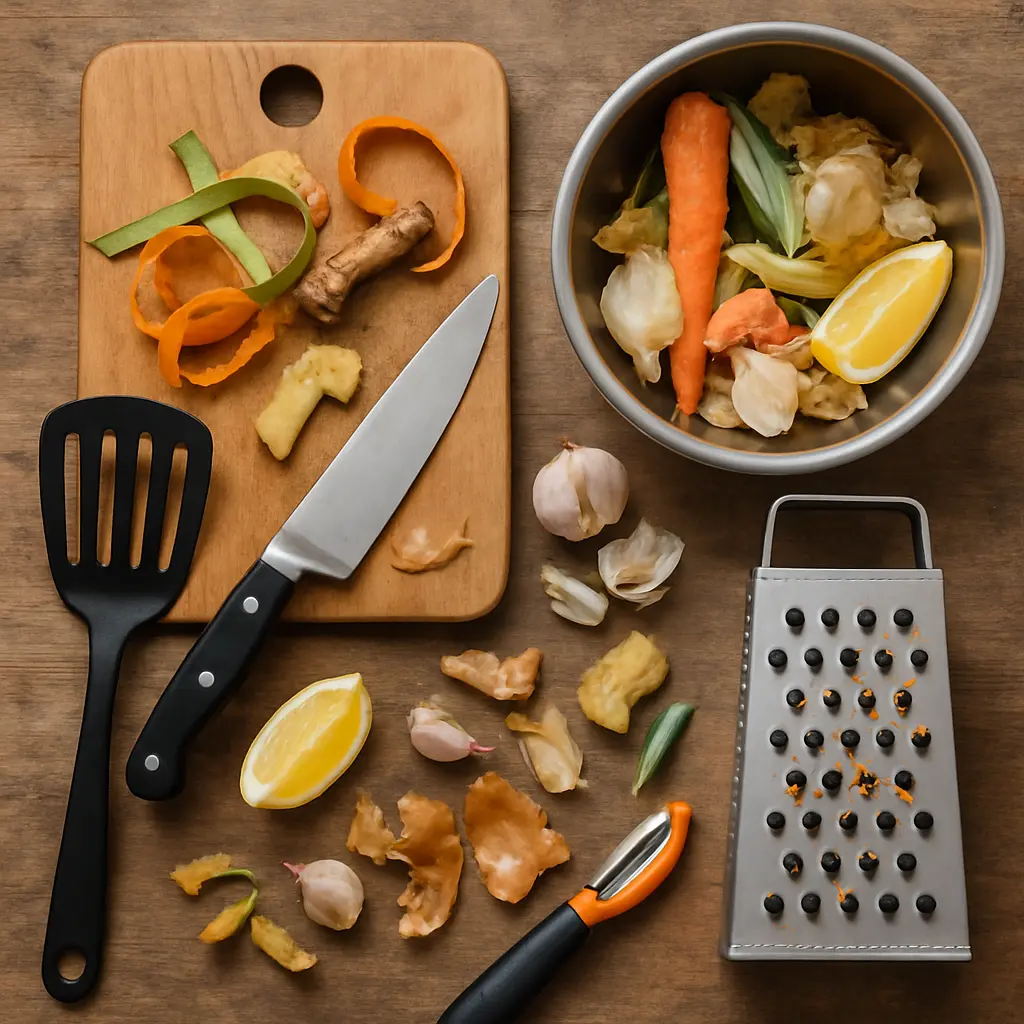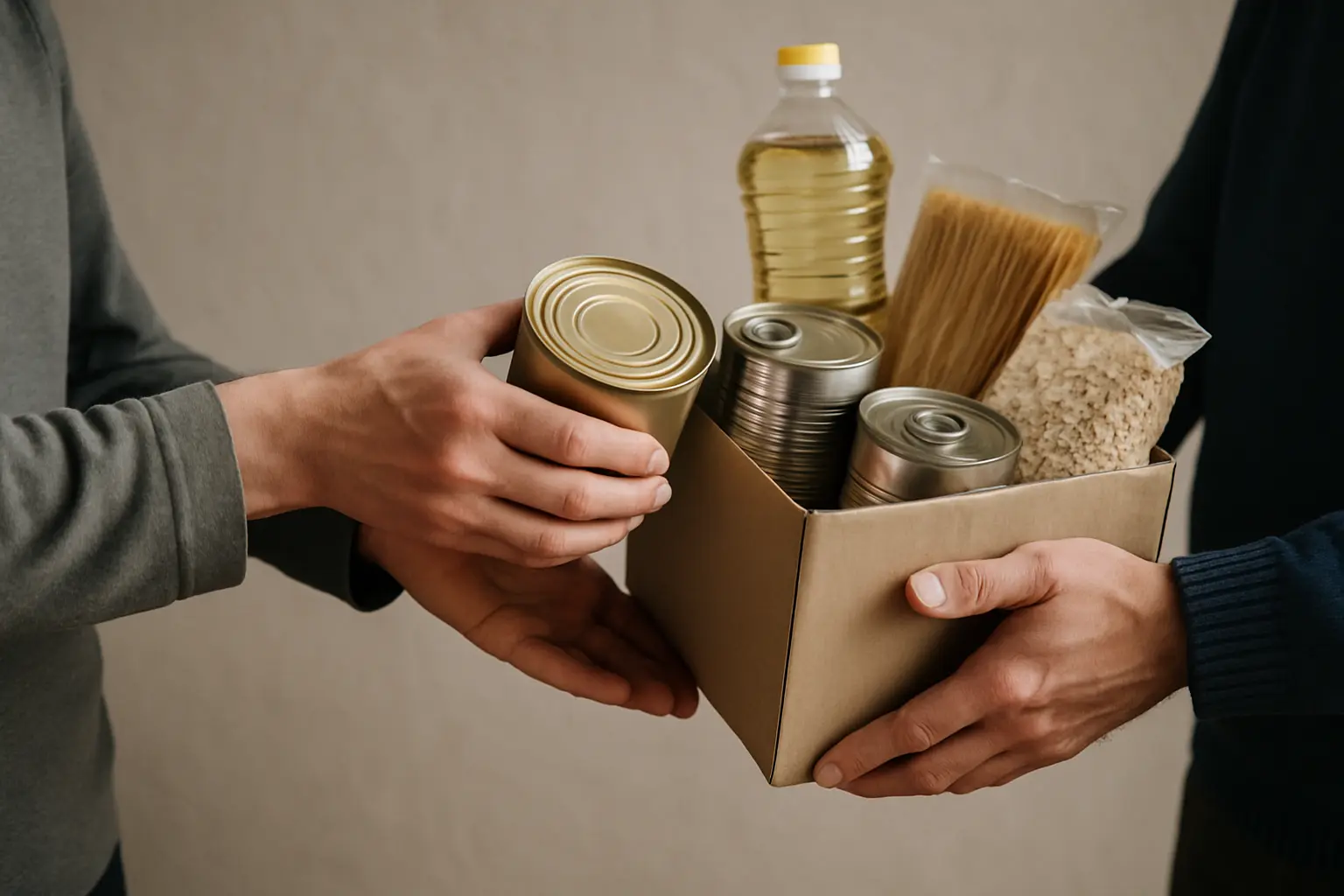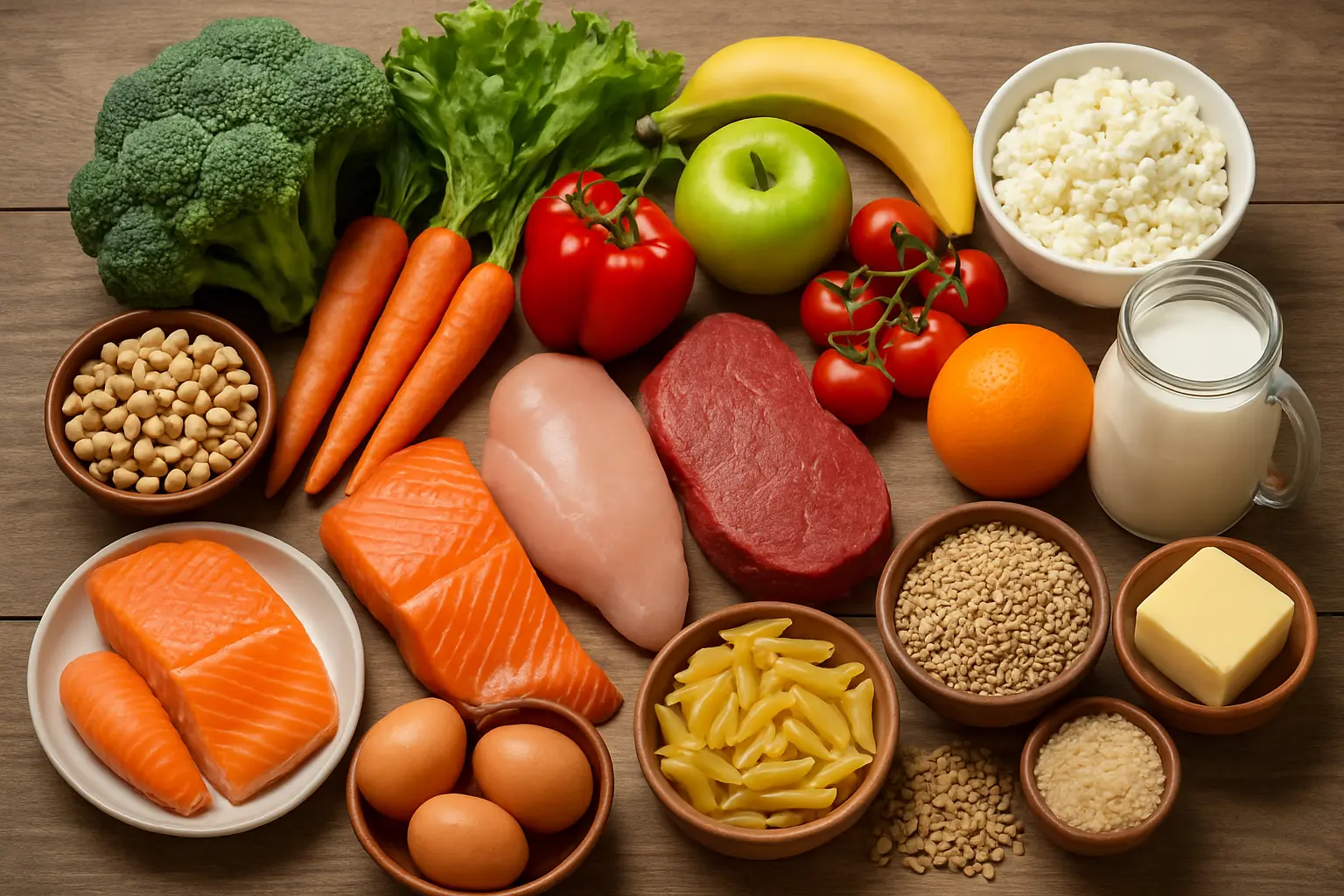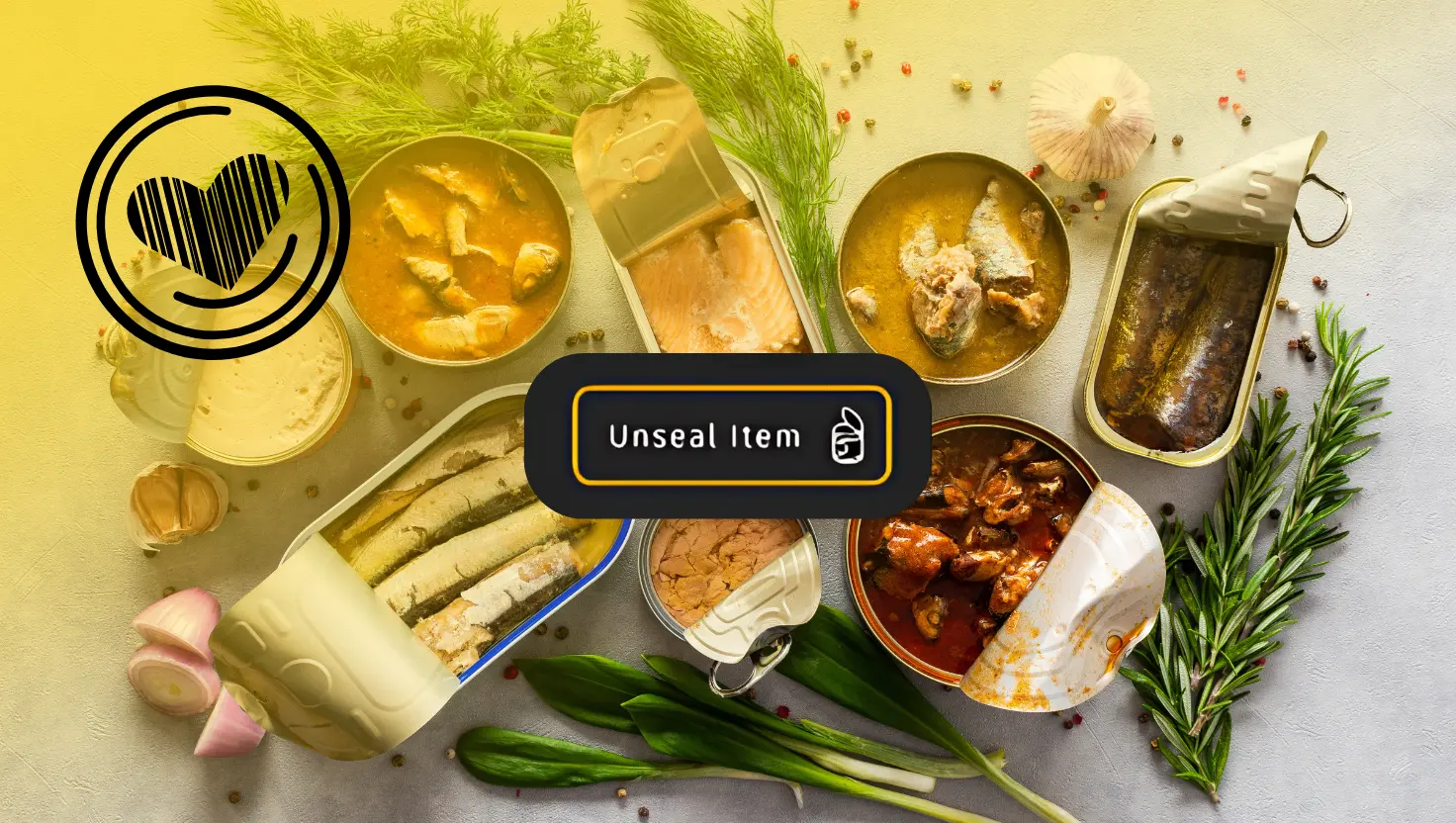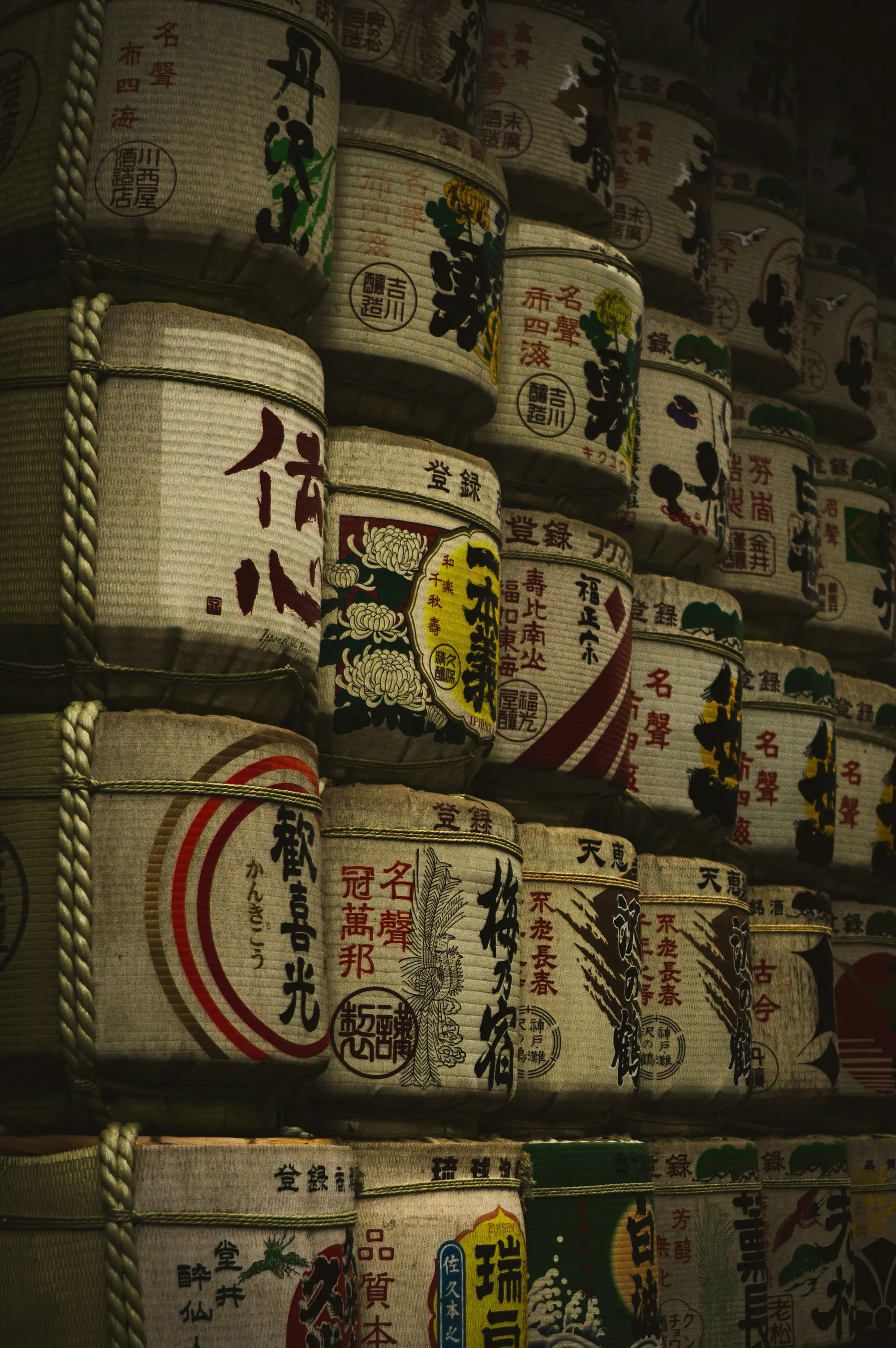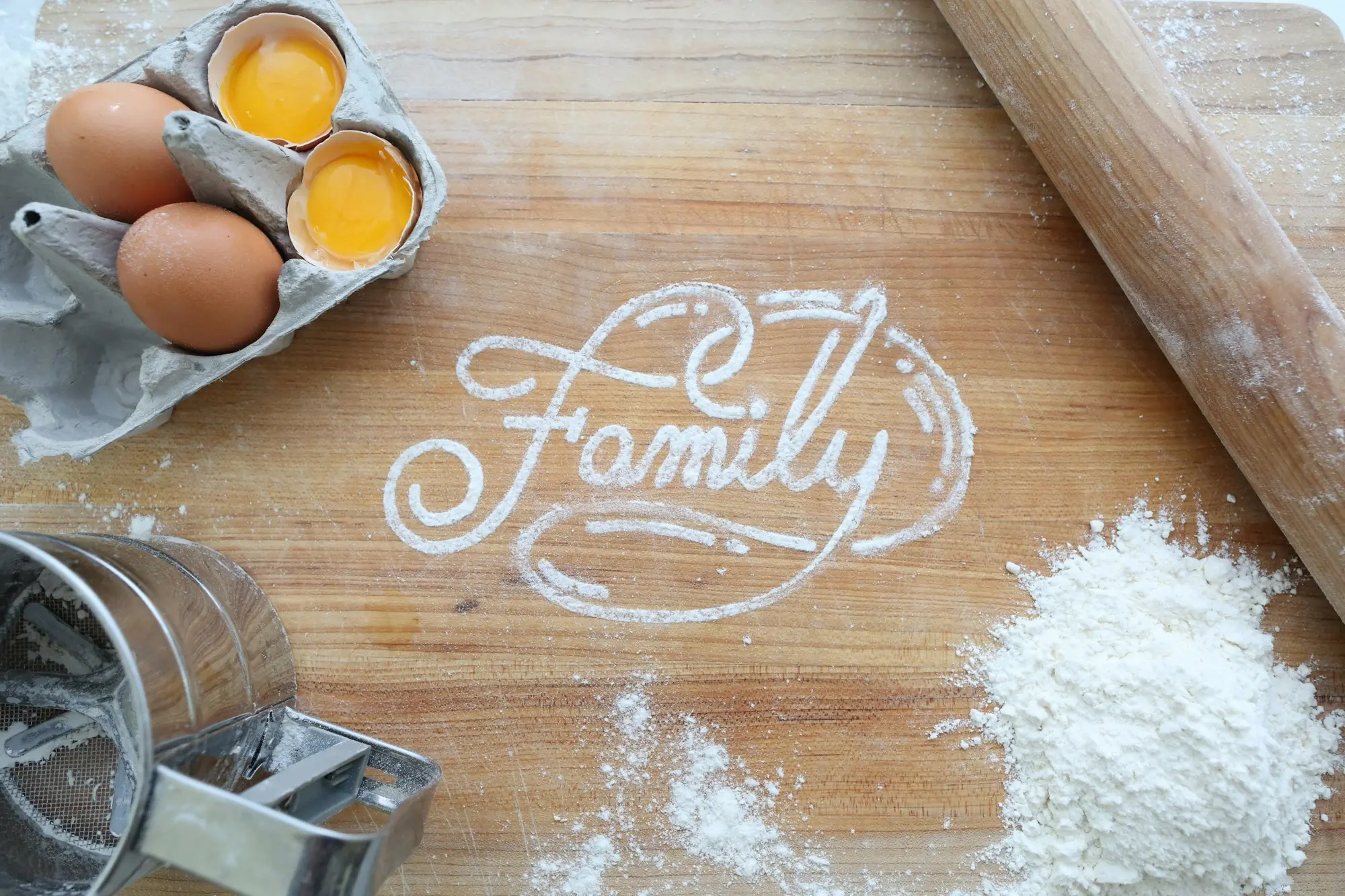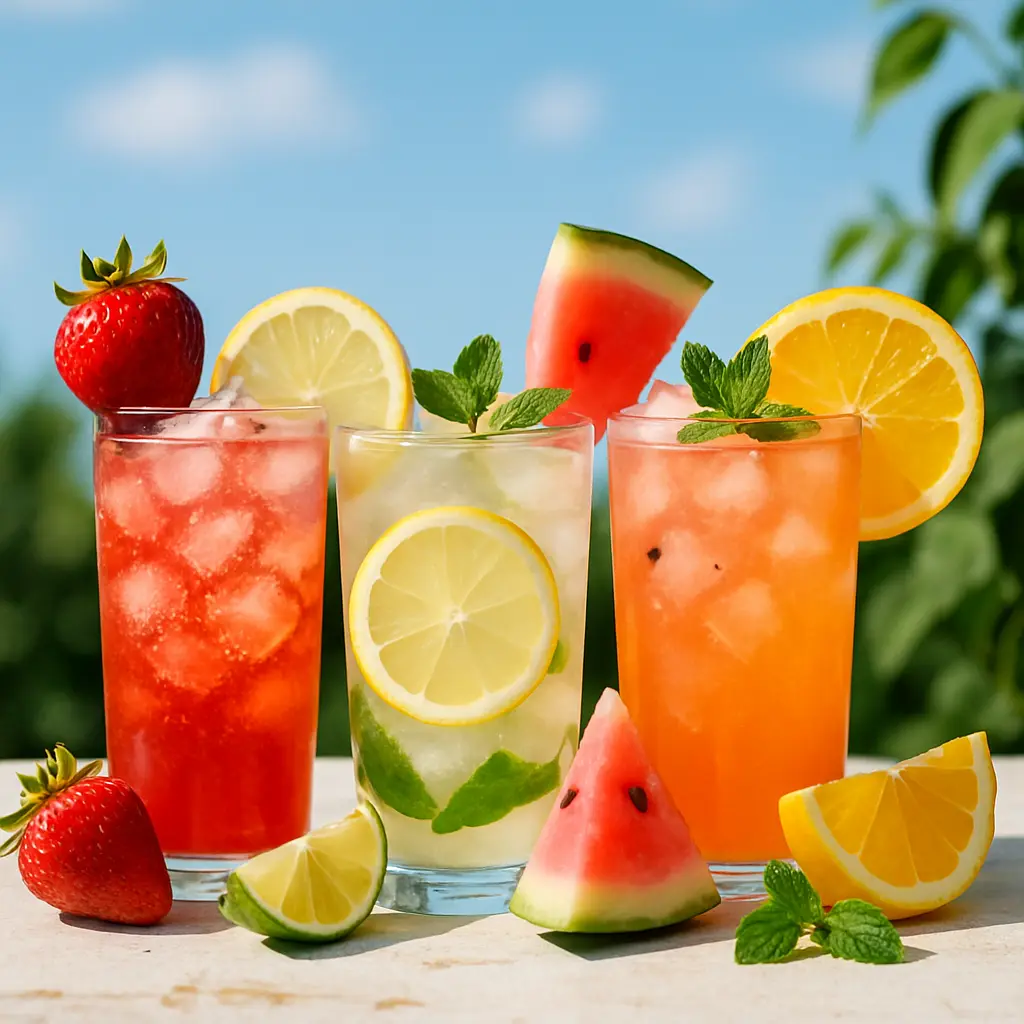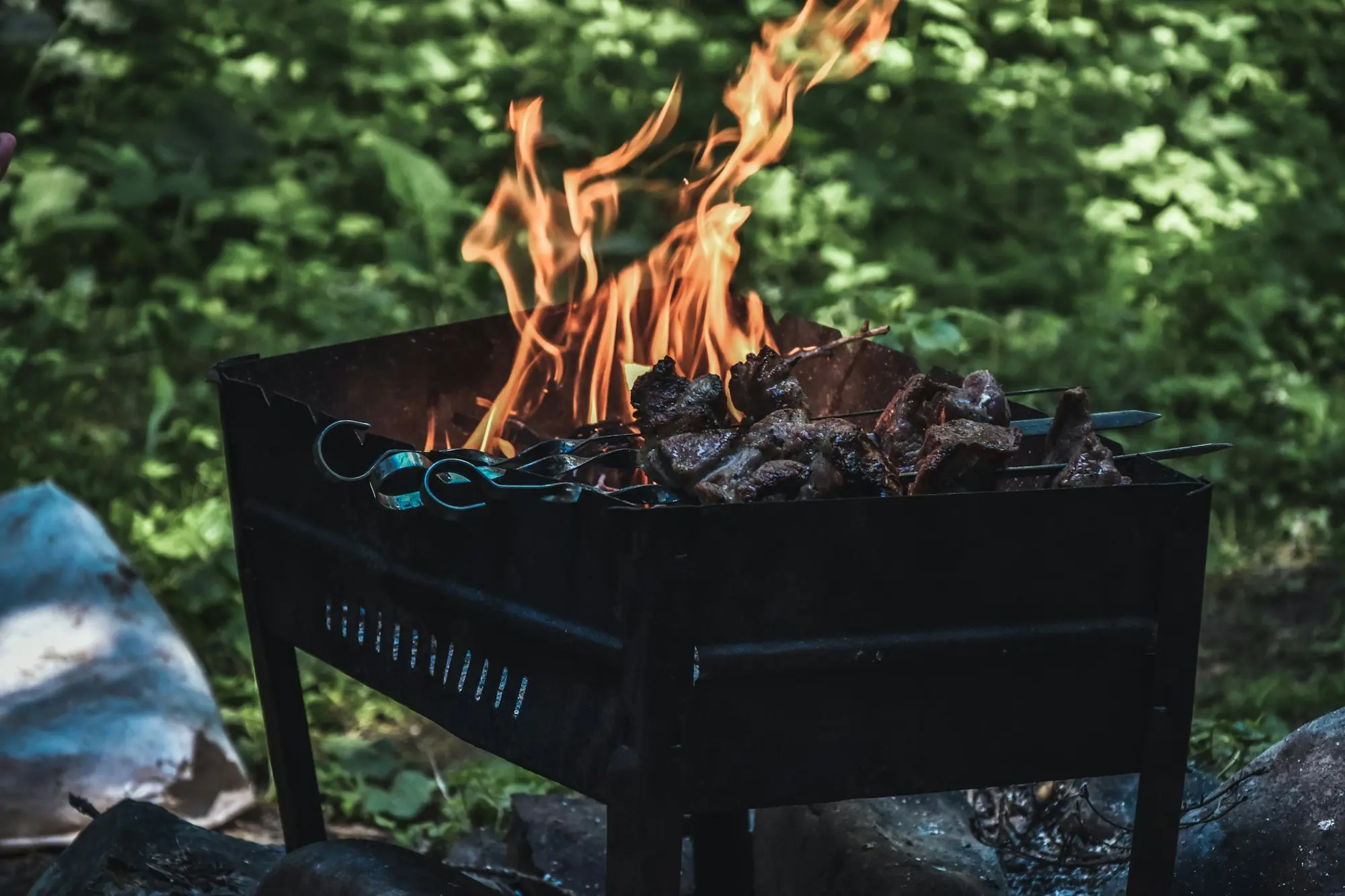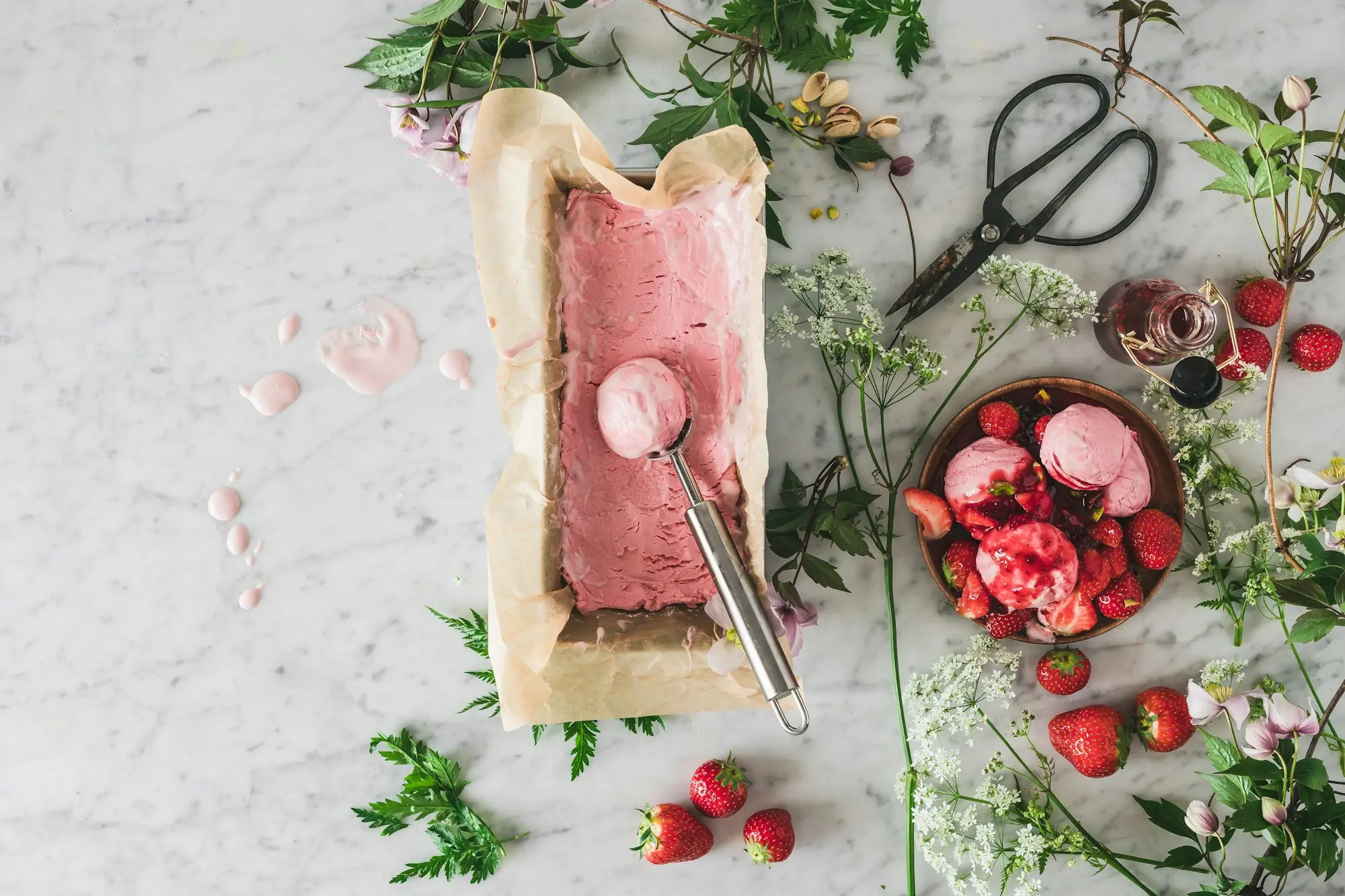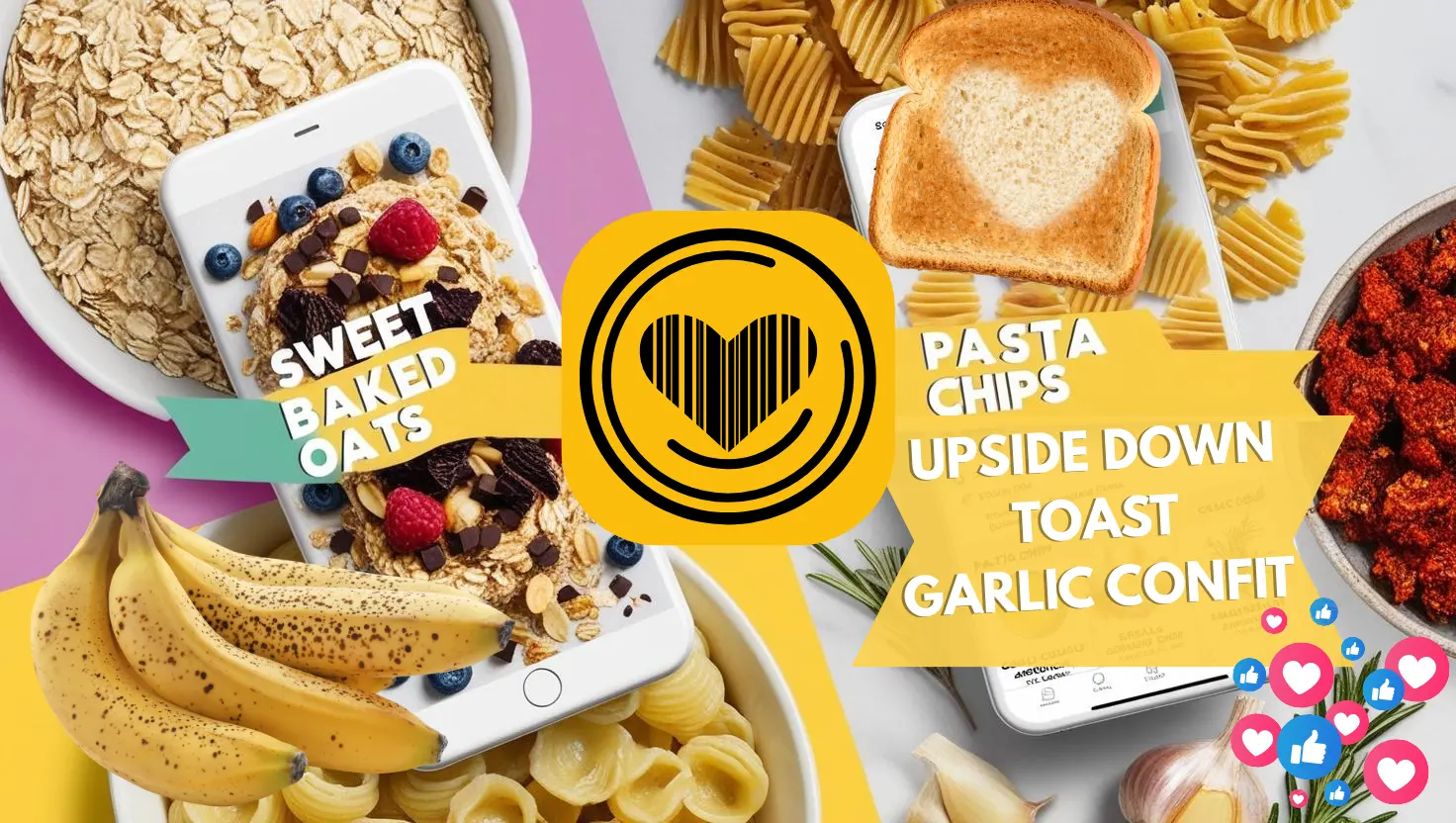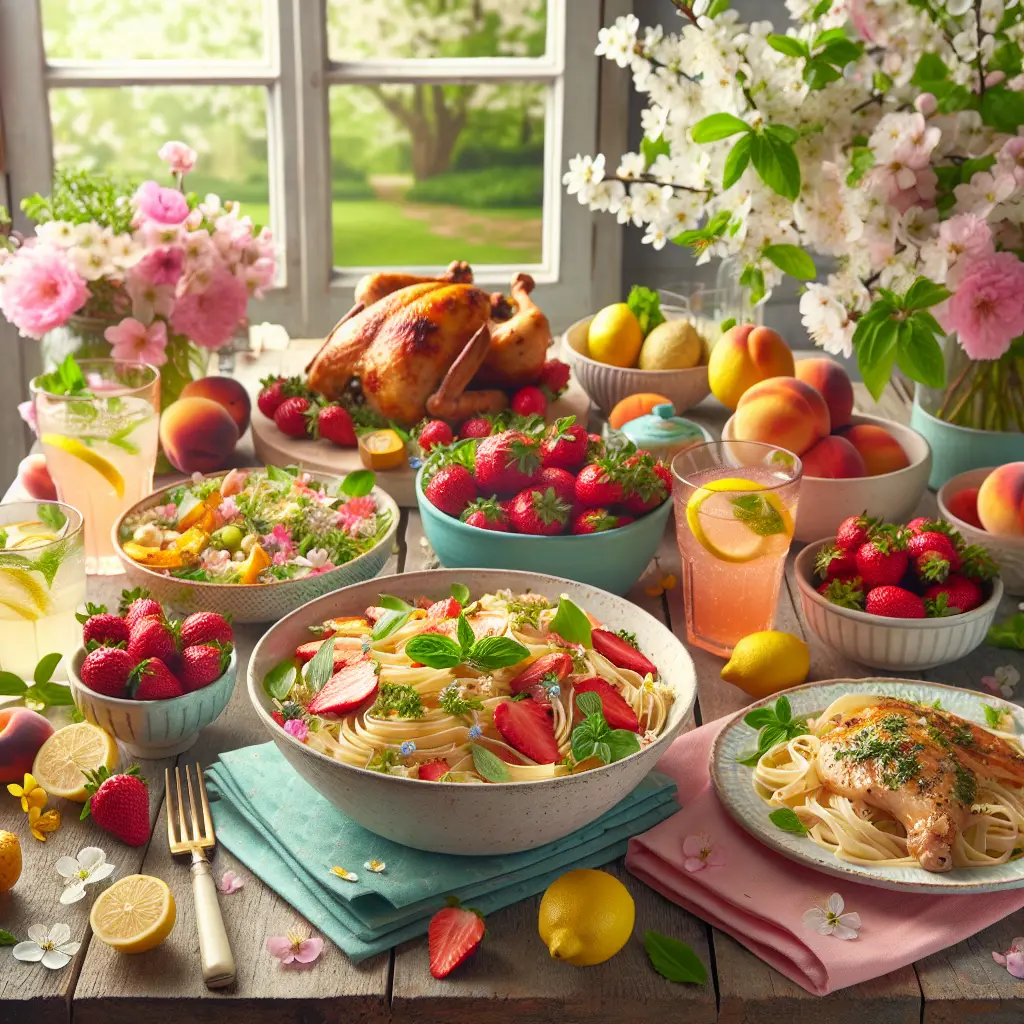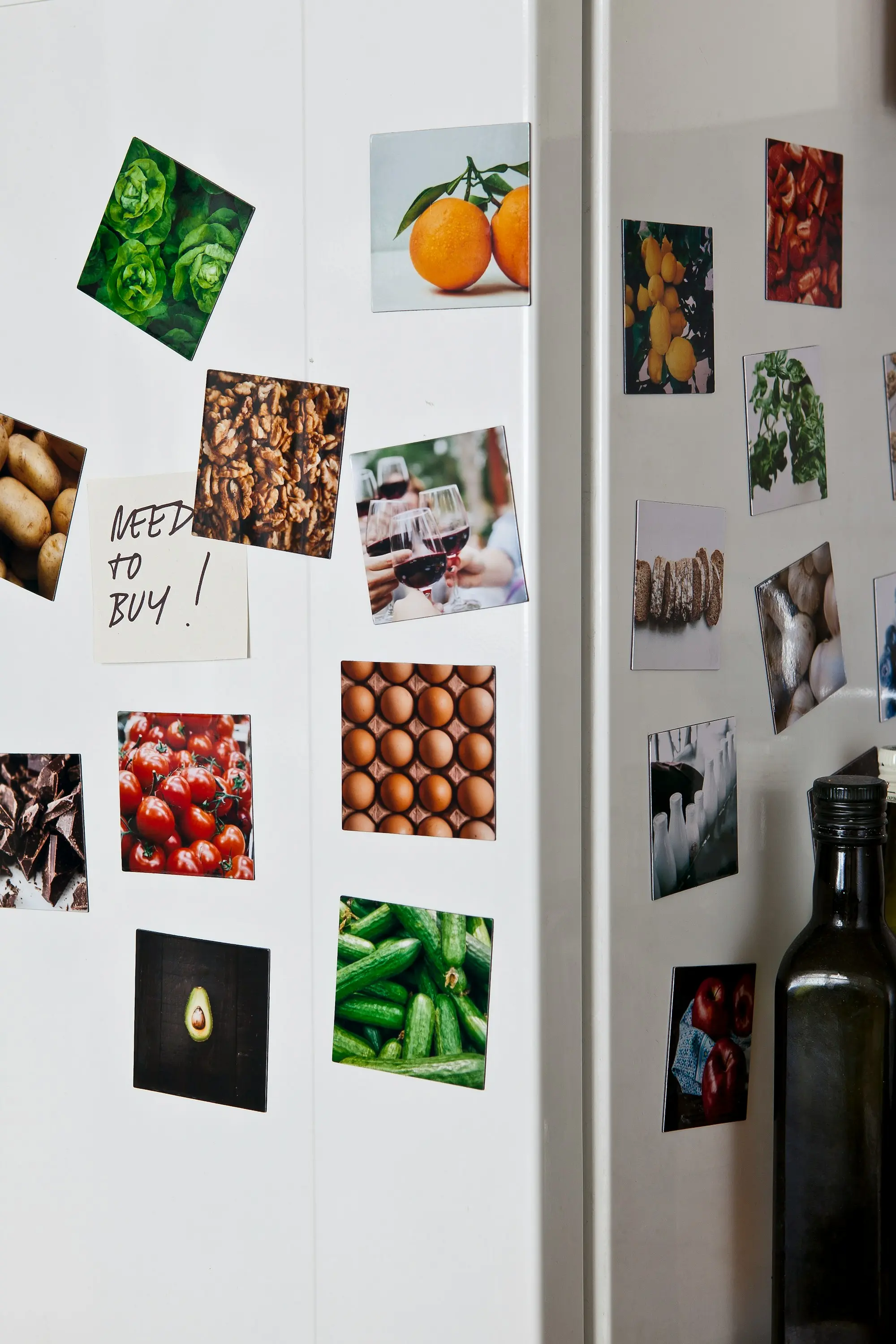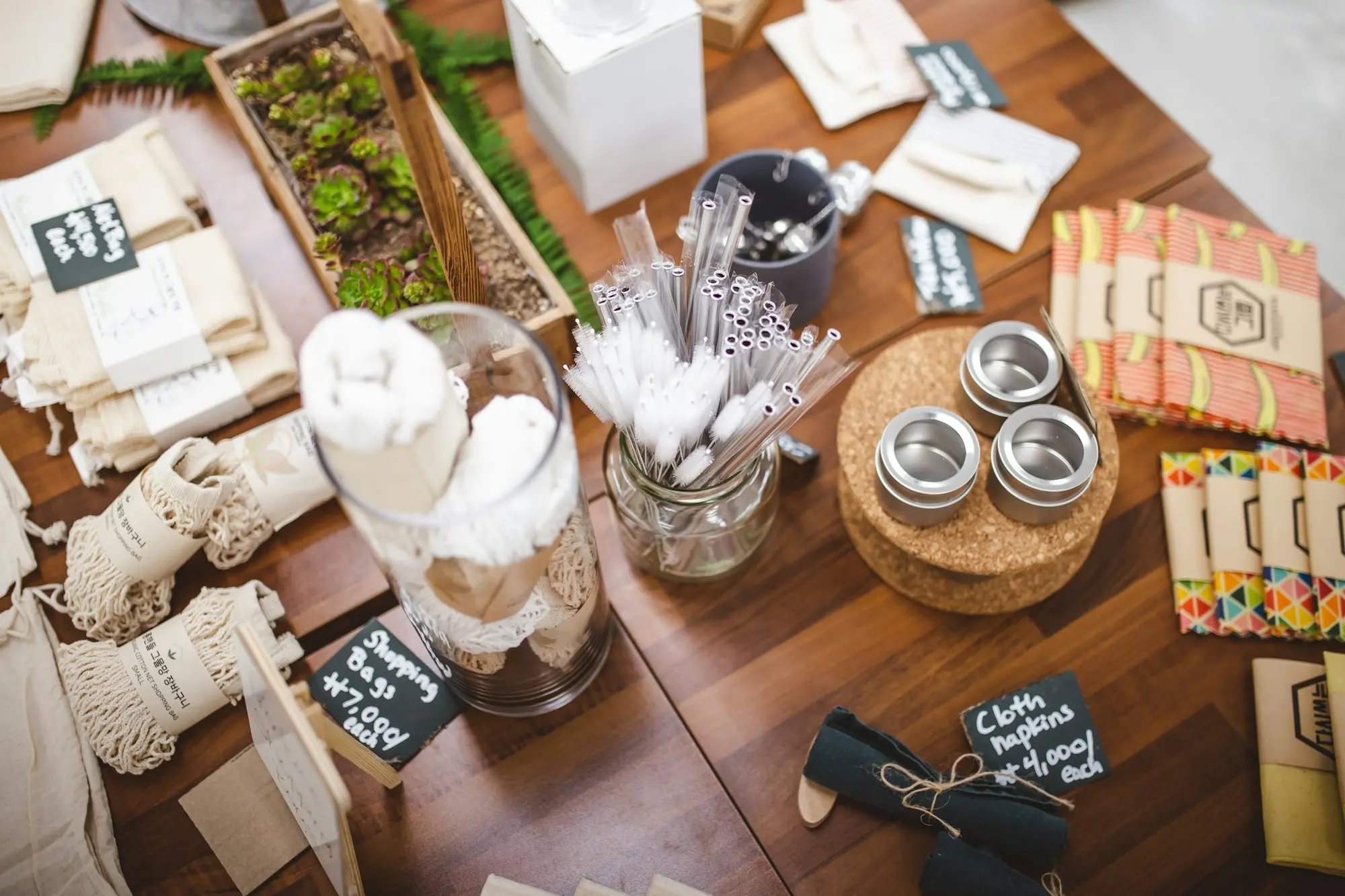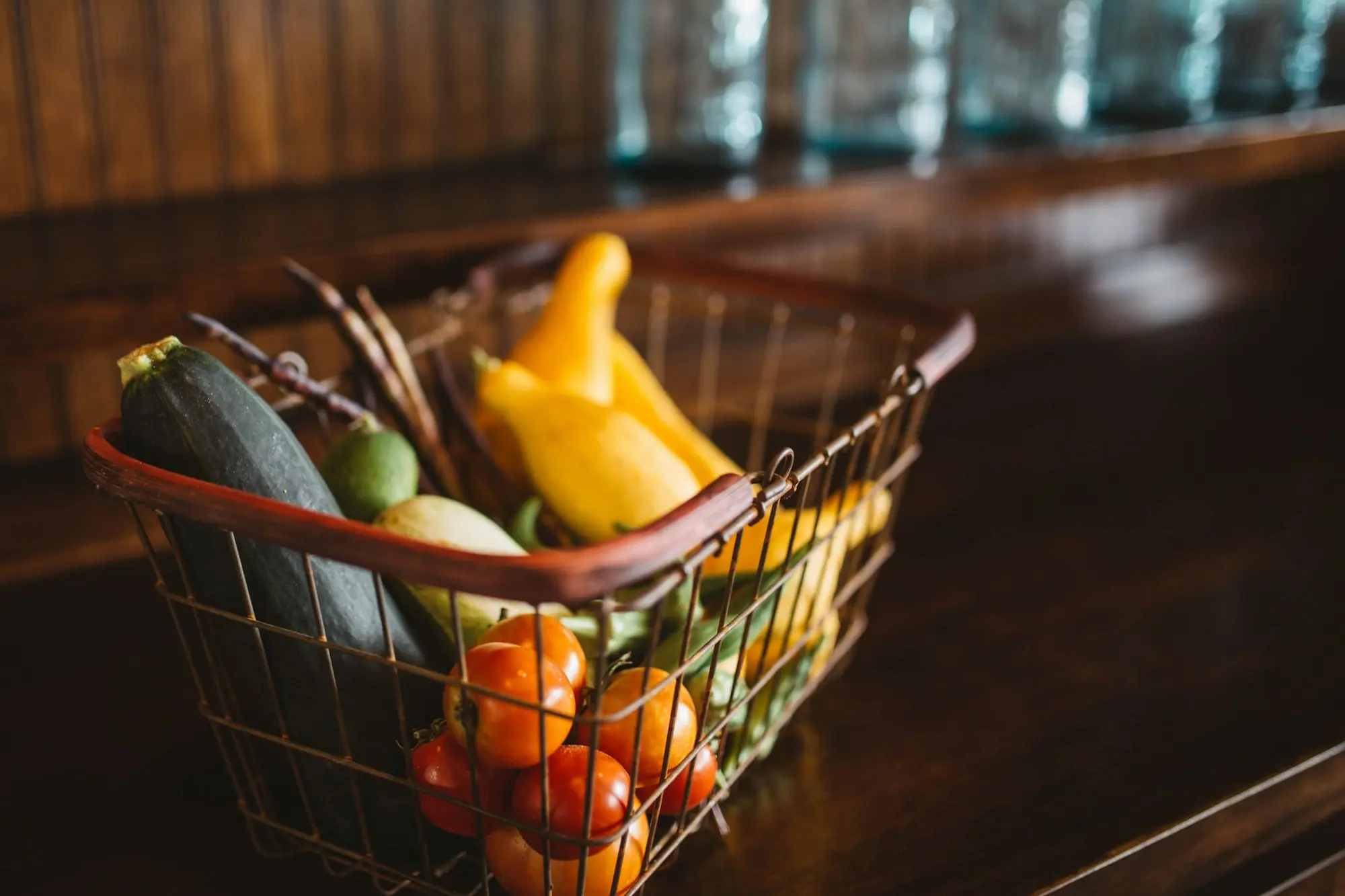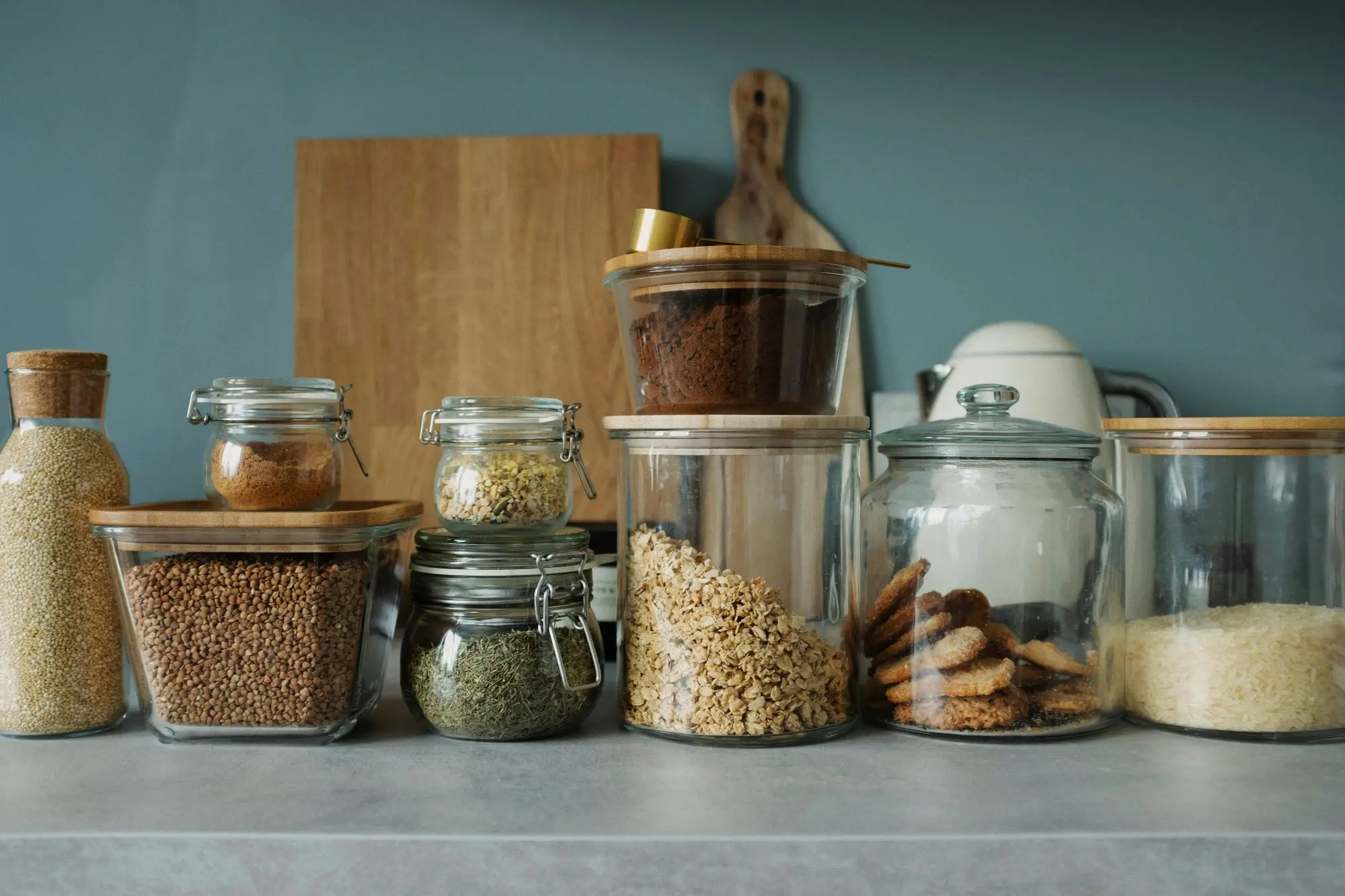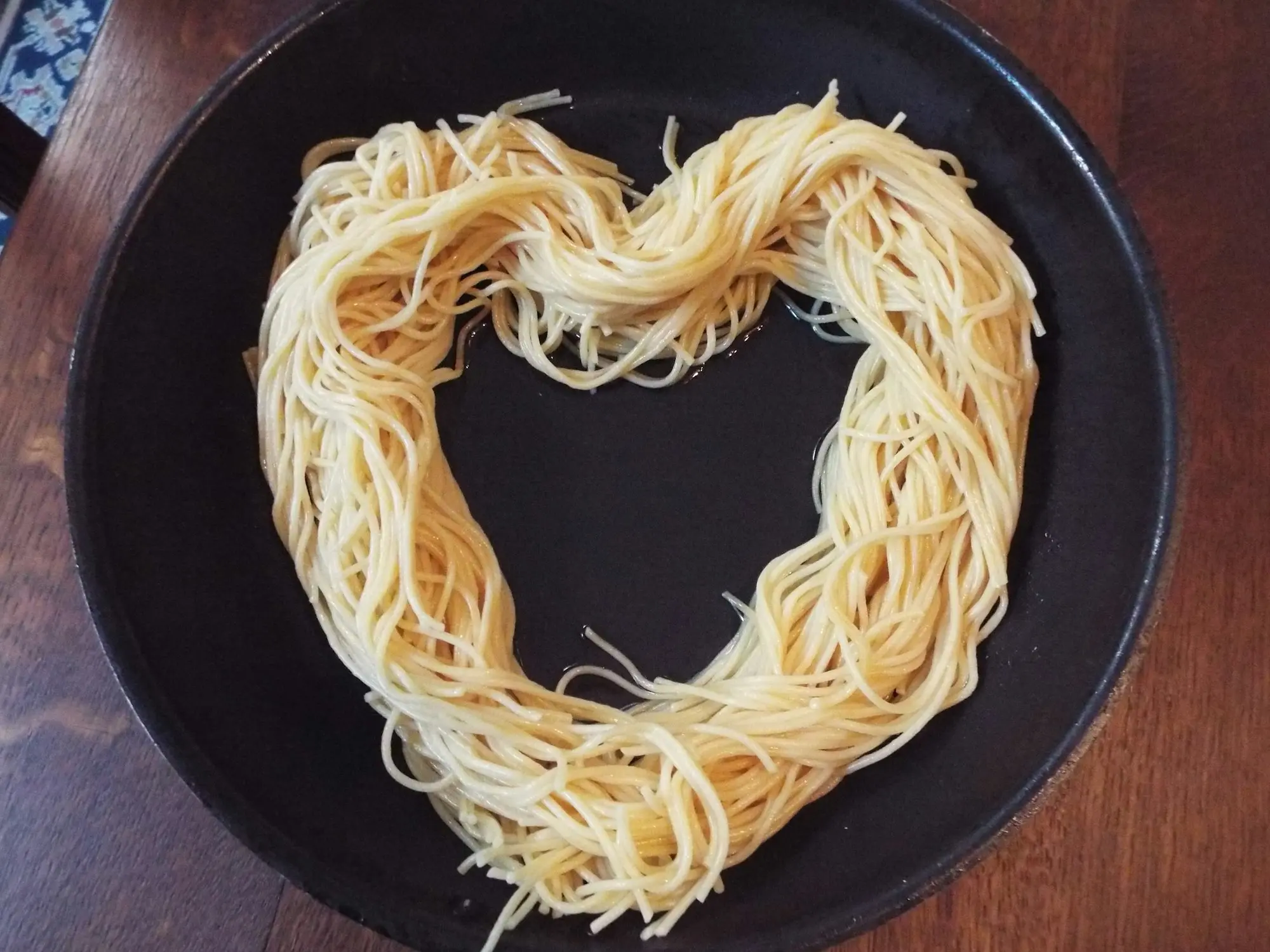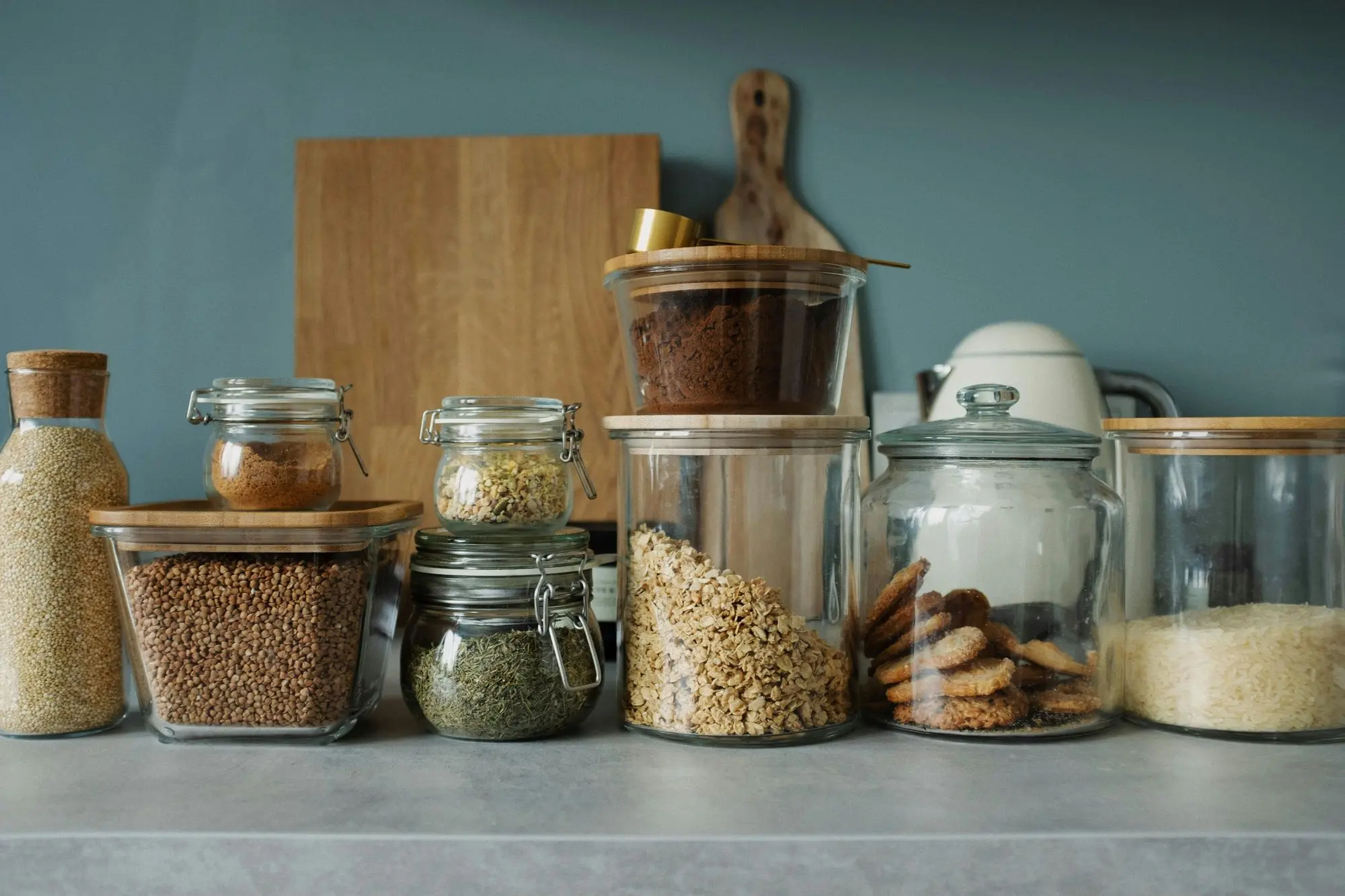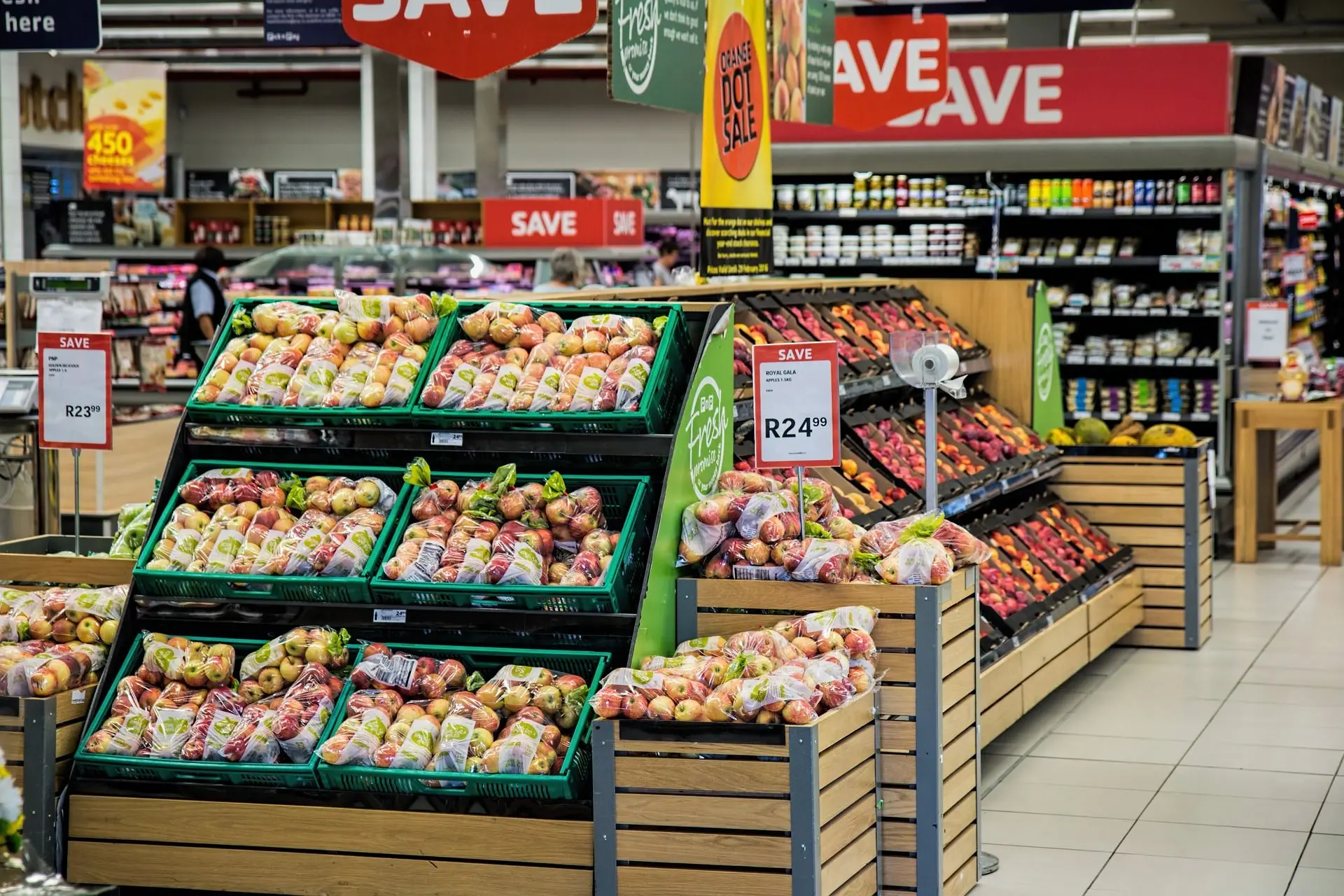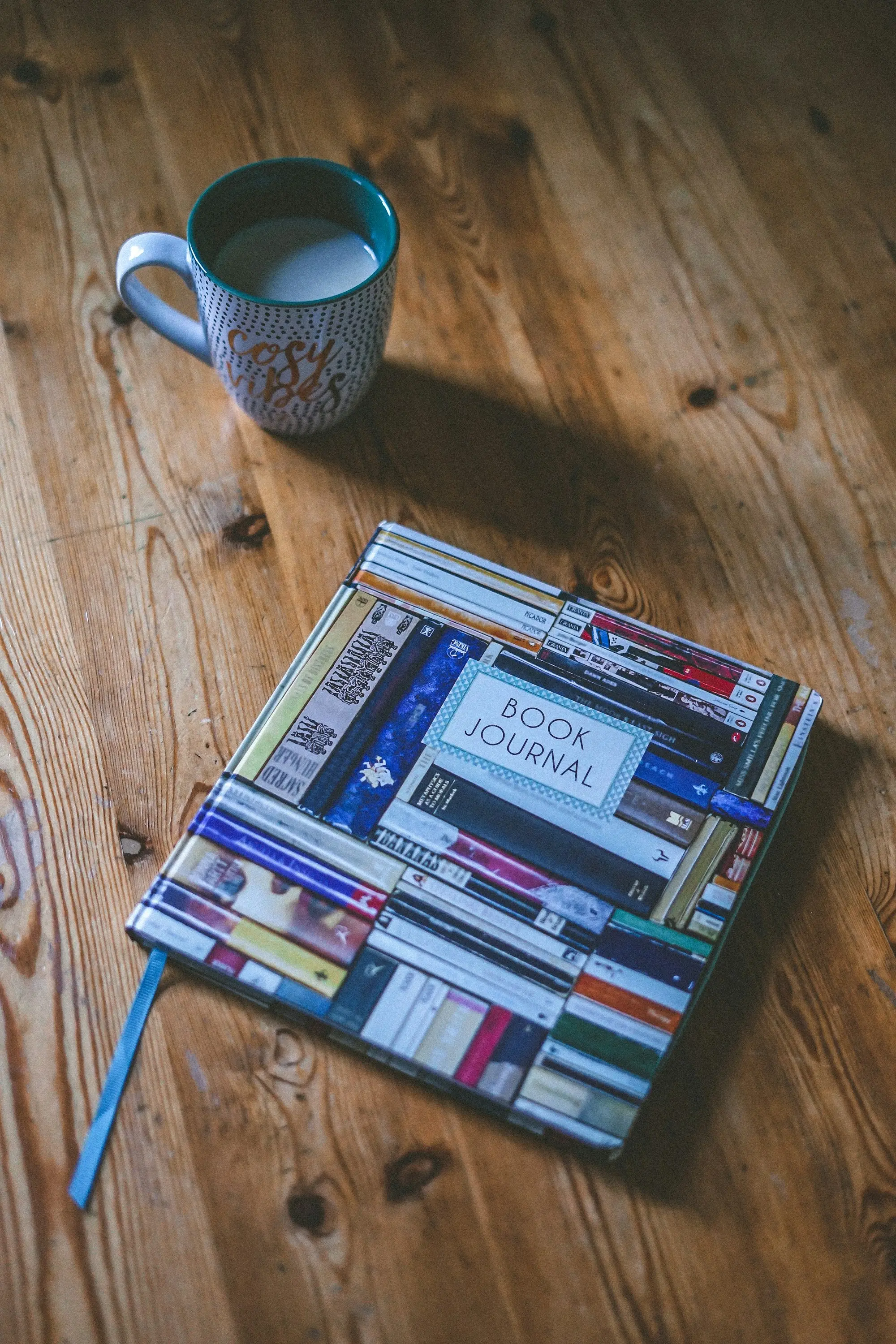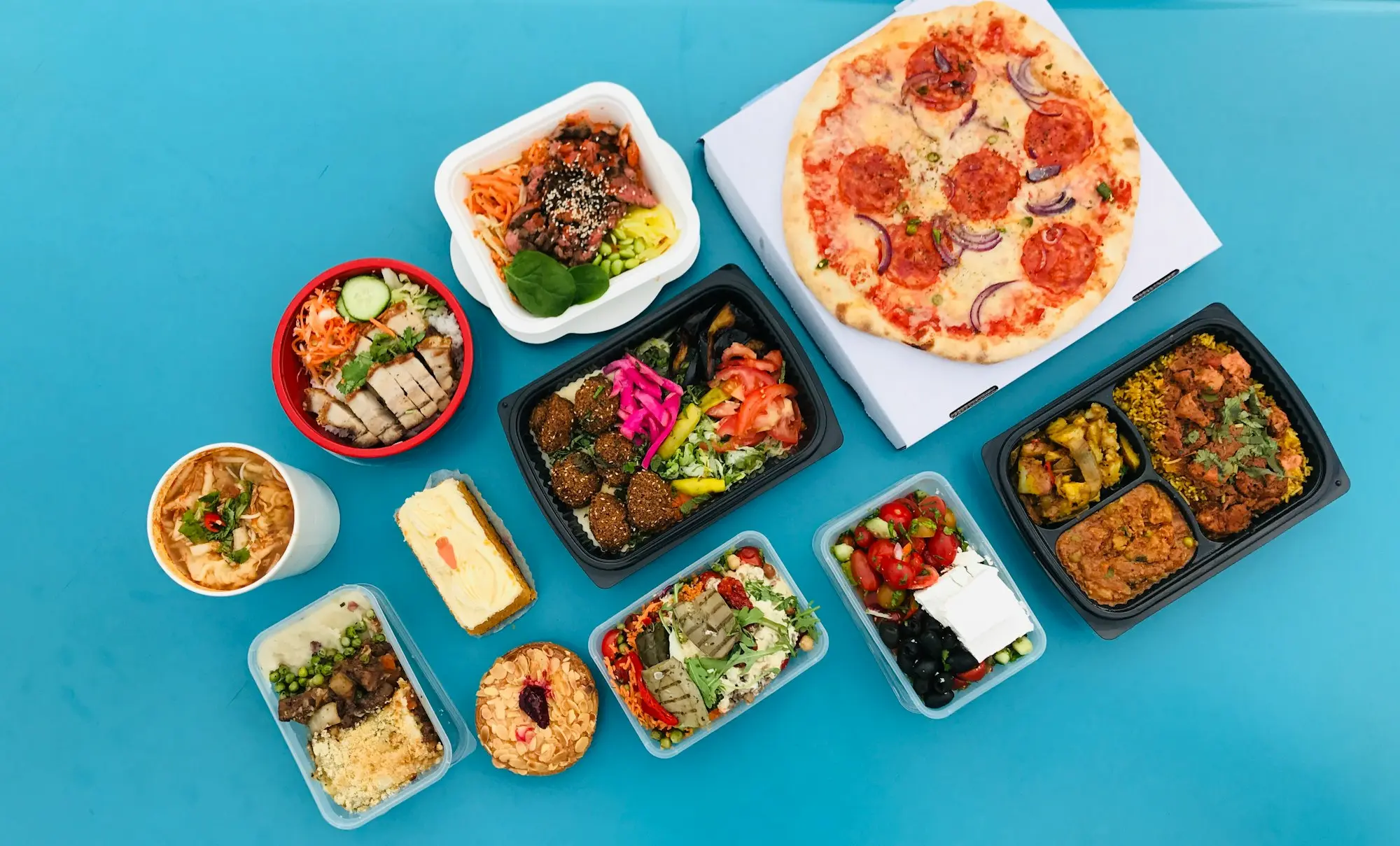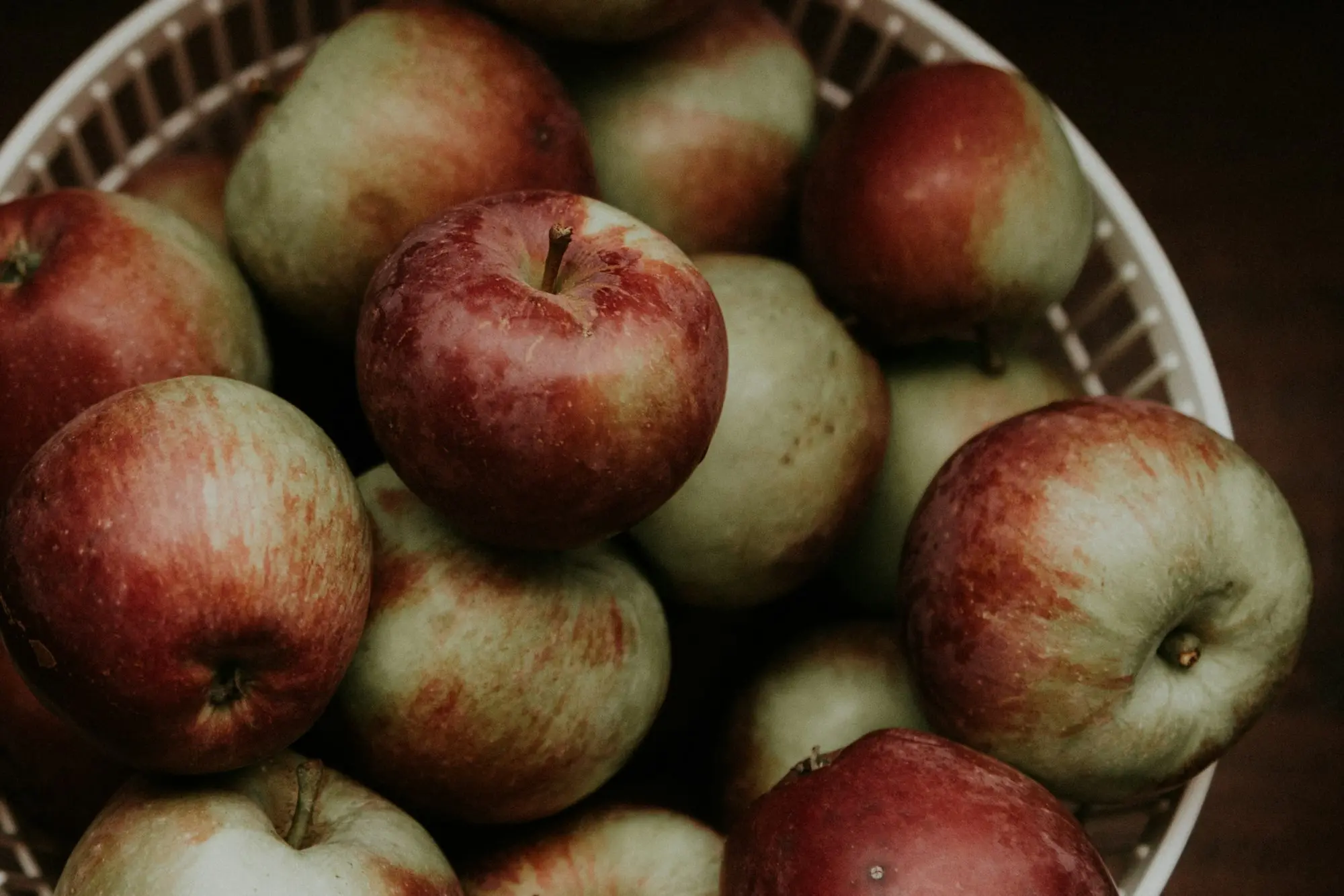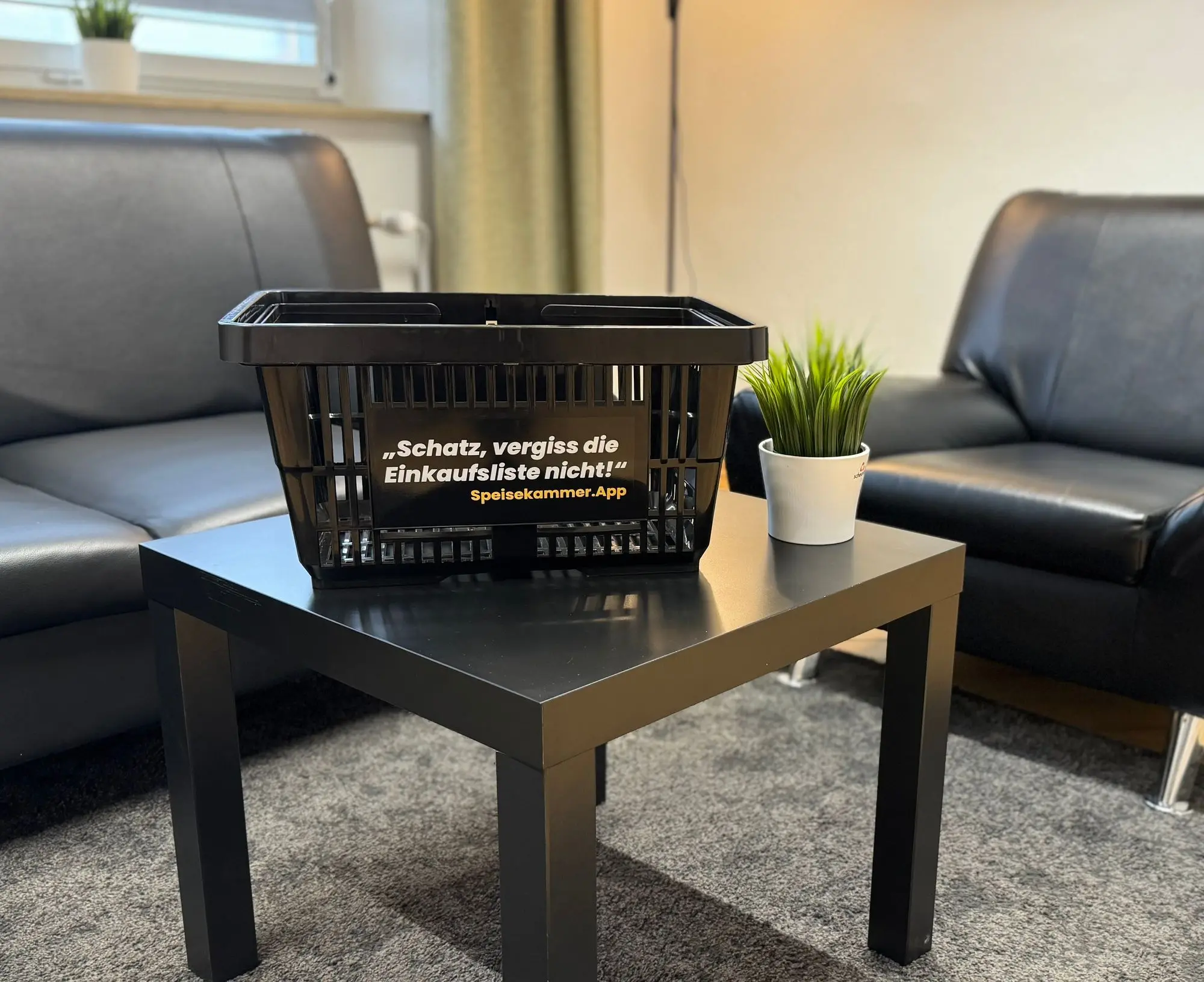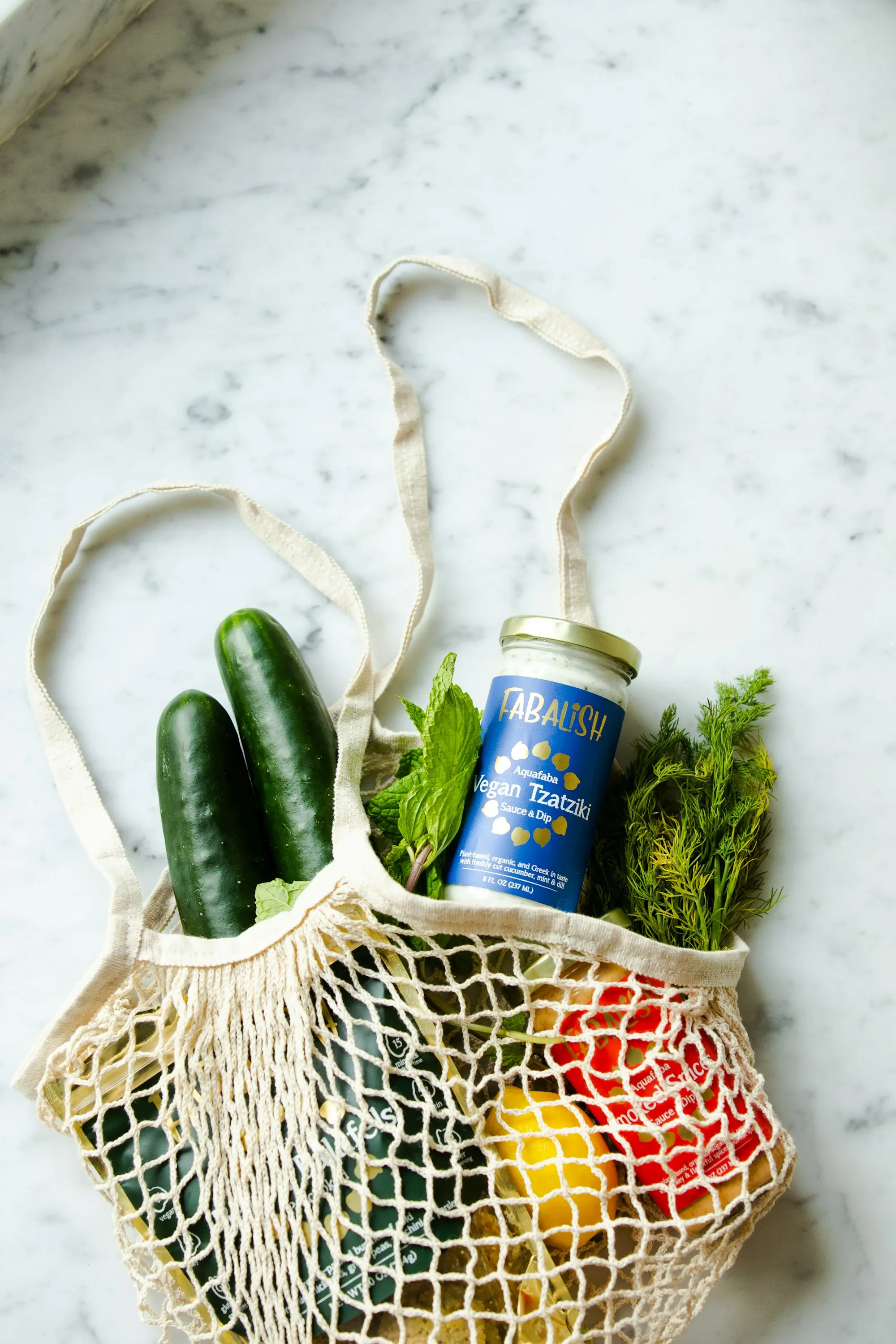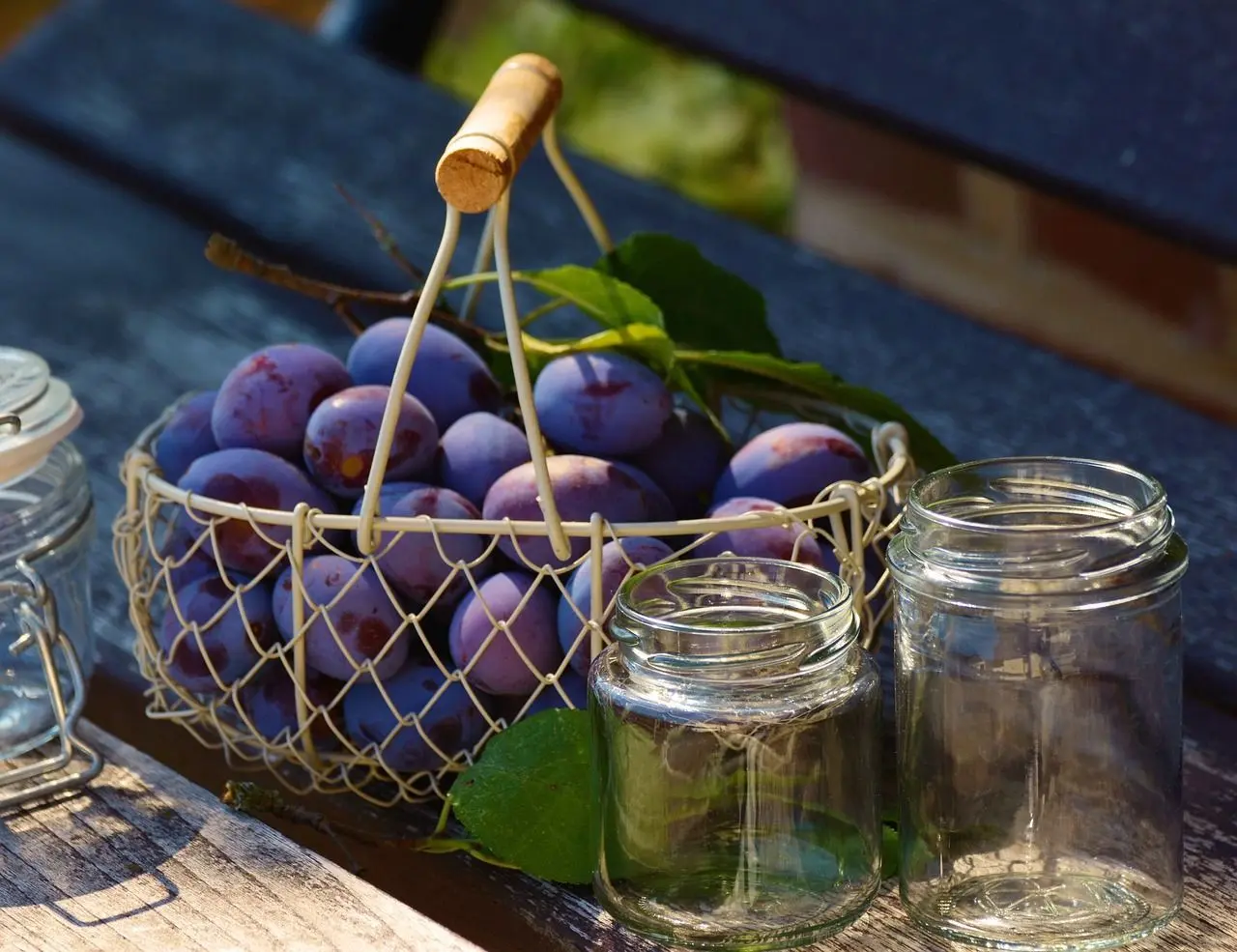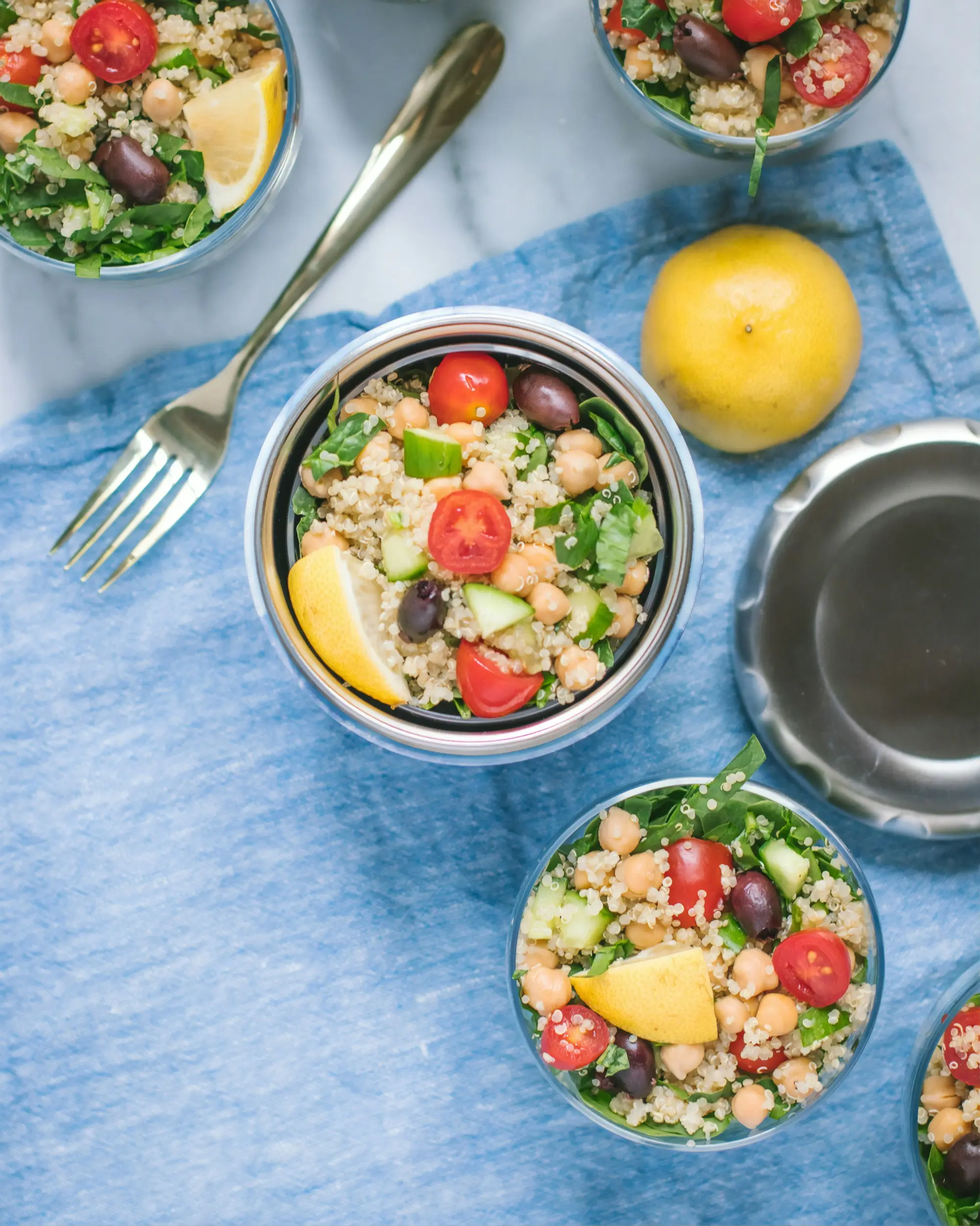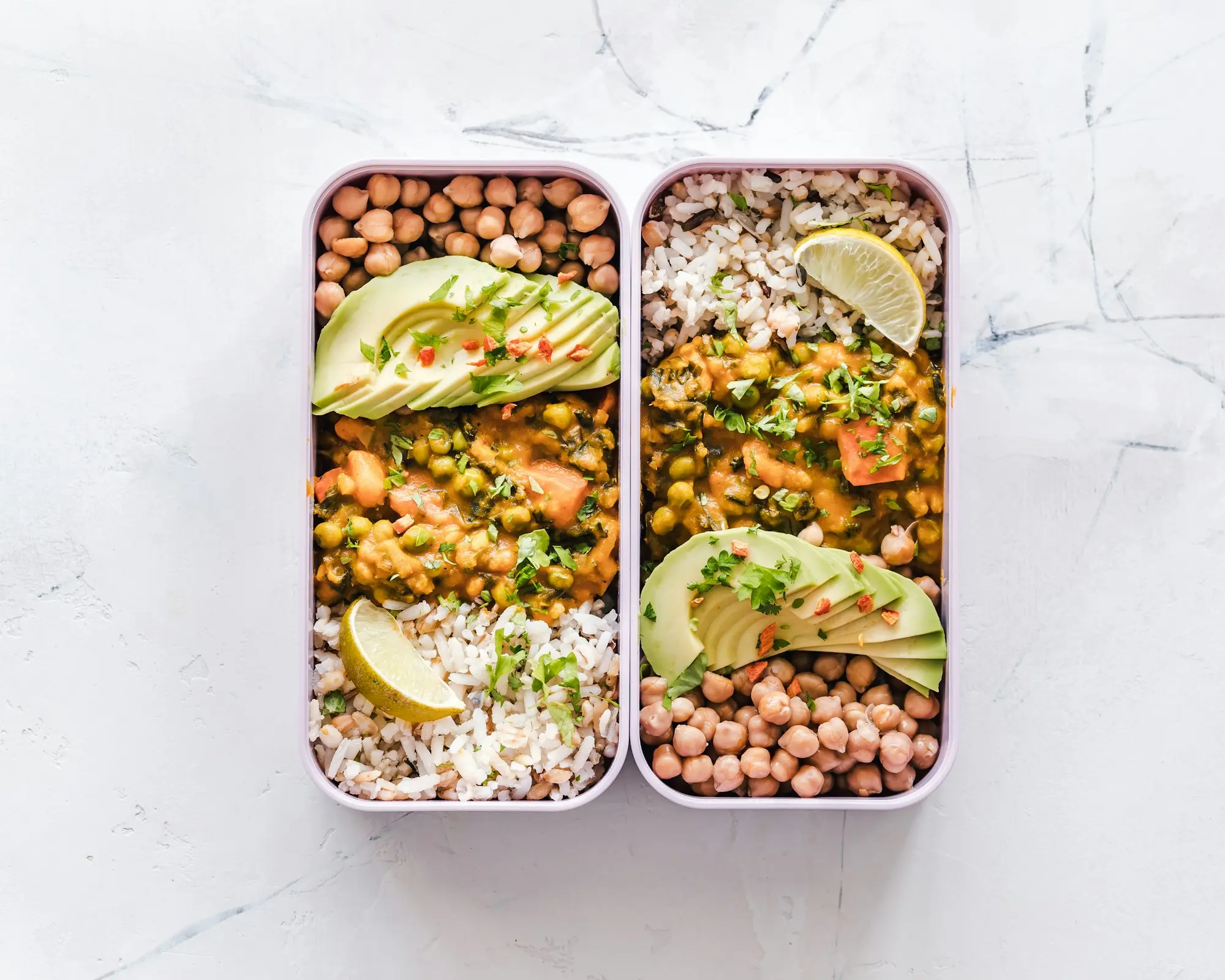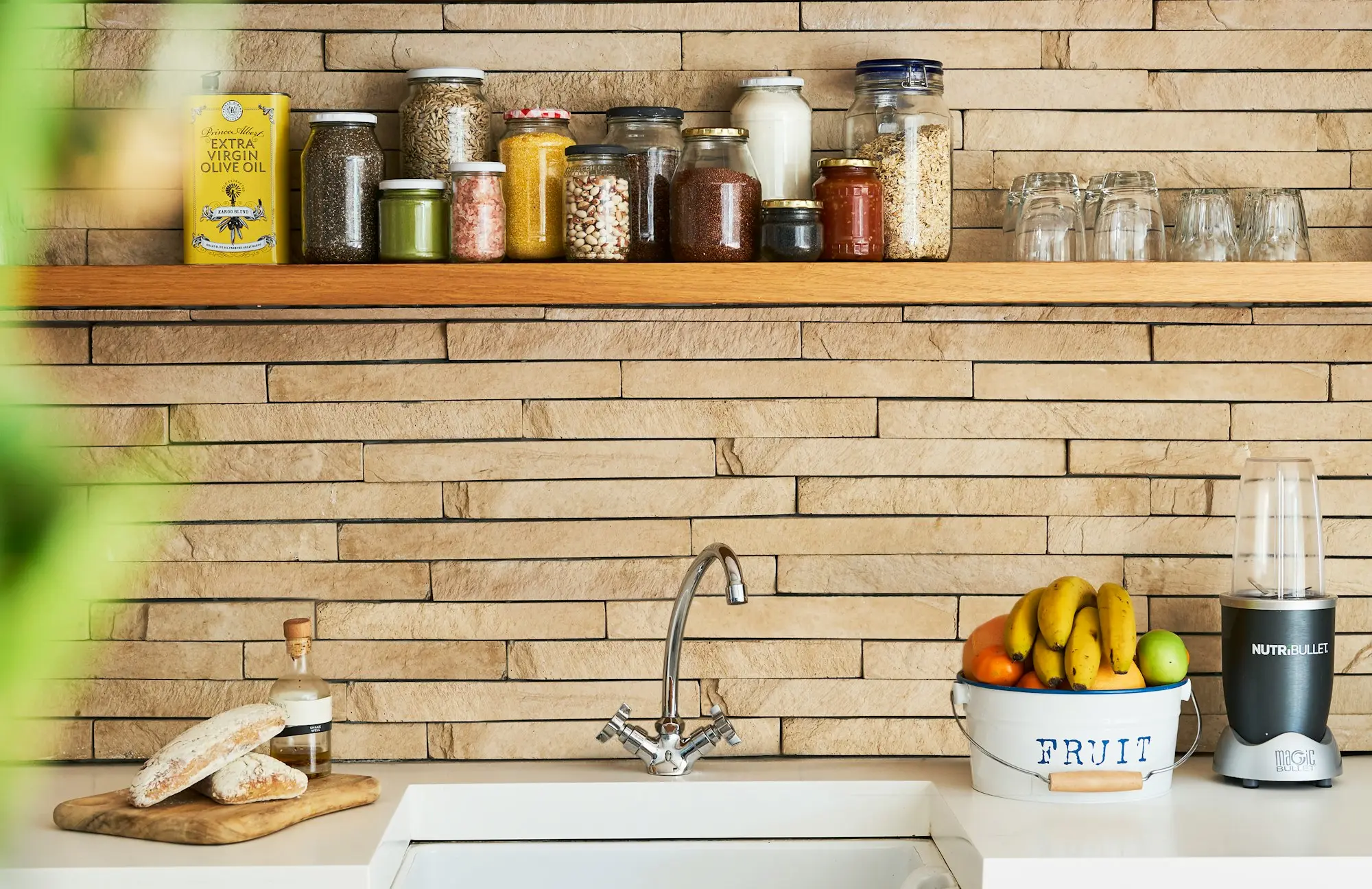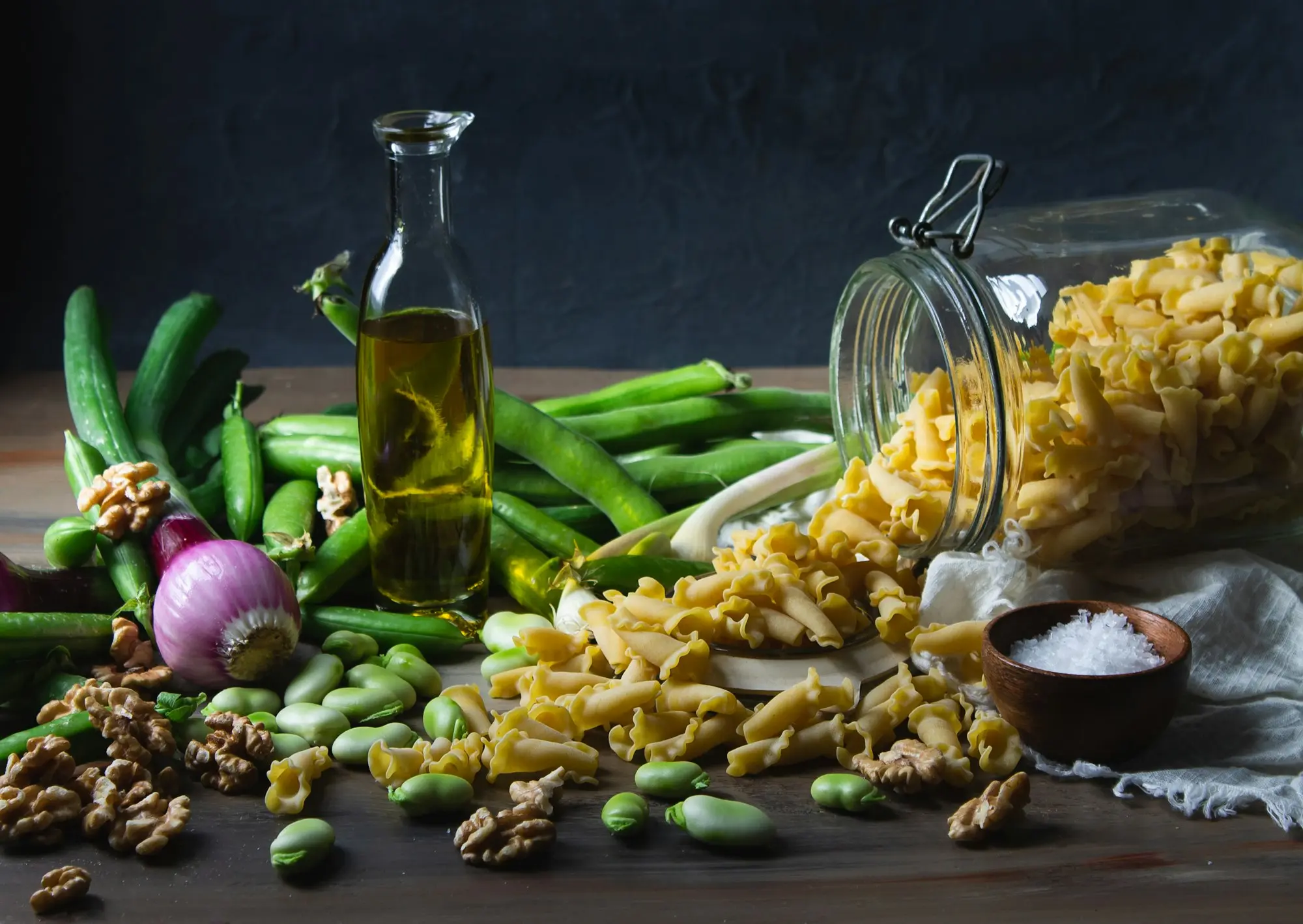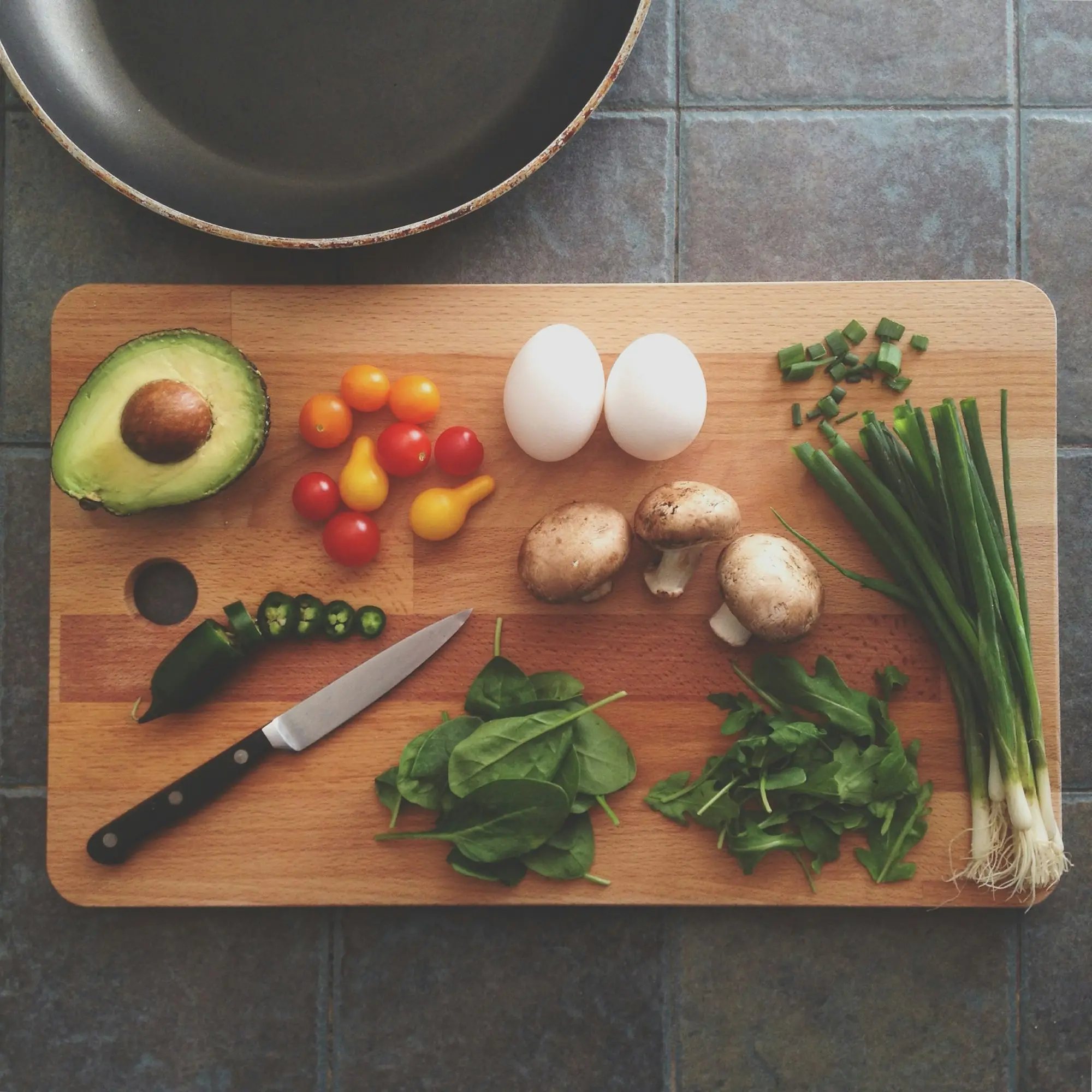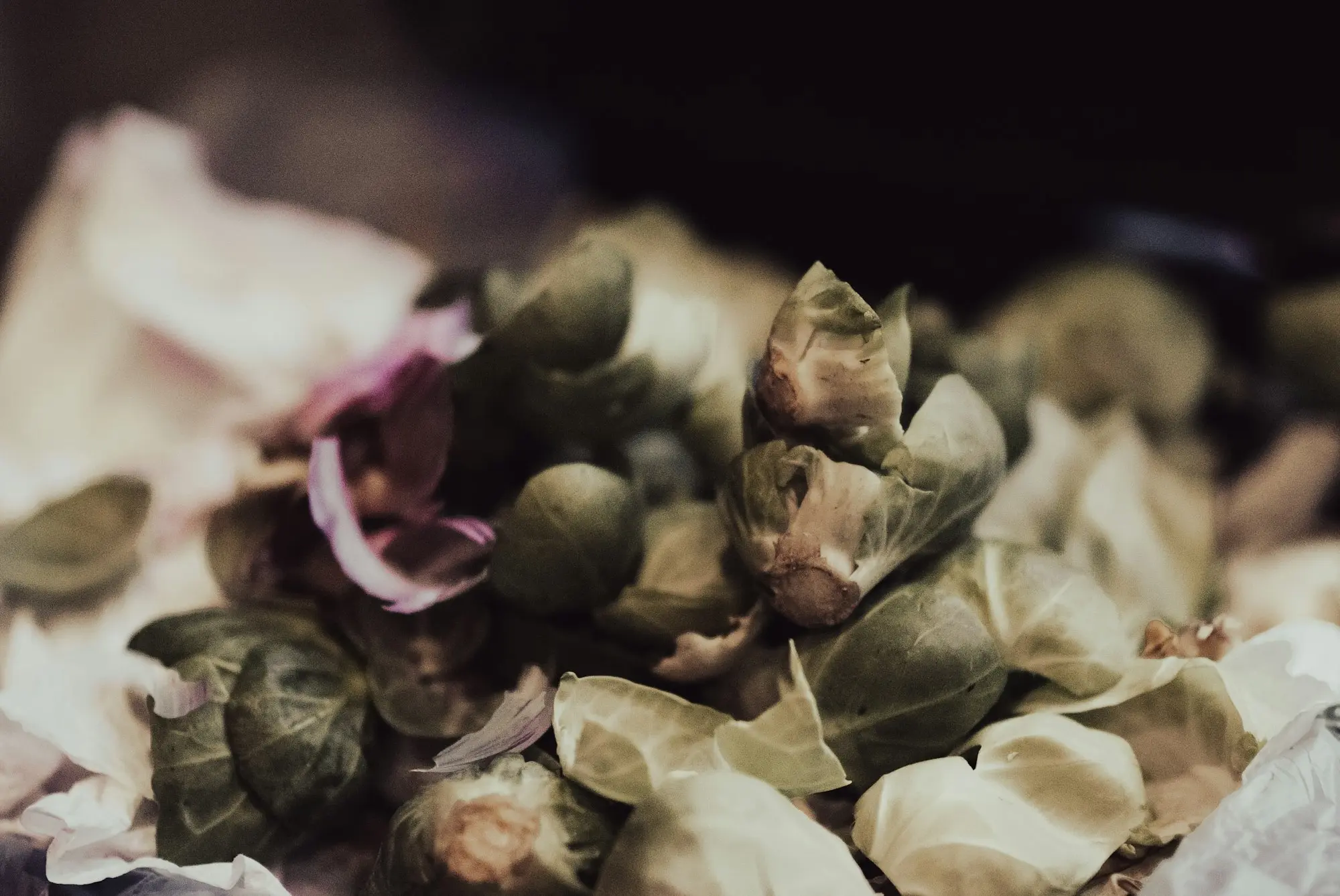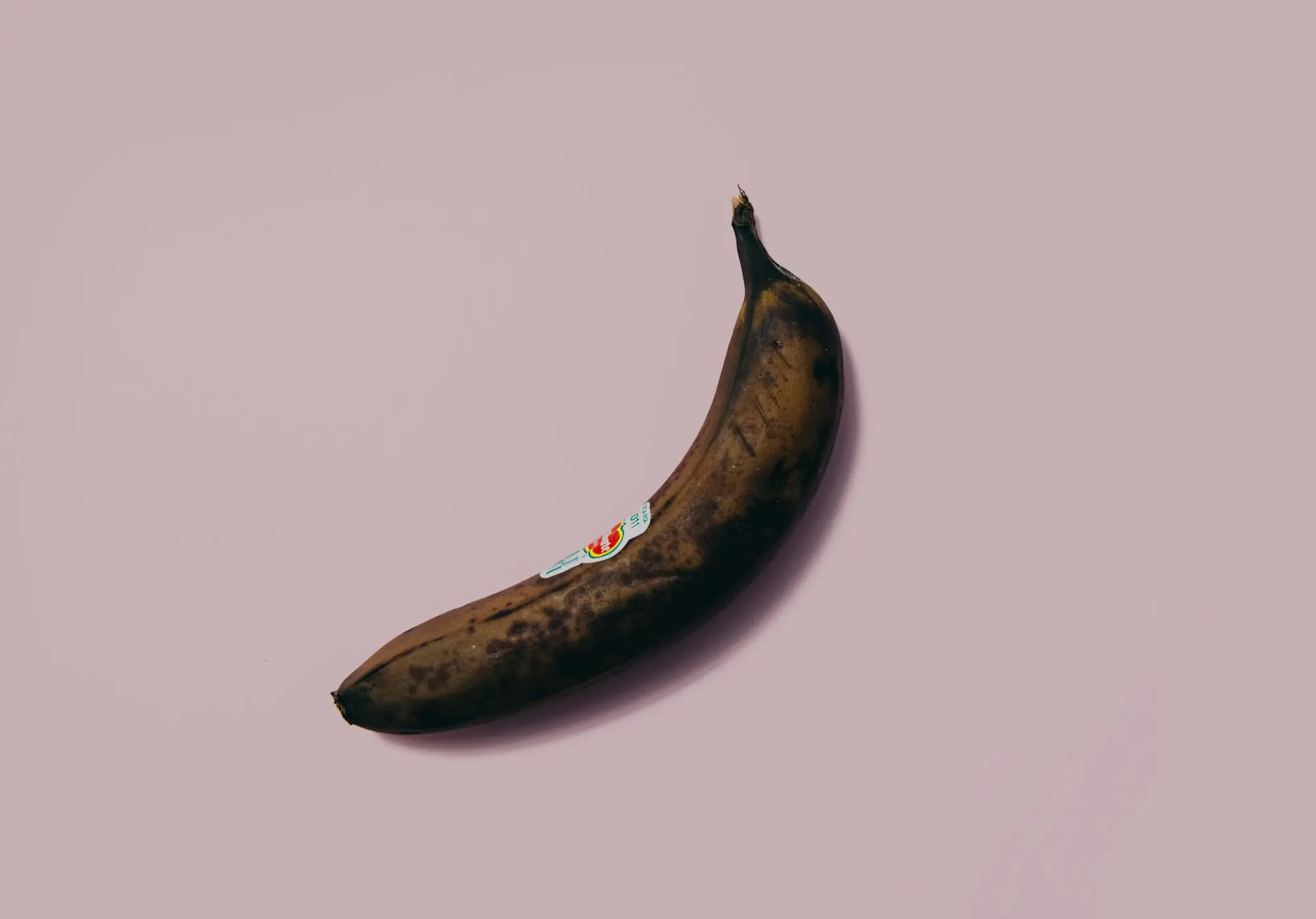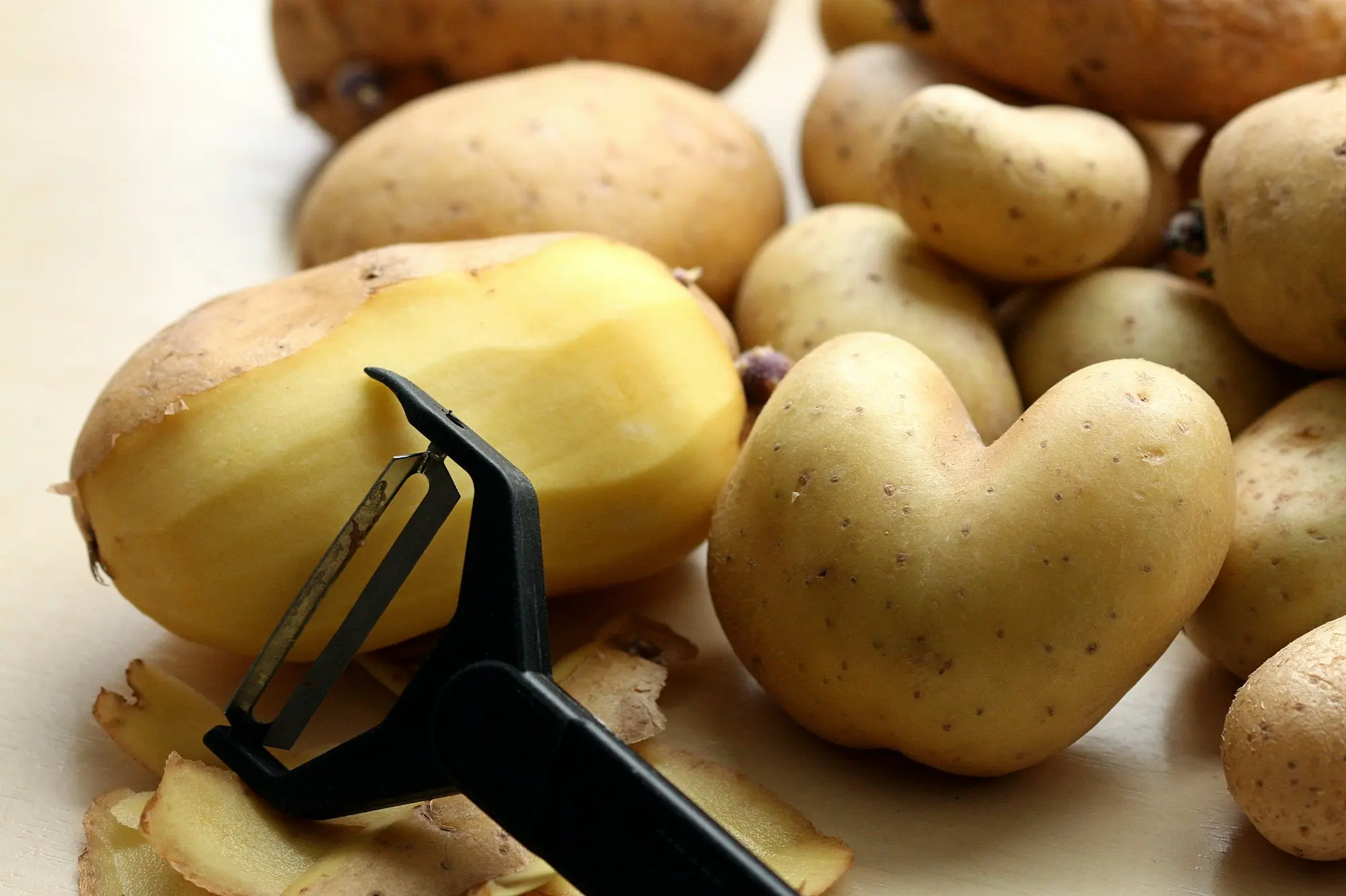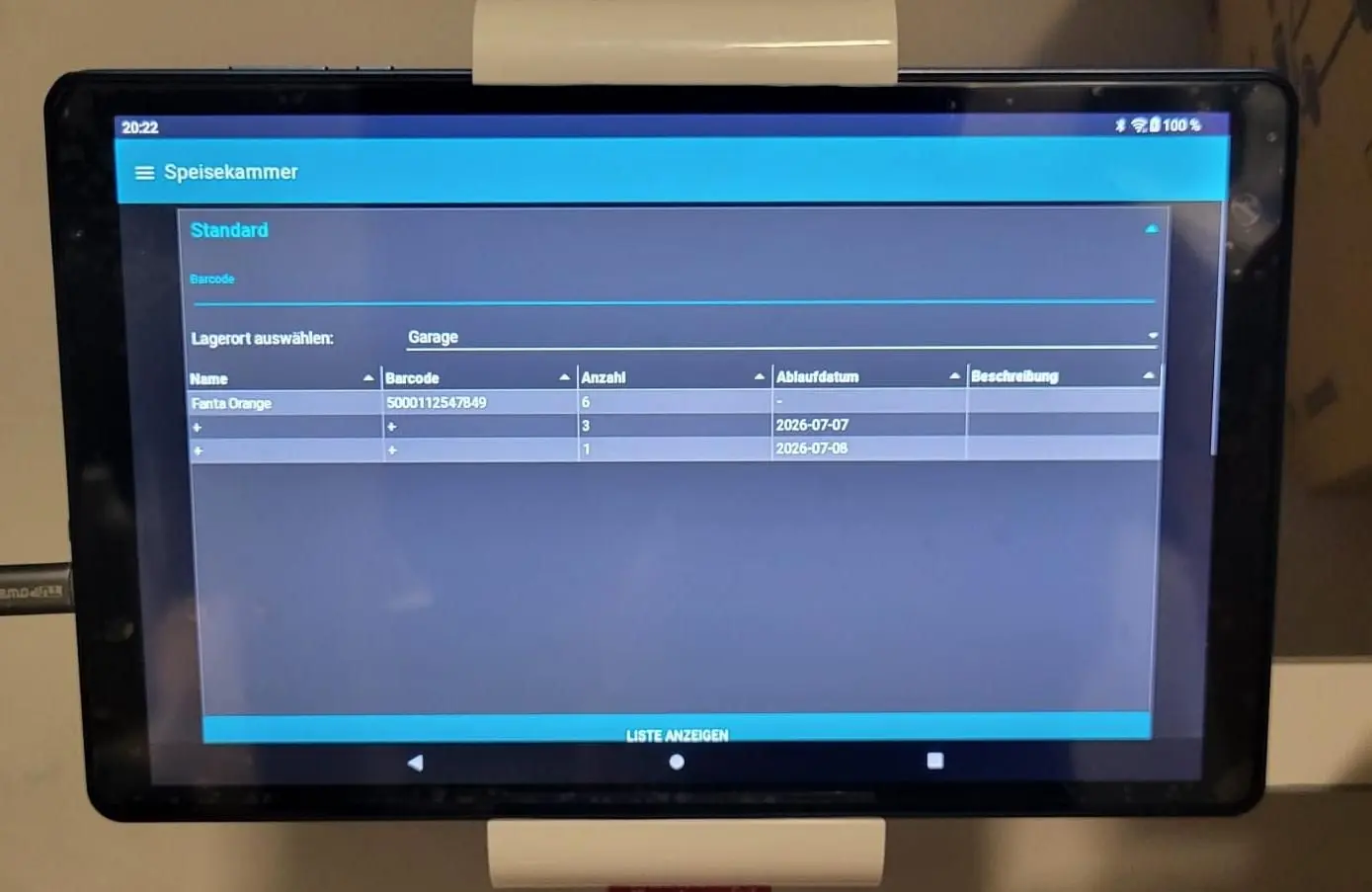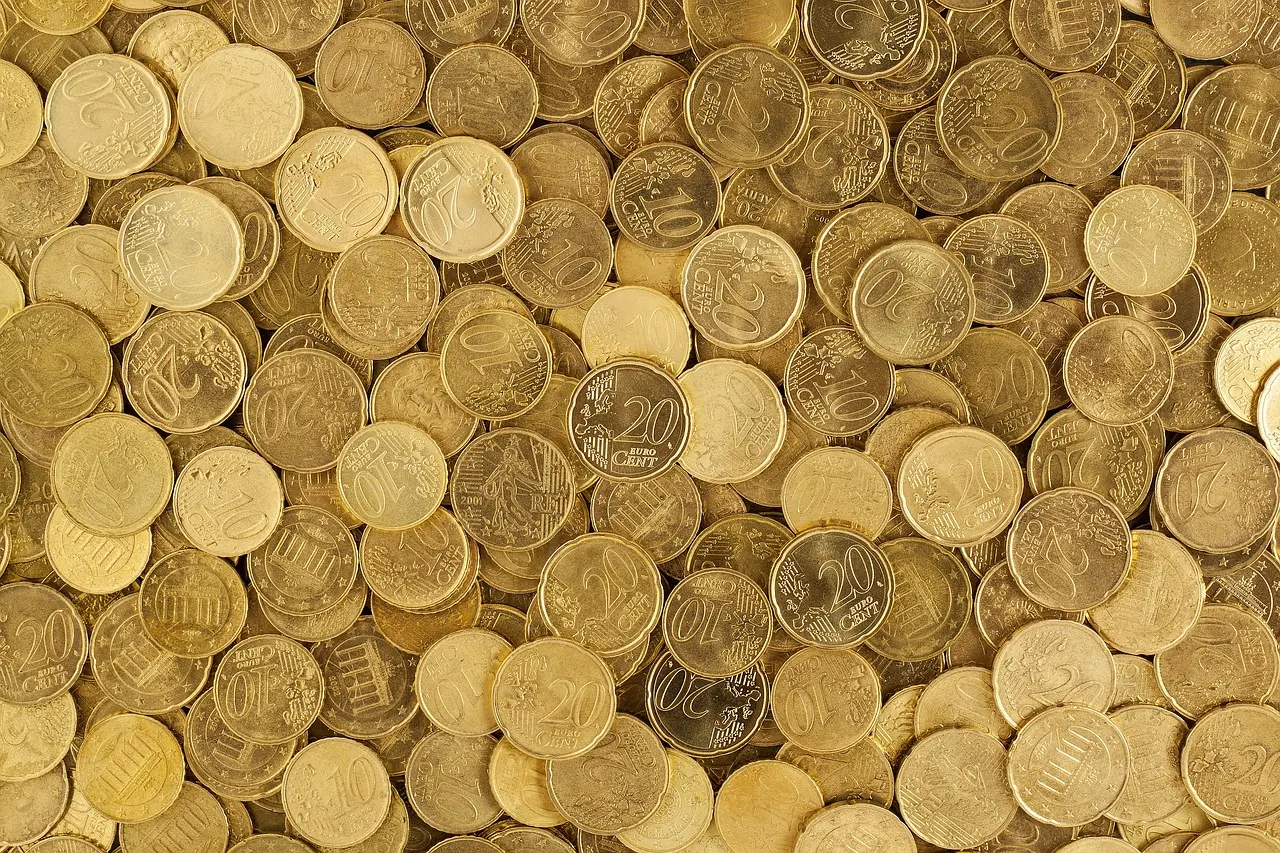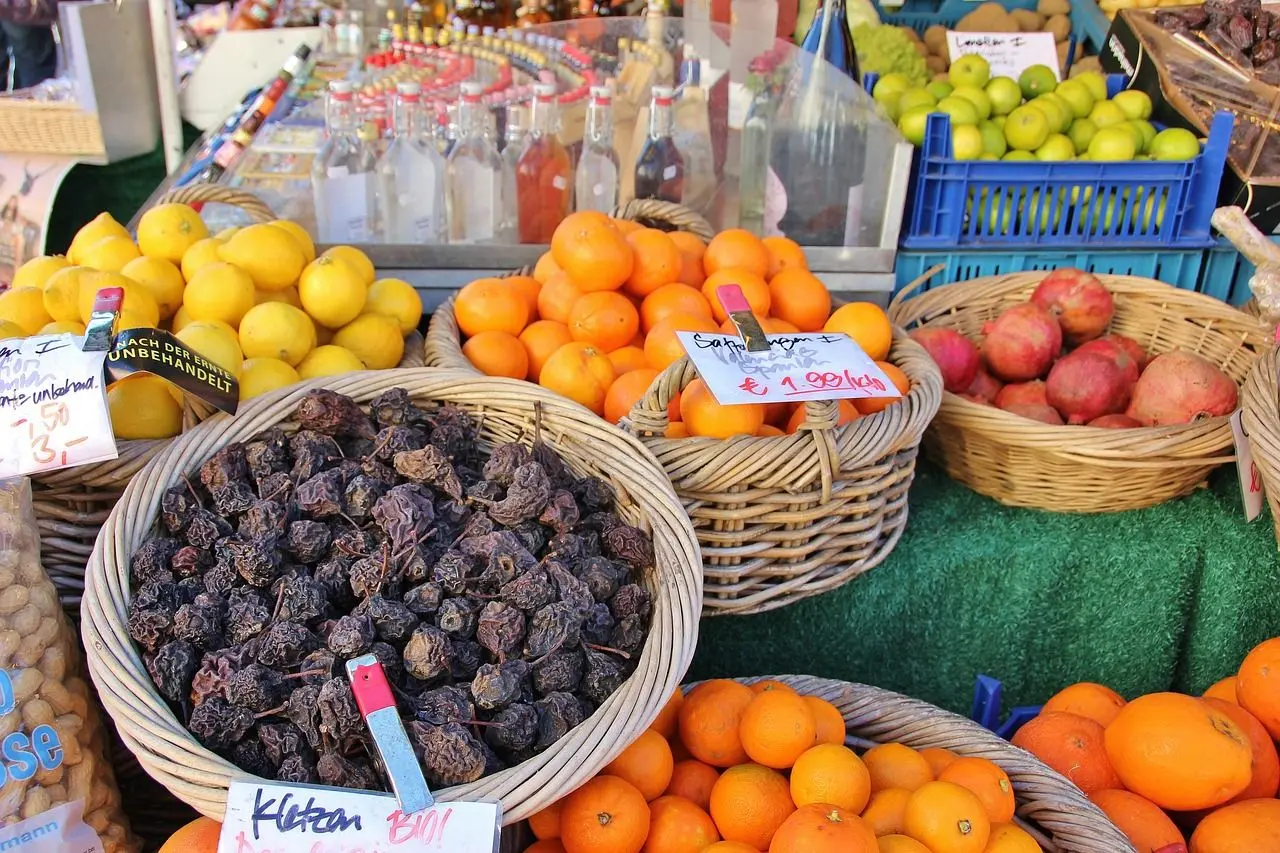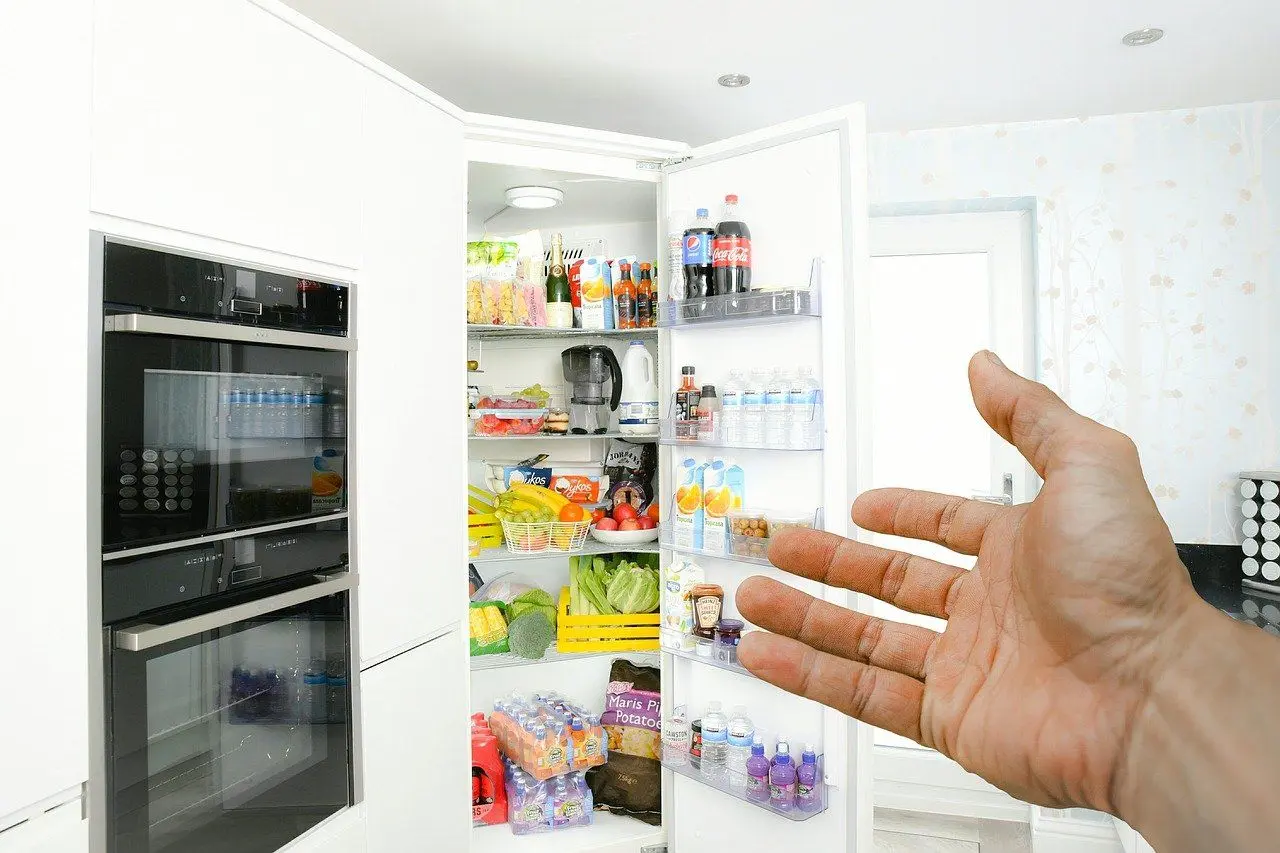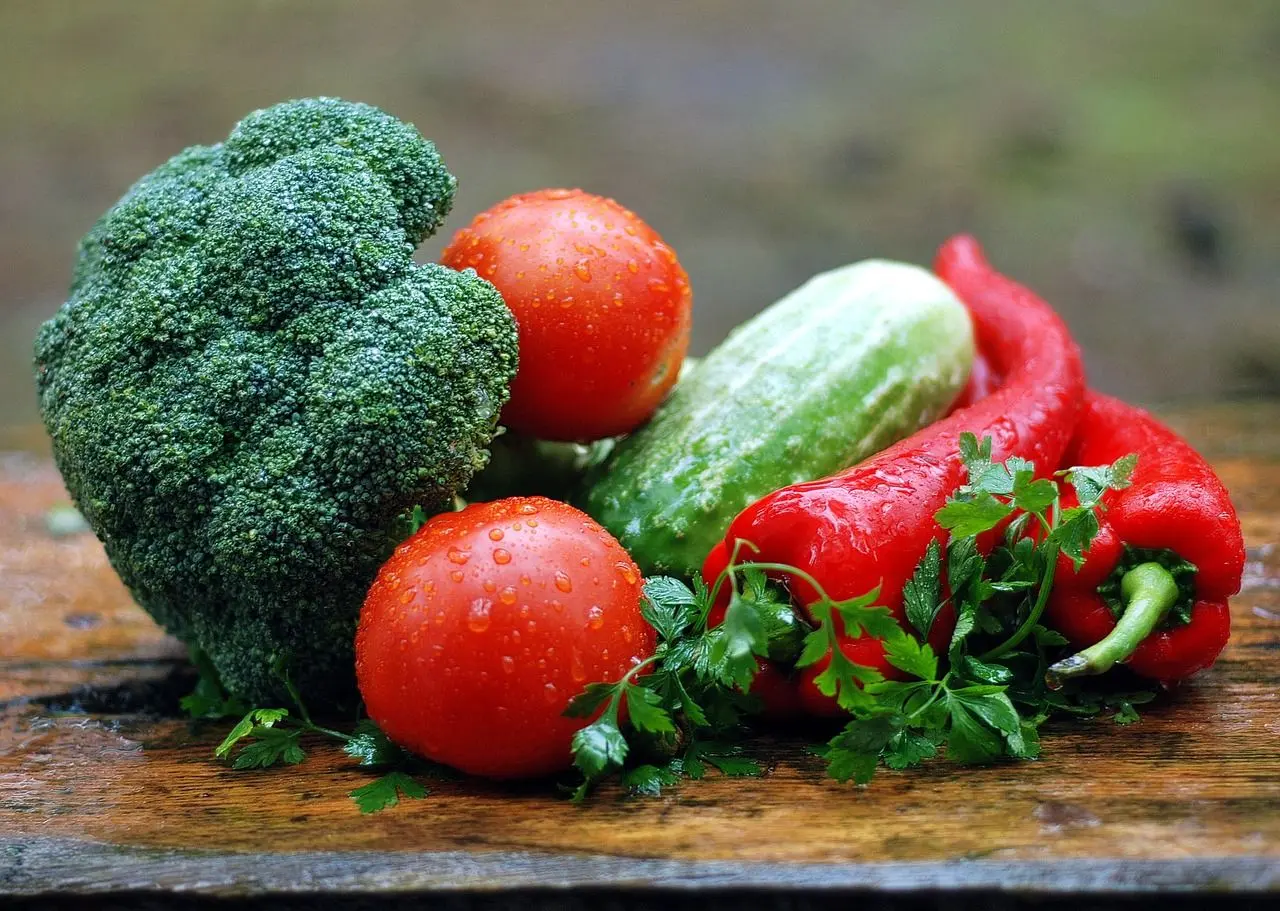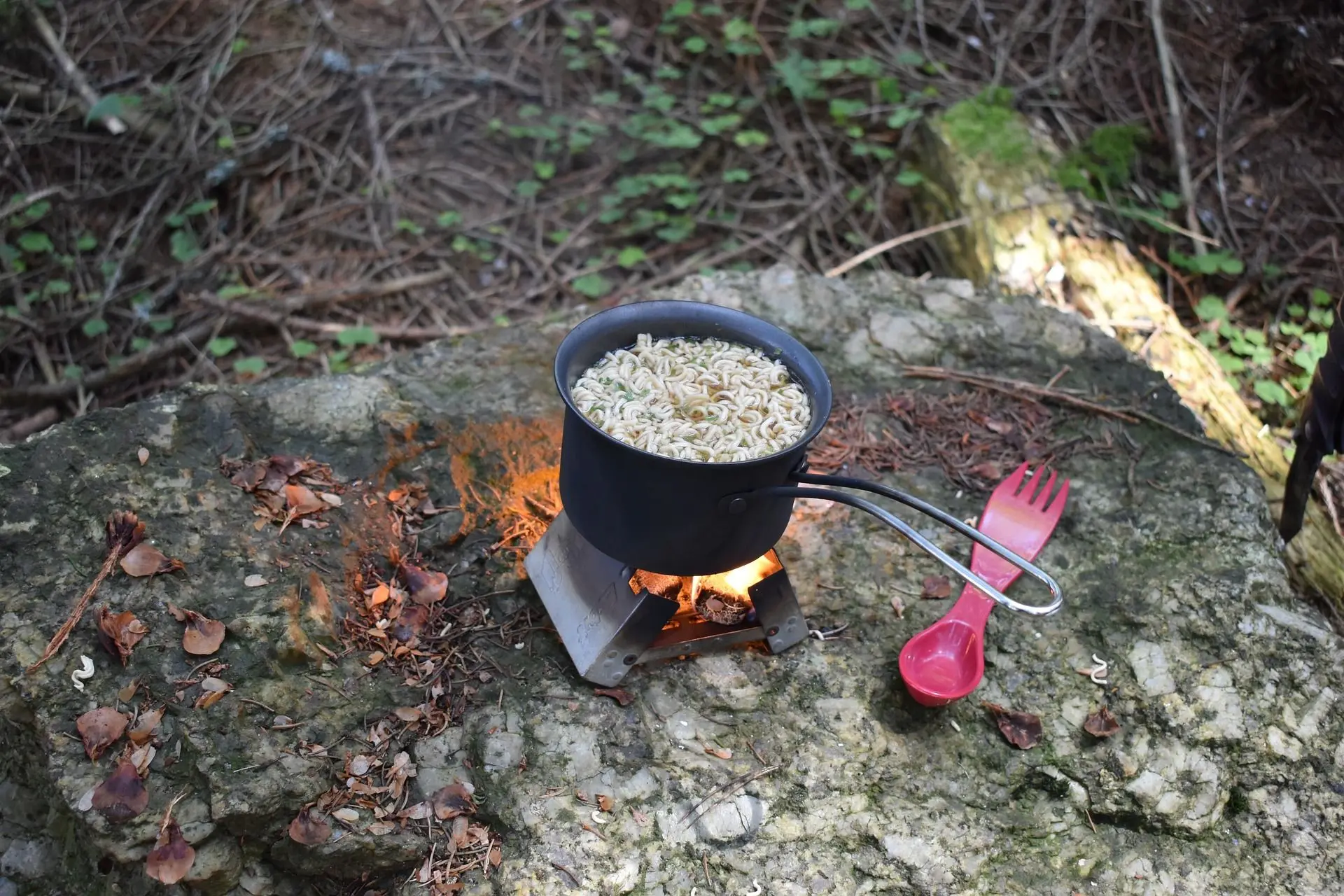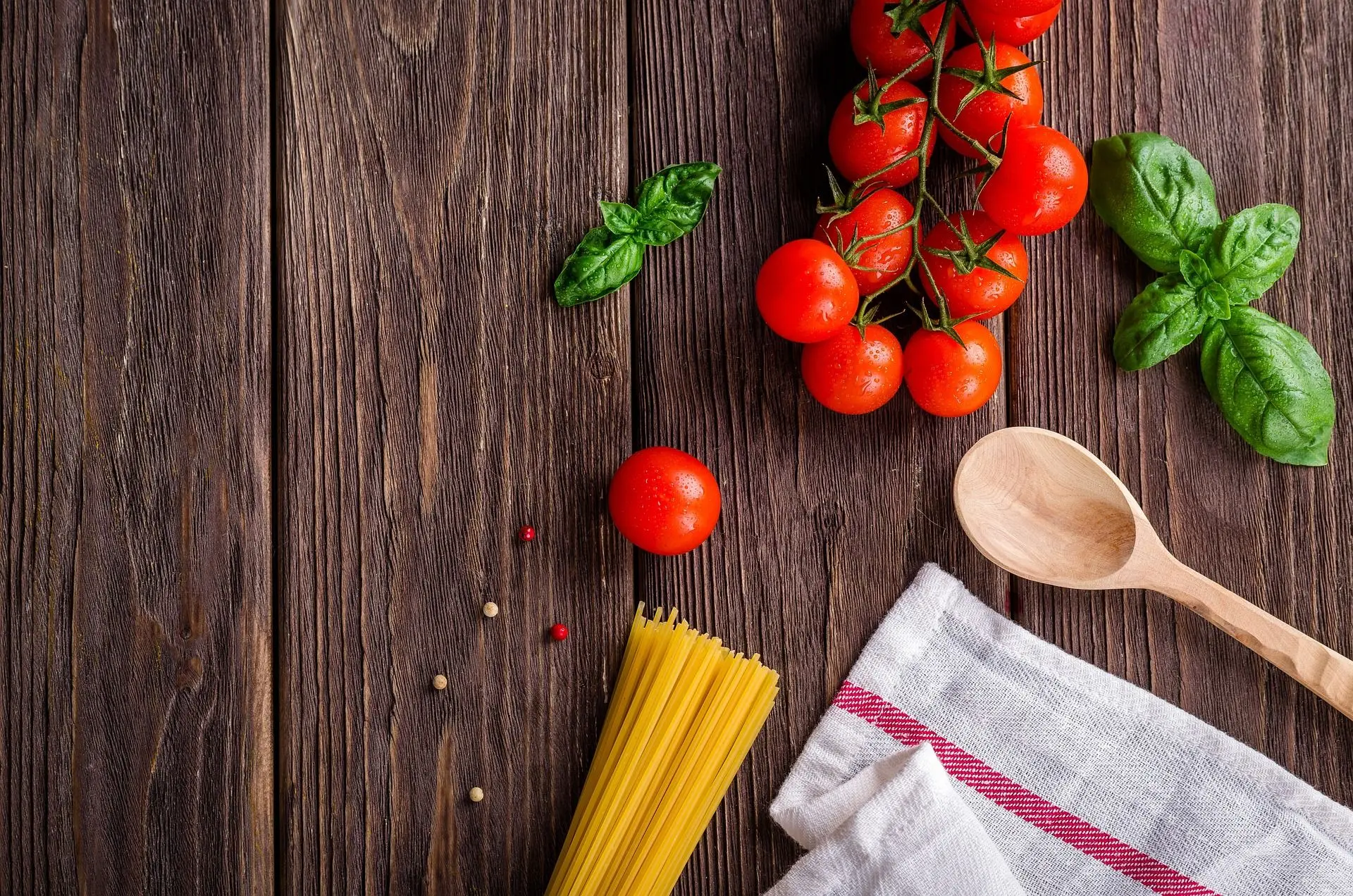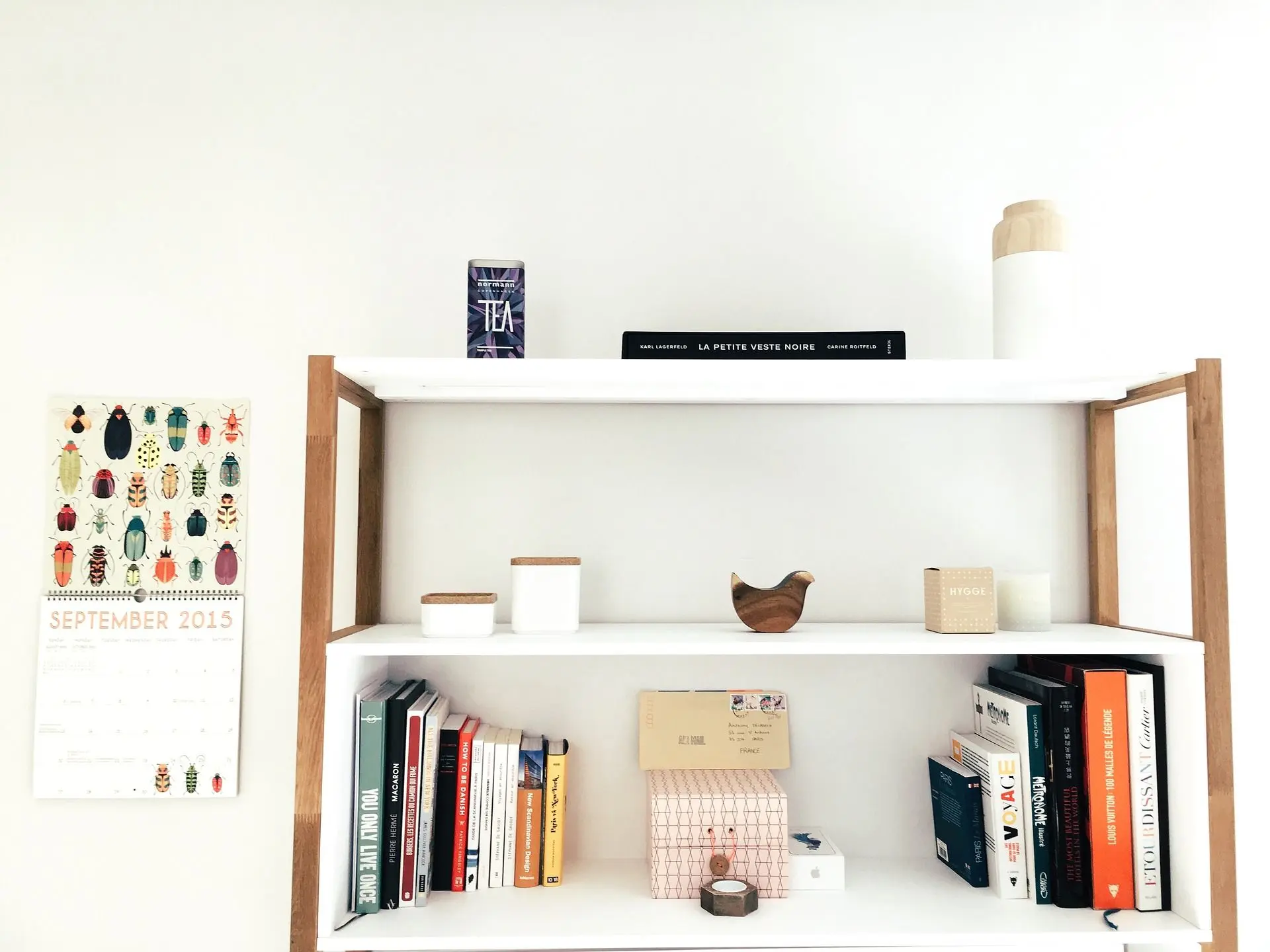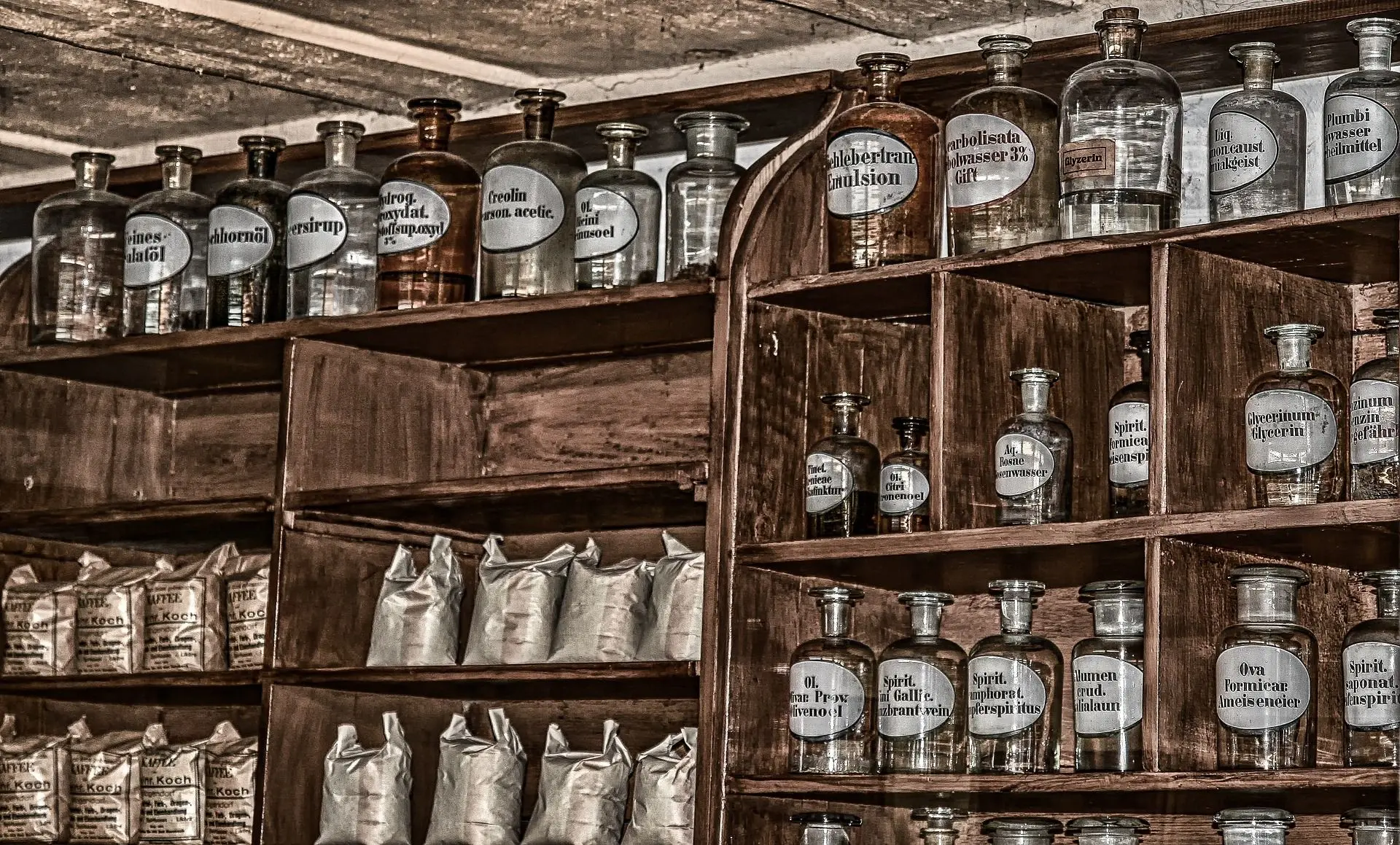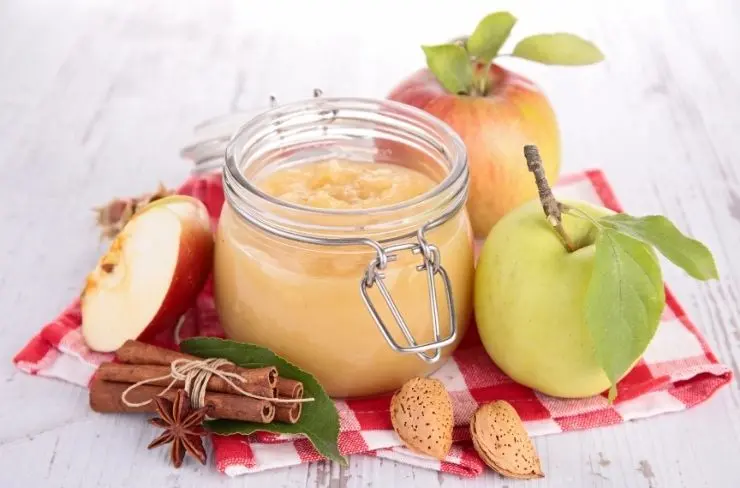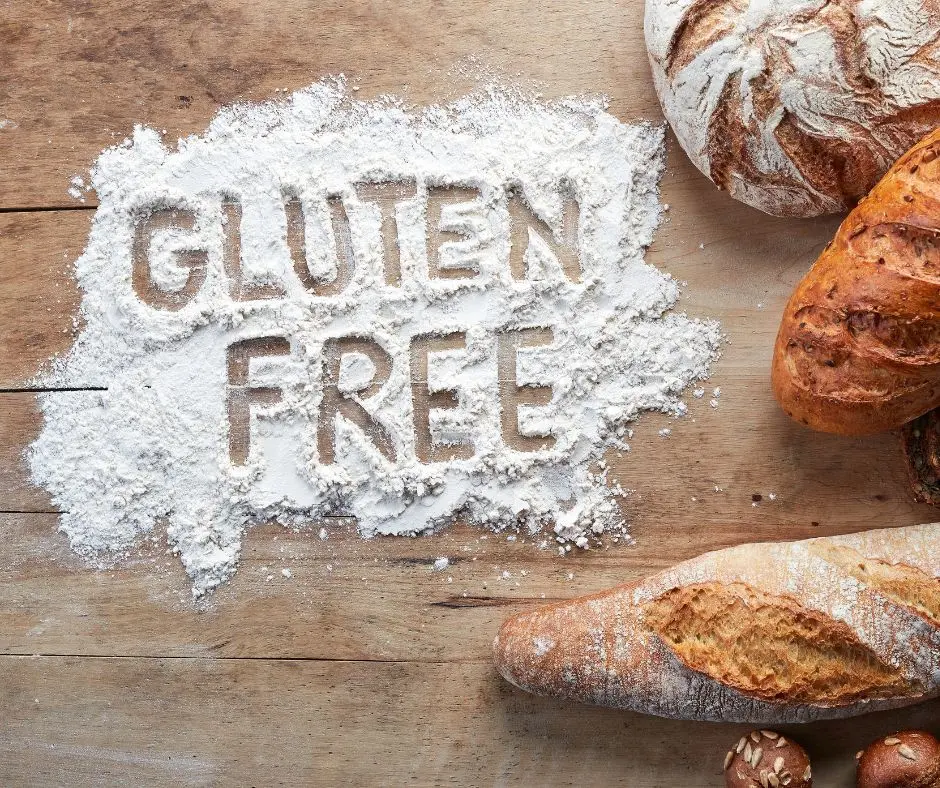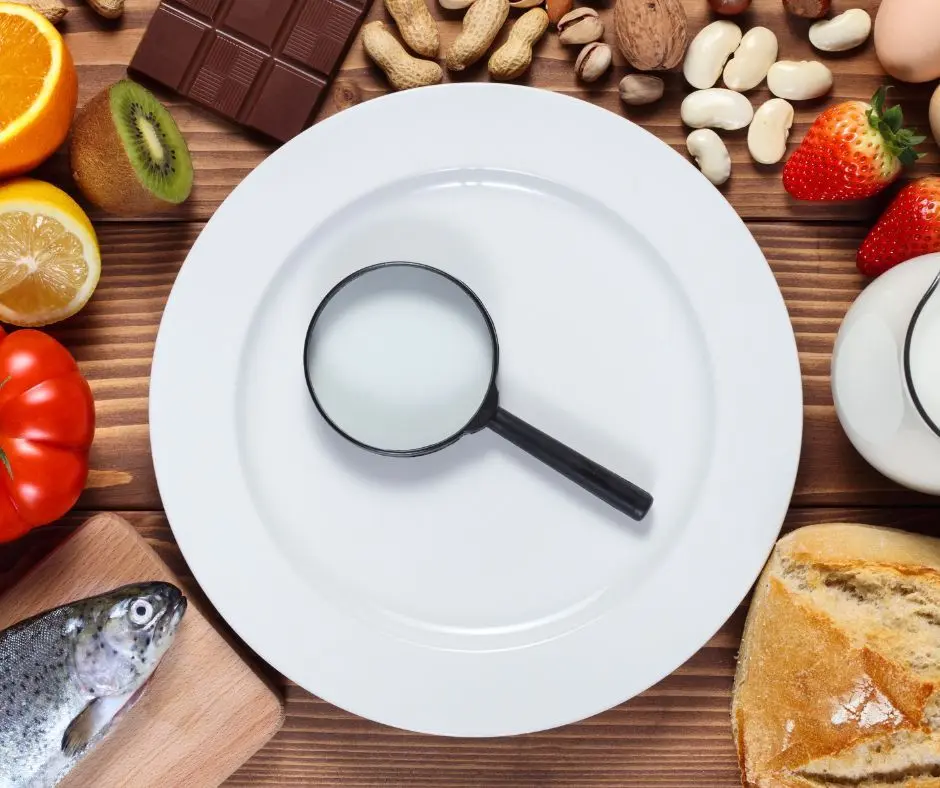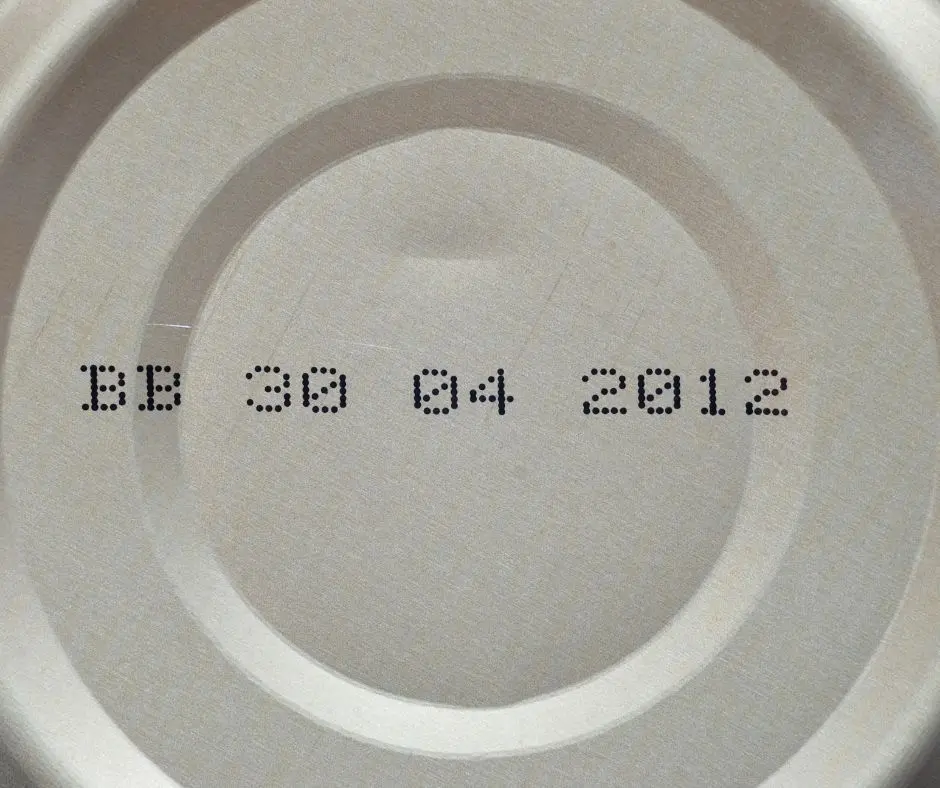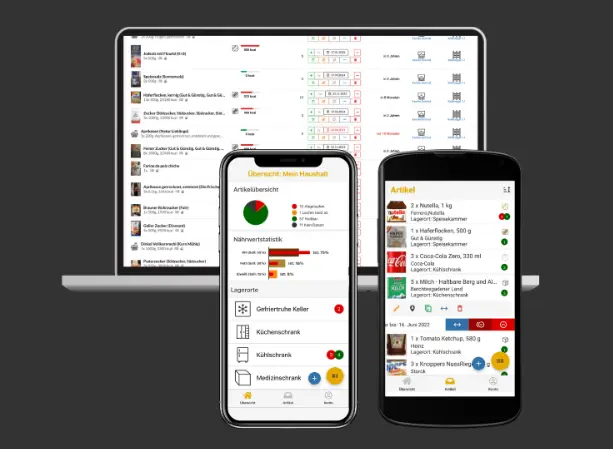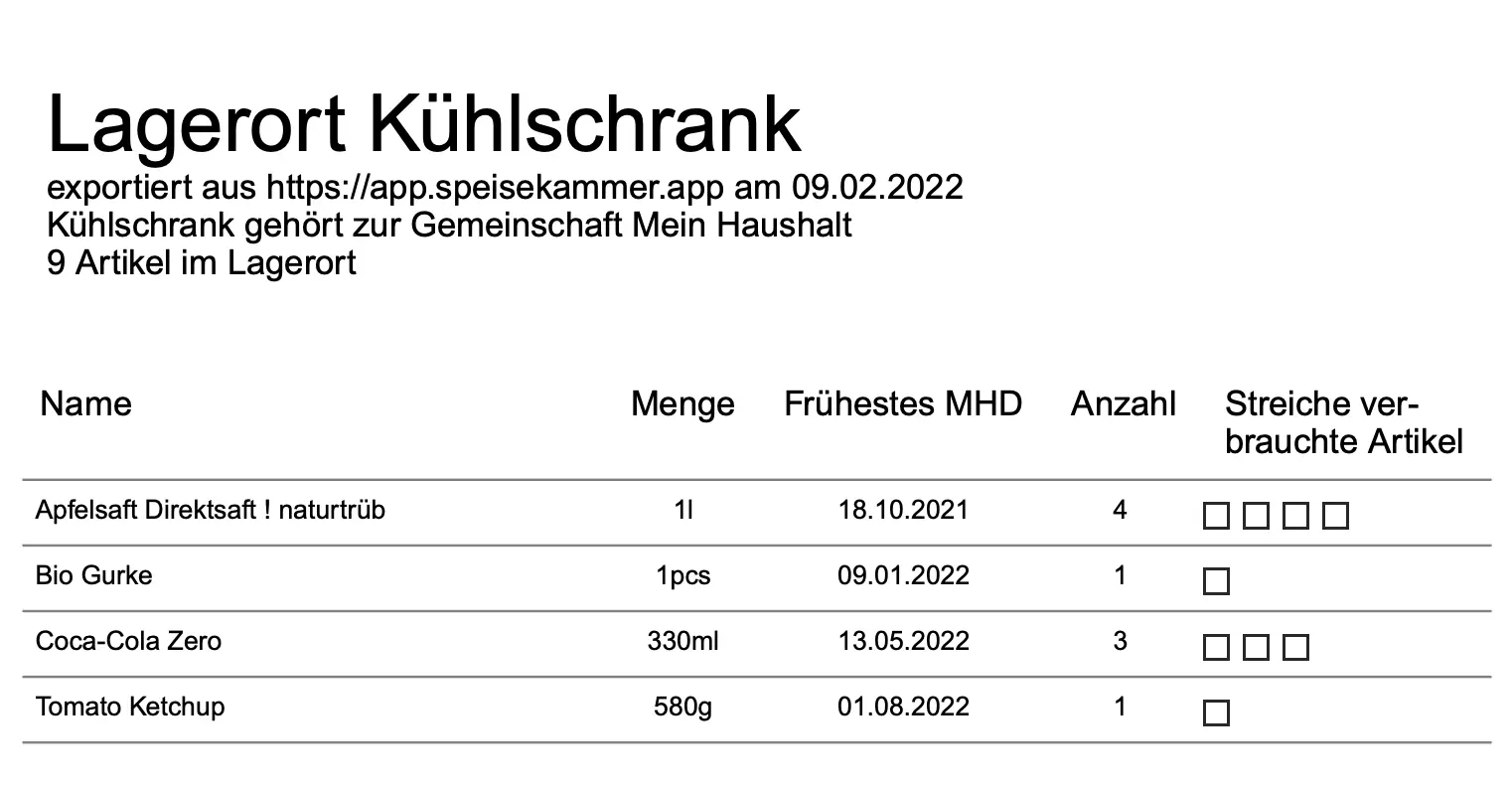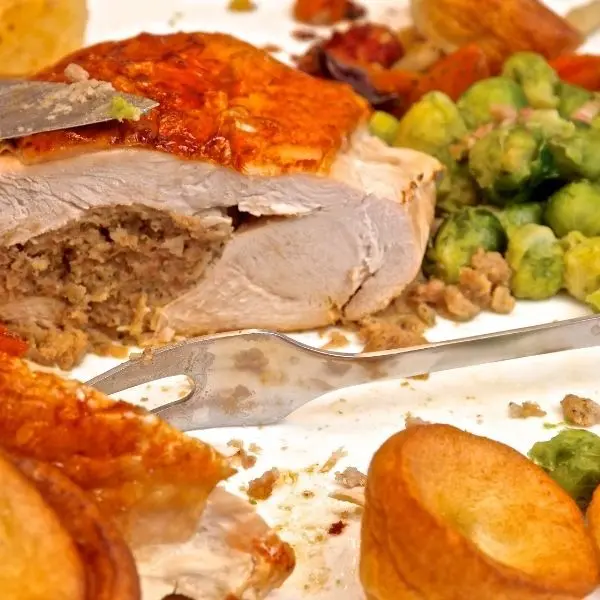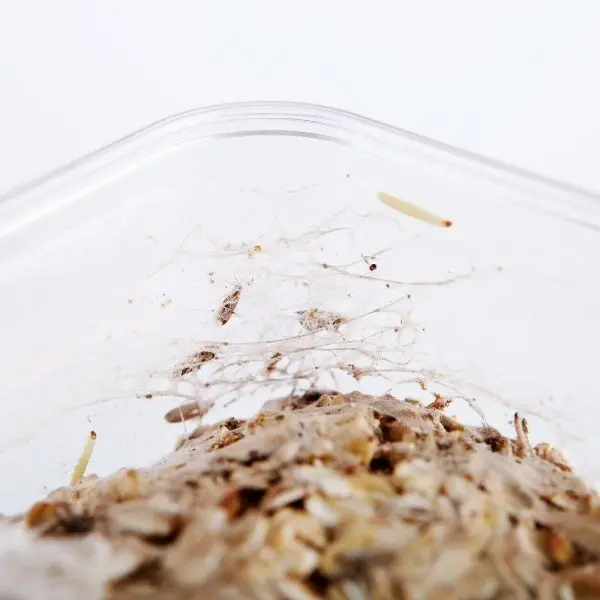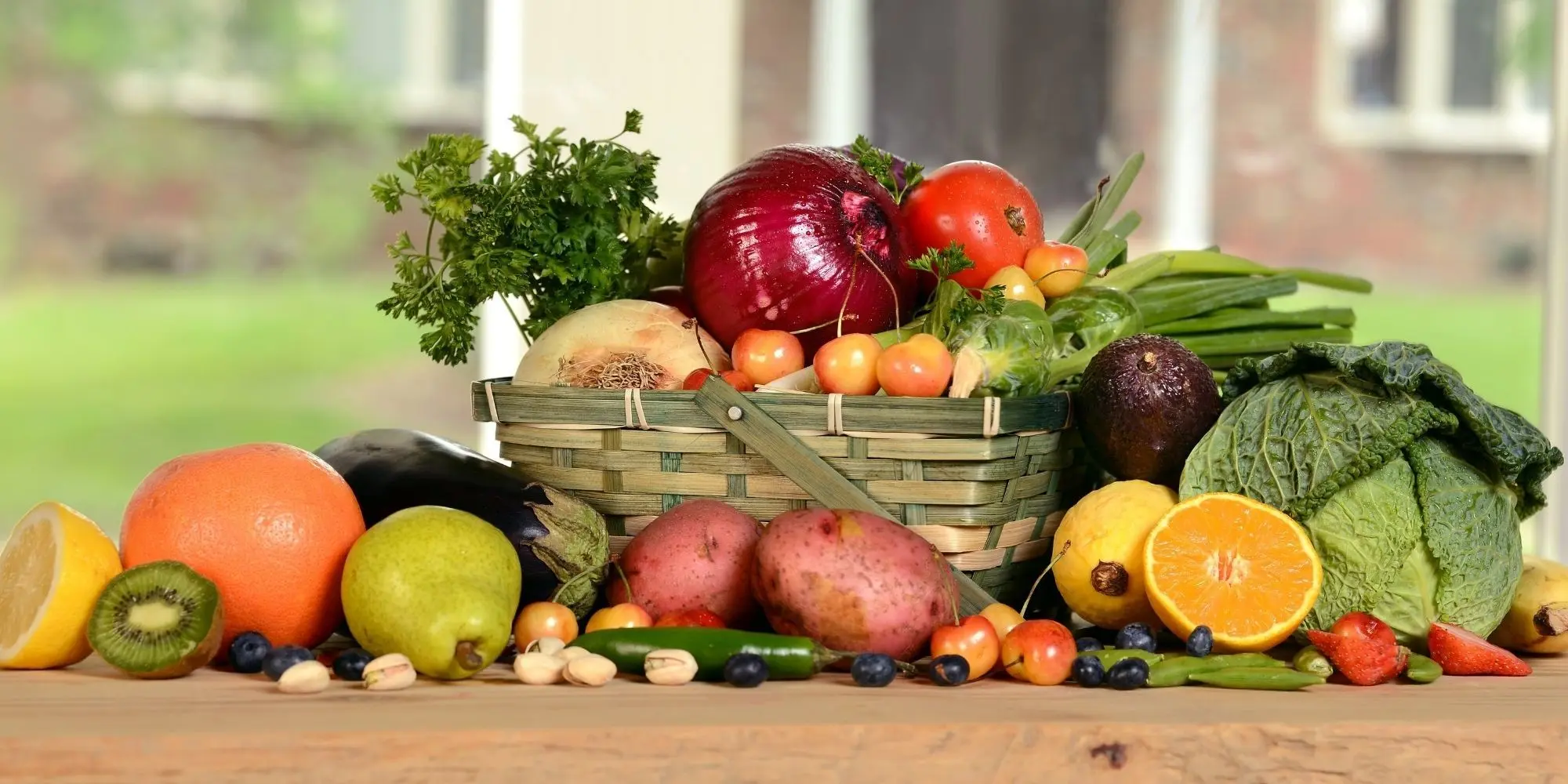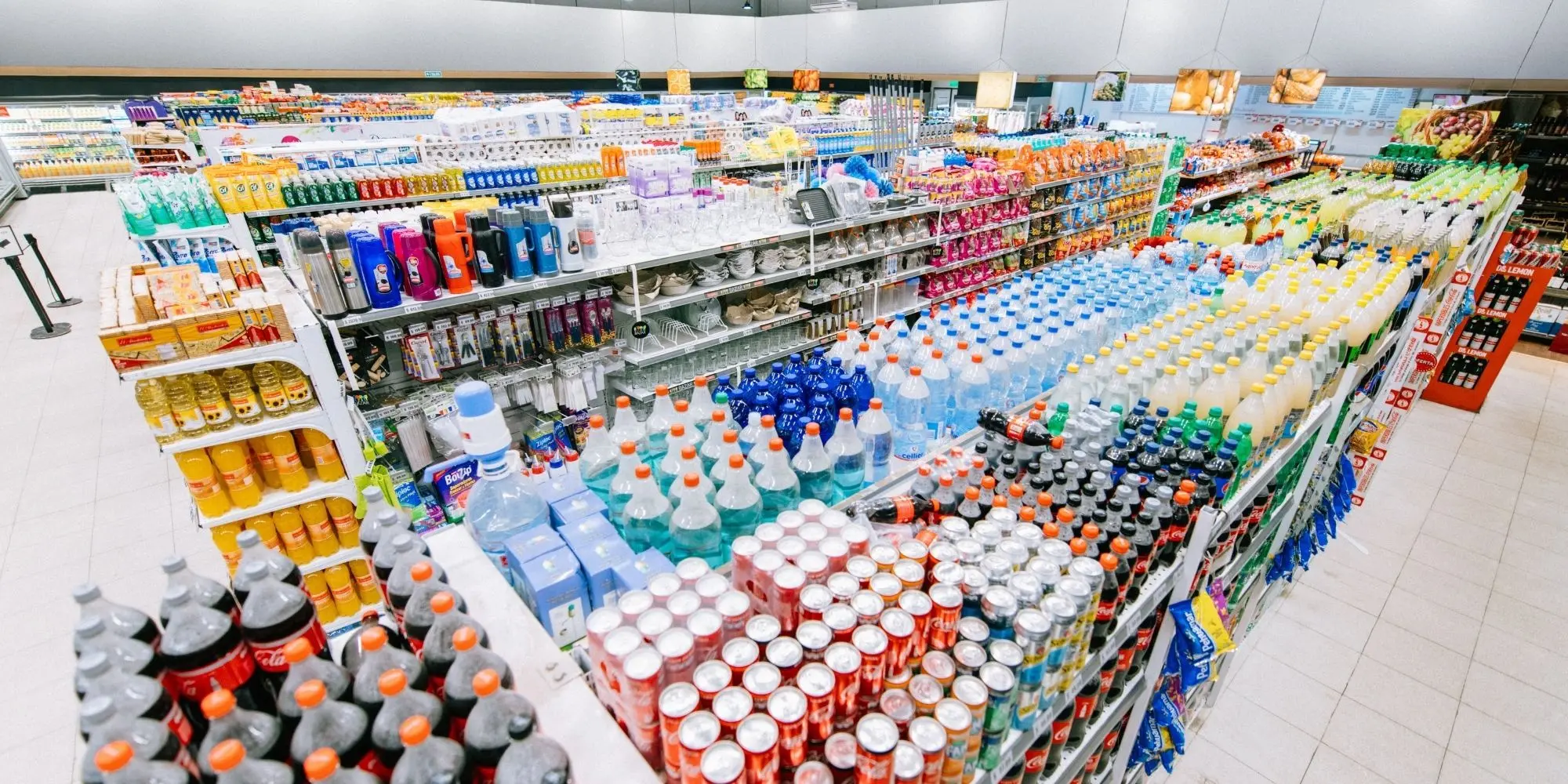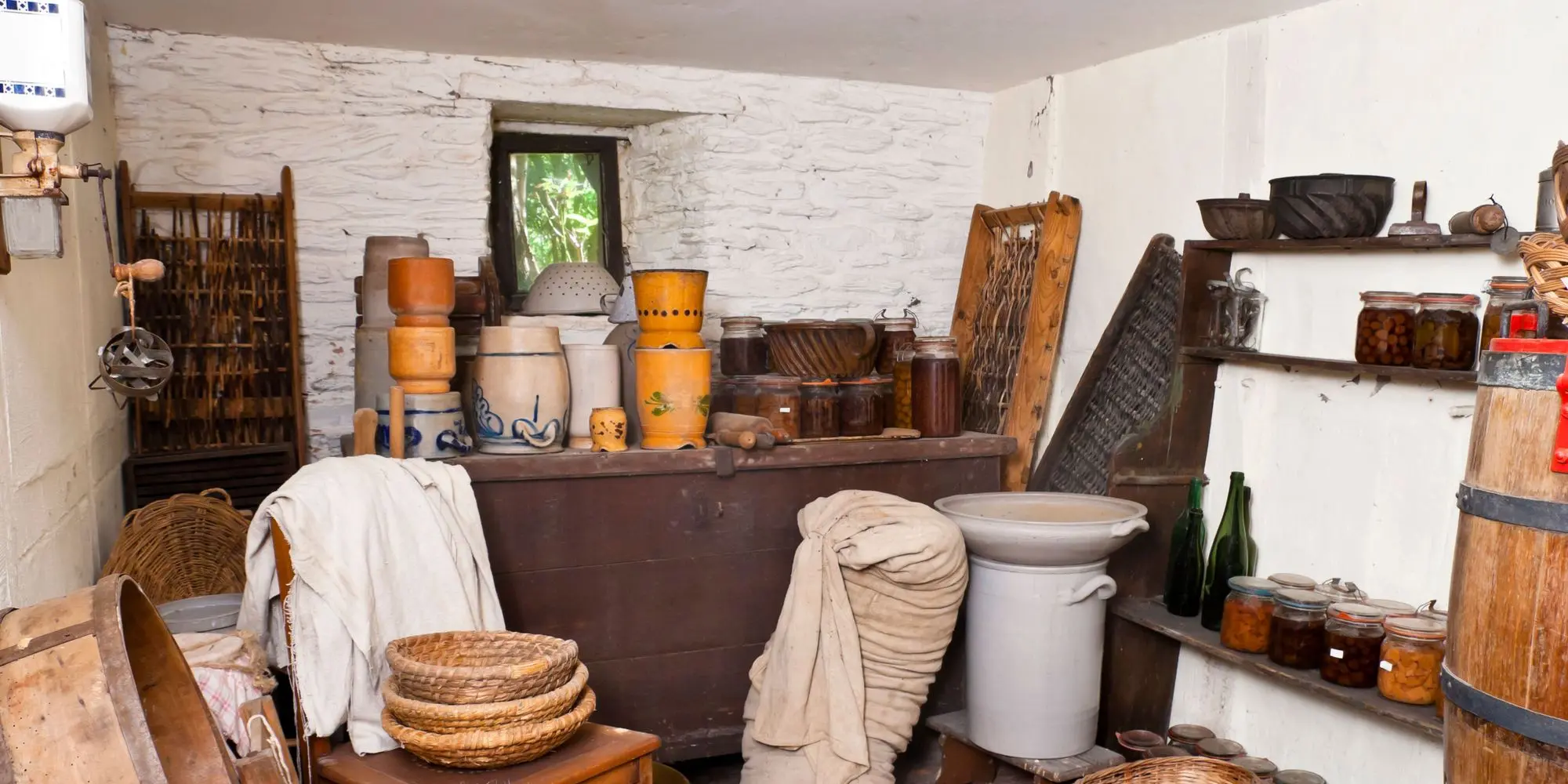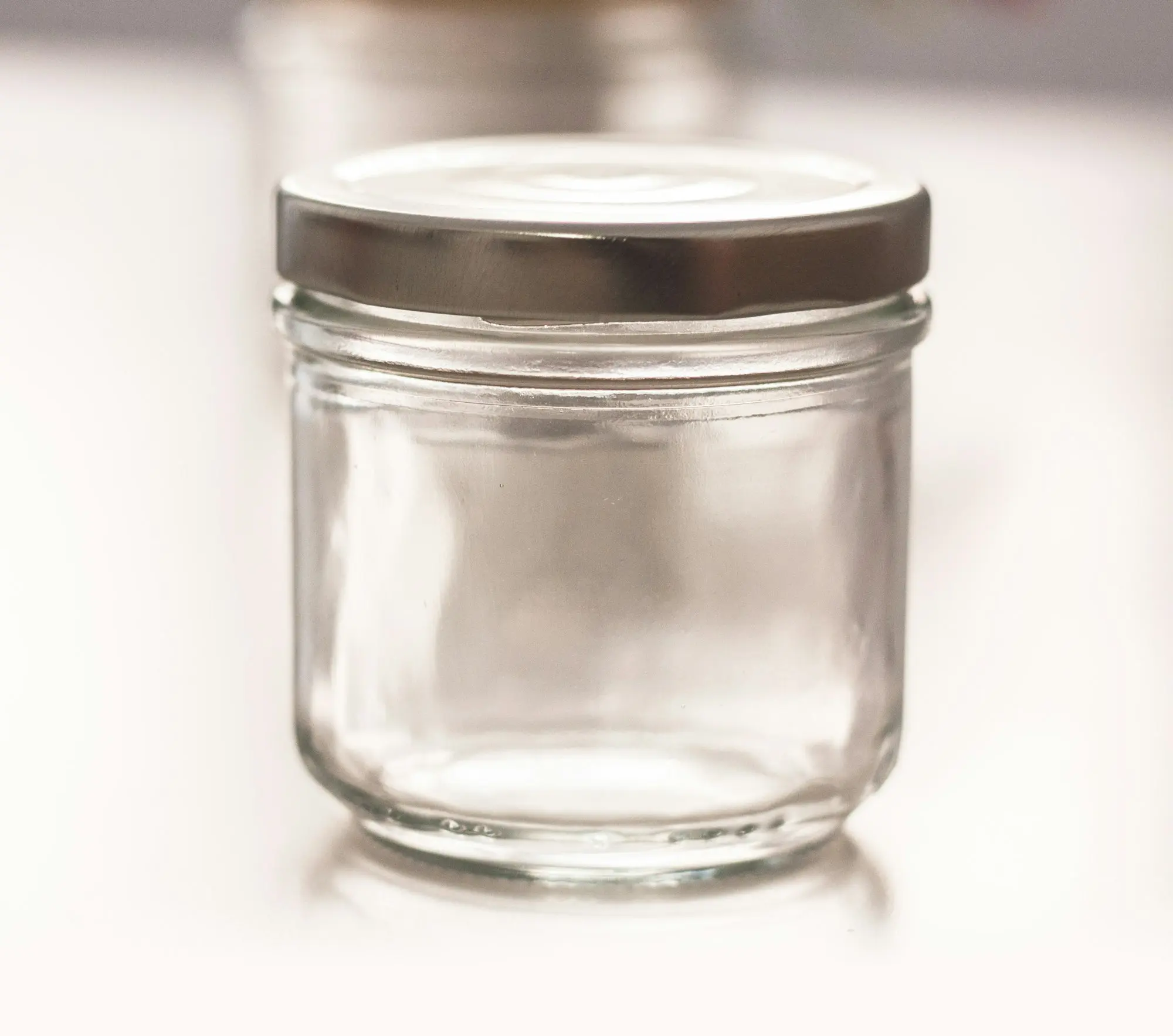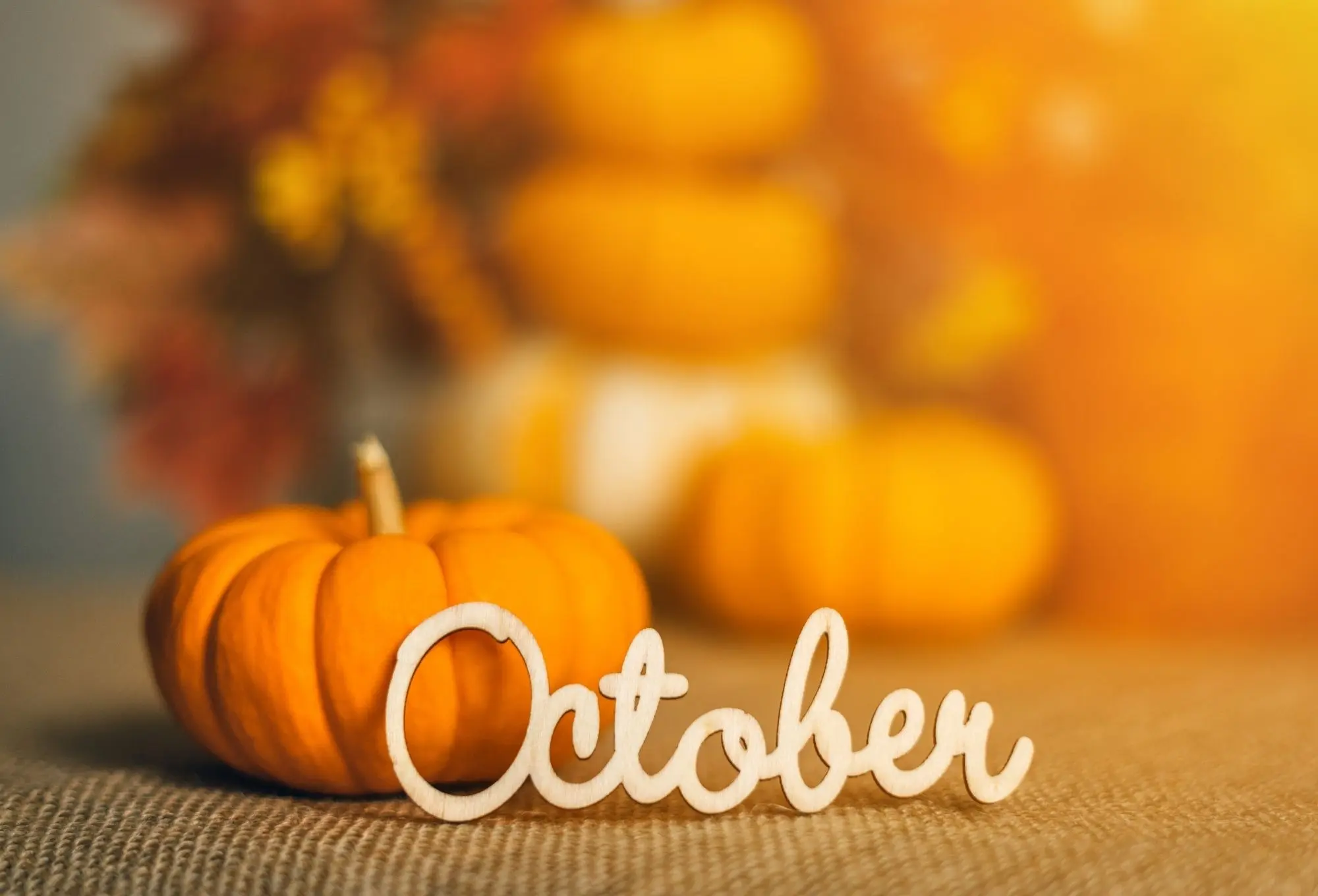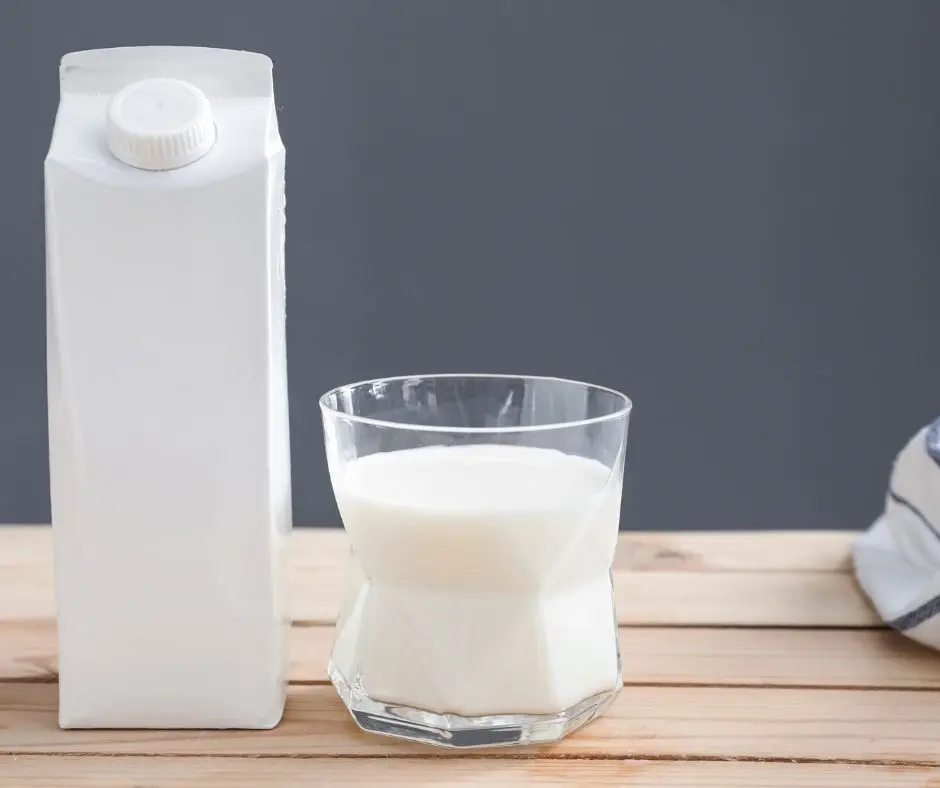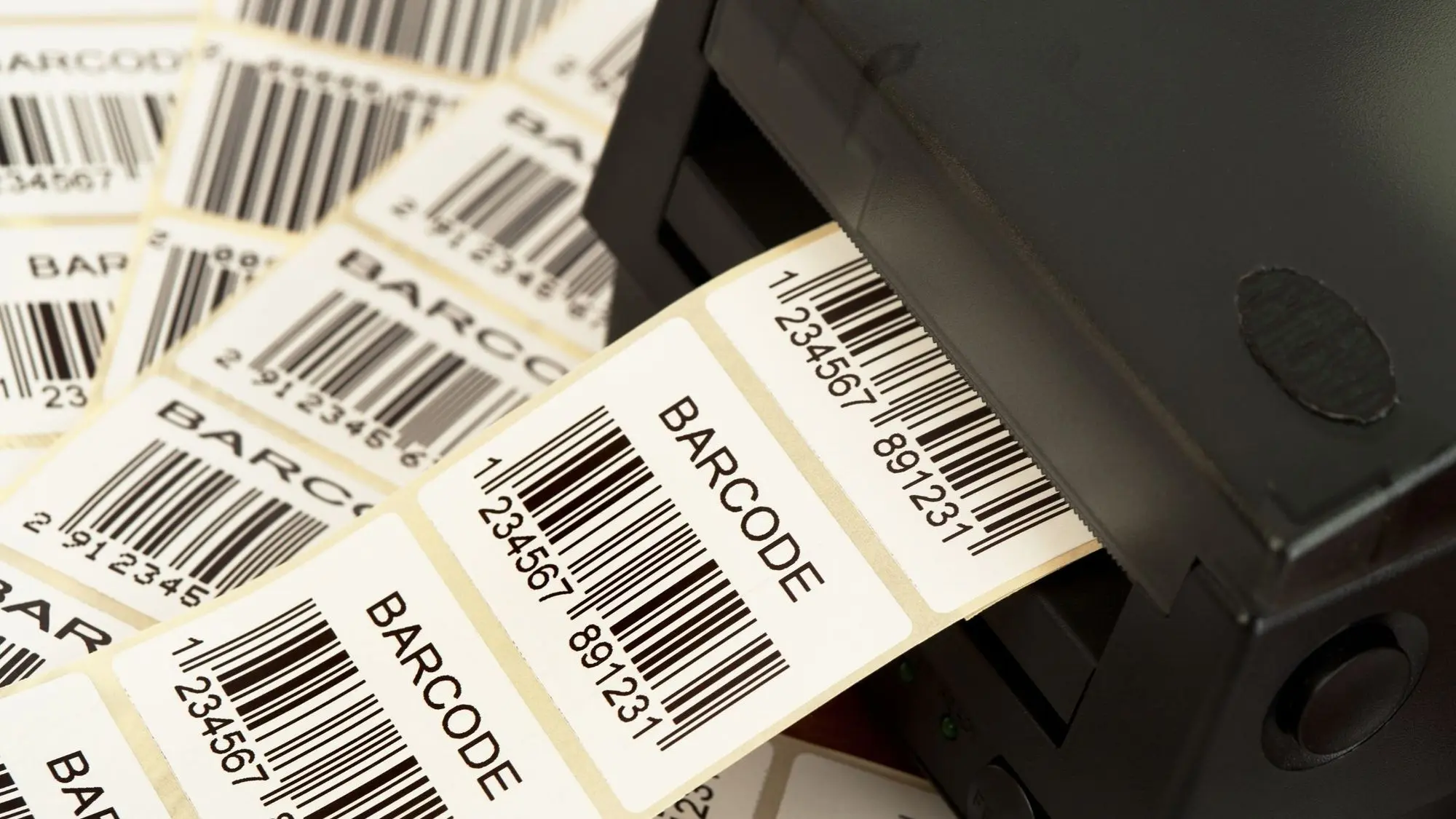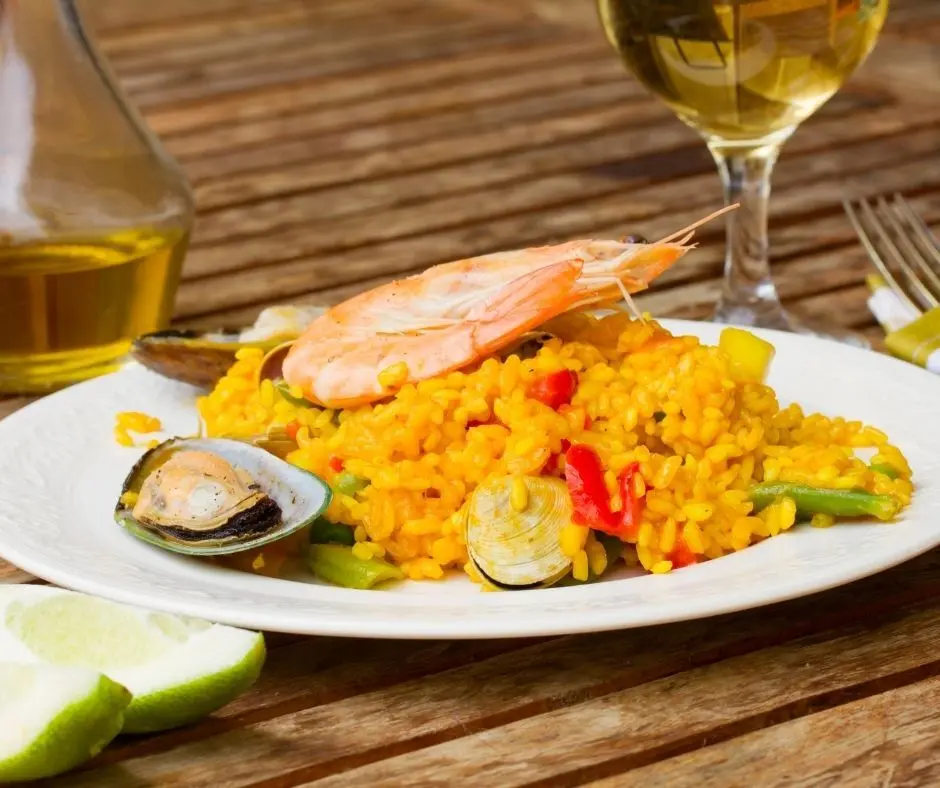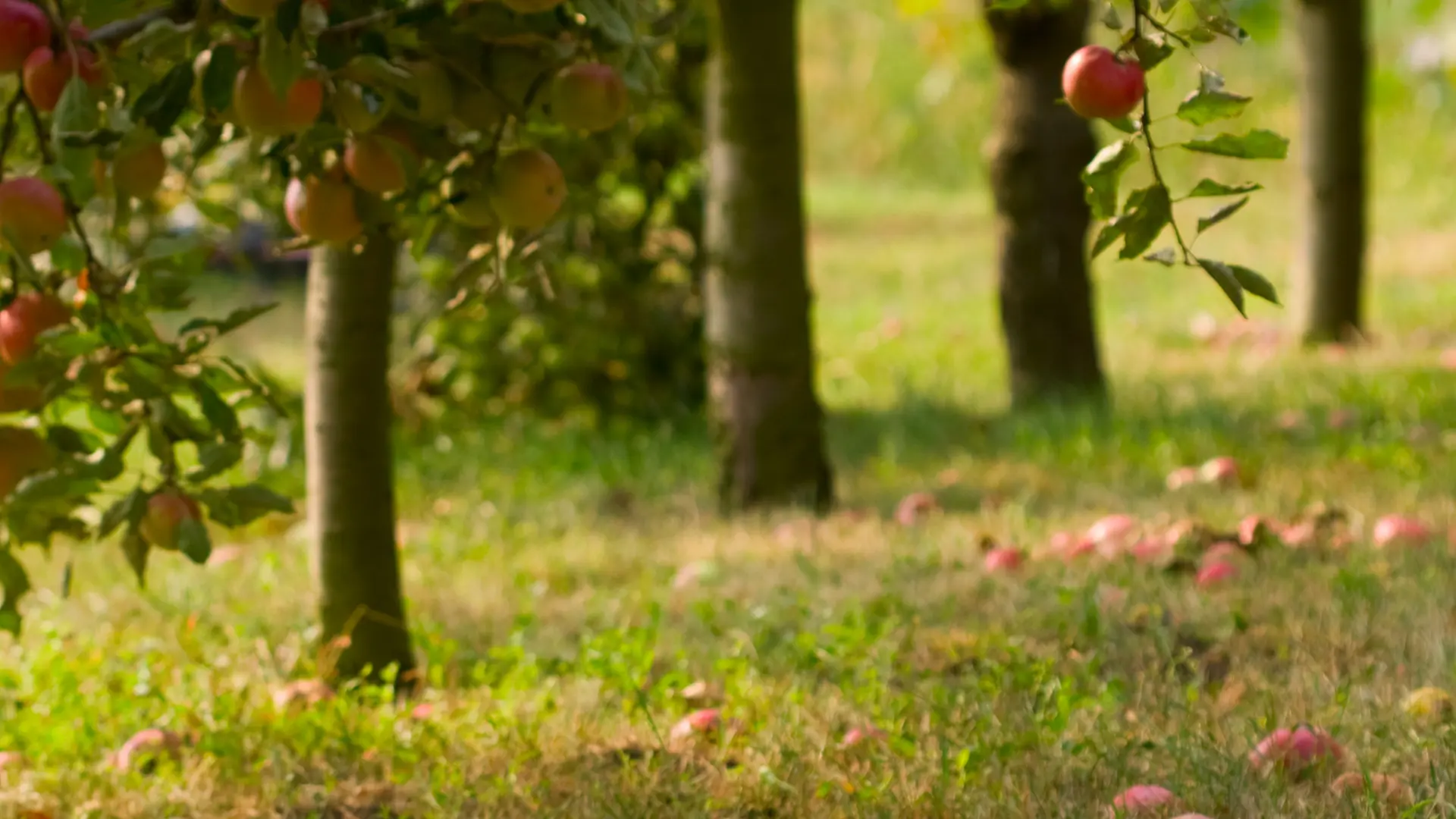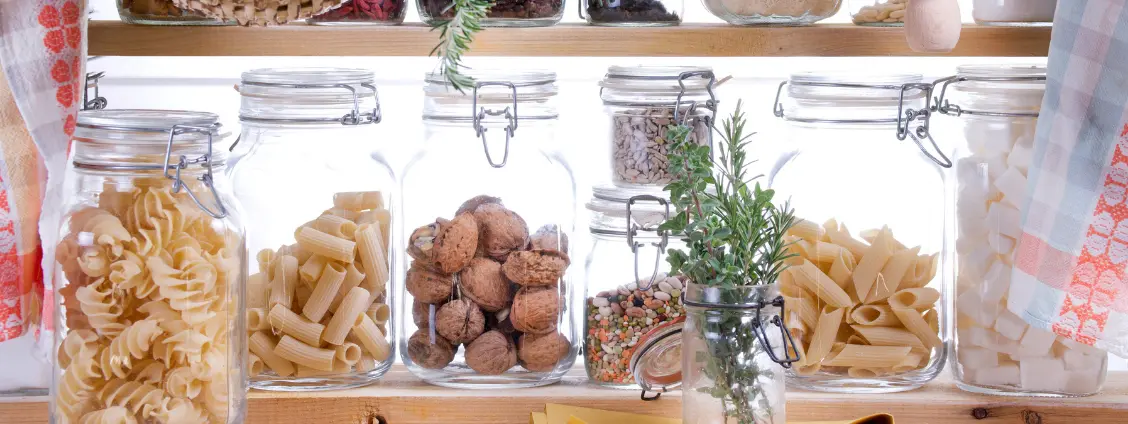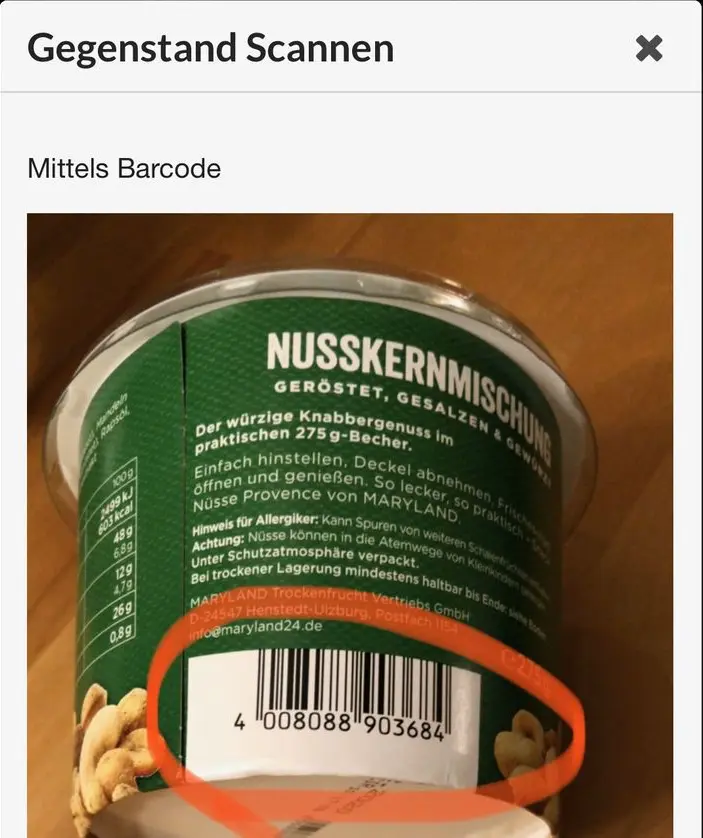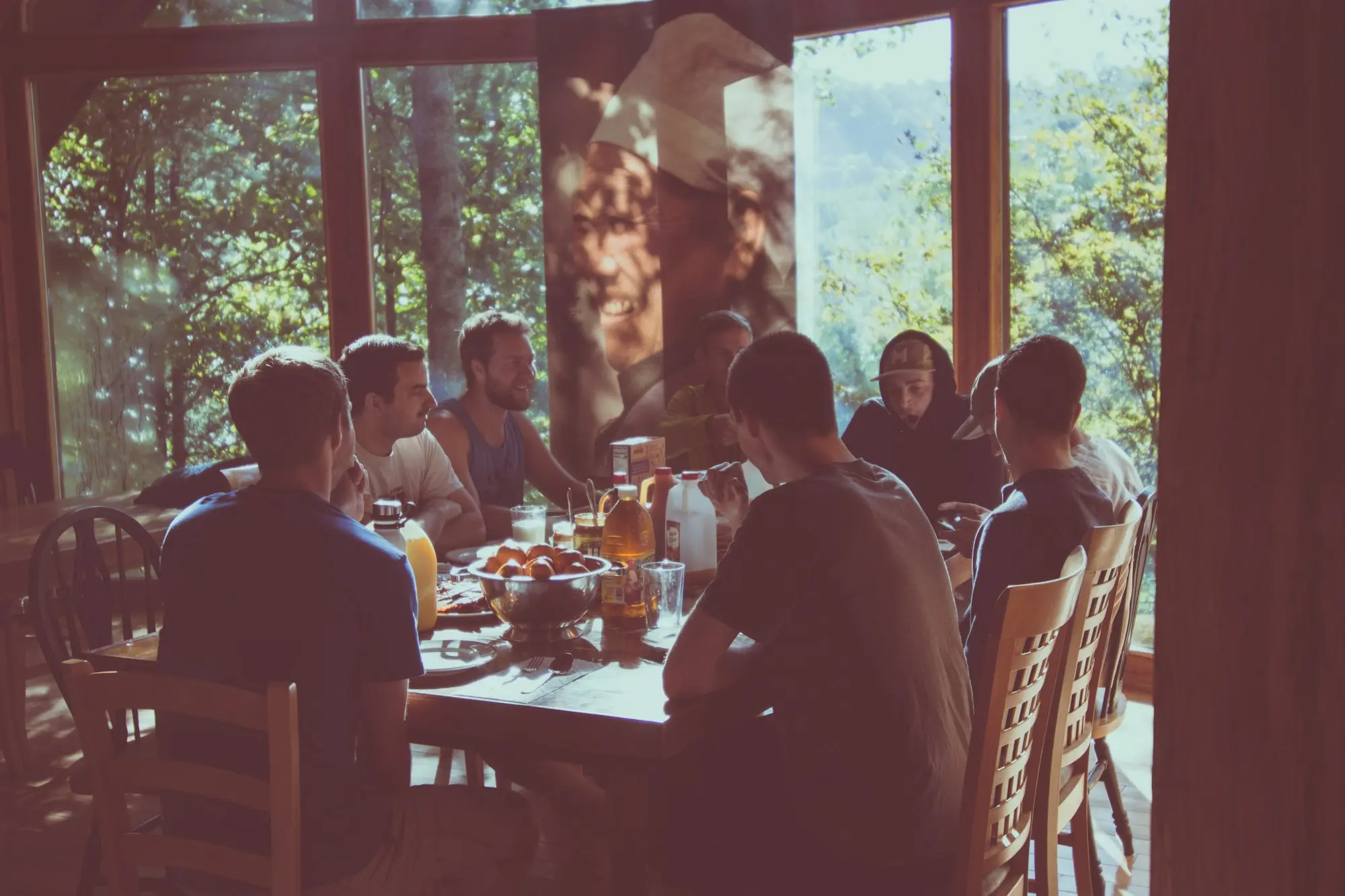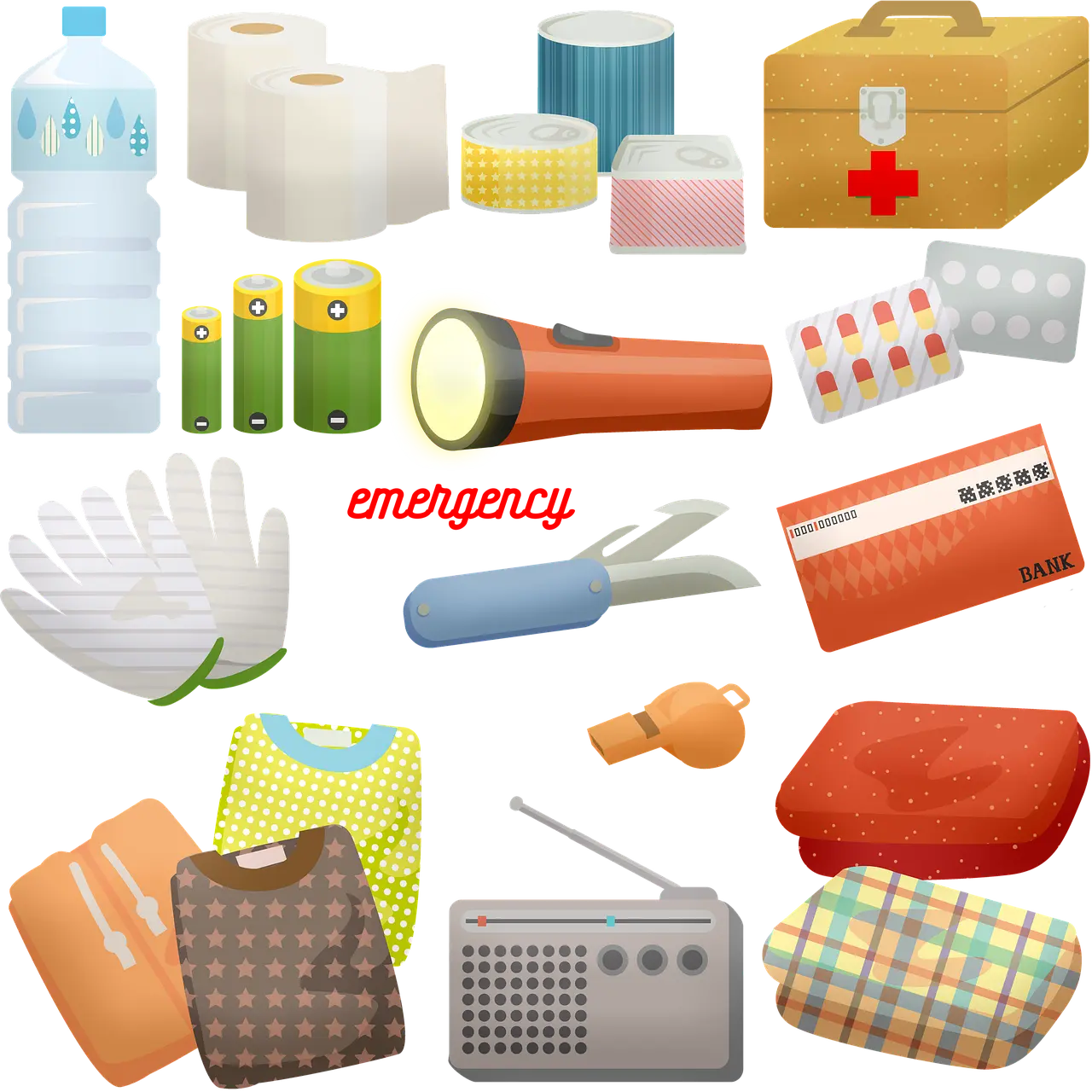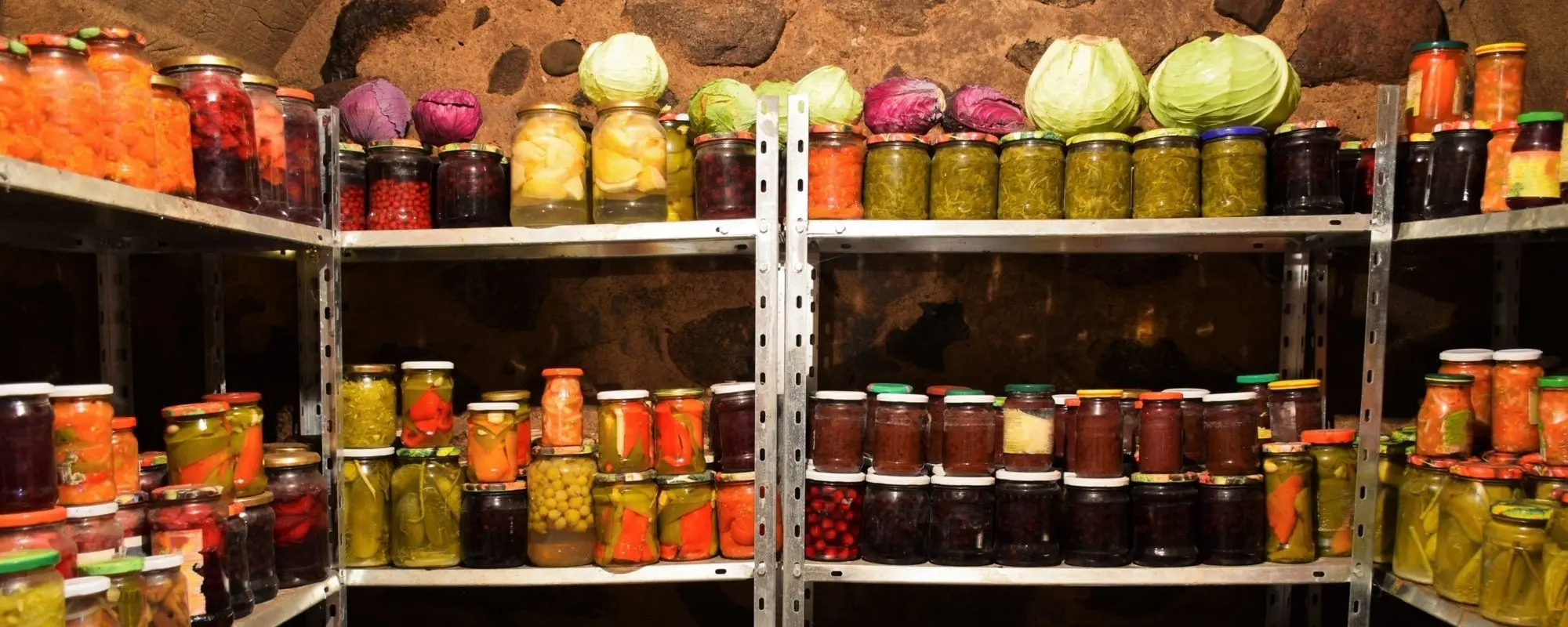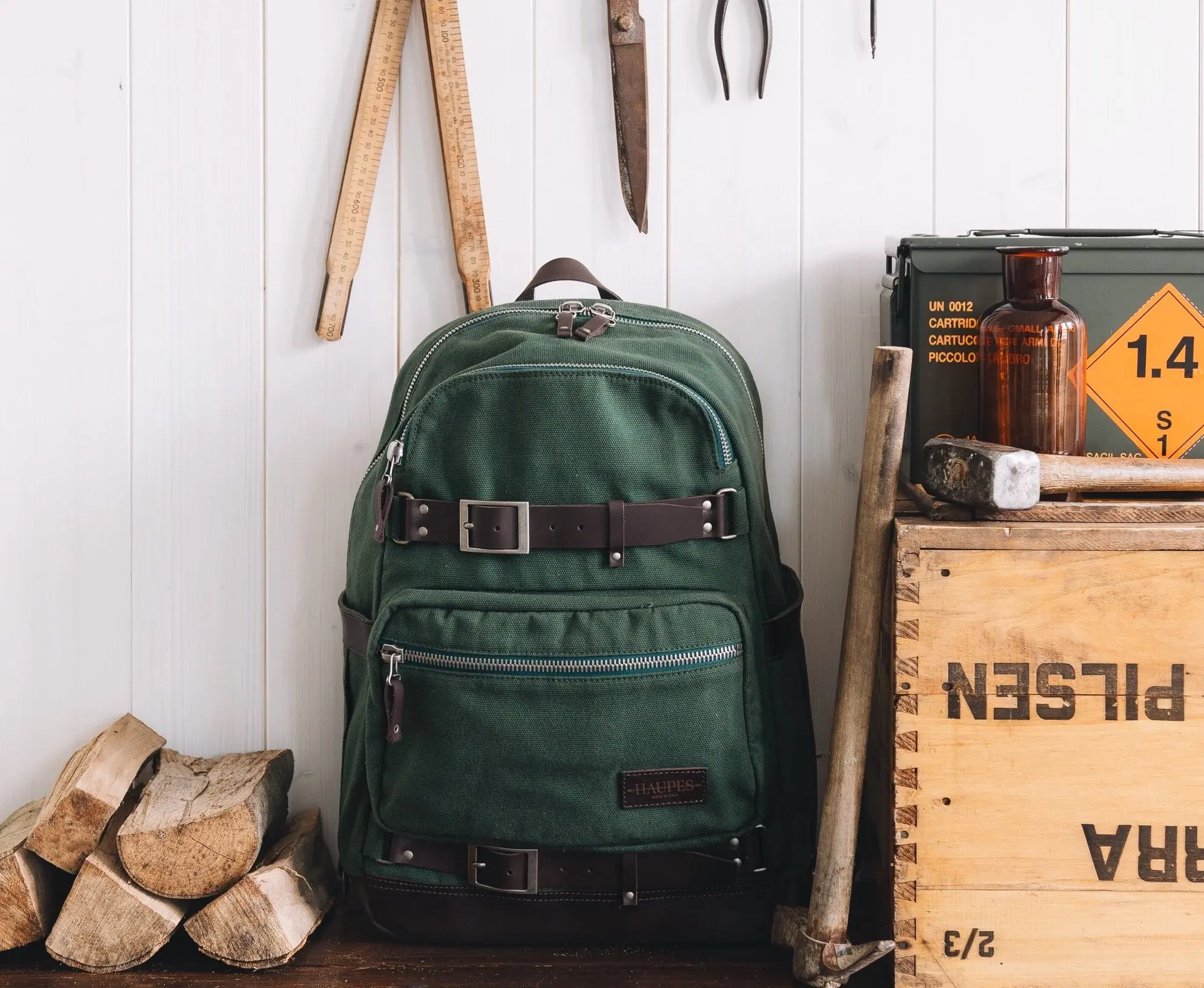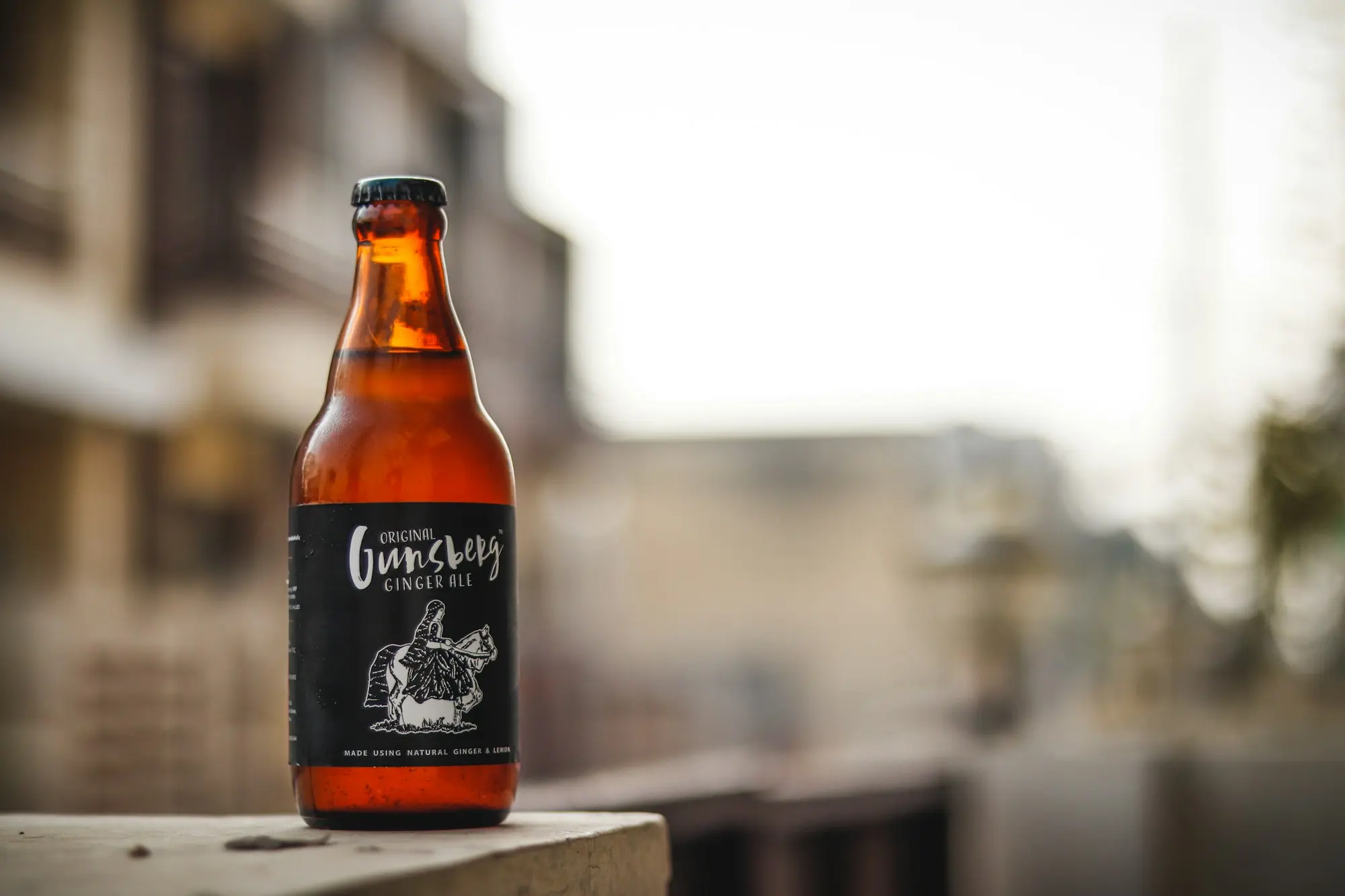Smarter Pantries. Less Waste. More Good.
Welcome to the Smantry Blog — your go-to hub for tips, inspiration, and insights on reducing food waste and making the most of what’s already in your kitchen. Whether you're looking for creative ways to use up ingredients, pantry organization hacks, or guides on sustainable grocery shopping, we’ve got you covered.
Our mission is simple: help you stay organized, save money, and waste less — one pantry at a time. From real-life stories to expert advice, we’re here to support your journey toward a smarter, more sustainable kitchen.
Let’s rethink what we eat, how we store it, and how we can all do a little better, every day.
New laws on food waste in Spain
Spain has recently passed a groundbreaking law to combat food waste. This law requires all actors in the food chain, from producers to retailers, to implement specific plans to prevent food loss.
Key provisions of the law:
Obligation to donate surplus food: Supermarkets with a floor space of more than 1,300 square meters are now required to form partnerships with non-profit organizations to donate surplus food that is still fit for consumption. These donations are exempt from value-added tax.
Offer of packaging for leftover food: Restaurants and bars are required to provide their guests with free, reusable or recyclable packaging so that they can take home uneaten food. The aim is to raise consumer awareness of food waste and encourage them to take leftovers with them.
Promotion of the sale of products with approaching expiration dates: Retailers should offer products that are nearing their expiration date or have aesthetic defects at reduced prices to encourage their sale and reduce waste.
Hierarchy of priorities for dealing with surplus food: The law establishes an order for handling surplus food. Priority is given to human consumption through donations. If this is not possible, the food should be used for the production of processed products. The last options include using it as animal feed or for energy generation.
Sanctions for violations:
Companies that violate the provisions of the law can expect fines ranging from 2,000 to 500,000 euros.
Critique and Outlook:
While the law is considered an important step in the fight against food waste in Europe, there is also criticism. Some voices argue that the strict framework of sanctions could disproportionately burden companies and that the law does not sufficiently address the role of consumers, who are responsible for a significant portion of food waste.
Nevertheless, the law is seen as a significant advancement in reducing food waste and promoting a more sustainable awareness in society.
Join in and reduce food waste! 🌱📲
Spain's new law demonstrates: Sustainability starts in the pantry! With the Speisekammer App you can keep track of your groceries, plan meals efficiently, and avoid unnecessary waste.
👉 Download the app now and join the movement for less waste and more conscious consumption! 💚 Try it now!
Get the most out of your Smantry App: Activate these premium features!
🖼️ Private photos for your articles
Make your inventory management visual! With the feature "Upload Your Own Images" you can add a photo to each item – for example, of the packaging, the jar, or the portion in the freezer. This is especially helpful if you share with others in a community or if you want to visually remember your supplies better.
Activation: Open app → Account (last tab in the mobile app) → Settings → "Activate Personal Pictures"
🔍 Target nutritional information
The app automatically displays calorie and nutritional information – super convenient when you're shopping or eating mindfully. Don't need this info right now or want a cleaner view? You can also simply hide the display!
Control:Profile → Account Settings → Enable “Hide Nutritional Information”, to hide it.
💶 Prices & Expenses at a Glance
If you want to know how much you spend on which item or how much money is lying dormant in your pantry, the Price Entry feature can help you. With it, you can plan your shopping even better and even track your budget.
Activation: Open app → Account (last tab in the mobile app) → Settings → “Enable price input”
💡 Prepper Mode: Even More Control
The Prepper Mode has been introduced for those who really want to keep track of everything – including minimum quantities, emergency supplies, and individual notes for serious situations. It's also useful if you just want to make sure you never run out of anything important.
Activation: Open app → Account (last tab in the mobile app) → Settings → “Show Prepper Information”
Here's how you can find your account settings
In the mobile app you can find the settings easily in the last tab on the far right (Account). In the web app click on Account → "Settings".
All mentioned features are part of the Premium-Version. If you don't have a premium license yet, feel free to check in the app or on app.speisekammer.app/upgrade – there's also a family license available!
✨ Conclusion: You have more options than you think. Activate the hidden premium features now and get the most out of your Smantry app. Because smart inventory management starts with the right tools.
If you have any questions about activation, feel free to contact support or check out our Help Center. And if you have feature requests – we always welcome your feedback!
🌍 Small ideas – big impact: These companies help you save food in everyday life
🍏 Foodsi (Poland)
This mobile app connects users with restaurants, bakeries and cafés offering surplus food at reduced prices—especially valuable in Polish cities like Warsaw or Kraków.
🛍️ OLIO – Share Surplus Food with Neighbors
OLIO connects neighbors and local businesses to share surplus food instead of throwing it away. Users can offer or request free food via the app — reducing waste and building community.
🍌 Imperfect Foods – Selling "Ugly" but Edible Food
This U.S.-based grocery delivery service rescues "imperfect" produce and surplus goods that major supermarkets reject due to appearance or overstocking — and delivers them directly to your door.
🔗 https://www.imperfectfoods.com
📦 Dispatch Goods – Reusable Packaging for Takeout
Dispatch Goods partners with restaurants to replace single-use containers with reusable packaging. This reduces packaging waste — and their system tracks and collects the containers for reuse.
🔗 https://www.dispatchgoods.com
🥬 Fresh.Land – Farm-to-Consumer to Prevent Waste (DK)
Fresh.Land shortens the supply chain by connecting consumers directly with farmers. This means fresher produce, longer shelf life, and fewer losses due to long storage or transport.
🧊 ColdHubs – Solar-Powered Cold Storage in Nigeria
ColdHubs installs solar-powered cold rooms for small farmers and markets to store perishable foods. This innovation significantly extends shelf life and reduces spoilage in hot climates.
🧃 Winnow – AI to Track Food Waste in Commercial Kitchens
Winnow’s smart scales and AI help restaurants and hotels measure and reduce food waste. By showing how much food is wasted and why, kitchens can adapt their behavior.
🔗 https://www.winnowsolutions.com
Why this matters for you
When you use the Smantry app, you can track and manage rescued food items in your pantry – whether they came from Foodsi, Karma, or another initiative. We’re building integrations to log these products, set reminders, and reduce waste in your household.
Know any other businesses doing this well?
We’d love to hear about them! Email your favourites to kira@mantry.com or write us in the chat or social media. Your tip might inspire others and be featured next. 🌿
Order with method: The 5S principle – Minimalism for your pantry organization
What is the 5S system?
The 5S principle originally comes from Japan and was used in manufacturing to organize workplaces efficiently and cleanly. The five 'S' stand for:
Seiri (Sort) – Eliminate all unnecessary items.
Seiton (Systematize) – Everything should have a designated place.
Seiso (Cleaning) – Clean regularly.
Seiketsu (Standardize) – Turn orderliness into a habit.
Shitsuke (Self-discipline) – Persist and improve.
Why is this perfect for your pantry management? Because it helps you keep track, reduce food waste and shop more efficiently.
How the 5S principle works at home
🔍 1. Sorting: What do you really need?
Go through your supplies and get rid of anything that has expired or that you have been ignoring for months. This is where the Speisekammer App comes into play: It shows you at a glance what should be used up soon.
🗃 2. Organize: A place for everything
Define categories: canned goods, pasta, breakfast, baking ingredients, etc. Label drawers or boxes – or use the digital storage locations in the app, to maintain order both virtually and physically.
✨ 3. Cleanliness: Hygiene is of utmost importance
If you've already taken everything out – seize the moment and clean the shelves or boxes. Clean storage containers not only look good, but also protect against pests.
🧩 4. Standardize: Develop routines
Once you've tidied up – what's next? To prevent it from descending into chaos again, develop small routines: e.g., a weekly check in the app to see if anything needs to be repurchased or is about to expire.
⏳ 5. Keep it up!
Order is not a one-time action. But with small, regular tasks and the support of your digital assistant – the Speisekammer App – everything stays in flow.
💡 Conclusion: 5S = Efficiency + Sustainability
The 5S principle may sound technical at first – but in reality, it's a surprisingly simple and effective organizational system for everyday life. It helps you to handle food more consciously, save money, and regain control.
And the best part? You don't have to do everything on your own. The Pantry App assists you digitally – with individual storage locations, expiration warnings, and soon even recipe suggestions from your leftovers!
Try it now:
Organize your inventory for good.
📲 Test the Smantry App for free
Would you also like to read about other clever organizing systems or share your experiences? Write to us or comment on social media – we look forward to the exchange! 🌱
Ice cream from leftovers? Here's how to make homemade zero-waste ice cream! 🍦♻️
Even better: You can easily make your own ice cream using ingredients that might otherwise end up in the trash. Overripe bananas, leftover yogurt, or the last bit of almond milk – all of these are perfect for whipping up a delicious and sustainable ice cream in no time.
Why homemade ice cream?
You know what's inside. No additives, no artificial flavors.
You save food. Many leftovers are perfect for freezing.
You save money.Buying ice cream is a thing of the past – your freezer is now the ice cream parlor.
3 simple leftover recipe ideas for ice cream:
🍌 1. Banana Peanut Ice Cream
Ingredients:
- 2 very ripe bananas
- 2 tbsp peanut butter (or other nut leftovers)
- 1 shot of plant-based milk
Preparation:
Slice bananas, freeze them. Then blend with the remaining ingredients – and your creamy Nicecream is ready!
🍓 2. Yogurt Berry Ice Cream
Ingredients:
- 1 cup of plain yogurt
- Leftover frozen berries or fresh berries that have become soft
- 1 tsp honey or syrup
Preparation:
Mix everything and either eat immediately or freeze in ice molds.
☕ 3rd Coffee-Chocolate Slush
Ingredients:
- Leftover coffee from the morning
- 1 tsp cocoa powder
- A piece of overripe banana or some agave syrup
- Ice cubes
Preparation:
Crush all ingredients in a blender – a caffeinated summer dream!
Even more leftovers? No problem!
With Smantry you can see at a glance which ingredients you have at home – perfect for creating your own ice cream. This way, your leftovers can become little summer highlights.
In conclusion:
Leftover utilization has never been so tasty! 🍨
So: Open the freezer, scan the leftovers, and start mixing!
👉 Use the app now and waste nothing
♻️ For the love of your supplies – and ice cream.
Food waste in international comparison – Who does what?
🇫🇷 France – Legally Against Waste
France is considered a pioneer in the fight against food waste. Since 2016, supermarkets have been prohibited from throwing away edible food. Instead, they must donate or repurpose it. Schools and universities are increasingly focusing on educational programs for sustainable nutrition. As a result, France is now among the countries with the lowest proportion of wasted food in Europe.
🇰🇷 South Korea – Smart Waste Fees
In South Korea, households pay for their food waste by weight – through RFID chips in garbage bins or special garbage bags with barcodes. This financial incentive has led to South Korea now recycling 95% of its organic waste. The system is combined with extensive educational efforts and the promotion of biogas and composting facilities.
🇩🇰 Denmark – The movement comes from below
Denmark relies on the power of the community. Initiatives such as "Stop Spild Af Mad" (Stop Food Waste) have sparked societal debates. Moreover, supermarkets like Wefood exclusively offer food products past their best before date – and at low prices. The acceptance among the population is high, and schools are actively incorporating the topic as well.
🇯🇵 Japan – Tradition Meets Technology
In Japan, food waste is also culturally associated with a strong sense of shame – this helps. Additionally, there is a focus on innovation: companies use AI for better inventory planning or apps that indicate when food should be consumed in the household. Bento shops also use data to precisely adjust their offerings to the daily demand.
🇩🇪 Germany – Between Movement and Potential
Germany is making progress: Initiatives such as Too Good To Go, Foodsharing or apps like the Speisekammer App / Smantry help to reduce waste in everyday life. Legally, however, it is not as advanced as France – although the pressure is increasing. 40% of the wasted food occurs in private households – this shows how important individual solutions are.
🌍 What we can learn from it
Whether through smart technology, legal requirements, or social movements: the fight against food waste needs many perspectives – and all are important. The good news: every single step counts.
With the Speisekammer App / Smantry you can start right at home – with smart pantry management, reminders for expiring food, and clever shopping planning.
👉 Discover the app now and make your contribution: smantry.com
More power to the app: Our development team is growing! 🚀
What does that mean to you?
🛠 Faster Bug Fixes: When something goes wrong, we are now even quicker to respond.
✨ New Features Sooner: The ideas that are already on our wish list (yes, we really read everything!), we can now implement much more swiftly.
📱 Smoother App Experience: A larger team means more focus on performance and usability – so you can use the app stress-free in your daily life.
Why this is a milestone for us
As a small, dedicated team, we have been working on the Speisekammer App with a lot of passion from the very beginning. But with your growing support and the extensive feedback, it has become clear: We need more hands on the code to meet the expectations – and that's exactly what's happening now.
Our new developers not only bring technical know-how, but also share our enthusiasm for sustainability, smart household management, and modern tools. 💡
And what comes next?
In the coming months you can look forward to:
- faster app updates
- new smart features for inventory management
- more stability & fewer sources of error
to be happy.
Thank you for being part of this journey.
With your feedback, your usage, and your ideas, you make this development possible. 💚
P.S. Do you have any feature requests or feedback?
Then don't hesitate to share it – preferably right here https://speisekammer.app/erweiterungen/ or via support chat.
→ Open the app now and notice how it runs faster!
Spring-inspired leftover recipes – Make the most of what you have! 🌱
With spring comes the desire for lightness: fresh greens, crisp flavors, and less heavy food. But what to do with all the leftovers in the pantry or fridge that don't quite fit into spring cuisine? It's simple: get creative!
The Smantry App not only helps you keep track of your supplies – it also inspires you to make the most of what you already have. And spring is the perfect time for clever use of leftovers!
1. Pasta Primavera – Spring noodles from the pantry
Ingredient ideas (variable depending on leftovers):
- 200–250 g Pasta (e.g., Penne, Fusilli)
- ½ Broccoli
- 1 Carrot
- 1 handful of frozen peas
- 1 clove of garlic
- 2 tbsp olive oil
- Fresh or dried herbs
- Lemon juice
- Salt & Pepper
- Optional: Cream cheese or grated Parmesan
Preparation:
Cut the vegetables into bite-sized pieces and blanch briefly in salted water. Cook the pasta according to the package instructions. Heat olive oil in a large pan, sauté garlic briefly, then add the vegetables. Mix with the pasta, season with lemon juice and herbs. If desired, stir in a spoonful of cream cheese or Parmesan – and it's ready!
2. Spring-like Frittata – Deluxe Egg Rescue
Ingredients:
- 4–6 eggs
- 50 g grated cheese
- Vegetable leftovers: bell peppers, mushrooms, spinach, zucchini, etc.
- 1 small onion
- Fresh herbs (e.g., chives or wild garlic)
- Salt, Pepper, Oil
Preparation:
Preheat the oven to 180 °C. Chop the vegetables finely, sauté in a pan with some oil. Whisk the eggs, mix with salt, pepper, and cheese, and pour over the vegetables. Let it set briefly, then place the pan (if ovenproof!) in the oven or transfer to a baking dish. Bake for about 10–15 minutes.
3. Warm Spring Potato Salad
Ingredients:
- Cooked potatoes from the day before (approx. 500 g)
- 2 spring onions
- 1 tsp mustard
- 1 tsp honey
- 2 tbsp white wine vinegar
- 3 tbsp oil (e.g., canola or sunflower oil)
- Salt, Pepper
- Optional: fresh herbs such as parsley
Preparation:
Slice the potatoes. Cut the spring onions into fine rings. For the vinaigrette: mix mustard, honey, vinegar, oil, salt, and pepper. Fry the potatoes in a pan with some oil until they are slightly crispy. Remove from the heat, mix with the vinaigrette, and sprinkle with herbs.
4. Sweet oven-baked pancake with apple or banana
Ingredients:
- 100 g flour
- 1 tsp baking powder
- 2 eggs
- 150 ml milk (or plant-based milk)
- 1 pinch of salt
- 1 apple or banana
- Some butter for the pan
- Topping: cinnamon, sugar, honey or maple syrup
Preparation:
Preheat the oven to 180 °C. Mix flour, baking powder, eggs, milk, and salt into a smooth batter. Slice the fruit. Grease a small casserole dish or pan, place the fruit inside, and pour the batter over it. Bake for about 20–25 minutes. If desired, sprinkle with cinnamon & sugar or serve with honey.
5. Spring Panzanella – Salad with day-old bread
Ingredients:
- 2–3 slices of stale bread
- 1–2 Tomatoes
- 1 small red onion
- 1 handful of radishes
- Some cucumber
- Fresh herbs (e.g., basil)
- 3 tbsp olive oil
- 1 tbsp Balsamic vinegar
- Salt, Pepper
Preparation:
Cut the bread into cubes and toast in a pan without fat. Slice or dice the vegetables, combine with the bread cubes and herbs in a bowl. Whisk together oil, vinegar, salt, and pepper to make a dressing and pour over the salad. Let it marinate briefly.
🌼 Spring in the Kitchen – with the Smantry App
Spring is not just for cleaning windows – but also for rummaging through your pantry! With the Smantry App you can keep track of your ingredients.
This is how the leftover kitchen becomes a creative comfort kitchen – completely without waste.
👉 Open the app, browse, cook – and enjoy.
Which combination have you tried? Share it with us on Instagram! 💚
The Smantry App: Which license suits you?
The Smantry App offers various licenses so that you can find the exact solution that fits your household and your needs. Whether alone, with your family, or in a larger community – here you will learn about the options available and what you should pay attention to.
Free to use – The basic version
Want to try it out first? No problem! The basic version of the Smantry App is free and already offers you some important features for managing your inventory. However, there are limitations in this version, such as the number of manageable items and synchronization with other users.
The Premium License – More Features for Better Overview
With the Premium License you get all the advanced features of the app, including: ✅ Unlimited inventory management ✅ Automatic synchronization of your inventory across multiple devices ✅ Advanced statistics and reminders ✅ custom product images
The premium license is ideal if you want full control over your inventory and don't want any restrictions. It is available as a monthly or annual subscription, or as a one-time payment for lifetime access.
The family license – Sharing with your loved ones
Do you want to organize your pantry with your family or housemates? Then the Family license is perfect for you! It allows you to share the premium features with multiple people in your household.
Here's how to get the family license:
Purchase a premium license: Someone from your household purchases the premium license.
Invite family members: Write to our support and we will add the additional members. Soon users should be able to do it themselves, but for now, the support team handles it.
Start shared usage: All members now have access to the same inventory lists and can manage groceries together.
Community in the household vs. membership of a license – What's the difference?
- Household community: This refers to the feature that allows you to share supplies with people in your household. You can shop together, keep lists, and update inventories.
- Membership of a license: This specifically concerns the family license. If you join a premium license, you will receive the same premium benefits as the license holder.
Where can you complete the licenses?
You can purchase the licenses directly in the WebApp during the ordering process or through the app stores. Please note that discounts or special offers are often only available through the WebApp.
Which license suits you?
🔹 Individual? -> The Premium license is worth it for you!
🔹 Family or shared flat? -> Get the Family license and manage your supplies together!
🔹 Not sure? -> Start with the free version and test the app!
📲 Try it now and find the perfect license for you!
The best apps that perfectly complement the Pantry App
1. Too Good To Go – Saving food made easy
With Too Good To Go, you can buy leftover food from restaurants, bakeries, and supermarkets at a discounted price. Perfect for spontaneously stocking up your supplies while also preventing food waste. You can combine the app excellently with your pantry: check what you have and specifically complement it with rescued food.
2. Kitchen Stories – Inspiration for your pantry
Do you have food in your pantry but don't know what to cook with it? Kitchen Stories provides you with simple recipes featuring step-by-step instructions and even video tutorials. With the Pantry App, you can track what you have, and with Kitchen Stories, you'll find the perfect recipe idea to go with it!
Photo by Jason Briscoe / Unsplash
3. Plant Jammer – Recipes with what you have
Plant Jammer is a creative app that suggests recipes based on the ingredients you already have at home. It's a perfect match for the Pantry App: check your inventory list and let Plant Jammer inspire you to create magic from it – all without any extra shopping!
4. EcoChallenge – Playfully improving sustainability
Sustainability doesn't just start in the kitchen, but also in other areas of life. EcoChallenge helps you make your daily routine more sustainable step by step – from zero-waste tips to CO₂ saving measures. Combined with the Pantry App, you can not only prevent food waste but also shape your overall consumption behavior more consciously.
The Pantry App – The centerpiece of your smart kitchen organization
All these apps help you to operate more efficiently and sustainably – but the central foundation remains the Pantry App! It ensures that you always have an overview of your supplies and handle food more consciously. Together with the mentioned apps, your everyday life will not only be easier but also more sustainable.
HNGRY Alternatives & Successors: How to smartly manage your supplies now
Why a pantry app is so important
Food waste is a major issue: Every year, countless tons of still edible products end up in the trash – often because they were forgotten in the back of a cupboard. A good app can help keep track, monitor expiration dates, and plan meals sensibly.
HNGRY bot exactly that – but there are alternatives!
The best HNGRY alternative: The Pantry App
If you have used HNGRY and are now looking for a functional successor, then you should check out the Speisekammer App. It offers all the benefits of HNGRY – and even more.
✔ Simple inventory management – Keep track of what you have at home
✔ Expiration warnings – No more expired food
✔ Automatic shopping list – Based on your inventory
✔ Shared use – Perfect for families and flatshares
Why is the Speisekammer App the best successor to HNGRY?
While many other pantry apps are either complicated to use or offer only limited features, the Speisekammer App is particularly user-friendly and optimized for everyday use.
📱 Available for iOS & Android
🌍 Cloud synchronization across all devices
🛒 Create a shopping list directly from missing ingredients
And the best part: You can get started right away and reduce your food waste to a minimum!
In conclusion: The future of inventory management is smart
Even though HNGRY will no longer be available after March 31, 2025 – there is an even better solution. The Speisekammer App is the ideal HNGRY alternative and successor, to manage your supplies efficiently, save money, and live more sustainably.
Try it yourself and take your inventory planning to the next level!
👉 Try it now: Discover the Pantry App
Have fun with smart household management!
Your Pantry Team 🌱
More sustainable gadgets for your everyday life – smart helpers for 2025
1. Solar Power Banks – Energy on the go, without the need for an outlet ☀🔋
Whether traveling or just for everyday use: A Solar-Powerbank charges with sunlight and provides your smartphone or tablet with green energy. Models with fast charging capability and multiple ports are particularly convenient, allowing you to power several devices at once.
💡 Tip: Pay attention to a high battery capacity (at least 10,000 mAh) and weather-resistant materials!
2. Smart Water-Saving Showerheads – Shower with up to 50% less water 🚿💧
Did you know that a conventional showerhead can use up to 15 liters of water per minute? Smart water-saving heads drastically reduce this consumption without you having to sacrifice comfort. Some models even analyze your water usage and help you save money and resources in the long run.
💡 Tip: Combine the gadget with a shower timer – this turns water saving into a fun goal!
3. Reusable Cling Film – Goodbye Plastic Waste! 🍃
Plastic wrap is a thing of the past! With beeswax wraps or innovative silicone stretch lids, you can keep your food just as fresh without creating unnecessary waste. They are durable, washable, and can replace disposable products for months or even years.
💡 Tip: You can even easily make beeswax wraps yourself – with cotton fabric and natural beeswax!
4. Automatic Composters – Zero Waste for the Kitchen 🍎🌿
Food scraps often end up in the trash, even though they could still provide valuable nutrients! Smart kitchen composters turn your organic waste into nutrient-rich soil – and in just a few hours. This not only reduces waste but also saves money on plant fertilizer in the long run.
💡 Tip: Some models filter odors so effectively that they can be used without issue even in small apartments.
5. The Pantry App – Your digital assistant for sustainable household management 📱✨
Of course, our favorite tool is a must-have! With the Speisekammer App, you can manage your supplies, plan meals efficiently, and reduce food waste easily. Combined with sustainable gadgets, you can make your household even smarter and more eco-friendly.
💡 Tip: Use the reminder feature to consume food in time and reduce waste!
Conclusion: Small helpers, big impact
Whether in the kitchen, bathroom, or on the go – sustainable gadgets are no longer expensive or complicated. With the right tools, you can save water, electricity, plastic, and even money without sacrificing comfort.
What sustainable helpers are you already using? Let us know! 👇
👉 Find more tips & tricks here: Discover now
Have fun with sustainable exploration!
Your Pantry Team 🌱
Current Food Trends 2025: How the Pantry App Supports You
Hey Foodies and Kitchen Heroes!
The year 2025 brings a breath of fresh air to our kitchens. New food trends are taking over the plates, and the Speisekammer App is your perfect companion to stay on top of the times. Let's take a look at the hottest trends and how our app helps you implement them.
1. Plant Perfection
Plant-based nutrition is no longer a niche topic. More and more people are opting for creative, vegan dishes. The Speisekammer App supports you by helping you organize your plant-based pantry.
2. Unusual Ingredients and Toppings
2025 will be adventurous! Whether it's algae caviar or lavender in food and drinks – new taste experiences are waiting to be discovered. With the Speisekammer App, you can keep track of your exotic ingredients.
3. Personalized Nutrition
Maßgeschneiderte Ernährungspläne sind der Renner. Die Speisekammer App ermöglicht es dir, deine Vorräte entsprechend deiner individuellen Bedürfnisse zu verwalten.
Photo by Somi Jaiswal / Unsplash
4. Sustainability and local products
Regionality and sustainability are highly valued. With the Pantry App, you can record local products and ensure that nothing is wasted by being reminded to consume them in time.
5. Technological Integration
Digitization does not stop at the kitchen. The Pantry App offers you modern features such as barcode scanning and automatic inventory management to make your daily kitchen routine easier.
Conclusion
The food trends of 2025 are diverse and exciting. With the Speisekammer App, you are well-equipped to implement these trends in your kitchen while always keeping track. Get inspired and discover new culinary horizons!
Happy Cooking!
Sources:
The Doomsday Clock and the significance of sustainable living – Why it's now even more important to live consciously
What is the Doomsday Clock?
The Doomsday Clock is a symbolic clock that represents the proximity to global catastrophe. It was initiated in 1947 and indicates how close the world is to its greatest threat – be it through nuclear wars, climate change, or other existential dangers. The closer the clock moves to midnight, the greater the threat we face.
This year, experts have set the clock to 89 seconds before midnight – an alarming indication of how urgently we need to act to combat global crises such as climate change and environmental destruction.
Sustainability starts with all of us – in small and big ways
What does this mean for us as individuals? Quite simply: We can all do something to save the world. It's not just about big political decisions and actions at a global level, but also about the decisions we make every day within our own four walls.
Here's where the Speisekammer App comes into play. It helps us consume more consciously and live more sustainably. By using our supplies more efficiently, we can optimize our food consumption, prevent food waste, and thus make a small, but important contribution to combating climate change.
Photo by Tobias Rademacher / Unsplash
How can the Pantry App help?
- Avoiding food waste: The app reminds you of upcoming expiration dates and helps you make the most of the products in your pantry before they expire. This way, you avoid unnecessary waste.
- Efficient Shopping: The app helps you plan your purchases better and only buy what you really need. Fewer impulse buys mean less waste of resources.
Small changes, big impact
It's the small, daily decisions that can have a big impact when added up. Looking at the Doomsday Clock may be unsettling, but it reminds us that it's not too late to make a change – each one of us can contribute.
The Pantry App is your partner on this journey: It helps you lead a sustainable lifestyle that benefits both your wallet and the environment.
In conclusion: It's time to act now
The world is facing many challenges, but we can all contribute to turning back the clock – at least a little bit. By shopping consciously, avoiding food waste, and living more sustainably, we can set the course for a better future.
Join in and become part of the solution! Download the Speisekammer App and start managing your supplies smarter today – for you and the environment.
Together we can make a difference. 🌍💚
CTA: Start using the Pantry App now and live sustainably – For the future of our Earth!
🛒 E-Commerce and Kitchen: Digital Tools for Efficiency 🚀📱
🥗 Smart tools for kitchen and e-commerce optimize processes, save resources, and increase conversions. Discover digital solutions! 🔧💻
Digital tools for kitchen and e-commerce: More efficiency, less waste
Efficiency and sustainability play a central role today – whether in the organization of the household or in the successful operation of an online store. Smart digital tools can save not only time and resources in both areas, but also minimize losses.
Innovative apps like Speisekammer.App help to reduce food waste and ensure satisfied customers. This article demonstrates how digital solutions can simplify processes in kitchens and retail while enabling maximum efficiency.
Summary
- Digital tools like the Speisekammer.App help manage food supplies efficiently and reduce waste.
- In e-commerce, smart solutions enable a better conversion rate through optimized checkout processes.
- Data analysis in both areas supports more precise decisions and increases efficiency.
- Personalized communication enhances both the user experience in online stores and planning in the kitchen.
- Mobile optimization is equally important for apps and online stores to provide users with easy access.
- Transparency in information and processes creates trust and reduces frustration among users.
- Automated reminders and features such as shopping lists save time and promote sustainable consumption.
- Shopping cart abandonment in e-commerce can be significantly reduced through targeted retargeting measures.
- Efficiency is a common denominator that connects kitchens and e-commerce, enabling long-term success.
- The integration of smart tools in households and commerce will continue to increase in the future and will simplify everyday life even more.
The challenges: food waste and shopping cart abandonment
Increasing efficiency is not an end in itself, but a response to central challenges that affect both everyday life and e-commerce. Food waste burdens not only households but also the environment significantly.
In online commerce, on the other hand, shopping cart abandonment leads to enormous revenue losses. A look at these challenges highlights why digital solutions are so valuable.
Overview of food waste and its impacts
Every year, millions of tons of food are wasted worldwide, often due to poor organization or unconscious mispurchases. Consumers buy more than is actually needed, or overlook expiration dates in their supplies.
This unnecessary waste not only burdens the wallet but also leads to a significant squandering of resources such as water and energy, which were used in the production of the food.
Food waste also has far-reaching ecological consequences. CO₂ emissions, generated during production, transport, and disposal, contribute to climate change. Smarter inventory management, as enabled by the Speisekammer.App, can significantly reduce such wastage.
Digital tools create clarity and promote a more conscious approach to food.
The problem of shopping cart abandonment in e-commerce
Shopping cart abandonment is one of the biggest challenges for online stores. Studies show that a majority of users abandon the purchase process prematurely – often out of frustration with confusing checkout processes or a lack of payment options. Each abandoned purchase represents not just lost revenue, but also a lost potential customer.
It is particularly frustrating when customers, after a comprehensive product selection, do not proceed with the final step. Solutions like those from Uptain address this very issue and offer ways to automate customer-oriented re-engagement measures. Personalized communication and incentives build trust and sustainably increase conversion.
Efficiency is crucial in both areas
Efficiency means using existing resources optimally and avoiding losses. In the kitchen, this not only saves money but also reduces the ecological footprint.
Smart inventory management systems help to keep track and only purchase what is really needed. This creates not only order but also sustainability.
In e-commerce, efficiency directly affects the competitiveness of a store. Customers expect a fast and intuitive purchasing process, and every unnecessary click can lead to abandonment.
Digital solutions offer enormous potential here to simplify purchasing processes and retain customers in the long term. Through targeted optimization, both companies and consumers benefit equally.
Increasing Efficiency in Online Commerce: Strategies for Higher Conversions
Efficiency in online commerce determines whether a visitor becomes a buyer. Every click, loading time, and every detail in the ordering process can make a difference. Strategies for increasing the conversion rate focus on simplifying purchasing processes and better understanding customer needs.
Here are key approaches that can sustainably optimize online stores:
Key strategies for increased efficiency and conversions
- Optimization of the Checkout Process: A clear and intuitive checkout is crucial. Reduce the number of steps, offer various payment methods, and avoid unnecessary mandatory fields.
- Personalized Address: Use data on user behavior to provide individual recommendations or tailored offers. This significantly increases the likelihood of a purchase.
- Mobile User-Friendliness: With the increasing use of smartphones, online stores must be optimized for mobile devices. Fast loading times and a responsive design are essential.
- Clear product information: Customers want to see all relevant information at a glance before making a purchase. High-quality product images, detailed descriptions, and reviews build trust.
Customer retention measures
- Reactivating abandoned carts: Automated emails or targeted discounts can encourage customers to complete a purchase they have abandoned.
- Reward systems and loyalty programs: Exclusive benefits for returning customers enhance engagement and create incentives for additional purchases.
- Transparent customer service: An easily accessible support hotline or chat feature conveys trust and security, especially for major purchasing decisions.
An efficient online store is not only technically optimized but also tailored to the needs of its target audience. The combination of clear processes, personalized communication, and user-friendly design makes the difference and ensures long-term success.
An efficient online store requires not only well-thought-out processes but also the selection of the right platform. Particularly with solutions like Shopify, costs play a crucial role.
Shopify costs include not only the basic fees but also additional expenses for plugins and optimization tools. A detailed overview of these investments helps to better plan the profitability of a store and to create long-term success.
Commonalities and synergies between cuisine and e-commerce
Efficiency is the common thread between modern approaches in kitchen organization and online commerce. Both areas benefit from clear structures, optimized processes, and data-driven decisions. A look at their similarities reveals how to leverage synergies to make processes even more successful.
Parallels in optimizing processes and user experiences
Clearly structured processes are important to maintain an overview both in the kitchen and in e-commerce. Pantry apps help users to manage their supplies efficiently, while online stores constantly adjust their checkout processes to complete purchases. Both approaches rely on simplicity and user-friendliness to make everyday life easier and minimize losses.
User experiences are at the forefront. Whether it's intuitive app navigation or a smooth ordering process – customers expect clear structures and quick results.
Both in the kitchen and in digital commerce, it is evident: The simpler the operation, the greater the satisfaction and the higher the long-term success.
Photo by Towfiqu barbhuiya / Unsplash
Smart data analysis promotes efficiency in both areas
Data is the key to optimization. Apps like Pantry.App analyze inventory data and remind you of expiring food items, while e-commerce platforms use customer data to better understand purchasing behavior. Smart analytics enable data-driven decision-making and process adjustments.
In e-commerce, conversion rates and shopping cart abandonment are analyzed to initiate targeted measures for improvement. In the kitchen, such analyses provide a basis for more conscious consumption. Whether shopping lists based on consumption or recommendations for repurchases – data-driven decisions save resources and increase efficiency.
Future Perspective: Integration of Smart Tools in Household and Commerce
The interconnectivity between households and commerce will continue to increase. Smart apps could in the future interact directly with online stores to trigger automated orders based on consumption data. Kitchen and e-commerce are merging and creating seamless transitions between planning, shopping, and usage.
The use of AI also offers exciting prospects. Personalized suggestions for recipes or product recommendations could be tailored to the user and thus meet individual needs even better. This integration creates an efficiency that fundamentally changes everyday life both at home and in digital commerce.
Conclusion
Efficiency is the key factor that leads to better results in both kitchen organization and e-commerce. Smart digital tools like the Speisekammer.App and targeted optimization strategies in online trading show how processes can be simplified, resources conserved, and losses reduced. Whether managing inventories or optimizing checkout processes – the focus on clear structures and user-friendliness makes the difference.
The parallels between both fields illustrate that intelligent solutions not only solve everyday problems but also enable more sustainable and successful actions. Data analysis and automation are crucial here to make precise decisions and meet the needs of users. This approach not only brings more order but also measurable added value – in the kitchen as well as in digital commerce.
Looking into the future, it is evident that the integration of smart technologies will continue to advance. The connection between households and e-commerce offers tremendous potential to make processes even more seamless. Digital tools lay the foundation for greater efficiency and sustainability, becoming indispensable companions for modern daily life.
Photo by Alberto Cognetti / Unsplash
FAQ
What are the benefits of combining kitchen and e-commerce through digital tools?
The integration of digital tools in the kitchen and in e-commerce creates more efficiency and user-friendliness. In the kitchen, apps like the Speisekammer.App help organize supplies and reduce food waste.
In e-commerce, smart solutions enable personalized user experiences and optimize purchasing processes. Together, they promote sustainability, save time and money, and ensure smoother management in both areas.
Can I use digital tools even without technical knowledge?
Yes, most digital tools such as the Pantry.App and e-commerce solutions are designed for intuitive use. The user interfaces are often clearly arranged, and many apps provide guides or support.
Even for beginners without technical knowledge, getting started is easy. The goal of the tools is to simplify everyday tasks without the need for complicated processes or training.
How can digital tools be customized individually?
Digital tools offer numerous customization options to meet the needs of different users. In the kitchen, for example, you can create categories for supplies or personalize shopping lists.
In e-commerce, customer data can be used for personalized product recommendations or individual discounts. This flexibility makes it possible to tailor the tools precisely to one's own daily routine or business operations.
What is the cost of using such digital tools?
The costs for digital tools vary depending on the provider and the range of functions. Many apps, such as the Speisekammer.App, are available for free but offer optional premium features for a fee.
E-commerce solutions depend on the size and requirements of the online store, often there are tiered prices. It's worth comparing the features and costs in advance to find the best value for money.
New Year's Resolutions 2025 – How to Implement Them with Psychological Savvy
1. Set smart goals (SMART method)
An objective like "I want to live healthier" is often too vague. The SMART method can help:
- Specific: Clearly articulate what you want to achieve.
- Measurable: Define how you will check your progress.
- Attractive: Find an emotional reason why the goal is important to you.
- Realistic: Start with small, achievable steps.
- Terminated: Set yourself a clear deadline.
Tip: Use the Pantry App to plan healthier meals and reduce food waste.
2. Understanding and leveraging motivation
According to psychology, there are two main sources of motivation:
- Intrinsic: You do something because it brings you joy.
- Extrinsic: You act in order to achieve a specific outcome.
Associate your resolutions with positive emotions: Instead of saying 'I need to waste less,' you could say, 'I'm looking forward to discovering new recipes from my supplies.'
Photo by Ian Schneider / Unsplash
3. Routines instead of Willpower
Motivation alone often doesn't last long. Successful people rely on routines. Schedule fixed times for activities that bring you closer to your goal.
Example:
- Plan your meals on Sundays with the Pantry App.
- Use the app to keep track of your inventory in the evening.
4. Accept mistakes as part of the process
Nobody is perfect, and setbacks are part of the process. Instead of giving up, reflect: What didn't work, and how can you adjust it?
5. Pantry App as a tool for your resolutions
Whether it's healthy eating, less waste, or a conscious lifestyle – the Pantry App supports you:
- Recipe ideas: Based on your supplies.
- Grocery Overview: Keep track of expiration dates.
- Sustainability: Use what you have and plan efficiently.
Photo by Moritz Knöringer / Unsplash
Make 2025 your year!
The new year is an opportunity to challenge yourself and achieve your goals. With clear objectives, a dose of self-reflection, and the right support like the Pantry App, you are well-prepared.
👉 Try the app now for free: Click here
Start 2025 with a clear head and a full pantry – for a sustainable and fulfilling year!
Sustainable through the winter – Tips for conscious enjoyment with pantry and Organic Force
Sustainability starts in the pantry
The first step towards a more conscious lifestyle is to look into your own pantry. With the Speisekammer App you can not only manage your groceries efficiently, but also discover sustainable recipes that will get you through the cold days.
Tip: Plan your meals around seasonal ingredients like pumpkin, cabbage, or root vegetables. This not only reduces your ecological footprint but also saves you money.
Fair Fashion for Cold Days
Those who want to live sustainably should also pay attention to quality and origin when it comes to clothing. With the Hemp-Nettle Sweater from Organic Force, you're not only wrapped up warm, but also supporting eco-friendly materials. Hemp and nettle are particularly resource-efficient and score with long-lasting properties – perfect for the cold season.
Wintry moments of pleasure
What would winter be without little treats? Here are a few sustainable ideas for your enjoyment:
- Roasted cashew nuts: A sweet snack that is guaranteed to delight in your pantry.
- Hemp mulled wine: A delicious alternative to the classic mulled wine, providing warmth from within with its unique flavor.
You can find both products in the exclusive Winterbundle from Organic Force – the perfect combination for cozy winter evenings.
Our recommendation: Sustainability made easy
The path to a more sustainable lifestyle begins with small steps. Whether you organize your pantry efficiently, consume consciously, or choose fair trade products – every step counts.
Photo by Alice Donovan Rouse / Unsplash
Discover the Winter Bundle!
For a thoroughly sustainable winter, we recommend the Winterbundle from Organic Force, which includes:
- a cozy hemp-nettle sweater,
- roasted cashew nuts,
- and a hemp mulled wine for special moments of pleasure.
👉 Learn more and order now: Click here for the Winter Bundle
Make your winter sustainable – with the right tools, recipes, and a conscious lifestyle. Together we make a difference!
Christmas market delights from the pantry: Homemade delicacies
1. Candied almonds
Crispy, sweet, and irresistible: Candied almonds are a classic at every Christmas market. All you need are almonds, sugar, water, and a bit of cinnamon. They caramelize in a pan within minutes, spreading that quintessential Christmas scent.
2. Homemade mulled wine
Transform a bottle of red wine from your stock into a delicious mulled wine. With sugar, orange peels, cloves, cinnamon, and a bit of star anise, the wine is warmed (not boiled!) and acquires its unique flavor. For a non-alcoholic version, you can use apple juice – just as tasty and festive!
3. Christmas Waffles
If you have flour, eggs, butter, and sugar in your pantry, nothing stands in the way of fluffy Christmas waffles. Refine the batter with cinnamon, vanilla, or speculoos spice to give it a special Christmas touch. Serve them with powdered sugar, hot applesauce, or whipped cream.
4. Gingerbread from the pantry
Do you have honey, flour, sugar, and spices like cinnamon, cloves, and ginger? Perfect! With a few additional ingredients like baking powder and milk, you can bake juicy gingerbread cookies. They are not only delicious but also a great gift idea.
Photo by Theo Crazzolara / Unsplash
5. Wintry Hot Chocolate
For cold winter evenings, hot chocolate is a must. Heat milk, add cocoa powder or chocolate and sugar, and enhance the drink with a hint of cinnamon or a pinch of chili powder for that special something. Topped with whipped cream and marshmallows, the hot chocolate becomes a highlight.
Tips for the Pantry
So that you are always ready for these Christmas treats, it's worth having the following ingredients in stock:
- Sugar and flour
- Almonds and other nuts
- Spices such as cinnamon, cloves, and vanilla
- Cocoa or chocolate
- Wine and apple juice
Conclusion
With a few simple ingredients and a little time, you can bring the magic of the Christmas market into your home. Whether sweet treats or warming drinks – your pantry provides the perfect foundation to celebrate the festive season enjoyably and sustainably.
Fancy more recipes from the pantry? With the Speisekammer App you always have an eye on your supplies. Download it now!
Simple hacks for using the Smantry app
Have you downloaded the Smantry app and want to get the most out of it? With a few simple hacks, you can organize your everyday life even better and avoid food waste in a smart way. Here we show you how to make the most of the app to save time and money!
Use the barcode scanner function
With the integrated barcode scanner, you can add your food to the pantry quickly and easily. Instead of entering the products manually, simply scan the barcode and the app will take care of the details. This not only saves time, but also provides a more accurate inventory overview.
Enter the best-before date directly when shopping
If you've been shopping, enter the best-before date (BBD) directly into the pantry app when you put things away. This way you can make sure that all dates are up to date and food is used up in good time.
Set reminders for expiry dates
Activate reminders for expiry dates to be reminded in good time before food goes bad. The app can notify you so that you can use up supplies in good time or use them creatively. This hack is especially handy for avoiding food waste and saving money!
Create a shopping list template
You can use the app to create shopping lists. If you buy certain basics like milk or bread over and over again, create a template that you can use again and again. This way you won't forget anything when shopping and avoid unnecessary impulse purchases.
Synchronize the app with your household
Share your pantry data with other household members so that everyone is always up to date. Whether you're a roommate or a family member, everyone stays informed and duplicate purchases are a thing of the past. We also offer the Premium Family License for up to 5 members. If you need help with the upgrade, please contact Support.
Use the shopping list as a checklist for events and occasions
Planning a cooking evening or a party? Create a checklist with the ingredients and products you need and make sure you have everything to hand. This way, you'll be stress-free and well prepared for every event and save on last-minute purchases.
Conclusion
With these simple hacks, you can use the pantry app even more efficiently and avoid food waste in your everyday life. Whether for everyday cooking, planning recipes or organizing shopping lists - the Smantry app offers many useful features that make your life easier and more sustainable.
If you are missing any other functions, we are always happy to receive your enhancement requests, which you can enter directly here:https://speisekammer.app/erweiterungen/
No account yet? Download the Smantry app and discover how easy it is to organize your supplies sustainably!
Outsmarting Inflation - Tips and Tricks for Smarter Shopping
Good preparation is everything
Good planning is key, even when it comes to your weekly shopping. Before you even dive into the hustle and bustle of shopping, you should create a meal plan or - if that's too much effort - at least roughly consider what you want to cook for the current week. A useful tool for this can be the various flyers from discount stores and supermarkets that regularly land in your mailbox. For example, if I see something on special offer that we like, I will probably incorporate it into the weekly meal plan. Good planning of shopping also has another advantage. Usually, it means that less food ends up in the bin. I recently read that a family of four can save around 1,000 euros a year with well-planned shopping.
Stock up on food supplies
Das Thema Lebensmittelvorrat behandeln wir ja immer wieder im Blog von Speisekammer.App. Ein gut geplanter Lebensmittelvorrat kann nicht nur für unerwartete Situationen eine sinnvolle Reserve sein, sondern dein Vorrat kann dir helfen, bares Geld zu sparen. Dafür musst du übrigens nicht gleich zum Prepper mutieren. Du kannst beispielsweise durch den strategischen Einkauf von länger haltbaren Lebensmitteln wie Nudeln in größeren Mengen von Mengenrabatten profitieren. Gleichzeitig gehst du damit Preissteigerungen erstmal aus dem Weg. Dein Vorrat muss auch nicht in den Tiefen irgendwelcher Schränke oder Kühltruhen verschwinden, um dann irgendwann als abgelaufene Lebensmittelleiche wieder aufzutauchen. Dafür gibt es zum einen die Speisekammer.App und zum anderen solltest du deinen Vorrat immer aktiv in dein „Tagesgeschäft“ mit einbeziehen. Neigt sich beispielsweise eine Packung Nudeln dem Ende zu, dann kaufst du einfach eine neue. Du solltest immer darauf achten, die Lebensmittel aus deinem Vorrat als Erstes zu verbrauchen, bei denen der Ablauf des MHD droht. Darüber informiert dich dann unsere App.
Essential: the shopping list and a full stomach
This has happened to me more than once, and you've probably experienced it too: I go shopping with a growling stomach and end up being the proud owner of many food items that I don't actually need. By now, I've gotten into the habit of eating at least a little something before each shopping trip if I'm not full. The second tool to prevent me from going completely overboard while shopping (since I am admittedly a sucker for packaging) is a shopping list.
By the way, supermarkets and discount stores also use every trick in the book to tempt you into buying more than you actually need, for example with shopping carts. So, whenever possible, grab a smaller shopping cart or go shopping with a basket. A larger shopping cart often leads to buying more because 'the cart still looks so empty'.
If you're looking for more affordable groceries, it's worth checking the lower shelves as well. Expensive brand products are often displayed at eye level so that you'll reach for them more quickly. By the way: more expensive doesn't necessarily mean better.
The thing about bulk packages
Even though we at Speisekammer.App are big fans of stockpiling and the like, unfortunately, bulk packages are not always the cheaper alternative. Comparing base prices, meaning the price per 100 grams of a product, can definitely be worthwhile.
Conscious shopping can also help you save money. My weakness is, of course, besides the infamous cooking cream, chocolate. In the past, I often bought sweets, especially chocolate, just to have them at home. Nowadays, I try to limit this and if I can't resist at all, I only take one bar and not an entire selection.
Seasonal fruits and vegetables and cooking for oneself
Regional and seasonal fruits and vegetables can often be cheaper - and you can also cook something delicious from them. Tropical fruits, on the other hand, usually travel a long distance and often continue to ripen during transport. This doesn't mean that you should forever give up on pineapples, bananas, and the like, but it's the quantity that counts.
Another tip for saving money is to cook or make things yourself. Pre-cut salad or ready-made meals are of course convenient - but in the long run, they are more expensive than meals you prepare yourself.
Don't forget the deposit bottles
Another saving tip: Return empty deposit bottles. Depending on how much is consumed at your home, this can add up to a nice little sum. We don't take our deposit bottles and cans with us on every shopping trip, but only every second one. By doing this, we have indeed been able to save on our shopping expenses.
5 everyday tips to make your autumn more efficient
As the leaves change color and the days get shorter, many long for structure and efficiency in their daily lives. Whether it's about self-organization, stress management, or protection against seasonal illnesses – autumn offers an ideal time to reconsider routines and optimize everyday life. Here are some tips to help you make this fall more relaxed and productive.
1. Improve time management with the Pomodoro Technique
The Pomodoro Technique is a popular method for tackling tasks in productive units. Set a timer for 25 minutes, work with focus, and then take a short break. Especially during the hectic autumn months, when work and leisure often blend together, this technique can help work more efficiently and prevent burnout.
Tip: Use apps like "Focus Booster" or "Tomato Timer" to easily integrate the Pomodoro Technique into your daily work routine.
2. Seasonality in Self-Care
In the fall, the demand for topics such as stress management and mindfulness increases significantly. As the weather gets colder and stress levels often rise due to professional and family commitments, self-care is essential. Focus on taking regular breaks, meditation, or yoga to relieve your mind. Many are now increasingly looking for ways to reduce stress levels – a perfect opportunity to enhance one's mindfulness.
Tip: Try guided meditations with apps like "Headspace" or "Calm" to stay mindful and relaxed during the fall.
Photo by Omid Armin / Unsplash
3. Enhance digital security
With the increasing digital life, the topic of internet security is becoming more and more focused. Especially now, as many people are spending more time at home again, many are looking for tips on how to protect their data and devices. Check your passwords, enable two-factor authentication, and make sure your devices are regularly updated to stay up-to-date with security.
Tip: Use password managers like "LastPass" or "1Password" to create strong and unique passwords for all your accounts.
4. Live sustainably and minimally
Minimalism and sustainability have been popular topics for some time – and in autumn, the focus on sustainable consumption gains importance again. Many people use the change of seasons to declutter their homes, donate old clothes, or reduce their ecological footprint. The goal is to consume more consciously and produce less waste.
Tip: Begin with a capsule wardrobe or try reducing waste in everyday life with "Zero Waste" strategies to start the fall sustainably.
Photo by Sarah Brown / Unsplash
5. Boost the immune system and stay healthy
During the colder months, many people are looking for ways to strengthen their immune system. Whether it's about taking vitamins or focusing on a balanced diet, the demand for cold and flu prevention is particularly high in autumn. Small steps like more exercise in the fresh air, getting enough sleep, and consuming seasonal superfoods can have a big impact here.
Tip: Incorporate more vitamin C-rich foods such as citrus fruits, berries, and broccoli into your diet to support your immune system.
Conclusion
Autumn brings not only cooler weather but also the opportunity to reconsider habits and live more consciously every day. From time management to mindfulness to digital security – with these tips, you can make the most of the upcoming season. And if you want to organize your supplies cleverly, it's worth taking a look at the Speisekammer App, to keep track of your kitchen and plan sustainably.
Call-to-Action
Fancy an efficient and relaxed autumn? Get the best tips for your daily life now and download the Speisekammer App to easily organize your grocery shopping and pantry. Stay productive, mindful, and healthy!
Digital Helpers for a Smarter Everyday Life – 7 Useful Apps for making life easier
In a world full of tasks, deadlines, and goals, it's crucial to find ways to optimize daily routines to stay organized and reduce stress. The right apps can help you manage everything from fitness and mental health to financial planning and household organization. Whether you're working on developing better habits or managing your budget, these six apps will empower you to live smarter and more efficiently.
1. Homerockr – Everything about home management under control
You surely know the feeling: there's always something to do at home, and it's easy to lose track. Checking smoke detectors, cleaning gutters, unclogging drains... all these to-dos that weigh on your mind. Homerockr provides a solution by reminding you of maintenance and upkeep tasks with numerous templates – including those that are easily forgotten. Also handy are the guided home inspection for visual checks and the project planning for larger home projects. This way, your home stays well-maintained, and you get the satisfaction of knowing you've thought of everything.
Features: Templates for home care and maintenance, guided visual inspections, planning of home projects
Who it's for: People who want to get the mental load of managing their home out of their mind
Link: https://www.homerockr.com/
2.YNAB (You Need A Budget) – Take control of your finances
Managing money can seem overwhelming, but with YNAB you can create a budget that fits your lifestyle. This app helps you give every dollar a job, so you're prepared for every expense that comes your way. With tools for setting savings goals, debt management, and planning for the future, YNAB changes the way you handle your finances, promotes better money habits, and helps you achieve financial security.
Features: Budgeting, financial planning, and goal settingWho it's for: For anyone who wants to take control of their finances, save more effectively, or manage debt.
3.Habitica – Turn your life into a game
Would you like to turn everyday tasks into a fun, motivating experience?Habiticatransforms your to-do list and habit tracking into a game where you earn points and rewards for completing tasks. Whether it's about daily habits, long-term goals, or project milestones, Habitica helps you stay focused and productive by making work playful. Plus, you can join group challenges for even more motivation.
Features: Game-based task management and habit trackingWho it's for: For those who struggle with procrastination or are looking for a more entertaining way to stay productive.
4.Forest – Enhance concentration and stay productive
If distractions keep disrupting your productivity,Forestis here to help. The app encourages you to stay focused by planting a virtual tree that grows as long as you don't leave the app to check notifications or browse the web. If you get distracted, your tree withers away. For extra motivation, Forest collaborates with organizations that plant trees, so your focus also contributes to reforestation in the real world.
Features: Focus and productivity tracker with environmental impactWho it's for: For anyone who wants to reduce distractions and improve concentration while contributing to the protection of the planet.
5.Headspace – Mental Wellbeing and Mindfulness
Taking care of your own mental health is crucial, and Headspace provides the tools to help you incorporate a sense of calm and mindfulness into your day. With guided meditations, sleep programs, and breathing exercises, Headspace helps you reduce stress, improve focus, and even sleep better. It's an ideal app for both beginners and those experienced in mindfulness practices.
Features: Guided meditations, stress reduction, and sleep programsWho it's for: Individuals looking to improve their mental well-being, manage stress, or establish a meditation practice.
6.MyFitnessPal – Your Personal Nutrition and Fitness Tracker
If you're aiming to keep an eye on your health, MyFitnessPal is a must. This app helps you track your calories, macronutrients, and even your workouts. With a huge food database and the ability to log meals and exercises, it offers a comprehensive method to monitor your fitness journey. You can even sync it with wearable devices like Fitbit or Apple Watch to get a complete picture of your health.
Features: Calorie counting, nutrient tracking, and workout logsWho it's for: For anyone who wants to maintain a healthy lifestyle, track fitness progress, or manage weight.
7.Smantry.App – Organize your pantry, reduce waste
If you're tired of food spoiling before you can use it, the Smantry.App can help. This app keeps track of your pantry, fridge, and freezer, making it easy to see what you have and what you need. It even suggests recipes based on what's already in your kitchen, helping you to plan meals more efficiently and reduce food waste. By organizing your food supplies, you save money and reduce the stress of last-minute shopping trips.
Functions: Inventory management, meal planning, and waste reduction
Who it's for: Anyone who wants to manage their food supply, reduce food waste, and plan meals more efficiently.
With these six apps, you can better control your daily routines, develop good habits, and manage important areas of your life more effectively. Whether you want to increase your productivity, manage your finances, or simply reduce food waste, these tools offer simple, effective solutions to live smarter.
Autumnal comfort food – Healthy, delicious, and seasonal with the Speisekammer App
Autumn is the time of coziness, when it gets colder outside and we crave warming dishes. In this season, seasonal cooking plays a major role in not only creating delicious, but also nutrient-rich and sustainable meals. With the Speisekammer App you can keep track of your supplies and conjure up creative autumn dishes that warm both body and soul.
1. Autumnal Comfort Food Recipes
Autumnal dishes such as pumpkin lasagna or chestnut gnocchi offer not only delicious flavors but also provide your body with valuable nutrients. Pumpkin supplies beta-carotene and chestnuts are full of vitamins and minerals – perfect for the colder days.
Pumpkin Lasagna Recipe:
- Ingredients: Hokkaido pumpkin, lasagna sheets, ricotta, Parmesan, onions, garlic, mozzarella
- Preparation: Sauté pumpkin with onions and garlic, puree, and layer alternately with lasagna sheets and ricotta. Bake in the oven with Parmesan and mozzarella until golden brown.
Chestnut Gnocchi Recipe:
- Ingredients: Chestnut flour, potatoes, egg, butter, sage
- Preparation: Mash boiled potatoes, mix with chestnut flour and egg. Shape into gnocchi and cook in simmering water. Then sauté in butter and sage.
Photo by Mayumi Maciel / Unsplash
2. Make smart use of supplies and process seasonal products
With the Speisekammer App you can keep an eye on your supplies and ensure that you don't waste any food. Do you have apples that are getting soft? Perfect for an easy Apfel-Crumble.
Apple Crumble Recipe:
- Ingredients: Apples, cinnamon, sugar, flour, butter, oatmeal
- Preparation: Peel and dice the apples, mix with cinnamon and sugar, place in a baking dish. Process flour, butter, and oats into crumbles, sprinkle over the apples and bake until golden brown.
Photo by Diliara Garifullina / Unsplash
3. Seasonal products in autumn
Take advantage of the abundance of seasonal autumn ingredients such as pumpkin, apples, cabbage, and root vegetables. These not only offer a lot of flavor but also numerous health benefits.
- Pumpkin: Rich in beta-carotene, which is converted into vitamin A in the body, pumpkin strengthens the immune system and supports the health of skin and eyes. It also contains potassium, which is important for blood pressure, and dietary fiber, which aids digestion.
- Apples are a good source of Vitamin C, which supports the immune system and can reduce inflammation in the body. The dietary fibers, especially pectin, promote a healthy digestion and can lower cholesterol levels.
- Kohl: Besonders reich an Vitamin K, das für die Knochengesundheit wichtig ist, und Vitamin C, ist Kohl ein echtes Kraftpaket für das Immunsystem. Er enthält zudem Sulforaphan, eine Verbindung, die entzündungshemmend wirkt und potenziell Krebsrisiken senken kann.
- Wurzelgemüse (wie Karotten, Pastinaken und Rote Beete): Diese sind reich an Ballaststoffen und Antioxidantien, die die Verdauung unterstützen und entzündungshemmend wirken. Karotten liefern Beta-Carotin, während Rote Beete die Durchblutung fördern und den Blutdruck regulieren kann.
🍽 Enjoy the autumn now, download the Speisekammer.App and start cooking right away!
Boost your immune system and live healthier: Preparing for autumn with the Pantry App
Autumn is just around the corner, and with the cooler temperatures often come colds and flu outbreaks. A strong immune system is now more important than ever. How can you specifically strengthen your immune system to stay healthy through the colder season? The answer lies in the right nutrition and a conscious approach to food – and this is where the Speisekammer App comes into play.
1. The role of nutrition in maintaining a strong immune system
A balanced diet, rich in vitamins and nutrients, is the key to a strong immune system. Foods such as fresh fruits and vegetables, whole grains, nuts, and seeds provide exactly the nutrients your body needs to arm itself against infections. Particularly important are:
- Vitamin C (e.g., in bell peppers, citrus fruits, broccoli)
- Vitamin D (e.g., in mushrooms and fortified foods)
- Zinc (e.g., in nuts, chickpeas)
With the Speisekammer App you can specifically add foods to your pantry that are rich in these immune boosters, and find recipes that combine them optimally.
2. Seasonal autumn products for your immune system
In autumn, seasonal foods like pumpkin, apples, and mushrooms offer valuable nutrients to support your immune system. Pumpkin is rich in beta-carotene, which the body converts into vitamin A – another essential nutrient for strong defenses. With the app, you can cleverly incorporate these ingredients into your dishes while avoiding food waste.
An example: A simple oven-roasted vegetables with pumpkin and mushrooms, combined with a vitamin C-rich herb curd, boosts your immune system and is prepared in just a few minutes.
Photo by American Heritage Chocolate / Unsplash
3. Meal-Planning: Preparing for the Cold Season
Especially in autumn, good planning is important. With the Speisekammer App you can plan your meals in advance and ensure that you always have the right foods on hand for a healthy diet. By tracking your inventory, you know exactly when to consume which products to fully utilize their nutrients.
4. Don't forget hydration and fermented foods
In addition to a vitamin-rich diet, proper hydration also plays an important role for the immune system. Drink enough water and supplement your diet with probiotic foods such as yogurt or fermented vegetables (e.g., sauerkraut or kimchi). These support your gut health, which is closely linked to a strong immune system.
Conclusion: Autumn is the time to strengthen your immune system with the right nutrition. With the Pantry App, you not only keep an eye on your supplies but can also plan healthy, immune-boosting recipes and avoid food waste. Stay healthy and start the cooler season with strength!
How to save time and money with Meal Prep – A guide for beginners
In our hectic world, it is often difficult to incorporate healthy and balanced meals into everyday life. This is where the concept of Meal Preps comes into play. Meal Prep, or the advance preparation of meals, is a great way to not only save time and money, but also to ensure that you are eating healthily. In this article, you will learn how to get started with Meal Prep as a beginner and what benefits it holds for you.
What is Meal Prep?
Meal Prep means planning and preparing meals for several days or the entire week in advance. This involves buying ingredients in bulk, cooking the meals, and then dividing them into portions. These can then be stored in the refrigerator or freezer and simply reheated when needed.
The Benefits of Meal Prep
Time-saving: Instead of cooking every day, you only take one or two days per week to prepare all your meals. This gives you more free time on the remaining days.
Save money: By shopping purposefully and using your supplies, you avoid impulse buys and waste less food.
Healthy Eating: By planning your meals in advance, you have control over what you eat. This way, you can ensure that you consume nutrient-rich and balanced meals.
Stress reduction: With Meal Prep, you avoid the daily question "What should I cook today?" and the associated rush.
Step-by-step guide to getting started with Meal Prep
Planning: Start by planning your meals for the week. Think about which dishes you would like to prepare and write a shopping list. Make sure to choose a variety of nutritious recipes.
Shopping: Purchase all the necessary ingredients. It is often cheaper to buy in bulk, especially for non-perishable food items like rice, pasta, or frozen vegetables.
Preparation: Choose a day when you have time to prepare all meals. Cook the dishes and divide them into portions. Use airtight containers to keep the meals fresh.
Storage: Keep the meals refrigerated if you plan to consume them within 3-4 days. For extended shelf life, you can freeze the portions.
Warm up and Enjoy: When you're ready to eat, all you need to do is reheat the meals. It's quick and easy, so you can have a ready-to-eat meal on the table in just a few minutes.
Tips for Successful Meal Prep
- Diversity: Avoid cooking the same dishes every week. Try new recipes to bring variety to your meals.
- Portioning: Make sure to choose the right portion sizes to avoid eating too much or too little.
- Flexibility: Also plan for spontaneous meals so you don't feel like you have to strictly stick to your plan.
- Use tools: Utilize apps like "Pantry.App" to organize your supplies and plan recipes. This way, you can keep track and shop and cook more efficiently.
Photo by Ella Olsson / Unsplash
Conclusion
Meal prep is an effective method to make your daily life easier, save money, and live healthier at the same time. With the right planning and some practice, meal prep will quickly become an integral part of your lifestyle. Give it a try and discover how much simpler and stress-free your week can be!
10 essential food items for your pantry – Always be prepared
A well-stocked pantry is the key to a stress-free and versatile kitchen. Whether you're hosting guests on the spur of the moment, coming off a long day at work, or simply don't have time for the grocery store – with the right supplies, you can always whip up a delicious and nutritious meal. In this article, we introduce you to 10 essential food items that should not be missing from any pantry.
1. Rice and noodles
Rice and pasta are the foundation of many dishes and can be stored for a long time. Whether as a side dish, in a casserole, or as a standalone meal – with rice and pasta, you're always well-prepared.
2. Legumes
Beans, lentils, and chickpeas are rich in protein and fiber. They are not only healthy but also versatile – whether in stews, salads, or as a side dish.
3. Canned goods
Canned tomatoes, corn, peas, or tuna – canned goods have a long shelf life and are ideal for quick meals. They instantly add flavor and substance to dishes.
4. Grains and Pseudocereals
In addition to rice and pasta, grains such as quinoa, bulgur, and couscous offer variety and are also long-lasting. They are excellent as a base for salads, skillet dishes, or as a side.
5. Oatmeal
Oat flakes are not just a classic breakfast item, but can also be used in smoothies, as breading, or in baking recipes. They are rich in fiber and provide a long-lasting energy boost.
6. Oils and Fats
Olive oil, sunflower oil, and coconut oil should always be within reach. They are essential for cooking, frying, and baking, and contribute significantly to the flavor of your dishes.
7. Spices and Herbs
Salt, pepper, paprika, oregano, and curry – a good selection of spices and herbs makes the difference between a bland and a flavorful dish. Dried herbs such as basil or thyme are also long-lasting and add aroma to your dishes.
8. Mehl und Zucker
Whether you want to bake bread, thicken a sauce, or conjure up a cake – flour and sugar are basic ingredients that you should always have in stock.
9. Vinegar and soy sauce
Vinegar, especially balsamic and apple cider, as well as soy sauce, are essentials for any pantry. They are indispensable for dressings, marinades, and for seasoning a variety of dishes.
10. Long shelf-life dairy products
UHT milk, condensed milk, or plant-based alternatives such as oat milk are ideal to always have a milk option on hand. Parmesan cheese in block form also has a long shelf life and can be used in various ways.
How to organize your pantry
A well-organized pantry not only saves time, but also helps you keep track and waste less food. Here are some tips:
- Restock regularly: Check your supplies regularly and add any missing products to the shopping list immediately.
- First In, First Out: Ensure that older products are placed at the front and used first to prevent waste.
- Create categories: Organize your supplies into categories (e.g., grains, canned goods, spices) to find them quickly.
- Use the Pantry App: With our "Pantry.App" you can organize your supplies digitally and always keep track of what you have at home.
Photo by Becca Tapert / Unsplash
Conclusion
With these 10 essential food items, you'll always be ready for spontaneous cooking sessions and can often save yourself a trip to the supermarket. A well-organized pantry is the foundation for stress-free and creative cooking. Start stocking up your supplies today and discover how much easier your daily life becomes!
Reducing food waste - How the Pantry App helps
Food waste is a significant problem that not only burdens the environment but also causes economic losses. Annually, about 78 kilograms of food per person end up in the trash in German households. This waste primarily affects fruits and vegetables, bread and baked goods, as well as prepared meals (BMEL) (BMEL).
The main reasons for food waste
According to the GfK study 2020 by the Federal Ministry of Food and Agriculture (BMEL), 35% of avoidable waste is attributed to fruits and vegetables, followed by 13% bread and bakery products and 12% beverages. Dairy products and prepared meals also make up a significant portion (BMEL).
The Pantry App as a solution
The Pantry App offers an innovative solution to reduce food waste. It allows users to manage their supplies, create shopping lists, and better budget with the food they have at a glance. Households that use the app regularly can significantly reduce their food waste. This means not just less waste, but also substantial financial savings.
Financial benefits
By reducing waste and better planning of purchases, users of the Pantry App can save more than 300 euros annually. These savings result from more efficient use of existing food and avoiding unnecessary purchases.
Monthly savings potential with the Pantry App in Euros (€)
Conclusion
Food waste is not just an ethical and ecological issue, but also an economic one. The Pantry App offers a practical solution that helps reduce food waste and save money at the same time. By using the app, consumers can shrink their ecological footprint and make a significant contribution to sustainability. Take the first step and download the Pantry App today – for a more sustainable future and a fuller wallet.
"Completely Cooked Up": A Cookbook Against Food Waste In a world where sustainability and conscious consumption are becoming increasingly important, the cookbook "Completely Cooked Up" is more than just a collection of recipes – it's a manual for sustainable and enjoyable kitchen practices.
The focus is on avoiding food waste and the uncomplicated preparation of creative dishes from simple ingredients. The author, Luise Rüggeberg, presents a diverse selection of recipes that are not only delicious but also contribute to reducing food waste. Her personal stories and experiences give the recipes a special touch and make cooking an inspiring experience.
Why "Completely Cooked"? The book invites you to use ingredients holistically and enables you to create delicious and simple meals from simple and affordable foodstuffs. The recipes are uncomplicated and quick to prepare, without sacrificing pleasure. Moreover, the book emphasizes flexibility in the kitchen by offering weekly plans and mix-and-match dish modules, allowing readers to be creative while simultaneously participating in a sustainable lifestyle.
A unique feature of the book is its commitment to environmental protection. Half of the profits go into sustainable projects to promote food rescue, making the cookbook a tool for real change.
Let yourself be inspired by the versatile recipes and discover the possibilities of leftover cuisine – for a better future and a full flavor!
The book is available here: https://restlos-retterbox.de/
Learn more about the author and the association "Restlos e.V." on Instagram: @restlos_bielefeld @happyluischen
And on our Instagram account, we will also share various recipes and exciting collaborative projects with you. Follow us here too! :)https://www.instagram.com/speisekammer.app/
Become a Power User with the API
My "Power User" Project
Hi, my name is Raik and today I'd like to briefly tell you about my little 'Power User' project. Actually, I'm not really a power user, but just like you, I want to keep an eye on my pantry, rotate food items, and have as good an overview as possible of current supplies to avoid discovering on Sunday that I'm out of ketchup – that would be a disaster! To achieve this, I've looked around the app market and came across the Pantry App.
Initial tests with the barcode scanner went excellently, so I decided to stick with this particular app. I especially liked the clear overview and the intuitive operation, but there was one thing that bothered me. The input and output of items were too cumbersome! When entering, several "clicks" are necessary to add the storage location, expiration date, and quantity of the items. When you come home with a big box from the weekly shopping, it eventually stops being fun, and what isn't fun eventually doesn't happen anymore.
A dream comes true
So a solution had to be found. The goal was clear from the start – I want to operate everything solely with a barcode scanner and it has to be fast.
Pantry CommunityCommunity of speisekammer.appTelegram
So I asked around in the community and found out that the API is currently being developed. My dream came true. I can use the app with its good overview, access it from anywhere, and only have to write a bit of code to get my scanner up to speed. Well, it didn't go quite that fast after all. Although I was able to achieve initial success very quickly and add my first product just by scanning, the deeper you get into the subject the more ideas you develop and the more complex it becomes. But one thing first – I think I've made it! I (almost) only touch the app for shopping or when I just want to check if there's enough ketchup left.
Scanning a larger container with multiple items via barcode.
Operating the Pantry.App - without an app
But how does it work exactly? Well, I've already done quite a bit with a software called Node-RED (I wouldn't call it programming) and was able to focus solely on the functionality of the 'Power User App' thanks to the partially pre-built nodes. However, for the sake of completeness, it should be mentioned that the Node-RED environment runs on a Raspberry Pi 4 minicomputer and also controls many other things on the side. The app's webpage is displayed on an old tablet, but a monitor connected to the Pi would also do the job. In principle, Node-RED can be installed on many different platforms.
Representation of the Node-RED 'nodes' used to build the application.
In Node-RED itself, I then used the various components, known as nodes, to retrieve data from the internet. These just need to be connected to each other initially. The real challenge, however, is to tell the nodes what to do. Essentially, to formulate the request to the internet or the server of the Pantry App – just as the API definition specifies.
Functionality extensions
After about 30 hours of programming work, I am now satisfied for the time being. I can scan products one after another and they are recorded in the pantry app. If I want, I can also enter an expiration date for the product. However, I don't do this for all items, since most of them go out quickly anyway. Moreover, it was important to me that I could scan larger packages – which I call sets. So, if I scan a 6-pack of water, it doesn't add one pack of water but 6 individual bottles. Of course, you have to teach the app which products are a set. In addition, for example with pasta, I had the problem that I always bought different brands. Therefore, I couldn't set a minimum stock level for them and also didn't have a nice overview. So, I also created groups that summarize products. Unfortunately, these also have to be manually created once before they can be used. Even though the operation works solely with the barcode scanner, there is of course a graphical user interface that also offers a few buttons. Sound output was also important to me, so you don't have to constantly look at the screen to see if everything is correct while scanning.
All in all, I managed to simplify things with the barcode scanner to the point where maintaining items in the system is not a big effort. Now, however, I still need to thoroughly test the system.
User interface representation - here you see a display of the scanned items.
And what happens next?
I have more ideas already, but for that, I am also in close contact with the developer of the Pantry App. Even when using the API, he has helped me here and there and has even accommodated some of my requests. We will surely introduce some cool features. Until then, I can only encourage you to tinker around as well. I am happy to provide the code for the nodes, but you will have to set up Node Red and the Raspberry Pi on your own. But for that, there are seemingly 1000 tutorials on the internet. In this spirit, have fun using the API for the Pantry App.
Transportation costs, climate change, extreme weather - and how they affect food prices
What does climate change have to do with rising food prices?
Climate change is affecting the food market. Extreme weather events such as flash floods, heavy snowfalls, or extreme heat have a significant impact on crops, for instance, prices for coffee, olive oil, and even potatoes have soared. Additionally, as sad as it is, there's the "greedflation". Because there are indeed manufacturers who not only pass on the increased costs to consumers but also add a large profit margin on top of that.
The increased frequency of natural disasters also affects the transportation and logistics infrastructure, leading to bottlenecks and rising transport costs. These factors in turn create a breeding ground for sometimes extreme price fluctuations. The rising food prices are therefore not just a direct result of climate change, we should also see them as a wake-up call for the urgent need for sustainable measures.
The PantryApp may just be a small part, because every bit of food that doesn't end up in the trash ultimately protects the climate. If each of us does a little bit towards climate protection every day, then together we are already doing a great deal.
The toll increase and the food prices
The increase in truck tolls also has a significant impact on food prices. Starting December 2023, CO₂ emission classes will be introduced as a new tariff feature in the toll system. A CO₂ surcharge of 200 euros per ton will then be due. Trucks with a technical weight of 7.5 tons are exempt. This implies, by inference, higher operating costs for freight transport. For food items that need to be transported over long distances before reaching the consumer, these costs are often passed on through the production, storage, and delivery stages. Therefore, this cost pressure can also affect the final retail price.
The additional revenue that is hoped to be gained from the increase in truck tolls is intended to be invested in the railway infrastructure. Moreover, this is supposed to create incentives to switch to alternative propulsion systems.
... And then there was the carbon tax
In 2024, the next increase will come, which will directly affect us consumers again. The CO₂ levy on diesel will rise - to 40 euros per ton. This means that gasoline at the gas stations will become more expensive once again. At the same time, the government purchase incentive for electric cars expired in mid-December. Around 2.4 billion euros were distributed in 2023. However, the tax advantage for electric vehicles continues, and from 2024 there will be additional tax reliefs.
Which foods have become more expensive? Where have there been noticeable price increases?
Ende 2022 stieg die Inflation auf fast 9 %, seit diesem Jahr ist sie allerdings kontinuierlich gesunken. Aktuell liegt die Inflation bei 3,2 %. Trotzdem sind einige Lebensmittel teurer geworden und es sieht auch nicht danach aus, dass die Preise zukünftig sinken. Das liegt zum einen an den gestiegenen Energiekosten - aber auch daran, dass die Lebensmittelkonzerne höhere Gewinne einstreichen - die sogenannte Gierflation, die ich weiter oben schon mal erwähnt habe.
Prices have risen for items such as butter, sunflower oil, canola oil, or margarine. Milk and curd as well as various types of fruits and vegetables, and pasta, bread, and wheat flour have also become more expensive. Therefore, it mainly affects staple foods, which makes the price development problematic.
Moreover, meat prices have increased, as production here is very energy-intensive. Making a cost forecast at this point is more like looking into a crystal ball. It can be said with near certainty that the low prices seen between 2009 and 2019 are unlikely to be reached again.
Stockpiling made easy - Why a sensible inventory also helps with saving
Stockpiling - once old-fashioned, now totally trendy
My grandparents used to store their food supplies in the basement. The shelves were filled with lots of homemade jams, jellies, and a lot of 'canned goods'. There was also a potato cellar where you could find beets as well. Moreover, my grandma and grandpa had their own garden where they grew their own fruits and vegetables. What was a common practice for my grandparents back then is now very much in vogue again. Unfortunately, not all of us have the luxury of owning a garden plus a large cellar to become self-sufficient. Therefore, modern stockpiling is mostly limited to the 'must-haves', but even those don't have to cost a fortune. Social media is now full of so-called 'Pantry Porn', where influencers and those aspiring to be one showcase their stylized pantry cabinets. However, I can reassure you that for most people, real life doesn't look like that.
Saving through stockpiling
If you want to stock up and save money at the same time, you should take advantage of special offers. Of course, this requires a bit of research, which can be done either online or by flipping through flyers the old-fashioned way (which I personally find very relaxing). Another way to save is by buying in bulk. However, I recommend only buying 'dry' food and maybe toilet paper in bulk - unless you have a large family that's always hungry. Otherwise, there's just too great a risk that the supplies will spoil. Opting for store brands instead of expensive name brands can also save you extra money. After shopping, you can log your products in the SpeisekammerApp where you can always keep an eye on the best before date. By the way, stocking up is always a personal matter. It makes no sense at all to stock up on food items that may be trendy - but you don't eat at all.
Small storage tip
Pasta has an almost indefinite shelf life, so if you or your family are pasta enthusiasts, definitely stock up during special offers. Flour and rice also have a long shelf life, but they tend to attract pests. Therefore, you should transfer these foods into storage jars.
… and another old-fashioned tip - the shopping list
A good stockpile also needs to be well planned. The ultimate tool for this is the shopping list, on which you note down everything you want to buy that day, or have to buy. This helps you avoid impulsive and pointless purchases. Nowadays, there are also apps that can replace the good old paper list. By the way: In the SpeisekammerApp, you can also always see exactly how much you have left of any food or product in the house.
What can I freeze and for how long?
In addition to canning, food can be preserved by freezing. Ground meat lasts about one to three months in the freezer or deep freeze. Bread also lasts just as long when sliced. If needed, you can also toast the slices. Yeast and yeast dough last about 6 months, and cooked potatoes about a year. Leftover food can also be frozen, so you don't have to cook when time is short.
Use what you have
I admit, the pantry cabinets you find on Pinterest and the like look fantastic. But you shouldn't forget that this is social media - not real life. Honestly, my cabinets rarely look like that and my storage jars are not color-coordinated either. I always try to use what I already have at home. To me, this is also about sustainability because it's not just the mountains of wasted food that are growing every day. The piles of trash and plastic are increasing as well. Besides, it saves money when you first use what you already have.
The cherry on top - a good supply also means saving time
I'll admit it openly at this point: I'm a shopping slacker. That means I often only go shopping when there's no other choice. Having a certain stock of groceries really helps me. This way, I don't have to go to the supermarket or discount store every day (I have the 'luxury problem' of having both around the corner) and it saves me time.
10 Steps to Creating an Effective Shopping List
1. Get an overview
Before shopping, you should (and of course, I should too) get an overview of what is still in the house. This naturally works better if there is some basic order in the fridge and pantry. Perhaps in doing so, you might stumble upon something that urgently needs to be used up, although this is not an issue for users of the Speisekammer.App as the app promptly informs you when the 'best before' date is approaching.
2. What do you really need?
I am one of those people who tend to always buy too much. A shopping list helps me in this regard, which I, by the way, write quite old-fashionedly by hand. When shopping, it's crucial that you focus on what you really need. People are just prone to shop impulsively. As I've mentioned before in another blog, I am one of the typical victims of packaging. A shopping list helps against this as well. Also, don't buy food items that are currently trendy but you don't actually like. Organize your shopping list from the must-haves (for me, that would be pasta and cooking cream) to the nice-to-haves. A clear shopping list helps you avoid waste.
3. Divide your shopping list into categories
While we're on the subject of sorting, you can organize your shopping list into categories. For instance, fruits and vegetables, meat, bread, snacks, etc. How many times have I run back and forth across the supermarket and discount store because I forgot something - and almost just as often, something ends up in the shopping cart that I didn't really need.
4. Use digital helpers
If you don't like to write your shopping list by hand, then your smartphone is your best friend. There are numerous apps, that can help you with creating and organizing your shopping list. One of them is the Speisekammer.App ;)
5. Take advantage of offers and discounts
Couponing has unfortunately not yet fully caught on in Germany. However, even here we are increasingly seeing discount coupons, either in the flyer of the respective discounter or supermarket or in the relevant app.
6. Shopping by Season
Shopping by season offers you the wonderful opportunity to sustainably supply yourself with the appropriate products at the time and to enjoy the diversity of nature. Seasonal and regional fruits and vegetables, for example, have not traveled long distances, which positively affects the CO₂ footprint. In spring, this includes asparagus, rhubarb, young salads, and berries. In summer, the regional selection is naturally larger, with juicy tomatoes, strawberries, crisp cucumbers, and a diverse range of fruits available. Autumn also has a rich selection, including pumpkins, apples, pears, and of course mushrooms. Only in winter is the selection somewhat limited. However, if you wish, you can opt for the frozen variety during this time.
7. The most important thing first
Organizing the shopping list is an important step towards efficient shopping. As already mentioned above, it makes sense to sort the products by categories, for example, bread, milk, fruits and vegetables, dry goods, etc. True professionals even sort their shopping list according to the locations of the items in the store. The reason behind this is quite clear: it saves time and avoids unnecessary back and forth. However, for me, shopping is also about relaxation and I actually enjoy strolling through the aisles. The shopping list is there to help me avoid impulse purchases - and of course, to make sure I don't forget anything, so I don't have to run back and maybe get tempted after all.
8. Stock up on supplies
We often address the topic of stockpiling on the Speisekammer.App blog. If you want to sensibly build up a supply, you should, for example, always put one more package in your shopping basket when shopping. So, two packages of pasta instead of one. However, you should use up the food in your 'day-to-day' business and then replenish it regularly. The Speisekammer.App not only informs you about which products are nearing the expiration of their best-before date but also how much you have left of each product at home.
9. Check - double-check everything
Before you leave the house, you should at least quickly check if you have everything on your shopping list that you need. Also, whether you have your wallet and enough means to carry your purchases with you.
10. Stay flexible and don't forget to have fun
A shopping list is exactly what the name suggests: a piece of paper. So it's not a law that you have to strictly adhere to. You're allowed to be spontaneous and it's perfectly fine to occasionally add something tasty to your shopping cart that's not on the list - as long as it's within reason. Slip-ups are certainly forgivable, as long as they're within reason.
Stock up now before everything becomes expensive
What can smart inventory management look like?
Smart stockpiling requires careful planning and should be thoroughly considered. It is advisable to proceed strategically. This also prevents the senseless waste of food. For example, if you buy lentils in bulk and no one in your family likes them, you will eventually throw them away. First, you should make a list of the food items you absolutely need, such as water, pasta, and other staples. Then add other daily necessities (this is where toilet paper comes into play) and, of course, medications. If you have pets, you should not forget about them either. Also consider setting aside some emergency cash. Clever stockpiling provides you with security in uncertain times and the assurance that you, your family, and your pets are well taken care of when it really matters.
The storage of the stock
An important aspect is proper storage. You should use containers that are also suitable for the respective food items. Another important factor is the expiration date. Here our Pantry.App can help you. Simply scan the respective food item's barcode and enter the expiration date. If it's about to expire, our app will notify you and you can process the product. Afterwards, of course, you should not forget to restock your supply.
In general, you should store your food in a cool, dark, and dry place. Some foods, such as fresh fruits and vegetables, can be kept in the refrigerator. However, this does not apply to all! Dry foods, like rice and pasta, should be stored in airtight containers to keep out moisture and pests. Canned goods often have a very long shelf life as long as the cans are not damaged.
When is the ideal time to go shopping for stocking up on supplies?
As paradoxical as it sounds, you should go shopping when there is no urgent need. There's a good reason for this: It means you go to the supermarket and/or discount store without pressure and in peace. Before you start, you should make a list of the groceries for which you want to stock up. By the way, this can also be done digitally in the Speisekammer.App.
Pay attention to special offers and discounts that can make your shopping more economical. Moreover, it can be a wise decision to regularly use up your stock and then replenish it to ensure it stays fresh for as long as possible. By the way, stockpiling is not only sensible during times of crisis. It also provides security when unexpected events occur, such as an illness. Who hasn't been laid up on the couch with a cold only to suddenly realize there's nothing left to eat at home.
What food items should never be missing from any supply?
When selecting food for your supply, versatility is key. Moreover, the products should be suitable for your needs and, if applicable, for those of your family. This includes non-perishable foods such as rice, pasta, dried beans, canned goods, flour, and sugar. You should also consider long-lasting dairy products like milk powder and some types of cheese. Fruits and vegetables in cans or freeze-dried form are a good source of vitamins. You can also preserve fruit or vegetables by canning or jarring. Dried fruits and nuts are great snacks with a long shelf life. The selection of food should also be based on individual dietary needs, such as special diets or allergies. Water is extremely important for a supply. As already mentioned above, do not forget your pets.
Why stockpiling can be financially worthwhile
Stockpiling food can also be a wise decision from a financial perspective. By purchasing groceries in advance when they are inexpensive (for example, the price of fruit can vary greatly) or on sale, you can save money in the long run. Moreover, having a supply allows you to save money during 'harder times' or when faced with unexpected expenses, since you already have a certain provision of basic food items.
Digital Helpers: The 8 Best Apps for Household Organization
BeTidy
Die Putzplan-App BeTidy ist der Allrounder unter den Putzplan-Apps. Die gemeinsam mit Ordnungsexperten entwickelte App verfolgt das Konzept „Ordnung schaffen – Ordnung halten“. Das bedeutet, dass langfristige Ordnung und Sauberkeit nur durch das Schaffen von Ordnung entstehen kann.
Eigene Profile für jedes Familienmitglied ermöglichen eine gerechte Verteilung von Haushaltsaufgaben. Jeder kann seine zugewiesenen Tätigkeiten einsehen und erledigen. Durch das Erstellen von Erinnerungen werden keine Aufgaben mehr vergessen oder übersehen. So wird die Verantwortung innerhalb der Familie klar verteilt und die mentale Belastung einer einzelnen Person erheblich reduziert.
Die App bietet darüber hinaus viele weitere Funktionen und Features, um deinen Haushalt effizienter zu organisieren. Sie kann für iOS und Android heruntergeladen werden.
"Creating order - maintaining order" is no problem with the Betidy App!
Home Routines
In the app Home Routines you can easily specify which household task you want to tackle and when, be it daily, weekly, or monthly. You can create checklists and tick off completed tasks. Anything not done is automatically carried over to the next day by the app - so no procrastination allowed. By the way, anyone who ticks off a task without actually doing it is only cheating themselves. The individual routines can be divided among different rooms, for example, dusting the living room once a week or vacuuming every other day. The only downside: the app is available only in English and only for iOS - that is, Apple devices.
Homerockr
Homerockr is the perfect task planner and household manager for all residents who want to keep track of their house-related tasks. Maintenance and servicing should be enjoyable and not a burdensome worry. If you, like many others, only think about maintenance when visible damage has already occurred, Homerockr is the perfect solution for you.
Repairs, maintenance, renovations: Homerockr is a comprehensive solution that allows you to finally focus on the enjoyable aspects of homeownership. With the help of over 70 templates, you can create your individual task plan. The app visually alerts you to action items and reminds you in time of outstanding to-dos.
Share tasks with family members and significantly reduce your mental load. The statistics also transparently show who invests the most time in the household.
You can find the Homerockr app in the Play Store and App Store.
Clean my House
Of course, there is a cleaning app for Android users among you called Clean my House. The app helps you create an optimal cleaning schedule for your home. Before you can get started, however, you need to divide your apartment into different areas and assign the individual tasks that need to be done. The app reliably reminds you of the tasks that need to be completed. Clean my House is especially suitable for single-person households. The app also has a paid premium version that includes additional features.
Unser Zuhause
This app works on iOS and Android and is also free. Within the app, cleaning schedules can be created and shared for all family members or roommates. It reminds whoever's turn it is. By the way, the app also shows when tasks have not been completed. That user then receives negative points. This is what sets the app apart from other digital helpers. The app tries to 'gamify' daily chores. For example, each user can be assigned a cute avatar that then appears with the respective tasks or in the calendar. Our Home also reminds you of important dates or that pets need to be fed.
Flatastic
The app Flatastic is designed for couples, shared apartments, and families, offering extremely comprehensive features. In addition to a cleaning schedule, Flatastic also allows for expense tracking, creating shopping lists, and exchanging notes.
Tody
With the app Tody, cleaning schedules can also be created. However, before you can get started, you need to divide the rooms into different areas where the tasks to be done should be entered - and the intervals at which the tasks should be completed. These intervals can be set individually. The color-coded buttons are very helpful. If the area has been freshly cleaned, the button is green. As the end of the cleaning interval approaches, the color changes too. From green to orange to red. In the paid premium version of the app, the cleaning schedules can also be shared with others.
Pantry.App
With the Speisekammer.App Matthias Schmid aims to declare war on food waste. Every year, many tons of food end up in the trash because they have spoiled and/or the best before date has expired. This is not only an incredible waste, but also real money that ends up in the garbage bin. With the Speisekammer.App, one can keep track of which foods are still in the house and most importantly, where they are located. Because in the app, one can also assign storage locations to different products. Food items can be easily recorded using the barcode scanner. Then enter the best before date and assign a storage location. In addition, product photos can also be captured. The app helps to ensure that food is consumed in time before it spoils. Moreover, it makes it very easy to check what is still in the house and how much of it when shopping. Even shopping lists can be effortlessly created with the app. The Speisekammer.App is available in a Free and a Premium version and is available for iOS and Android, as well as a WebApp.
Partnership with STRICH for professional barcode scanning
Simplifying household organization through barcode scanning
Creating a list of everything that's deep down in the freezer or in the basement is quite a chore. Nevertheless, such a list helps to keep a better track of supplies, to shop more purposefully, and to restock and consume before food goes bad.
The barcode, which is found on almost all food items, greatly speeds up the process! After all, scanning provides information on almost all products - including name, photo, package size, and makes creating a stock list child's play.
The Pantry.App uses a barcode scanner for organizing and facilitating household management with a database of nearly 3 million products.
Why something new at all?
When I started to rebuild the Speisekammer.App in 2019 as a successor to the "Prepper App" in the iOS App Store, I initially decided on a web app. The advantages are obvious: As a website, the app works on almost any device and the development effort was low. However, it quickly became apparent that barcode scanning, while possible, had its weaknesses. For instance, the barcode scanner used in the web app at that time had several problems:
- The recognition performance was generally not as high as one would expect
- In modern cell phones with multiple lenses, sometimes the wrong one was selected, the image was not sharp, and the barcode was not read
- For reliable scans, an additional external scanner was necessary
- To scan, one had to search for the WebApp in the browser - there is no app icon
It quickly became apparent that a web app was an optimal solution for power users and small businesses, but not for end-users who want to quickly scan something in the basement. Here, our iOS and Android app, which was released in 2021, is more suitable. The integrated barcode scanner is robust and utilizes the latest technology with machine learning.
Introduction to STRICH
Alex Suzuki developed STRICH as a professional solution for barcode scanning in web apps. Among others, he managed to impress the Swiss Federal Railways as a notable client - the integration of his scanning library there was completed in less than a day. The same was true for the integration into the Speisekammer.App - an initial integration was satisfactorily completed in under half a day.
Alex responded very promptly to questions and always provided competent help - among other things, by quickly translating the library's error messages into German for our users, who are predominantly from the D-A-CH region.
An impressive demonstration of performance can be found on the Strich.io website. Here it becomes clear how the STRICH Open-Source Library excels in browser scanning.
Even these worn barcodes are quickly and reliably recognized by the library, while the open-source competitors already give up here.
These (DHL) barcodes are robustly recognized by Strich.io.
So if you're considering integrating a barcode scanner into your app as well, I can highly recommend STRICH!
Benefits of using BARCODE with the Pantry App
With the update of the barcode scanner, you can now save time with even faster and more robust scanning! You can also use the WebApp with the latest multi-lens phones starting immediately.
Feel free to try out the new scanner! If you have any feedback, we would love to hear from you! Please send us an email at kontakt@speisekammer.app. For questions regarding STRICH, it's best to directly email Alex at hello <at> pixelverse.ch
Optimizing the refrigerator - keeping things organized in the fridge is not that difficult
Before organizing, it's time to clean up first
Before tidying up and organizing, a thorough cleaning is called for. First, everything must be taken out - that means the food and any drawers and shelves that can be removed. Then, the refrigerator should be disconnected from the power supply. The deep cleaning can also be combined with defrosting - something many people like to procrastinate (myself included). Afterwards, all parts should be thoroughly washed. Instead of harsh chemicals, you can use vinegar water. Simply mix it in a 1:2 ratio. It works just as well but is less harmful to the environment. Don't forget the handles and the egg compartment! You should also thoroughly clean the outside of the refrigerator. Not only does it prevent the fridge from cooling against a layer of dirt, but a completely clean refrigerator also looks much better.
What else belongs to the basic cleaning of the refrigerator
Not only should the refrigerator be thoroughly cleaned. One can also take the opportunity to clean tubes and lids. A good example is the ketchup bottle, where the rim and the lid often get crusty - or the maple syrup bottle. The 'big clean' can be extended to such items - and it immediately looks much better in the refrigerator.
The crisper - the Bermuda Triangle for fruits and vegetables
In the vegetable compartment of the fridge (that is, in the bottom drawer), fruits and vegetables tend to 'disappear' only to reappear months later, shriveled and moldy (by the way, I'm no exception). Simply because they were out of sight, out of mind. In the Speisekammer.App, you can assign specific storage locations to food items. This helps prevent forgetting them.
Now it's time to organize
To get an overview, you should first gather all the food items that were in the refrigerator. If you like, you can also sort these into food groups, for example, cream with milk, etc. Leftover food should be transferred into space-saving containers. Drinks can be stored in a bottle holder. This prevents bottles from rolling around or the vegetable compartment from being overrun by beverages. To make optimal use of the space in the fridge, square containers are particularly suitable, who would have thought?
The top compartment
Here it is the 'warmest' in the refrigerator. The temperature in the upper fridge compartment is between 8 degrees and 10 degrees. This is where food that doesn't need to be cooled as much should go. These include, for example, butter, jam, eggs, sausage, cheese, and leftovers.
The middle compartment
There, temperatures are around five degrees. This is where dairy products such as yogurt, cream, and curd belong. If there's no more space in the top compartment, you can also store sausage and cheese there. To make optimal use of the storage space, you should use square storage containers. You can, of course, label these as well. Nowadays, there are many manufacturers that offer organizers and other products to keep your refrigerator tidy. Of course, it's more sustainable to first use what you already have at home.
The bottom compartment
Here it is coldest at around 3 degrees Celsius. For example, meat and fish belong in the lower refrigerator compartment. So, easily perishable food items.
The vegetable compartment
As the name suggests, the vegetable compartment is for fruits and vegetables. The temperatures there are relatively mild at 9 degrees Celsius. Those who do not eat fruits and vegetables can, of course, use the compartment for other foods or beverages.
The refrigerator door
The refrigerator door is particularly suitable for storing beverages or other containers that are rather tall (and can also easily disappear into the depths). This includes, for example, yogurt cups, bottles of sauces, ketchup, and/or mayonnaise. Of course, butter and eggs can also be stored in the corresponding compartments.
These foods do NOT belong in the refrigerator - although they often end up there
There are certain foods that should not actually be stored in the refrigerator. These include, for example, cucumbers, bell peppers, or avocados. Similarly, tomatoes or potatoes should not be kept in the fridge. Fresh eggs also do not necessarily need to be stored in a cool place. As a rule, it is sufficient to store them in the refrigerator after a few days.
In our Speisekammer.App you can assign the refrigerator as a storage location for the corresponding food items. This should prevent any unpleasant surprises, such as yogurt that has grown moldy ;)
The PantryApp Guide to Minimalism - Minimalism in the Kitchen
The minimalist kitchen
First things first: Minimalism to me does not mean sterile like an operating room. It's fine to decorate with pictures, dried flowers, or the like. It just shouldn't get out of hand. The art of minimalism lies in omitting the right unnecessary things.
Especially in the kitchen, chaos often reigns - whether in a single household or a large family. Moreover, there are certain kitchen utensils and dishes that tend to accumulate, which are hardly ever used. By the way, I am no exception. For example, I have soup cups that I feel I have never used - but they have moved with me dozens of times. The same goes for the immersion blender - because I use the stand mixer 99.9% of the time.
As a rough guideline, one should throw away anything that hasn't been used in the last six months. Of course, there are the famous exceptions to the rule, for example, cookie cutters.
The thing about the storage containers and the dishes
I must confess that I am an absolute hoarder of storage containers and lids. I have a lot of containers without lids and vice versa. I will keep a few of the lidless containers as they are quite useful for the fridge. The rest will go into recycling - as well as the orphaned lids. Likewise, with a heavy heart, I must sort out the surplus dishes, such as the aforementioned soup cups. Those will also be taken to the recycling center.
Everything has its proper place
In the new kitchen, every appliance that we keep will have a permanent spot (at least that's the plan). In the future, we will also prefer to spend a bit more money on a kitchen appliance, but then use it until it falls apart. I dream of a certain kitchen machine that starts with a K (no, not the one that starts with T.)
Order in the kitchen cabinets
Minimalism in the kitchen always has something to do with clarity and functionality. This is especially true for kitchen cabinets, where things often disappear into the depths, only to reappear years later. A tool that prevents such unpleasant experiences is the SpeisekammerApp. As a storage location, once I have scanned the food item, I can easily assign it to the kitchen cabinet. This way, I'm always informed.
What also contributes to organization are divider or organizing systems. In my case, the lidless storage containers will be used for the most part.
Glasses, cups and the like
During the move, I started to sort out cups and glasses that I hadn't used for more than three months. By the way, a lot of glasses and cups accumulated. However, there will always be dishes in my cupboard that I keep for sentimental reasons and which I would really regret throwing away. I've mentioned it before, minimalism is different for everyone. Since we mostly cook at home, we also have more than two pots and a pan - and I don't feel guilty about it at all ;) I will also never give up my coffee machine.
Create storage space
Even if it might make some minimalists cringe - storage space is simply extremely important. Because the things that don't stand on the work surface and that I still need have to go somewhere. We managed quite simply with shelves and additional cabinets. I find kitchen items in the bedroom or on the balcony quite odd. I actually found this tip while researching on another blog.
By the way: A minimalist kitchen doesn't have to cost a fortune. For example, we took the kitchen from our old apartment and spiced it up with furniture from Ebay classifieds and the second-hand store. For me, minimalism is also about sustainability - and that's something that the PantryApp stands for. I think it's perfectly okay to buy used furniture - but I also know that's not for everyone. When everything is finished (right now it looks a bit chaotic) I will also post a picture on this blog.
What we still need to work on
Where there is definitely still a lot of room for improvement for us is the issue of dishes. We combined two households and therefore have many things in duplicate or triplicate. Cups and plates will probably be stored in the basement for now, because they do tend to break. This way, we always have a spare on hand at home - which is also sustainable.
Foodsharing is caring - and how else one can save food
Foodsharing.de
Perhaps some of you have also experienced this before (it happens to me especially when I go shopping while hungry). Suddenly, in the fridge and/or pantry, there appear to be food items that you don't really like but ended up buying anyway, or you just don't feel like eating them and their best before date is about to expire. So, should you just throw them away, right? However, that definitely doesn't have to be the case. Either you get creative with cooking or you use the platform Foodsharing.de.
The association Foodsharing e.V. aims to reduce the amount of food that ends up in the trash. The platform has been around since 2012 and was able to launch thanks to a crowdfunding campaign. According to its homepage, it now has approximately 200,000 users in Germany, Austria, Switzerland, and other European countries. The platform collaborates with businesses, such as supermarkets or bakeries, and individuals can also share baskets of food with others. Registration is easy and free via the homepage. However, there is no app available.
Motatos.de
The platform Motatos.de was founded in 2014, initially under the name Matsmarkt in Sweden. At first, the three founders Erik, Kalle, and Uffe were still packing boxes in their home basement - the quintessential start-up classic.
At Motatos, food items are sold that may have a production error on the packaging or are being discontinued. The online store offers the goods at 20% to 80% cheaper than in regular commerce. The ordering process is relatively easy, and payment can be made with PayPal, among other methods. However, Motatos does not offer fresh goods, but the selection of other products is huge. Sometimes the assortment changes daily. The platform delivers free of charge for orders over 45 euros, and delivery is within the usual time frames - so relatively fast (unless the postal service is on strike again). By the way, during the ordering process, you can also see how much you have saved. Motatos also offers bulk packages - which is especially beneficial for people who want to build up a stockpile.
On review portals, one often reads that goods arrive damaged. I have ordered from Motatos myself and so far everything has arrived intact - including a bottle of olive oil.
Sirplus
Sirplus ist ein Lebensmittel-Retter Start-up mit Sitz in Berlin. Bekannt wurde das Unternehmen durch den Auftritt aus „Höhle der Löwen“ - der ein wenig eskaliert ist. Sirplus ist nicht ganz unumstritten - was unter anderem an der Sache mit den ehemaligen „Rettermärkten“ liegt. Früher gab es neben dem Onlineshop auch fünf physische Läden in Berlin, in denen gerettete Lebensmittel gekauft werden konnten. Ende 2021 war damit aber Schluss, rund 50 Mitarbeiter verloren ihren Job. Das Prinzip von Sirplus ist ähnlich wie das von Motatos. Das Unternehmen kauft Restposten ein und verkauft diese weiter. Neben den „üblichen Verdächtigen“ bietet Sirplus allerdings auch Obst und Gemüse sowie Boxen im Abo an.
Too Good to Go
With the help of the Too Good to Go app, one can save food from restaurants, stores, or cafes. Often, at the end of the day, there is quite a bit left over that would otherwise have to be thrown away. The stores or the gastronomy offer so-called "Surprise-Bags" through the app. Users can reserve these and pick them up before the store closes. However, the name 'Surprise Bag' is quite literal. You don't know exactly what you're going to get beforehand. The app is available for free in the App Store, and the prices for the surprise bags are reasonable. The creators of Too Good to Go collaborate with companies and restaurants nationwide in Germany. Even in the village where I live, offers are available.
Pantry.App
A little self-promotion is necessary ;)
With the Speisekammer.App, Matthias Schmid and his team want to declare war on food waste. The app serves as a "digital pantry" and helps users keep track of which food items they have at home and which products are nearing the expiration of their best-before date. Food items can be easily added using the integrated barcode scanner. There is also the option to assign a specific storage location, so that, for example, nothing ever gets lost in the icy depths of the freezer again. The app is simple and intuitive to use, which was particularly important to Matthias Schmid. There is a free and a premium version of the app.
Prepper - Preparing for emergencies, what basic food supplies do I need
What might a food emergency supply look like?
Shelf life is just one criterion for the food items one should stockpile. Every supply is also something very personal and should be tailored to individual taste and any food intolerances or allergies. Because it's pointless if I have an emergency supply 'by the book', but I don't like half of the items and can't eat the other half due to intolerances. In addition, all macronutrients such as carbohydrates, fats, and proteins should be present in the food, and this is where the first advantage of the SpeisekammerApp comes into play: For every scanned product, all the nutritional information is provided. Of course, calorie needs also play a role. An adult needs about 2000 calories on average. Active people naturally consume more accordingly.
The shopping list
As we have already mentioned above, each emergency supply is a very individual matter. Therefore, this list is not 'set in stone'. It is intended merely as a guideline that you can follow. Our list does not include frozen food supplies - and there is a good reason for that. In the event of a flood causing a prolonged power outage, frozen food supplies will quickly be lost, because eventually even the best emergency generator will give out if a freezer is running on it all the time.
Try to integrate your supplies into your everyday routine and track the items with their storage location in the SpeisekammerApp. This way, your inventory is always up to date, and the risk of something spoiling is almost eliminated ;) Otherwise, the 'First in - First out' principle applies to your stock. This means that the product you bought first should also be the first one you use up.
Shopping Tips
You don't have to stock up on groceries all at once; you can gradually build up your supply. For instance, if you buy pasta, just take an extra package and immediately record it with its storage location in the SpeisekammerApp.
This is what your prepper food supplies could look like
· Instant soups
· Bouillon
· Pepper, Salt
· Other dry spices (for example: basil, oregano, garlic)
· Ready-made meals in cans such as chili con or sin carne, ravioli, spaghetti, etc.
(best to capture the expiration date right away in the SpeisekammerApp
· Ready-made sauces in jars
· Dog and/or cat food as well as other pet food
· Jerky
· Cured sausage
· Hard cheese
· Instant coffee and/or tea and/or cocoa
· Rusk and/or crispbread
· Packaged whole grain bread
· Oatmeal/Cereal flakes
· Pasta and/or rice
· Dried legumes such as beans, peas, or lentils
· Possible egg substitute
· Nuts and oils
· Hardtack
· Honey/Maple syrup/Corn syrup/Sugar syrup
· Sugar
· Dried fruits
· Raisins
· Dry milk/Milk powder
· Since milk powder isn't for everyone, you are also welcome to buy regular shelf-stable milk.
· Baby food
· Potatoes
· Oatmeal
· Flour
· Sauerkraut in a jar or can
· Red cabbage in a jar or can
· Fruit in cans or jars
· Fresh fruits and vegetables
· Canned or jarred vegetables
· Eggs (First In, First Out principle! Eggs are among the perishable
foods)
· Possible powdered meal replacement drinks
Beverages
Water or beverages are of course also extremely important. You should account for about three liters of fluid per person per day - and that's just for drinking. So you will also need water for cooking and of course for your domestic and/or farm animals. A good rule of thumb is about four to five liters (although more is always better, of course). You might be able to install a rainwater collection tank at your home. Food-grade jerry cans are suitable for storage, and they come in various sizes. Water filters are also worth acquiring, in case you no longer have access to clean water. A camping stove is also essential, if only to boil the water.
What food waste has to do with climate change
Destruction of nature
With every food item that ends up in the trash, valuable resources such as farmland or water are also wasted. After all, the food was produced anyway, even if it wasn't eaten. Similarly, the product was packaged and transported to supermarkets or discount stores - which in turn means CO₂ emissions. Because the transport routes are often very long. Fruit is imported from South America by plane and vegetables from Asia. By the way, very often by plane - which is particularly harmful to the climate.
Moreover, a large portion of our food is no longer produced in Germany, let alone locally. A prime example is the palm oil plantations, for which people are displaced from their land and rainforests are cleared and/or slash-and-burned. This releases the carbon stored in the jungle soils and large amounts of greenhouse gases enter the atmosphere. Biofuel made from palm oil is also not climate-friendly, by the way. To be more precise, it is three times as harmful to the climate as gasoline made from crude oil (Source: Regenwald.org).
The destruction of the rainforest also leads to the disappearance of many rare animal species such as the orangutan or the Sumatran tiger.
What can I do to prevent food waste?
Of course, not everyone has to become a vegetarian or vegan to do something about climate change. It already helps to pay attention to the small things, such as opting for local and seasonal products when shopping and focusing on organic. Unpackaged food also helps to protect the climate. Fortunately, there are more and more zero-waste stores in many cities and villages. But the most important thing is that food no longer ends up in the trash because it has gone bad.
For instance, I try to be creative with recipes to use up leftovers, like vegetables such as tomatoes and peppers. Sometimes that results in a casserole or a stew. Moreover, I always try to buy only as much perishable food as we can actually consume in a week.
PantryApp against food waste
Our founder Matthias launched the SpeisekammerApp primarily because he wants to declare war on food waste. The app is designed to make food management as easy as possible.
Using the app is incredibly simple. Just scan the products with the barcode scanner and record the expiration date and storage location - that's it - and you'll get the nutritional information right away. Food items that are not in our database can be entered manually. The app works on iOS, Android, and through the browser. Data is synchronized in real time across different devices.
From anywhere, you can also check, for example, which groceries are still at home, how much there is, and where the expiration of the best-before date is imminent. This helps you avoid duplicate purchases and use up products before they spoil. By doing this, you can actively prevent food waste and at the same time do something against climate change.
The Pantry Guide to Minimalism - Why Minimalism at All?
More of the Right Thing
Minimalism doesn't mean that you have to live in a sparsely furnished apartment from now on, with just a chair, a bed, and maybe a table. It's mainly about consciously choosing to do without things. Clothing is a very good example of this. Fast fashion companies release up to 24 collections every year, produced under sometimes inhumane conditions and causing enormous damage to the environment.
The German consumer buys about 60 pieces of clothing per year, which, however, are only worn for half as long as they used to be. This is also due to the poor quality of fast fashion items. Hand on heart, you surely have one or two items in your closet that you have never worn, right?
Clothing is always a double-edged sword. Most of us naturally want to be dressed chic and trendy. For example, I prefer to buy my clothes secondhand or to wear what I have until it falls apart. When I do buy something new, I try to pay attention to good quality and especially that it was made sustainably (although I don't always succeed). That's why it's really hard for me to give the ultimate tip here. I think that at this point, everyone has to find the right path for themselves. Ultimately, minimalism, in whatever form, is about being more satisfied with what one has.
Save money through minimalism
Minimalism is about consciously choosing to do without certain things. This naturally creates a completely new relationship to the topic of consumption. We buy many things even though we don't really need them. For example, I am a real victim of packaging. Wrap it up nicely and I'm guaranteed to buy it. The problem is that many of these items end up in the trash after a short time. Whether it's due to poor quality or simply because you realize you don't need it after all. A good example of this was the pandemic. During the lockdowns, many people did a thorough decluttering. It got to the point where second-hand and social thrift stores could sometimes not accept anything more. Where I live, overflowing clothing donation bins were the norm during this time. At the same time, online retailers enjoyed an ever-increasing influx, and delivery vans were sometimes as full as they usually are only at Christmas.
Minimalism doesn't mean that you have to give up everything that brings you joy in the future. It's more about consciously questioning your own consumption. "Do I really need this, or do I just want it because it's terribly fashionable right now?"
For example, I have resolved to reduce my clothing consumption in 2023. Firstly, I want to wear what I already have in my wardrobe (and it is really, really full). Secondly, if I do need something new, I'll look at secondhand options first. And yes, I know these are absolute first world problems. Perhaps a household budget book, where you track all your expenses, could also help you. That way, you can see how much money you save by consuming less and more consciously.
How can the PantryApp help me with minimalism?
Food waste is a global issue. Every year, countless food items end up in the trash, either because they have spoiled or because they are nearing the end of their shelf life. The Speisekammer App aims to counteract food waste with relatively simple means. In the app, you simply record the food you have at home, as well as the expiration date. Then assign a storage location and you'll have a complete overview. As the expiration date of a product approaches, you just use it up. With the help of the SpeisekammerApp, you also avoid duplicate purchases, which in turn is good for the household budget. Moreover, you avoid the so-called “cupboard dwellers”, ingredients that you feel you only need once every two years for a recipe.
User Survey 2023
Our last survey took place in November 2021 - 173 of you participated and provided many valuable suggestions on how we can improve.
For instance, we learned that most users in 2021 lived in a couple's household without children and preferred to do major shopping 1-2 times a week. The most bothersome thing for you during shopping in 2021 was forgetting the shopping list at home - and while cooking, when needed ingredients had expired and had to be thrown away. Three quarters of the users cooked at home at least 3 times a week themselves.
We have consistently taken your feedback to heart in the development and design process - however, a scientific evaluation of it all has unfortunately not taken place.
We are changing that now - with the support of the Technical University of Munich, Chair of Consumer Research, we have developed a questionnaire that will allow us to get to know our users - that is, you - even better, in order to develop our Pantry App more effectively and specifically for you.
As a thank you, we will donate 1€ to "Restlos Glücklich e.V." or "die Arche" for every completed survey.
Participation only takes 8-10 minutes (self-tested):
https://tummgmt.eu.qualtrics.com/jfe/form/SV_0P5OGeJi7OQcPgG
Thank you in advance for participating!
How to make the most of the space in my kitchen - storing supplies in a small area
Not everyone has the "luxury" of an extra room for storage or a large cellar. However, even the smallest cabin can accommodate provisions. With a few tricks and tips, it's relatively easy to set up an emergency supply even with limited space.
Order is half the battle
When space in the kitchen is limited, organization is key. This naturally requires a lot of self-discipline - and that can certainly be learned. Even small routines can lead to big changes. For example, those who empty the dishwasher right away won't accumulate piles of dirty dishes anymore. Those who don't have a dishwasher should get into the habit of washing up right away - even if it's sometimes annoying. Likewise, groceries should be put away immediately.
Make optimal use of storage space
Those with limited space should make optimal use of it. For the kitchen, for instance, there are utensil holders that can easily store cooking spoons, cups, pots, or other items. This also frees up space in the cabinets, which can then be used for storage.
In the SpeisekammerApp, you have the option to assign specific storage locations to food items, such as the kitchen cabinet. This helps you keep track of where you have stored or sorted items and how much of each food product you still have at home. You should always move older supplies to the front and use them up when the expiration date is approaching. Our app can help you keep an eye on the date.
By the way, food does not necessarily always have to be stored in the kitchen. Maybe you have some space under the bed, in the wardrobe, or in other cabinets. Even in the smallest storage unit in the basement, there's often a little spot, and possibly the attic or loft can be used for storage as well. Even behind doors or on top of cabinets, supplies can be stored.
The thing about the optics
Of course, cans and the like don't necessarily look decorative. These can, for example, be hidden in stacking crates and then stored on top of a cupboard. There are also special stacking cabinets that can simply be placed on top of an existing cupboard. This allows you to utilize the full height of the room. You might also be able to hide your supplies behind a curtain or a door. There are also suggestions to stack cans behind the sofa or to build a can tower behind cabinets. But that's definitely a matter of taste - it's not for me. After all, I want my apartment to look like a home, not like a food storage.
As I mentioned earlier, different storage locations can be assigned in the SpeisekammerApp.
Our app can help you establish a good organization and storage system. Usually, maintaining order is quite simple once a proper system is in place.
What food to stock up on? The path to the optimal supply made easy
By the way: Hundreds of rolls of toilet paper and just as many liters of sunflower oil are not an adequate supply. When shopping, also think of your fellow human beings and don't buy entire shelves empty if you don't actually need the items.
Starting is not hard - building up the stock
Above all, non-perishable food items are exceptionally suitable for stockpiling. With our PantryApp, you can reliably monitor which products are slowly but surely approaching their expiration date and use them up - before they end up in the trash. Because sensible stockpiling also has to do with sustainability - but more on that in another blog. You don't have to rush to the nearest supermarket and discount store now and spend several hundred euros. You can build up a supply bit by bit. Simply take an extra package of pasta with you on your next shopping trip. If you want to save additional money, you can of course take advantage of special offers.
You should only stock up on food that will actually be eaten. What's the use of having a great supply if the products end up rotting because no one eats them? That's neither sustainable nor sensible stockpiling.
These food items should always be kept in the house
In this section, we adhere very closely to the recommendations issued by the Federal Office of Civil Protection and Disaster Assistance. However, we would also like to point out that these recommendations are not set in stone. For instance, someone who does not eat green beans in any form does not need to include them in their supplies.
Let's start right away with the topic of fruits and vegetables. Here, the ministry mainly recommends relying on canned goods. It actually makes sense, as these have an extremely long shelf life. By the way, the guide can be downloaded for free.
You can record the expiration date of the canned goods in the SpeisekammerApp and thus always keep track of what needs to be used up or repurchased.
For storage, it is recommended, for example,
· Peas and/or carrots
· Red cabbage
· Sauerkraut
· Corn
· Cherries
· Pineapple
· Tangerines
You should always have dry supplies in the house, for example
· Oatmeal
· Flour
· Pasta and/or rice
· Lentils and/or other legumes
· Special bread
The ministry recommends a total amount of about 3.5 kg. One should have about 0.357 grams of fats and oils at home and about 1.5 kg of fish, meat, and eggs or whole egg powder.
So much for the topic of 'basic equipment'. However, not all of us are enthusiastic amateur chefs who can conjure up a five-course meal from three ingredients. Therefore, it can certainly be advantageous to also have ready-made meals, for example the famous canned ravioli, at home. Coffee should also not be missing. Honey and sweeteners are practically everlasting, but with sugar, you should make sure it doesn't absorb water. Also think of your pets, if you have any.
The drinking water supply
The Federal Office of Civil Protection and Disaster Assistance recommends that every household stock up on supplies in case of potential supply shortages. Of course, water is of utmost importance.
An adult needs approximately 1.5 liters of fluid per day to survive. It is recommended to stockpile about two liters per person, with 0.5 liters intended for flushing, for example. For a 10-day supply, one should therefore calculate with about 20 liters of water. If you have pets, you should accordingly plan for more.
In addition to water, longer shelf-life fruit juices or other long-lasting beverages are also suitable for storage. The SpeisekammerApp of course offers the option to record the expiration date.
How do I store my beverage supply properly?
Beverages should be stored cool and dark. As the best before date approaches, it is advisable to consume the respective drink and replace it with a new one, which should also be recorded in the SpeisekammerApp. By the way, glass bottles have clear advantages over plastic bottles. The biggest one is probably that they are less harmful to the environment. But also in terms of taste, glass clearly has the upper hand. For one, carbonation can escape from plastic bottles over time. On the other hand, acetaldehyde can be released from the plastic if stored incorrectly, which is not a health concern, but it does alter the taste.
Tap water that has not been boiled can become contaminated quite quickly if stored improperly. However, there is also a solution in the form of tablets or powder, or water filters with activated charcoal.
Properly store and preserve autumn treasures
September and October are our golden harvest months for long-lasting fruits and vegetables. Do you also find that you were able to harvest many apples, pears, plums, or quinces from the garden? Or were supplied by friends and family?
Often the double-edged sword becomes apparent here. Because everyone is delighted by the magnificent treasures that can be used to prepare all sorts of wonderful things. But perhaps you too are wondering how dishes can be modified so as not to have to eat the same thing every day. Because quickly, the food becomes tiresome or may even spoil if it's not consumed. That would be annoying, wouldn't it?
We want to support you on this topic, with our tips and recipes to bring more variety to your meal plan. Moreover, our app ensures that you don't miss any food expirations, and this way you save real money. If you're not familiar with it yet, give it a try right now!
Our first recommendation, and also the most well-known method to preserve ripe fruit for longer, is canning. This prevents the fruit from spoiling quickly, and the canned goods can easily last for 12 months. Preserved foods can be easily integrated into various meal variations.
Must a must!
Whether it's apple puree, raspberry puree, pear puree, apricot puree, plum puree, rosehip puree, coconut or nut puree. Puree is the simplest form of canning.
With Mus, it's very simple. Whether with hash browns, porridge, pancakes, or on cake. There are no limits to preferences here.
Stock of applesauce, delicious with all sorts of dishes.
Store fruit properly
Have you ever experienced this? You have a lot of apples and they rot faster than you can eat them? We are familiar with this problem too. Here, alongside the variety of apple, the key is proper storage. Only the daily requirement should be stored in the fruit bowl. Everything else should be moved to a cool, dark place, like the cellar for example. There, a humidity level of 85 to 90% is optimal. It is also important to store apples separately from other fruits and vegetables. This is because apples can influence their ripening process. If the apples are undamaged, clean, and dry, they can last without any problems until spring.
Dark and cool, that's how apples prefer it for good storage.
What makes the difference in storage for the apple variety?
Not every apple can be stored without issues. There are early/summer, autumn, and winter apples. With this list, we want to make it easier for you to understand the storability.
With this chart, storing apples over the winter will be hassle-free.
Not a conspiracy, but compote
Compote is another way you can extend the shelf life of many types of fruits and vegetables. You can easily store it for up to 12 months or even longer without any problems. It's important to periodically perform a visual check. Because it can quickly happen that a jar has let in air or was perhaps contaminated from the start. Use our App to always keep track of how much you have of what and when it needs to be consumed.
Good preparation is everything!
This saying is not far-fetched and an important tip when it comes to adding variety to the meal plan. Instead of eating potato pancakes with applesauce for 3 days in a row, meals can easily be varied to be delicious. Here we show you 3 ways to not only cover lunch but also to spice up breakfast and dinner with variety.
Breakfast: Pancakes with apple sauce*
In between: Apple sauce cake, Yogurt with apple sauce
Lunch: Potato dumplings with apple sauce
Dinner: Bread with peanut butter and applesauce
Tip: Applesauce can also be used very well as an egg substitute. One egg is replaced by 70 gr. of sauce. Give it a try!
Tomatoes are not only great for sauce.
Not blind to the obvious
The tomato is a vegetable that can also be preserved quickly by canning, without much preparation. You probably think of a delicious sauce first when you think of tomatoes, which you can prepare. But even here, with a bit of thought, variety can be brought to the plate.
If you prepare a tomato compote* it can easily transform breakfast, lunch, and dinner into something fantastic. It tastes delicious on toasted white bread, as bruschetta, or on buttermilk biscuits* for breakfast. It's also simply scrumptious with grilled meat or vegetables. The recipe described here can be kept in the fridge for about a month without any worries. If you want to preserve it for even longer, canning is essential.
You can easily make a sauce from canned tomatoes, so that a delicious tomato sauce can be conjured up. This allows the often popular dish of pasta with tomato sauce to be whipped up in no time. Canned tomatoes or vegetables are also very suitable for preparing casseroles. Whether as lasagna, moussaka, or a vegetable quiche, there is plenty of room for your creativity.
So, are you itching to get started right away? Great, then get to the jars. But don't forget! With all the pantry jars, it can happen that you lose track of their shelf life and forget which one to consume first. To prevent this from happening, our app supports you with digital monitoring. Check right away if everything is still in the green. Not using our app yet? Then download it here and try it for free.
Do you often have the problem that prepared meals spoil or you throw them away prematurely because you're unsure if they're still edible? Then this blog can support you in getting a sense for it.
We wish you lots of fun preserving your autumn treasures. Do you have any questions or suggestions? Then write to us at kontakt@speisekammer.app, we look forward to your message!
(* Unpaid advertising)
Barter as currency
The pandemic has shown that supply shortages can lead to a scarcity economy. As a result, many items are not available on the official market. Especially during the 1920/1930s or after World War II, there was such an extreme time. Black markets quickly emerged to provide access to essential items that were not officially available. Money played a secondary role in being able to pay for the needed goods. Instead, bartering was widely practiced in such times.
In this post, we would like to list for you which products are highly sought after and thus appear to be useful.
Alcohol:
It is consumed for pleasure but also often enjoyed on joyful occasions. Spirits with a long shelf life without loss of quality include: grain alcohol, vodka, or whiskey. Variations mixed from these also keep well.
Cigarettes:
Required by smokers on a daily basis. Due to their calming effect, many do not want to do without them, which is why they are in high demand during shortages. If you stock up on cigarettes bought at a low price for trading, it makes sense to vacuum-pack them. This way, they do not lose quality through drying out and retain their value.
Coffee:
Many people enjoy drinking it and it's hard to imagine many households without it. Since it cannot be grown here, it is a product that can only be brought into our country through transportation. Rising energy costs are also driving up its price. If you want to stock up on coffee, opt for whole beans. They retain their flavor well and allow everyone to choose their own grind size. Instant coffee is also a good alternative for storage.
These are the Top 3 items that the fewest people would want to give up and are certainly the most interesting as a stock for trading.
We list more tips for you here:
Medications and Dressing Materials:
If you rely on certain medications, you should not consider them for trading. Because in the worst case, it could be detrimental to you if they were no longer available. It's good to stock up on items that are often needed, such as ibuprofen or anti-diarrheal drugs. They are very suitable for trading. Band-aids and dressing materials can also be very well stored. Who isn't familiar with the situation? A small wound here, an injury there, and suddenly you're out of band-aids. There's potential here to easily forget to restock.
Hygiene products:
Due to our high standards of hygiene, many diseases are no longer prevalent in our region. In countries where standards are not as high, illnesses such as cholera or typhoid are common. It is wise to keep an eye out for discount promotions or offers that make purchasing in bulk affordable. Bleach can be used to make disinfectant, which is always useful to have around the house.
Energy:
Everyone needs energy in some form or another. Gasoline/diesel, gas, batteries, or power stations can serve as useful items for barter. This way, you can offer your power station to someone in exchange for charging their devices for a certain period of time. With gasoline/diesel or gas, safety should be a priority. Consider whether it really makes sense to stockpile, for example, 50 cans of gas.
Vegetable seeds and fertilizer:
The current inflation shows that self-sufficiency is not such a bad idea. Everyone knows about allotment gardens. This culture emerged after World War II out of the necessity to be self-sufficient. Don't have the opportunity to use an allotment garden? Start on a small scale and plant in flower pots and boxes. This also saves you money. In times when many people turn to plant seeds and fertilizer, increased demand drives up prices and can lead to shortages in the market.
If you want to make a natural fertilizer yourself, nettle manure is very suitable. Here is a good guide*.
Items of the ordinary household:
Under certain circumstances, cable ties, duct tape, screws, wall plugs, etc. can be helpful. Who isn't familiar with the situation where you want to assemble a cabinet and maybe a wooden dowel or glue is missing. Thus, with a well-stocked supply of household items, you can also support others.
Knowledge, skills, and information:
Do you have manual dexterity or practice a craft? That's very good and offers tremendous bartering potential. Your skills add value when others are at a loss. Whether you're a hairdresser, mechanic, or chicken keeper, knowledge and skills are always in demand.
To be able to trade, do you want to expand your inventory? That's good. To help you keep track, our app supports you digitally. Why not try it out!
Another useful resource for you might be our Emergency Backpack Guide. Take a look at it right away.
In the linked video from BugOutSurvival NRS* a deeper dive is taken into today's topic. If you're interested, feel free to watch it here.
*unpaid advertising
Bake gluten-free yourself
Baking bread should not be rocket science. However, things look a bit different if you have to avoid gluten due to a gluten intolerance or celiac disease. Gluten, the so-called sticky protein, has the property of giving baked goods that fluffy, moist consistency, as it is responsible for binding the ingredients together.
In our June blog, we have already reported on the most common intolerances. Take a look right now.
If you've already tried the pre-packaged alternatives from the supermarket, you've probably noticed that they don't really make for a tasty substitute. Looking at the ingredient list certainly raises questions about whether all the ingredients are truly necessary.
Surely, you too are increasingly yearning for bread that tastes and smells like bread, not just looks like it.
Food bloggers who deal with intolerances and have specifically focused on the topic of gluten-free bread almost all describe the challenges that present themselves. From the gamble of whether it will turn out tasty and moist, maintain its consistency, and not just be achievable with a multitude of different ingredients, it's all there. It quickly becomes apparent that it's not so easy to just swap something out to conjure up a gluten-free alternative.
Matthias and I could sing a song about the artificially contrived taste experiences that take away the joy of eating a delicious sandwich. Moreover, we are unfortunately not blessed with bakers in our living areas who offer options for special dietary needs. During our research, we came across great recipes that can be made with few ingredients and little time.
Your advantages of baking your own bread are:
- You know what's inside.
- You can store the individual ingredients longer than the finished bread.
- The individual food items are easier to store.
- You can prepare your bread mix in advance and store it dry (all easily monitored digitally with the Speisekammer.app).
- If you have intolerances, you can replace ingredients that cause problems without any issue.
To the recipes*:
Gluten-Free Bread | Best Recipe (Yeast-Free, Vegan) - ElaveganHomemade gluten-free bread that is egg-free (vegan) and yeast-free! It's healthy as it contains psyllium husk and is soft inside & crispy outside!ElaveganElaBuckwheat Chia Bread | Gluten-Free, SimpleThis simple buckwheat chia bread recipe is gluten-free, vegan, healthy, soft, and made with just 3 ingredients without yeast and without kneading quickly prepared!Bianca ZapatkaBianca ZapatkaBaking Gluten-Free Bread: The Best Basic Recipe - Anna & Apples | annaandapples.deBaking gluten-free bread: it's even quite simple with this quick and healthy recipe! Delicious gluten-free baking without yeast, veganAnna & Apples | annaandapples.deAdelinde
You can find more gluten-free recipes here:
Gluten-Free Recipes - 10 Vegan Ideas with Plenty of Protein - OTL BlogWe have compiled four simple gluten-free recipes for you that are not only free from gluten but also rich in protein & vegan.OTL BlogPhilip HegelFresh out of the oven and onto the table, your own gluten-free bread.
Have you already found your favorite blend and prefer it? With the advantage of your flexibility and independence, you can produce your bread at very short notice and according to your needs. Use unser App, to make your work even easier. This way, you always have an overview of all stored ingredients and save money.
Are you really hesitant about baking bread yourself? Nowadays, there are also bakeries that ship ready-baked loaves. Here in the Celiac Exchange, there is a comprehensive list of bakeries*. Why not give it a try and let us know at kontakt@speisekammer.app which one you prefer.
Attention wheat beer enthusiasts! If you suffer from this intolerance, you've probably had to give up wheat beer as well. We might have some good news for you. There are breweries that specialize in gluten-free beers and, of course, they deliver right to your doorstep.
*this is unpaid advertising
The enemy on your plate - how do you recognize a food intolerance?
Many are affected, but often those affected are in the dark and are at a loss or do not even realize that they have a food intolerance. In our team, Matthias and I are affected by it. In this post, we want to show you what the body can react to and how you can interpret your symptoms.
Several times a day we consume food. Ideally at intervals of 4 to 6 hours and 2 to 3 meals per day. In this rhythm, our body has sufficient time for food intake, nutrient utilization, and digestion. However, in reality, it often looks different. Tempted by the industry, we indulge in snacks such as comfort food and mood fillers. These have little to do with 'satisfying hunger,' which is what food is actually meant for.
How do I notice which foods cause me discomfort?
This legitimate question is the most difficult to answer. When you reflect on your food intake with a food diary, you quickly realize that it's not that simple. Because often we do not eat foods individually, but combine them with each other, making it almost impossible to determine which one is responsible for possible discomfort. In addition, there is the difference between an immediate reaction and a delayed reaction, which can occur up to three days after eating. You see, this makes the whole thing even more difficult.
Lactose Intolerance
In cases of lactose intolerance, the affected individuals lack the enzyme lactase, which is necessary to break down lactose in the body. The most common symptoms can include bloating, abdominal cramps, diarrhea, nausea, flatulence, and/or a feeling of fullness. Non-specific symptoms such as headaches, fatigue, concentration difficulties, exhaustion, or rapid heartbeat are very rarely associated with food intolerance. If you want to learn more about lactose intolerance, then get informed on this page.
Milk Protein Allergy
In this intolerance, the body reacts with an immune response to the proteins in milk. These are not only found in cow's milk but also in the milk of other mammals such as goats, sheep, or horses. The body fights the foreign protein with IgE antibodies and releases histamine. This increases the prevailing level of histamine in the body. If you consume a lot of foods containing histamine, it is likely that you will also be sensitive to histamine. Milk protein allergy usually occurs in babies or toddlers. In adults, lactose intolerance is more common. However, adults can also develop a milk protein allergy. If the standard lactose test does not trigger a reaction, but you have symptoms when consuming animal milk products, a milk protein intolerance should be considered. Click on this link, to get more comprehensive information.
Fructose Intolerance
Fructose intolerance is still not well-known to many, even though one in three adults in Germany is knowingly or unknowingly affected by it. The reason for this is that many processed foods contain a large amount of artificially produced fructose. Moreover, we consume more carbohydrates than in the past. Carbohydrates are converted into sugar by the body. We cannot metabolize this excess fructose, and our body reacts to it. It is rare to establish a connection between the symptoms. In addition to the same symptoms as lactose intolerance, this intolerance can be responsible for a weak immune system, reddened skin, joint pain, low iron levels, or even cravings for sweets. Learn more about this topic here.
Sorbitol Intolerance
Similar to fructose intolerance, those with sorbitol intolerance react to sugar. However, in this case, it is specifically the sugar alcohol. In food additives, sorbitol is known as E240. It is often used to sweeten food for diabetics. However, the industry also likes to use it as a humectant or to preserve food. Normally, metabolism occurs in the small intestine. But if the metabolism is disturbed, the process takes place in the large intestine instead. Bacterial fermentation leads to increased gas production, which is perceived as bloating. As with all other intolerances, symptoms include bloating, diarrhea, abdominal pain, nausea, fatigue, and/or a feeling of fullness.
Learn more about sorbitol intolerance here.
Sucrose Intolerance
This intolerance is also among the sugar intolerances. It specifically involves reactions to table sugar or malt sugar. The most common symptoms are similar to those of fructose and sorbitol intolerance. You can learn more about this by following this link.
Celiac Disease (Gluten Intolerance)
Celiac disease is a genetically predisposed intolerance to gluten found in many types of grains. 30-35% of Germans have a genetically increased risk. However, only 2% develop the full picture of this intolerance. The onset is most commonly observed between the ages of 1 and 8 years or 30 and 50 years. Women are more frequently affected. In this case, there is a reaction to the gluten protein in the grain. This reaction causes inflammation of the intestinal mucosa, which leads to the atrophy of the intestinal villi. As a result, nutrients can no longer be properly transported into the body, leading to a nutrient deficiency and the appearance of deficiency symptoms over time. The main symptoms are diarrhea, bloating, and a distended abdomen. Additionally, sufferers complain of weight loss, pallor, fatigue, and reduced performance. In children, it can even lead to growth problems.
If you want to delve deeper into the topic, then click on this link.
Bread is often a particular challenge when following a gluten-free diet. We have delicious bread recipes on the blog that are sure to succeed. Take a look right now!
Histamine Intolerance
If you have read our blog post from last month, you could already get an idea about histamine intolerance. We also listed what additional triggers could be. Symptoms can manifest as:
- Skin (hives, itching)
- Brain (headaches, fatigue, sleep disturbances)
- Cardiovascular system
- gastrointestinal system
- Menstrual pain
- Respiratory tract (Runny/blocked nose, Asthma attack)
By clicking on this link, you will access a more detailed explanation of this intolerance.
No-go for alcohol allergy sufferers.
Alcohol Intolerance
Alcohol intolerance, or ethanol hypersensitivity, refers to individuals who suffer from an alcohol metabolism disorder. These people lack the enzyme needed to break down alcohol in the body. The troublesome aspect of this intolerance is that the body reacts very strongly to alcohol and can only metabolize it very slowly. Both factors contribute to the accumulation of toxic acetaldehyde. This is more commonly known as acetaldehyde syndrome (flush syndrome). Symptoms include a red face, increased heart rate, headaches, nausea, dizziness, and cardiovascular complaints. The metabolic disorder can be easily detected through a blood test. For detailed information on this intolerance, you can read here .
The horror of nut allergy sufferers, the nut!
Nut Allergy
Hazelnuts and walnuts are the most common nut allergies in Germany. Peanuts are in second place. Depending on sensitivity, mild symptoms such as tingling, itching, or burning on the tongue, lips, or throat may occur. Eczema flare-ups and constricted airways are also often observed. More severe reactions manifest on the skin with rashes, shortness of breath, gastrointestinal problems, or cardiovascular issues, as well as other symptoms are possible. You can read more about this on this page.
As you may have noticed, the symptoms of different intolerances are often the same or very similar. Throughout the day, we consume various foods, often in combination, which makes identifying them quite challenging. With our app, you can easily log your food diary. Go ahead and download the app now, if you haven't started using it yet!
Would you like to receive an alert through the app about which foods contain allergens you react to? Feel free to write us your request via email or enter it here!
What were you able to take away from this post for yourself, or have you had similar experiences? Feel free to write us your story at info@speisekammer.app.
Pollen allergy: It's not just flowers and grasses that are to blame for the symptoms! An allergy rarely comes alone. Cross-reactivity and histamine are the triggers for persistent symptoms.
With the warm temperatures, many are drawn out into nature. However, those plagued by hay fever and pollen allergies tend to view this with a sense of dread. Because with every deep breath comes a free dose of sneezing attacks, runny nose, or watery eyes, making time spent in the fresh air more of a hassle than a pleasure. Perhaps you're not only affected during the early blooming phase but suffer from symptoms all year round that don't go away despite antihistamines? Normally, the complaints should subside or disappear completely after the peak phase. However, this is often far from the case. What's the reason for this?
Hazel, birch, and alder are the most common triggers for pollen allergies
When allergens from trees and grasses reach the mucous membranes and respiratory tract, allergic reactions are triggered. The body releases the endogenous messenger substance histamine. This is the trigger for allergic symptoms that are typical for pollen allergies or hay fever.
Cross-reactive allergies are also responsible for symptoms, did you know that?
Hay fever and diet - what does histamine have to do with it?
What many do not know is that food contains histamine. When the body takes in an additional high dose of histamine through food, the symptoms worsen and the immune system has even more work to deal with the allergic reaction. Thus, it is likely that the exacerbation is homemade, so to speak, due to the diet.
Which foods have a high histamine content?
Are you wondering which foods contain increased levels of histamine? We will list them for you here:
- Cheese varieties such as Brie and hard cheese
- Smoked fish and seafood
- Canned food
- Smoked meat (ham and salami)
- Beans and legumes (soybeans and chickpeas)
- Wheat products
- Chocolate and cocoa
- Vinegar
- Sauerkraut
- Fruit (such as pear, banana, orange, and strawberry)
- Nuts
- Types of vegetables (e.g., spinach and tomatoes)
Additionally, it should be noted that processed foods, too much sugar, alcohol, and caffeine can exacerbate symptoms. It is therefore advisable to pay closer attention to these and reduce or ideally eliminate them.
Fruits and vegetables that contain little histamine relieve the body.
Less histamine, these are the foods
Especially as someone suffering from hay fever, it is important to pay attention to a nutrient-rich diet with vitamins and minerals. Zinc, selenium, magnesium, and vitamin C should be consumed in sufficient amounts. The intake of vitamin C, in particular, should not be neglected. This lowers the histamine level and has anti-inflammatory effects. Magnesium ensures that the release of the neurotransmitter histamine into the bloodstream is prevented. This also provides relief.
Support your body effectively, here's how!
Would you like to specifically support your body and immune system and switch to a low-histamine diet? Then the following foods will help you with that:
- Fruit (melon, blueberries, rhubarb, cherries, blueberries, apricot, and apples)
- Vegetables (lettuce, cabbage, beetroot, pumpkin, bell peppers, carrots, potatoes)
- Grains (corn, rice, spelt, quinoa, amaranth, oats, and millet)
Water, the most natural way to quench thirst, especially for those with allergies.
Fluid balance, the be-all and end-all
Drinking habits should not be neglected. By consuming enough fluids, you support your body in moistening the mucous membranes and alleviating the symptoms.
Cheers!
Alcoholic beverages such as beer, wine, and sparkling wine contain high levels of histamine. Additionally, the production of this messenger substance in the body is stimulated by alcoholic drinks. This promotes allergic symptoms and worsens overall well-being. Not only alcoholic beverages but also coffee and various types of tea affect the condition. Therefore, the recommendation is to increasingly rely on water.
What else helps besides changing one's diet?
The greatest contribution can be made through diet. What doesn't enter the body in the first place doesn't have to be fought by the immune system. The pollen that settles everywhere and can be seen as a yellow layer should be regularly removed by damp wiping. A tip is to wipe your furniture and floors damp more often to provide relief. Furthermore, rooms should be aired several times a day, bedding should be shaken out, and hair should be washed in the evening. This approach provides relief and supports your well-being.
Histamine sensitivity falls under the category of food intolerances. We will address this in this article.
Would you like to stay updated with the latest news? Then sign up for our newsletter.
Best before date vs. Use by date
You take your favorite yogurt out of the fridge and notice that today's date is printed as the best before date (BBD). Oh no, can I still eat it or does it have to go straight to the trash? With this article, we want to help you develop a sense for how long food can be safely enjoyed.
The best-before date does not mean it's spoiled after!
Most food products have a best before date printed on them because manufacturers are legally required to do so. This applies to all perishable food items. However, exceptions include:
- Fresh fruit and vegetables
- Vinegar
- Salt
- Sugar
- Chewing gum and confectionery (if the larger part consists of sugar)
- Alcohol (with more than 10% alcohol content)
- Bread and baked goods from the bakery
Moreover, there is even an additional labeling for perishable food items that needs to be considered. This will be discussed further down in the article, so stay curious and keep reading!
Best before date, what does that tell me exactly?
As the name 'best before date' suggests, food products are at least durable until this date when stored properly and kept in their original sealed packaging. This date is calculated and chosen by the manufacturer. It is intended to ensure that the food can be consumed without concern if stored correctly up to this date. After the date has passed, there may be slight losses in quality and consistency. If you notice any changes in the product, use your senses to test it. They will help you determine if everything is still okay.
Seeing, smelling, and tasting - your senses assist you in testing whether food is still good after the best before date.
If this test does not reveal any irregularities such as mold, you can enjoy it without any concerns.
You may have noticed in the supermarket that food items nearing their best before date are offered at a lower price. This is allowed by law and is a good way to prevent food waste. As you now know, you can still safely eat products after the best before date. By choosing items you are sure about and can use promptly, you save money and rescue these foods from being thrown away.
Want to save even more money while shopping? Then buy a larger quantity of items from the discount corner. If you freeze them afterwards, you can extend their shelf life. To find out the best way to do this, you can read here.
We have created a graphic for you that allows you to easily see how long food can remain safe to consume:
The Pantry.App graphic illustrates how long food can still be edible after the best before date.
The graphic can also be helpful when you manage your stock with the Speisekammer.App. There you can change the best before date of a product at any time. This way, as shown in the example above for cake, you extend the shelf life by 2.5 months. Then you can be sure that everything is still okay within this period. If you're not using the app yet, download it from this Link and give it a try!
Perishable food items, what should be considered?
For perishable goods, the storage instructions must be provided along with the best before date and the use-by date must be printed. Once this date is reached, retailers are not allowed to sell it anymore and thereafter it should be carefully tested whether consumption is still safe.
The printed laying date allows for a very accurate calculation of the eggs' shelf life.
These goods are considered perishable food items:
- Raw fish
- Raw meat, especially minced meat and sliced meat
- Raw sausage
- Poultry
Perishable food items require a use-by date to ensure safe consumption.
Do you now feel a bit more confident about using the food? Write us about your experience or how you deal with it at info@speisekammer.app.
Help! My inventory is not syncing
From time to time, users report issues where items or storage locations are not being synchronized.
Since our synchronization generally works very reliably, there is usually a simple fix. We would like to present the possible reasons to you so that you can resolve synchronization problems on your own from now on.
No internet connection
A functioning internet connection is required for synchronization. But don't worry, if you temporarily lose your internet connection, any modified communities, storage locations, and items will automatically resynchronize once the internet connection is restored.
By the way, this cause of error can also have less obvious reasons: For example, an internet access for the Pantry.App blocked in the settings, a firewall, or an ad blocker. Here, restarting the device might help.
Lack of membership in the desired community
Users can synchronize storage locations and items across multiple user accounts if they are members of the same community. If you can't see your partner's items, you may not yet be a member of the community they created. In this article, you will learn how to invite someone into your community.
Different community selected
While the WebApp displays all communities on the "Communities" page, in the iOS or Android app, one selects a community within the user account to be displayed. The selection field shows all the communities you are a member of.
Are different storage locations and items displayed - or in case of doubt, none at all? Then you might not have selected the desired community. Simply choose the correct community in your account - this setting is saved in the account, by the way.
Use of different accounts
Anonymous user accounts (without registration) cannot be synchronized across multiple devices on the Pantry.App.
If you start without registering (using an anonymous account) on one device and then create an account via email, Google, or Apple on another device, a second account will be created in the background.
The synchronization of a user account requires the same login data across all devices (for more on the exception with multiple accounts in a community, see below). If multiple accounts have been created for you, please delete all unused accounts. If your previously used account is an anonymous account without registration, you can then link it with your email, your Google account, or your Apple account afterwards. It does not matter whether this is done in the WebApp, the iOS app, or the Android app.
If an error occurs when linking an existing account with the desired email address after deleting unnecessary accounts, please contact support.
We hope this article helps you with synchronization issues - for comments, questions, and problems, please write to us at any time at support@speisekammer.app.
What are the differences? Comparing WebApp and native App
Everyone has their own preferences; some prefer to have their inventory visible at all times and everywhere, while others want to view the app only on a large monitor. But what are the differences between the two applications anyway? You can see at a glance which advantages you have and which features have already been implemented in the table.
By the way, the web app is available through the browser on all devices. This is not possible with the applications for iOS and Android, of course. For these, you need a smartphone with the respective operating system.
FeatureWeb AppiOS/AndroidInvite users to communityYesPlannedSwitch communityYesYesPreparation infoYesYesStock statisticsNoYesReal-time synchronizationYesYesScan barcodeBrowserCameraUse external barcode scannerYesPlannedNutritional statisticsYesYesUse offlineNoYes*Create storage locationYesYesAdjust storage locationYesYesPrint inventoryYesNoSwipe actionNoYesUpload product photosYesPlanned
Are you already familiar with our help articles on nutritional value statistics and the preparation mode? Then go ahead and read them!
*the iOS and Android app can also be used offline temporarily.
Have you already tried all the features? Which is your favorite function that you wouldn't want to do without? Feel free to write to us at info@speisekammer.app.
New home for the Speisekammer.App - Moving into the Founder's Station in Giengen
Many ideas start small and then develop into a grand vision. Later, they grow into an empire. Surely you know the story of Steve Jobs? He invented and built the first Apple computer in the garage of his parents' house. That's how it is with most start-ups, which initially work hard on their idea from home and do not have their own office.
This was also the case with Matthias and the Speisekammer.App. Everything originated within the four walls of home and had been based there until now.
On April 1, 2022, a new chapter began: Matthias moved into the first own premises at the Gründerbahnhof in Giengen. The former station was converted into well-designed office spaces. There, start-ups can now rent space. In this way, the owner of the Gründerbahnhof, Andreas Adldinger, and the city of Giengen want to help young entrepreneurs get started.
Mayor Dieter Henle welcomes Matthias to the inauguration of the Startup Station in Giengen
Matthias was officially welcomed on April 7, 2022, by Lord Mayor Dieter Henle, economic promoter Sebastian Vetter, and owner Andreas Adldinger. On this occasion, the app and the vision of "Never again spoiled food" were presented. The gentlemen got an impression of how easy it is to declare war on food waste. Lord Mayor Dieter Henle expressed his pleasure about the move. Giengen is not unknown as a location for companies with a sustainability mindset.
Matthias presents the features of the Pantry.App
Not only are there now office spaces for even more productive work - users and interested parties also have the opportunity to drop by the Giengen Startup Station for a coffee or tea and speak personally with Matthias or the team.
Did you miss the article in the Heidenheimer Zeitung or the TV segment on Regio-TV? Here you have the opportunity to read up on it or watch it. Enjoy!
Cost of living is rising, how do you act wisely?
First, the pandemic temporarily caused food shortages and delivery difficulties, as well as increased prices. We are deeply shaken and affected by the current devastating situation. We want to use this blog to support you in compensating for the resulting impacts as best as possible. We do not want to downplay the seriousness of the situation nor turn a blind eye to it.
Energy, food, and fuel costs - all sectors affect each of us
It seems to us that one cannot react as quickly as changing prices affect us. This certainly raises the question for everyone: What can I do to manage my money? We have listed here the thoughts we have had on this and what we apply for ourselves.
Money literally evaporates in the tank when refueling
Spritkosten:
Die Spritpreise nehmen schwindelerregende Höhen an. So hat mich der Spitzenpreis von über 2,50€ für Diesel fast vom Glauben abgebracht. Meiner Oma konnte ich ihre Erzählungen von damals kaum glauben. Wie sie mir erzählte, dass im Winter 1973 Pferde vor die Autos gespannt wurden, weil sich den Sprit niemand leisten konnte. Liebe Oma, jetzt kann ich nachempfinden, wie es damals war. Zudem habe ich das Problem, kein Pferd zu besitzen, was ich mir vors Auto spannen kann. Trotzdem möchte ich gegen den Wahnsinn etwas tun. Daher wäre die erste Überlegung, muss ich wirklich das Auto nehmen oder kann ich auch umsteigen und meine Wege zu Fuß, evtl. mit dem Bollerwagen, mit dem Fahrrad oder den öffentlichen Verkehrsmitteln erledigen? Sind diese Vorschläge leider für dich nicht anwendbar, wäre eine Überlegung, Carsharing zu nutzen. Ein interessantes Portal haben wir dir hier verlinkt. Mitfahrgelegenheiten zu buchen oder eine Mitfahrgelegenheit anzubieten ist auch eine gute Möglichkeit. So kannst du deine Kosten minimieren und schonst ebenfalls die Umwelt. Wir haben dir hier dazu eine Vergleichsseite verlinkt.
Oil crisis in the 70s (Source: DER SPIEGEL)
Lebensmittel:
Viele Supermärkte und Discounter bieten wochenweise Angebote an. Diese Angebote kannst du gut nutzen und so Lebensmittel, die sich gut bevorraten lassen, auf Vorrat kaufen. So kannst du die Häufigkeit deiner Einkäufe reduzieren und sparst auch wieder an der Tankstelle. Kaufst du deine Lebensmittel in mehreren voneinander entfernten Supermärkten, ist es jetzt eine gute Idee, dich auf einen Laden oder ein Center mit mehreren Läden festzulegen.
Landen überwiegend Markenprodukte in deinem Einkaufswagen? Dann ist jetzt die Zeit, um auf Alternativen der Eigenmarken umzusteigen. Bei den Produkten ist selten ein Unterschied festzustellen. Der erhöhte Preis der Markenprodukte ergibt sich durch aufwendige Verpackung und teure Werbemaßnahmen und nicht durch eine bessere Qualität. Die Discounter ordern ein größeres Kontingent bei den Produzenten und lassen es in der eigenen Label-Verpackung abfüllen. Hier haben wir dir verlinkt, in welchen Eigenmarken sich Markenprodukte befinden.
Einkaufsgemeinschaft:
Wie wäre es, wenn ihr euch im Haus oder in der Straße zusammenschließt und eine Einkaufsgemeinschaft bildet? So geht vielleicht wochenweise ein Haushalt für mehrere Haushalte einkaufen. Das spart nicht nur Geld, sondern auch Zeit. Hierfür kann die Speisekammer App gut genutzt werden, indem du eine Gemeinschaft anlegst und dann Mitglieder dazu einlädst. Für jedes Haus oder Wohnung, die an der Einkaufsgemeinschaft teilnehmen, wird ein Lagerort angelegt. In diesen Lagerort werden nun die Lebensmittel reingelegt, die auf der Einkaufsliste stehen. Jedes Mitglied kann weitere Produkte hinzufügen. Jetzt muss nur noch abgestimmt werden, wer den Einkauf übernimmt. Nach dem Einkaufen können die gekauften Lebensmittel anhand der Lagerorte in Tüten oder Boxen vorsortiert und den jeweiligen Haushalten gebracht werden. Daher sollten die Mitglieder nur Produkte in den Lagerort legen, dem sie auch angehören. Das nachfolgende Bild zeigt dir, wie dies in der Umsetzung aussehen kann.
Rabatte nutzen:
Es gibt Bonussysteme oder Märkte, die von Zeit zu Zeit Rabattgutscheine vergeben. Vielleicht ist gerade wieder diese Zeit bei dir in der Nähe. Kaufe so in diesem Laden alles was du brauchst und spare zusätzlich pro Produkt.
Wo gibt es was?
Aktuell ist fast alles noch verfügbar und wir müssen nicht bangen, wie damals um das Toilettenpapier. Aber vielleicht leeren sich doch bald wieder die Regale und du kannst das Wissen aus dem Verwandten-, Bekanntenkreis oder der Nachbarschaft für dich nutzen. Welches Produkt brauchst du und in welchem Laden wurde es ausreichend verfügbar gesehen? So kann unnötiges Herumfahren reduziert werden und die Tankfüllung wird geschont.
Tauschen statt kaufen:
Hast du dich zu Beginn der Pandemie mit einigen Produkten zu gut eingedeckt und kannst diese bis zum empfohlenen Mindesthaltbarkeitsdatum (MHD) nicht aufbrauchen oder fürchtest sie könnten bald verderben? Dann nutze die Gelegenheit und beginne zu tauschen. Vielleicht hat der Nachbar Mehl über und benötigt Backpulver, was du zu genüge hast. So reduziert sich dein Vorrat, ohne etwas wegwerfen zu müssen. Du sparst wieder Geld, weil du das benötigte Produkt gerade nicht kaufen musst. Klar kannst du ganz oldschool mit Zettel und Stift durch die Straße laufen. So könntest du aufschreiben, wer was hat oder wer was braucht. Oder du nimmst die Speisekammer App dazu. Lege hierfür einfach eine Gemeinschaft an, die du nach eurem Straßennamen benennst. Jedes Haus, das mitmacht, wird als Lagerort angelegt, die Tauschprodukte mit Anzahl und MHD hinzugefügt und einfach zwischen den Lagerorten verschoben. Wie du einzelne Mitglieder in eine Gemeinschaft einlädst, erfährst du in diesem Blogbeitrag.
Lebensmittel nicht verfügbar und jetzt?
Sollte doch der Fall eintreten und durch Lieferverzögerungen ist etwas aus, brauchst du nicht verzagen. Wir haben dir hier sechs Lebensmittel aufgeführt, die sich ganz leicht austauschen lassen.
Diese Tipps klappen gut, ohne groß experimentieren zu müssen:
- Eier: 1 Ei durch 70 gr. Apfelmus ersetzen
- Brot: durch Mais- oder Reiswaffeln ersetzen
(hält sich bis zu 12 Monate im Vergleich zu Brot) - Senf: kann durch Meerrettich (etwas Honig für die Süße) ersetzt werden
- Speiseöl: durch Butter ersetzen
- Aufs Brot: Wurst oder Käse lassen sich durch Aufstriche gut austauschen. (Diese lassen sich auch sehr gut auf Vorrat lagern)
- Milch: durch Pflanzenmilch ersetzten
(offen halten diese auch ungekühlt ein paar Tage im Gegensatz zur Milch)
War der ein oder andere Tipp dabei, den du gleich umsetzen kannst?
Das freut uns, viel Spaß dabei!
Spring cleaning
Birdsong, mild temperatures, and lengthening days indicate that spring is approaching. However, the official start of spring is not until March 20th. Nevertheless, now is a good time to take advantage of the season for spring cleaning.
Where does the concept of spring cleaning actually come from?
This dates back to a time when farmers and laborers had little work in the fields and farms in the spring. The rest of the year was scheduled for fieldwork and other related tasks. Therefore, the thorough cleaning was done in the spring.
For many people, this custom remains a fixed ritual. Moreover, due to the generally worse weather, we spend more time at home and can use this time to tidy up the apartment or house.
Countless cleaners that are not necessary!
Countless bottles and tubes - what are they actually for?
Whether for the balcony, bathroom, kettle, or in retail, there seems to be a specific product for everything. But do we really need these? Or can we manage with just a few items that are usually already at home? Baking soda and citric acid are natural household substances that serve as eco-friendly, sustainable cleaning agents without harming the environment. With this article, we want to show what they are capable of and how versatile they can be.
Decluttering creates space again!
The big clean-up...
Spring is not only great for cleaning. It's also a good time to declutter and tidy up. Even though household cleaning is a recurring process, it's rare that every surface is meticulously wiped down. Moreover, over a longer period of time, quite a bit accumulates. I experience this too. Inspired by many DIY ideas, I collect toilet paper rolls, Tetra Paks, and the like, to create something great out of them later. However, often there's a lack of time or desire and whoosh, the drawer is full. Implemented results = none. Therefore, the annual generous decluttering has become a fixed ritual in spring.
Unnecessary cleaners can be easily replaced with home remedies.
Which household cleaner should I use for which surface?
Limescale stains and rings: can be effectively removed with citric acid. For this purpose, cut a lemon in half and rub the affected areas with the cut side, then let it take effect. Lemon is also an odor-neutral choice for combating limescale. If the limescale rings are a bit more stubborn and the lemon couldn't remove everything? Then household vinegar is the better choice. Do not use vinegar essence! It is too aggressive and may damage the surface.
Would you like to make a lemon household cleaner in bulk?
This recipe is very suitable:
- Several bowls of lemons
- White household vinegar (not vinegar concentrate)
Pour into a screw-top jar or a glass spray bottle and let it infuse. It's important not to use a plastic bottle! The acid will leach components from the plastic over time. You certainly don't want that on your freshly wiped surfaces, do you?
For a one-time use of a lemon cleaner, you can also squeeze a lemon. Strain the juice through a sieve into an old cleaned spray bottle and add some liquid soap or dishwashing detergent. By spraying, you can treat larger areas in a time-saving manner. The added dishwashing detergent ensures that the surface tension is broken, allowing it to work better against limescale.
Shiny Surfaces: Require a gentle cleaning agent for delicate cleaning. Baking soda is very suitable for this purpose. Make a mixture of baking soda and water and fill it into an empty spray bottle. With this, you can spray windows, refrigerators, and doors, and everything will be cleaned without streaks.
Scouring milk or scouring powder, a versatile household cleaner
Scouring milk - hype from the 70s
Scouring milk became a common household item in the 1970s and remains an indispensable cleaning product. It is available in powder or liquid form. You don't have to rely on pre-made products; it can be mixed at home with just a few ingredients.
Use this for:
- 50 gr. baking soda
- 1 tbsp citric acid
- 1 tbsp of cornstarch (as anti-caking agent)
Mix all the ingredients and store it in a jar with a screw-top lid.
Make your own toilet cleaner. Affordable and free of environmentally harmful substances.
Make your own toilet cleaner - super easy!
Toilet cleaner can also be made super quickly from 3 ingredients.
- 2 tbsp cornstarch
- 2 tbsp crystallized citric acid
- 10 ml liquid soap or dishwashing detergent
- 500 ml cold water
- about 100 ml of boiled water
- essential oil (optional)
Here's how to proceed:
Boil 100 ml of water and set aside to cool. In another pot, stir the cornstarch into 500 ml of cold water. Briefly bring the mixture to a boil, stirring constantly to prevent lumps from forming. Make sure a thick, milky substance is created. Stir citric acid into the previously boiled, cooled water. Stir until all the crystals have dissolved. Add 10 ml of dish soap. Combine the resulting liquid with the water-cornstarch mixture. Insoluble citrate forms when citric acid is heated. Therefore, make sure all liquids cool down to below 40 degrees Celsius before mixing them together. If you prefer scented toilet cleaner, you can add 5-10 drops of essential oil. Tea tree, lavender, or orange are very suitable. The cleaning effect is enhanced and the cleaner also acts against germs in the toilet. Now fill the gel into an empty bottle from the old toilet cleaner.
Clean floors with ease!
Clean floors: For this purpose, you can also make something yourself. Add baking soda and citric acid in a 1:1 ratio to the mop water and use it to clean acid-resistant floors and work surfaces. Don't forget to do a patch test in a small corner before you mop the entire floor with it for the first time. Additionally, floors should only be mopped lightly damp.
Gloves protect your hands while cleaning!
Attention please!
Do you have sensitive hands or are you particularly careful not to let your skin come into contact with any cleaning agents? Then you should also be cautious with natural home remedies and wear gloves. Because vinegar, citric acid, and the like can irritate the skin and respiratory tract.
Now you have a wealth of knowledge to tackle your spring cleaning without any purchased cleaners. Which day are you planning for it? This coming weekend? Then let's go!
You love lists and wish for one to print out? No problem! We have compiled a list that you can request from us. Write to us at info@speisekammer.app.
Speaking of decluttering
Clearing out food, hygiene products, and medications should not be an issue. Because with the managed items in your pantry app, you are always up to date. This allows for more time for things that are truly enjoyable.
If uninvited guests are spotted while thoroughly cleaning the kitchen, do not despair. In this case, our relevant blog post, which we have linked here can help. This way, you can approach the matter without panic.
Spring cleaning not just physical
Decluttering doesn't always have to refer to objects. Spring cleaning is also done in the app. This involves tidying up codes in the background and removing unnecessary legacy burdens.
We wish you lots of fun with your spring cleaning and until the next post,
your Alice
Printing of the food supply
Everyone who has managed their inventory with pen and paper knows this already: The inventory list is kept in the pantry and is available day and night, ready for when something needs to be added or removed. No technical equipment, electricity, or a working internet connection is necessary for this.
If you don't want to miss out on the technical features of the Pantry App, such as the nutrient calculator, the preparation mode and the barcode scanner for quick capture, then we might have the solution for you!
In the Pantry Web-App, we offer a print function that allows you to export the inventory of all storage locations of a household (a community) as a PDF, so you can then print it out. Alternatively, you can also export the inventory of each storage location individually as a PDF, so that you can leave this printout at the respective storage location.
Have you recorded your inventory using the iOS or Android app? No problem, simply log in with your credentials on the web app, and you can print from there too - your inventory will always be synchronized.
All steps to the finished print
Overview of all storage locations
First, we will show you how to print a list of all storage locations. We have taken screenshots of the app and highlighted the respective button.
1. Go to the overview of your communities:
View of the web app - all communities
2. By clicking on the green printer icon, you create a PDF file. It will be automatically downloaded to your PC after creation.
Toolbar with all the features available in the community.
3. This is what the finished PDF looks like - an overview of all storage locations and all the items stored in them.
Print view of inventory as PDF
Next, we want to show you how to create a list for a single storage location.
First, open the storage location whose items you want to print.Overview of all storage locations
2. At the storage location, click on the green printer icon. It will generate a PDF file and download it.
Toolbar of all functions in the location
3. You can print out the finished PDF and leave it as a reference at the respective storage location.
Print view of a storage location as a PDF.
Why does the print contain these strange rectangles ☐☐☐?
Once the PDF has been exported, or the printout has been made, the listed inventories inevitably become outdated over time. Therefore, the printout should be updated regularly. If this is done in the app, a new printout can easily be created.
However, if a smartphone is not at hand, a withdrawal can also be made on the printout: For each item taken, exactly one box is crossed out ☐ - as exactly one box is printed per item. This way, even after several items have been taken, you always know exactly how many items are still in stock. In a regular cycle, the inventories can then also be updated and transferred back into the app.
If you're only going to be offline for a short time, there's no need to worry: In our iOS and Android app, you can temporarily also work offline.
Have fun managing your supplies!
Offline mode
Unplugged from the grid!
What to do when there is no internet connection? Can I still use the PantryApp (Spoiler: Yes, you can!) and what happens to my recorded data once I'm back online?
Do you live in an area with an internet connection that isn't always very stable? Then, unfortunately, it may happen that you can't use our PantryApp as usual.
In this post, we explain to you which functions are limited, how you can still use our app, and what happens when you go back online.
What is the difference when using the Speisekammer.app in offline mode
This is how our apps differ when you're offline
– meaning without an internet connection
The Web App:
Our very first app. The Web App can generally only be used online – as the name suggests. Scanning, creating, and managing items is only possible with an internet connection.
The PantryApp for Android and iOS:
The advantage of the Android and iOS app is that you can also use it offline to a limited extent. If you're not connected to the network, as can be the case in basements or supermarkets (no, not every basement has Wi-Fi), you can still access and manage existing items. For example, you can check what's still in stock at home while you're at the supermarket, or sync your cellar inventory with the app. However, if you want to add a new item using the Open Food Facts database, you'll need to be online again.
No internet in the basement or supermarket?
I have a question...
But why does the creation of new articles only work when you are online? The reason is that the database, which includes all products, is over 4 GB in size. Quite a lot, isn't it? It's extremely important to us to provide the same foundation to all users. Moreover, this allows us to offer better support. Open questions can thus be answered more quickly – and if it's the same question from multiple users – uniformly. That's why we decided to store the database on the server rather than installing it on each device.
Edit in offline mode and then?
Calm down and keep cool ;) - you didn't do the work in the SpeisekammerApp for nothing. As soon as the connection is restored, all changes will be adopted in chronological order. Moreover, the changes will be synchronized across all devices, Yay!
Thanks to this feature, the changes are visible on every device where you have installed the Speisekammer App - and of course by every member of the community.
The key features summarized briefly
- The web app can only be used online.
- The app for Android and iOS can be used online without any restrictions. However, changes to the inventory can be made offline.
- Additionally, the smartphone app allows for the creation and management of personal articles offline without any restrictions.
Questions upon questions...
As we always strive to improve, we urgently need your feedback.
Have you ever used the Speisekammer app in restricted mode? How did you find the usability? What has been your experience with the automatic adjustment? Just send us an email at info@speisekammer.app. We look forward to your feedback!
Simple tips for leftover Christmas menu items
Did you once again go overboard with the lavish Christmas menu and there's a lot left over from everything? Moreover, one is often invited to friends and relatives, and the possibility of eating everything promptly is increasingly out of sight. Unfortunately, this leads to food being thrown away too soon or stored improperly. As a result, food waste increases unintentionally.
With this article, we want to provide you with guidance on the best ways to store leftovers and how long they can be safely enjoyed while still tasting as good as when freshly cooked.
Store properly in sealable boxes
Store leftovers properly
Proper storage can positively affect shelf life. Thus, airtight containers or jars with screw tops are the right choice. Open bowls should be covered with sustainable beeswax wraps. Cooking pots must not be placed in the refrigerator immediately, as a field of warmth can be maintained in the center of the pot's interior. This is an ideal breeding ground for bacteria.
Storage - timing is everything!
The timing of when food is placed in the refrigerator also plays a crucial role in terms of shelf life. Ideally, dishes should be placed in the refrigerator right after cooling down or at most two hours later. The reason is that room temperature promotes bacterial growth. If you don't have the option to put everything away immediately, a better choice is to first place everything in sealed pots on the balcony or terrace. This is a good substitute for a refrigerator.
Reheat food leftovers, but do it correctly!
Prepared foods should be reheated no more than once and at a minimum of 70° Celsius. This ensures that most bacteria are killed. Do you have so much leftovers that it's enough for several meals? Then the food should be portioned into boxes or jars right after the meal. If you plan to use the leftovers the very next day, then keep them in the refrigerator. Put the remaining containers straight into the freezer.
With these tips, the already cooked dishes can be stored in the refrigerator for three to four days. However, make sure to check beforehand if everything is still as it was. If the food has taken on a different smell or looks strange, it is better not to consume it.
Mushrooms, poultry, and the like: How long these food items stay fresh
What was that again about grandma's rule of thumb? Can I do the same with mushrooms? Was the food really put into the fridge immediately after cooling down? These are the most common questions that arise when preparing meals again.
Meat
When preparing meat, make sure to cook it thoroughly. This is important to prevent the formation of bacteria when reheating. The best way to achieve this is to ensure the core temperature reaches 80°C and the meat is no longer pink inside. It is very important to store it in a cool place afterwards. This way, steak, chicken, etc., can be kept in the refrigerator for up to 3 days. Prefer using a pan when reheating meat. Reheating in a microwave often leads to unevenly heated food. In this case, so-called 'cold spots' can form, where salmonella can survive very well.
Fish and seafood
Lobster or shrimp are popular delicacies often served at Christmas. It is particularly important to refrigerate them immediately after they cool down. Then, fish and the like can be kept for up to two days. However, with shrimp, it should be remembered that they can lose their juicy texture and the taste may also suffer as a result. Surprisingly, cooked fish remains edible for three to four days with proper refrigeration.
Side dishes
Starchy side dishes such as potatoes, pasta, and rice are very susceptible to a specific type of bacteria that forms spores. These heat-resistant spores cannot be properly killed off even when reheated a second time. Therefore, careful consideration should be given before using the side dishes for a second meal.
Shelf life of pasta and the like.
cooked pasta up to 3-4 days
cooked rice, a maximum of two days
fried or boiled potatoes last about 2-3 days
The advantage of side dishes is that they retain their nutrients well during cooling and taste as good as on the first day of preparation even after several days stored in the refrigerator.
Mushrooms
It is commonly believed from past times that mushrooms, chanterelles, and the like spoil much more easily than other foods. However, this is not correct. If the mushrooms are well cooked during preparation and reheated properly before being eaten again, they can be reheated once more without issue. Nevertheless, it should be noted that mushrooms should not be stored in the refrigerator for more than a day. Otherwise, toxic bacteria can develop. This is due to their high water content. As a precaution, mushrooms should be discarded if they smell bad or have discolored.
The following overview may be helpful:
1. Allow mushroom dishes to cool down quickly after preparation.
2. Store in the refrigerator at 2 °C to 4 °C (lower glass shelf).
3. When reheating, ensure a minimum temperature of 70 degrees and heat everything thoroughly.
Spinach
Prepared spinach should be sealed airtight and refrigerated as soon as possible. Spinach contains the harmless plant nutrient nitrate. However, if bacteria form, this converts into the harmful nitrite. If your refrigerator is well adjusted to the stored food, this rarely happens. Nevertheless, prepared spinach should be included in your meal planning no later than two days after.
Salads
It is possible to keep salads and leafy greens for several days without any problems. However, this reduces their quality. Celery, beetroot, or Swiss chard contain nitrate, which can turn into toxic nitrite, just like with spinach. Therefore, it should not be left at room temperature for an extended period. Whether raw or cooked, make sure to cool it as quickly as possible or incorporate it into the next dish.
Eggs
The most delicate food is probably the egg. Whether scrambled or fried eggs, or boiled eggs, they should not be reheated a second time and should also not be stored in the refrigerator. Always try to prepare only as much as necessary with eggs and, if needed, take more and prepare it fresh.
When reheating prepared food, care should be taken to ensure that leftovers are thoroughly heated to at least 70 degrees Celsius for two minutes.
Spread made from leftovers for the Christmas brunch
Recipe ideas from the Christmas menu
Spread:
Are you planning a Christmas brunch or do you love spreads just as much as I do? Can you prepare a delicious spread. For this, let leftover cooked legumes simmer for about two to five minutes. Add cooked vegetables and onions with some butter or vegetable fat and sauté it with the legume mash, stirring constantly. Let it simmer for five to ten minutes and season it to taste.
Ragout:
Do you have any leftover meat from yesterday's goose or duck? Then you can cook a delicious ragout with the sauce, chestnuts, and mushrooms.
Stew:
If only the bones (carcass) are left, you can make a broth by starting with cold water. Now just add any remaining vegetables, soup noodles, or croutons, and your leftover stew is ready.
Vegetable broth:
Do you have leftovers from herbs, peels, and vegetable side dishes? Then you can cook a vegetable broth with water, salt, garlic, and a few peppercorns. This can serve as a base for other dishes.
Potato cakes:
Do you have leftover mashed potatoes? You can create a savory batter by mixing it with some flour, egg yolks, and chives. Fry this batter in a pan and you'll get delicious potato cakes.
Casserole:
A hearty casserole can be prepared from leftover raclette. Sauté the potatoes with onions and bacon in oil, add the pickled vegetables, Crème fraîche and mix everything well. Now transfer everything into a casserole dish and garnish with the remaining raclette cheese. Place the dish in the oven and bake until the cheese reaches the desired golden brown color.
Farewell to Stollen:
If there's too much Christmas stollen left over and it has become dry, you can revive it by drizzling some butter and a cup of warm milk over it, giving it a new zest for the next round.
Inspiration for the next big celebration or Christmas 2022
"Meal-Prepping" is a popular practice for many who want to eat healthily and diversely during the week. It also eliminates the daily dilemma of deciding what to cook, as the basics are already prepared on Sunday or just need to be thawed on individual days. Meal-Prepping works wonderfully for holidays or Christmas too. Initially, one only needs to consider what the basic components will be and then decide which dishes can be created from them. This allows for a variety of delights over several days and greatly reduces the likelihood of having too many leftovers.
Another positive effect is that it reduces stress in the kitchen since there is less to prepare, and fewer different ingredients need to be purchased, which can shorten the time spent in the supermarket. This is a significant contribution to fostering more contemplation during the hectic Christmas season. In our research, we were inspired by "Zu gut für die Tonne". We have listed the menu suggestion here so that you can see for yourself how simple Meal-Prepping can be at Christmas.
What is important in Meal-Prepping? The main component is vegetables. Whether fried, boiled, or raw – vegetables offer great flexibility and are always tasty. Opt for varieties like carrots, onions, beetroot, pumpkin, as well as winter cabbage and turnips, to be seasonal, regional, and diverse.
Potatoes, rice, pasta, couscous, or bulgur are starchy foods that are filling. When uncooked and stored properly, they all keep for several months, except for the potato.
Meat, fish, legumes, eggs, curd, or yogurt are sources of protein that should not be missing in any dish. However, it is important to note that fresh fish, minced meat, or poultry should also be consumed within two days of purchase at the latest, well chilled. With pork and beef, you can plan up to three days in advance.
Even on holidays, the right storage options are crucial for meal prepping. Because what good is the best-prepared menu if it can't be stored properly. Holiday feast a la Meal-Prep
Here is a classic suggestion for the possible menu:
Christmas Eve: Roast goose with red cabbage and mashed potatoes
First Day of Christmas: Roast ragout with red cabbage and walnut salad, potato pancakes, and ratatouille
Boxing Day: Leftover Quiche
If you want to add more variety to your meals, you can use a range of vegetables such as onions, carrots, zucchini, eggplants, bell peppers, and mushrooms multiple times in addition to red cabbage and potatoes.Christmas Eve
On Christmas Eve, the traditional roast goose is served. Red cabbage and mashed potatoes are the suitable side dishes that come to the table. Both can be wonderfully prepared in advance and can be stored frozen for several weeks. The red cabbage can be cooked with some old apples, onions, and goose fat. After cooling, fill it into an airtight container and store in the freezer. If space in the freezer is limited, the precooked red cabbage can also be kept for a few days in the refrigerator if sealed airtight. Who would have thought that mashed potatoes can also be frozen and stored without losing flavor? Thaw it on Christmas Eve and the mashed potatoes are ready with little effort. The roast goose can also be well prepared in advance. Thus, after purchasing, the roast can be prepared right away. Once it is frozen, it is sufficient to thaw it in the refrigerator on the eve and warm it up in a well-tempered oven on Christmas Eve. However, do not forget to check it regularly.
Christmas Day
The remnants of the generously calculated Christmas feast celebrate their revival on the first day of Christmas. Thus, a ragout can be cooked from the leftover goose, onions, and apples. To the red cabbage with apples from Christmas Eve, a few walnuts and a dressing made of vinegar and oil are added to create a crisp salad. Leftovers from the mashed potatoes are mixed with eggs, remaining flour, and spices, and fried in a pan to make potato pancakes.
Boxing Day
On Boxing Day, it's time to tackle the leftovers. A delicious leftover quiche can be conjured up. Everything goes in, whether it's roast leftovers, vegetables, ratatouille, or surplus eggs and flour – everything is used here.
Ready, set, go with the containers. Now you should be prepared for the perfect storage of your Christmas menu leftovers. Moreover, you now have an idea of how meal prepping can work with the festive menu. Let us know what you all had to eat for Christmas and how you dealt with the leftovers. We're excited to hear from you! Feel free to write to us at info@speisekammer.app
Shopping before the holidays
Are you among the lucky ones who already have their Christmas menu set? If so, you're a step ahead of many. This also allows you to take some of the pressure off during the stressful holiday season. After all, who isn't daunted by the thought of crowded stores with endless lines? And then, the necessary product is no longer available, forcing you to visit even more grocery markets. To spare you this ordeal this year, we've put together some practical tips for you. This way, you can enjoy a relaxed Christmas without having to waste precious time in lines. This spares you the rush on Christmas Eve!
At the right place at the right time
Are you familiar with this saying? And there's a lot of truth in it when it comes to shopping as well. As a rule, supermarkets are very empty in the morning. You can take advantage of this and go shopping as early as possible, if you can. Not only will you be done before the rush, but you can also enjoy the freshness of the products and have the best selection. Are you unfortunately bound by work to specific times and can't shop early? Perhaps ask a family member or the kind neighbor, who as an active retiree still does her own shopping, if she can pick up a few things for you.
Keep the rule of thumb in mind
Whether it's Christmas, Easter, or German Unity Day, it remains an unsolved phenomenon that people tend to buy more groceries during these times. A well-proven rule of thumb is to shop at least two days before the holiday. You could apply this rule to all holidays. Here's a little example for you. If, like this year, Christmas Eve is on a Friday, make sure to do your shopping by Wednesday, or even better, by Tuesday. This way, you avoid having to stand in long queues.
Shopping list for assistance
Right now, we all have even more on our minds and need to remember so many things without forgetting anything. Moreover, it's unnecessary to waste precious time wandering around stores. Therefore, the best advice is to never shop without a list. First, note down everything that is needed and then organize it in the order that the store is laid out. This way, you can move through the store with purpose. Experience shows that when shopping with a list, you tend to only buy the items that are on the list. This reduces impulse purchases and even saves money.
Procure rare items early
Many are already surprised in September to see gingerbread, speculoos, and the like in supermarkets. But what many do not know is that this is already the Christmas stock and nothing more can be reordered. If you know that you will need something very specific for your recipe for the holiday feast, buy it right at the start. Then you will definitely have it at home in your stock and won't have to go searching at the last minute and plunge into the chaos.
Split the purchase
Of course, it's nice to do the shopping together. However, I can also imagine nicer things than visiting all the supermarkets like Aldi Süd, Rewe, Edeka, and the like with the whole family. That's why we split up not just before Christmas. This way, we get everything done in half the time and can then do something nice together as a family. If you're on your own for shopping, the following idea might help. Find a supermarket where you can get everything. Maybe they don't have all the products at the unbeatable lowest price. Consider what gives you the greatest advantage. Spend less time in stores and also save on fuel if you only need to go to one shop.
These were our tips for you. We hope to have provided you with added value for your relaxed holidays. Do you have any more tips that everyone should use? Then write to us at info@speisekammer.app, we look forward to your message.
Haven't you used our app yet? Then download it for free. From 18/19.12.2021, you can create up to 100 items in the free version and use it without registering. Convince yourselves and use the app for your next shopping trip.
Homemade Christmas gifts made easy!
Herbal oil, bath bomb, keychain, soap, scrub, candles, bookmark, calendar, syrup or baking mixes. These are the most commonly suggested ideas when searching for "Christmas gifts DIY". Homemade Christmas gifts are the most sustainable way to give. They can include a personal touch when it comes to making family and friends happy. After all, the gifts that come from the heart are the most beautiful gifts! Moreover, it allows more time to enjoy the Christmas season in a relaxed and contemplative manner.
Christmas Presents Idea
Pinterest, Chefkoch, Utopia, Lecker.de, and Handmadedecor are sites that can be used when searching for the perfect Christmas gift. However, with the abundance of inspiration, I often feel overwhelmed and struggle to decide what the best gift is. We want to support you in this and have listed a selection of ideas here that can all be implemented last minute. Have fun getting inspired.
Cooking box
Gift baskets are indeed the most well-known way to give presents. However, it has lost some of its appeal. Since the advent of organic boxes or HelloFresh, cooking boxes have become popular everyday aids. Why not take advantage of this? Put together your own cooking box in a great crate. Maybe even of the favorite dish?
Chai Syrup
Chai flavor is an indispensable addition often added to coffee or hot milk. With just a few ingredients, you can prepare the syrup yourself. Labeling the bottle with your own label and decorating it nicely really makes it visually appealing.
Ingredients:
300 gr. Sugar
450 ml Water
1 tsp Cloves
1 tsp Cardamom
1 Cinnamon Stick
2 cm Fresh Ginger
Exfoliation for the senses
Freshly brewed coffee makes the senses soar. Using this for a relaxed wellness session adds an extra dose of relaxation. Therefore, do not dispose of the coffee grounds in the organic waste, but create a great scrub. 5 tbsp coffee grounds 2 tbsp olive oil Mix everything and fill the mixture into a screw jar. This can also be enhanced with a nice label.
Source: lybstes.de
Leporello
The term Leporello suggests something special, which in my opinion it truly is. After all, there's nothing more beautiful than capturing special moments in a photograph. Having these with you at all times or displayed as decoration brings a smile to your face whenever you look at them.
Instructions:
- Cardboard (elongated strip)
- Greyboard (2 mm thick)
- Decorative paper
- Bookbinder's glue or another strong adhesive
- Elastic
Fold the cardboard in a zigzag pattern. (Make sure a photo can fit in one folded section). Cut the greyboard to a size that covers the outer folded edges. Cut the decorative paper so that you can fold the edges to the back. Glue the decorative paper onto the greyboard and then adhere it to the outer sides of the folded cardboard. Before doing so, glue the elastic on one side. Now you can stick your photos in. Your personal accordion fold book is complete.
Make your own chocolate bark
Chocolate bark
Do you enjoy giving gifts that delight the senses? How about some bark chocolate? You can refine it individually with toppings. 600 g of chocolate (mixed types if desired)Toppings (nuts, dried fruits, colorful sprinkles, herbs, cookie crumbs, or whatever your heart desires)Break the chocolate and spread it out on a baking sheet lined with parchment paper. Place the baking sheet in the oven at 50 degrees Celsius for 10 minutes. Once the chocolate has melted, you can draw patterns with a fork and then garnish with the toppings. Finally, put the sheet in the refrigerator to cool. When the chocolate has hardened again, you can break it into pieces and fill it into jars.
Christmas decorations in a jar
Would you prefer to give something that can be enjoyed for a long time? Then decoration in a storage jar (e.g., a pickle jar) might be an idea. This way, you can create a little snowscape that can be enjoyed for years to come.
Joint excursion
Giving the gift of time is perhaps the most precious gift one can give. Thus, a trip to the zoo, climbing forest, museum, and more can be a special idea.
Give the gift of animal sponsorship
Give the gift of animal sponsorship
Does the person you're gifting to absolutely love animals? How about sponsoring an animal? You can reach out to a local animal shelter.
Subscription as a gift!
Want to support friends and family in appreciating food? How about gifting a subscription for the pantry? You'll get a 15% discount on every plan. Just enter the code "ORANGE15" when booking to take advantage of this benefit. The code is valid until 12/31/2021.
Are you now one step further and know what you can give as a gift? We're glad to hear that. Feel free to write to us at info@speisekammer.app and let us know what your personal benefit from this post was? We look forward to your message!
Christmas dinner without stress
Who doesn't know this, you resolve that this year the Christmas season and especially Christmas Eve will be relaxed. Usually, things turn out differently than expected and the to-dos pile up, starting a Christmas marathon that has nothing to do with contemplation. But how can one manage to clear some time and bring in relaxation without canceling appointments?
Most often, it's the Christmas menu that gets an extra touch, and at the last minute, one remembers ingredients that absolutely must be procured. If this can't be done during store opening hours, which are regulated until 2 pm on Christmas Eve, stress is inevitable.
Oh how blissful ... looks different!
Why not eliminate the stress as much as possible and properly plan the Christmas menu in advance? Coordinate the menu so that the food supply covers most of it. Moreover, the supply can be stocked up in advance. This saves a lot of time and nerves when you no longer have to go to the crowded stores.
Kochbar, Eatsmarter, Chefkoch, and Pinterest are just a few of the sites that can be used to help find the right Christmas meal. We have put together a Christmas-Stress go away menu for you here. In our research, we were surprised ourselves at how a traditional sequence of dishes can be well prepared with little effort. We wish you a lot of fun cooking!
Christmas menu made easy!
The stress-free Christmas menu!
Starter: Chestnut soup
Main course: Potato dumplings, red cabbage with goose or nut roast (Vegan) and sauce (Vegan)
Dessert: Speculoos Tiramisu
Many of the individual recipes can be prepared in advance and can be preserved, for example, by canning. Is this new territory for you? That's not a problem. We have hier unseren Blog linked here to support you. Are you perhaps not the type to spend hours in the kitchen? This menu can also be successfully prepared with pre-made ingredients from retail stores.
Peaceful Christmas without stress
Good preparation is everything!
Of course, it doesn't reduce stress to do your shopping at the last minute during the hectic period before Christmas. Therefore, create your shopping list with the non-perishable items or those needed for advance preparation, and buy them on your next shopping trip. Our menu is designed so that everything can be purchased now, without breaking a sweat on Christmas Eve. Prepare now for a relaxed Christmas season!
Did you like this article or do you have ideas for us, feel free to send an email to: info@speisekammer.app
Check your groceries - stay up to date!
Shelf-stable food items - these are foods that can be used safely and for a very long time even beyond the printed best-before date (BBD). This clearly includes flour, cereal products, and baking ingredients.
Flour moths, mites, bacon beetles or bread beetles
These little creatures like to nest in cereals, cereal products, dried fruits, and even animal feed. If you've inadvertently brought something in, the pests spread quickly.
Avoid the bread beetle by monitoring the food.
If you notice for the first time that there are cobwebs on or in the packaging, you should also check the surrounding packages.
Beach here and now?
Then the only advisable action is complete disposal to get rid of the infestation. Pack everything in well-sealed garbage bags, vacuum all crevices and corners, and wipe down surfaces with a damp cloth. Food that is not infested should be precautionarily stored in well-sealed containers or jars. This prevents reinfestation. Should anything have been overlooked in a package, the critters will remain in that container and not spread to other foods. Moreover, you will notice them more quickly.
Prevent food waste
This way you can proactively prevent food waste, save money, and save time as it spares you from cleaning and disposal.
Avoid moldy bread by checking food supplies.
Everything in order - Check complete
If you regularly check and sort your groceries, you'll notice early on if something is amiss.
Has this ever happened to you? I was lucky enough to have this pleasure only once and was cured thereafter. What experiences have you had with food pests? Do you have a special tip for the community? Then please write to us at kontakt@speisekammer.app.
Until next time, yours Alice
Cooking without shopping
Do you know the feeling when the day has been way too long and you're just lacking inspiration for what to put on your plate? Or you're just relieved when you can close the door behind you and don't have to join the queue at the supermarket anymore. We know those days too. Often, they even string together so that a whole week passes by in a flash. Then you sit frustrated in the kitchen, not knowing what to make for a meal. When you crave some happy food, the ideas are missing or you assume you need endless ingredients that you don't have in stock anyway. But it doesn't have to be this way, we want to support you on such days and have put together a collection of recipes that are quick to prepare with just a few ingredients. Enjoy cooking!
Cook potato soup without shopping
- Rice pudding with cinnamon and sugar
- Omelette with tomatoes and spinach
- Potato soup
- French Toast
- Baked potatoes with herb quark
- Rice with buttered vegetables
- Garlic Baguette (A delicious salad goes well with it)
Vegan recipes from the pantry
Vegan Recipes
Do you consciously abstain from animal products and follow a purely plant-based diet? Of course, we have suggestions for you on how to create tasty dishes without buying anything.
- Almond milk rice pudding with cinnamon and sugar
- Vegan scrambled eggs
- Vegan Tarte Flambée
- Lentil Bolognese
- Kaiserschmarrn
Movie night with homemade popcorn
Snacks for everyone
Snacks are balm for the soul. Whether with a movie or a book on the couch, they guarantee that cozy feeling. The ideas we have put together for you are also suitable for vegans.
The grill is not just for the barbecue season, but also a good alternative for cooking.
Cooking with the gas grill
Have you tried cooking on a gas grill, a dish that you would normally cook on the stove or bake in the oven? No, then it's time, because almost everything can be prepared on a gas grill. All you need is fireproof cookware and you can get started.
Do you still need the right cookware for your gas grill? Here are our recommendations for you.
Were we able to inspire you again today? That makes us happy!
We wish you a cozy weekend.
Homemade stockpiling
I love fresh fruit and vegetables and like to buy them at the farmers' market. When I'm at the supermarket and find an unbeatable offer just before closing time, I'm happy to grab it twice.
Nevertheless, I quickly reach the point where I can't eat that much fresh fruit or vegetables. Moreover, my family rebels if there's salad to eat three days in a row.
Depending on the temperature, some food items spoil faster than they can be incorporated into meal planning, or perhaps you want to enjoy the delicious mirabelles from summer on a cold winter's day with rice pudding. Maybe you also pay attention to the additives in your food and canned or jarred goods from the supermarket are simply not an option for you.
With this contribution, we would like to support you in self-made food storage and highlight the advantages of each method.
There are many ways to preserve fresh food for longer. The most common method is probably canning. Especially when making jam, the barrier to giving it a try yourself is relatively low.
Bread in a jar. The alternative for long-term bread storage.
In our last post "Step by Step to Perfect Pantry Stocking" we promised to give you a detailed report on "Bread in a Weck Jar" and its shelf life. Here is the promised post including the recipe.
If you need to replenish your bread supply quickly, you can use a bread mix or try this recipe.
Once the dough is prepared, proceed as follows:
- Brush glasses with oil
- Put breadcrumbs into a glass and distribute by swirling
- Pour the excess into the next glass, proceed in this manner with all glasses
- Place a ball of dough into each glass (The ball should not fill more than half of the glass)
- Take a dish towel and cover the glasses, let the dough rise for 30 minutes in a warm place
- Clean the rim of the glass from dough and oil residues
- Place the filled molds without a lid on a tray or rack in the preheated oven
- After the baking time, turn off the oven and leave the jars inside to cool for about 10 minutes (slightly open the door for this)
Sealing and Durability
Check again to make sure there are no crusts or oil residues on the edges of the jars. Then put the lids on. If the bread has baked over the edge, cut it horizontally so that the jar can be closed without any problems. Caution, hot! If you take the jars out of the oven and seal them immediately, the bread will stay fresh for at least 2 weeks. Turn the jars upside down immediately and let them cool on the lid.
Beware of condensation water!
However, this method can lead to faster mold growth or the crust becoming somewhat soggy due to the condensation water that forms. If you want to keep your bread fresh for several months, please proceed as follows to minimize the formation of condensation water. Let the jars cool down until no more condensation water forms on the lid briefly placed on top. Preheat the oven to about 90 degrees Celsius. Now close the jars and place them in a baking dish or a higher baking tray. Fill the dish with about 2 cm of warm water. Slide the filled dish into the warm oven and bake the jars for 30 minutes. After baking, take them out of the oven and let the jars cool on a rack.
Your supply of bread is ready!
Did you already know all the methods? I myself have only tried canning and drying so far. I will definitely try baking bread in a Weck jar and fermenting. What do you plan to test? If you've become interested in more and would like to see our compiled list of recipes, please write to info@speisekammer-app.de and you will receive our best-researched recipes.
I look forward to your message, yours Alice
Best of Halloween
Do you remember? In our post about Halloween, we wanted to see your carving creations. We were truly overwhelmed by how many pictures were sent to us. Your active participation makes our posts even more colorful. It was really not easy for us to decide. Now we present to you our best-of selection for places 1 to 3.
Ravenous monster pumpkins spotted in Einhardstadt
It's hard to believe the kind of ideas one can come up with. But I think it's great! How spooky must this have looked at night? !
Huge cat eyes from Ingolstadt
I think cats are essential for Halloween. This piece was sent to us by, I believe, our youngest app user. The little lady is always thrilled when it's time to go shopping and she gets to scan the barcodes at home while unpacking. Isn't that adorable?
Horror Show in Hanover
The spooky pumpkins from Hanover really teach you to be afraid. The sender was truly in a carving frenzy this year and has sent us his most terrifying works. Many thanks to Hanover!
We would also like to thank everyone else once again. The numerous submissions really didn't make it easy. We wish you all a great week!
Best regards, Alice
Here's how - step by step to the perfect stockpile
In a previous blog post I discussed pantry storage in small spaces. This is a topic that affects many of us. I hope you were able to take away some useful tips for yourselves.
When one thinks of stockpiling, they surely imagine a cellar full of canned goods and jars of preserves. Perhaps you remember this from your grandparents. Supermarkets and gas stations with their to-go sections have made it easy for us to be supplied around the clock. But I still remember the times when there was 'long Thursday'. That was one day of the week when you could go shopping after 6:00 PM. Otherwise, stores were closed on weekdays by 6:00 PM and on Saturdays even by 1:00 PM. During those times, it was common practice to plan and stock up on meals in advance.
Is stockpiling still socially acceptable?
What has contributed to the fact that stockpiling is now frowned upon and no longer socially acceptable? At our house, we always made a meal plan for the week. This allowed me to look forward to my favorite dishes. Since I've been living alone, I continue to do this just like at home and am always well-prepared for spontaneous visitors. Fortunately, there are still households that stock up like in grandma's times. This is practiced, for example, by larger families and by people who live further away from the hustle and bustle and the constant availability of food.
With today's post, we want to raise awareness and show you how to create a supply that is up-to-date and suits your eating habits. Moreover, it won't immediately burn a hole in your wallet when you start stocking up.
Prepared for the worst-case scenario!
The Federal Office of Civil Protection and Disaster Assistance (BBK) recommends maintaining a permanent supply for 10 days in case of an emergency. It is clear that in our country, we are well taken care of and it is rare that an emergency supply is necessary. However, if we look back, there have been incidents that allow us to relax with a supply tailored to our needs in extreme cases.
When stocking up appropriately, the BBK's list can be helpful to get an initial overview. However, one should pay explicit attention to their eating habits. After all, what good is a can of corned beef if you are a vegetarian? Moreover, one should keep in mind that a supply should not only be useful in everyday life but also practical in extreme cases. For example, dry products like legumes and grains can be stored for a very long time. However, their preparation requires additional water and they have a long soaking or cooking time. In the event of a power outage, this can adversely affect meal preparation.
Your inventory digitally represented on the tablet with our app.
Good planning pays off!
If you want to start stocking up your supplies, good planning pays off. What's always on your meal plan when you go grocery shopping, and what can be easily prepared in an emergency? This consideration ensures that food that is not useful for you doesn't end up in the trash later. Once you have figured this out for yourselves, you can easily use our App to set the minimum stock level for common products, and you'll always be informed when something falls below the minimum stock level. This way, you can start by building a supply that might last for 2-3 days. If that goes well and you still have space, you can increase it to last for additional days.
What should you consider?
When thinking about long-term food storage, canned goods immediately come to mind. Sure, canned food has a long shelf life and is also relatively inexpensive. If you generally don't use canned food often, it shouldn't be the first choice for stockpiling. Moreover, they are not exactly a healthy option, and especially if cans are dented, they should no longer be used.
What should you know about canned food?
- For the sake of your health and the environment, do not use canned food and beverage cans!
- Never heat food directly in a coated can! Due to the heat, more BPA is transferred into the food!
- Cans that are bent or severely dented should be thrown away. Damage to the protective coating can lead to tin and BPA leaching into the food. Additionally, the metal may already be rusted. Therefore, the shelf life is no longer guaranteed.
Are canned goods in the pantry really a healthy alternative
No to canned food, then what?
An alternative to canned goods are preserved foods in jars. Nowadays, there's almost an alternative in glass for everything, and you don't have to compromise on shelf life. Plus, you can see if something has gone bad prematurely.
Bread from the Weck jar - stays fresh and lasts long
Bread in a jar - always fresh and long-lasting
Bread is one of the food items that spoil the fastest. This poses a greater challenge when it comes to food storage. However, if you bake bread in a jar, its shelf life can be extended up to 2 weeks. Moreover, it is a healthy alternative since it does not contain any preservatives that would extend its shelf life. In our next Saturday Blog we will show you how easy it is.
Are you now inspired and ready to get started? That's good. If you haven't used the app yet, download it HERE and digitize your home supplies. Set your minimum stock levels and gradually prepare for your stockpiling.
I wish you lots of fun! Yours, Alice
Hello Refrigerator
It is the fastest and easiest way to preserve food. But who has ever considered how to properly store food in the freezer and what the benefits are.
Good advice is not expensive
We have addressed this question and gathered our tips here for you. To use the freezer more effectively, it's important to defrost it regularly. We'll show you how it's done.
Of course, the aspect of sustainability also plays a major role in this topic. Sustainability through energy efficiency. Because a well-stocked freezer, where there is little space between items, requires less energy. This helps maintain a constant temperature. Frozen foods keep the temperature very easily due to their consistency. More electricity must be used to cool empty spaces. Therefore, you should opt for square boxes that stack well. Clearly labeled and sorted by categories, the desired food item can be found with just a few moves. With a self-created barcode, the app can support you even better, and you can immediately see how long the supplies in the freezer will last.
Inventory chart for frozen food
Do you often wonder how long frozen food remains edible? This is a valid question. We have created a chart to assist you. Of course, even here, just because the indicated time period has passed, it doesn't mean that the food is spoiled. Why not just try it out? You'll be surprised how much longer food can be safely consumed.
Defrosting done right!
Has a thick layer of ice formed in the freezer? Then it's high time to defrost it. This will save you electricity and create more space for additional supplies. We'll show you how it's done easily.
Unpack groceries.
Turn off the refrigerator or fridge-freezer.
Empty all shelves and compartments.
Küchentücher auf dem Boden auslegen. Diese fangen das Wasser auf.
Time to defrost, let's go. There are two methods:
Slow: Let the ice melt slowly by leaving the freezer or refrigerator doors wide open.
Fast: Place a pot of hot water on the bottom of the appliance and close the door. The ice will melt much faster due to the spreading steam. This is also our tip!
Just wait. Depending on how much ice has built up in the freezer, defrosting will take some time. If you use our tip, you can check after 15 minutes to see if the ice has loosened. In the meantime, you can wash and dry the shelves or drawers.
Remove ice. Try to remove the ice carefully to avoid damage. If something is needed to scrape off, use a wooden spoon or a plastic dough scraper. Put the scraped ice into a bucket.
Wipe and clean. It's best to clean the refrigerator with a sponge and wipe all areas with warm soapy water. Don't forget the seal! Afterwards, wipe all surfaces with a dry cloth. Otherwise, the water freezes and ice will quickly form again.
Refill. Now put all the food back into the fridge. This saves electricity when you turn the fridge back on, as it doesn't have to cool down to the set temperature all by itself.
Power on. Now everything is super clean again and ready at hand.
As you can see, it's quite simple and involves little time. So let's go, declare war on the ice.
Have fun, your Alice
Best-of: Stockpiling in Small Spaces
Thank you for the numerous messages we have received on the topic of 'stockpiling in small spaces'. We are happy to address this issue and show you our tips.
Is it possible to store supplies in a small space?
In many apartments, space is limited, making it seem unimaginable to stock up on supplies. However, with a good inventory and some planning, it is possible to create a stockpile even in small kitchens and without a basement.
First, it should be considered which items take up a lot of space and are not often used. For me, these are pans, pots, and kitchen appliances. The space on top of the wall cabinets is rarely used, which can wonderfully serve as additional storage space. Here, kitchen appliances that are not often used can be stored. This space is also ideal for storing food reserves that are meant to be kept in stock. To make optimal use of the space on top of the cabinets, everything can be neatly packed into boxes. Additionally, the boxes serve as protection from dust. Another possibility for additional storage space is the area above the door. Here, by installing shelves above the door, more storage space can also be created for stocking up. I store pots there that I rarely use.
Space-saving storage of pans
Pans are probably the kitchen utensil that requires the most space. Hung on a rail, they visually enhance the kitchen. What do you think?
Make ideal use of storage space!
Isn't it amazing how much storage space can be gained. To optimally use the newly acquired space for storage, our blog "Order with System" can be helpful. Feel free to check it out!
I now wish you a lot of fun with the implementation, your Alice
Order with a system
Pantry, storage room, or larder, everyone calls it something different, yet the same thing is meant "food storage". Whether in a small studio apartment, a shared flat, a loft, or a large single-family home. Everyone faces the same challenge.
How do I best organize my supplies so that I'm always up to date and not just reaching for what's immediately visible.
The be-all and end-all is a system tailored to the needs of the household and a list of staple foods that should always be on hand and are actually consumed. Because what's the point of having 10 cans of ravioli in tomato sauce if nobody eats them?! Once the staple foods are determined, it's time to plan for the perfect system. If you're one of the lucky ones who have a basement, a shelf system is best, whether stackable or modular, reaching up to the ceiling. This way, no space is wasted and everything is optimally utilized. If your space is limited and you store your food in your apartment, a pantry cabinet in the kitchen or hallway is a great alternative. Here, you can also use add-on elements to utilize the space up to the ceiling. Often, the gaps in the cabinets are too large for ideal stacking. You can solve this by adding additional shelves. If your landlord doesn't allow this, you can also create additional storage space with cabinet baskets.
So you don't have to search on your own, we've listed our recommendations here to help you find your perfect storage system.
Shelving unit with ample spaceAdjustable height shelving unitMultipurpose cabinet "The Tall One"Cabinet basketsShelving unit for cans a "must have" for the emergency reserve stock
Store open food items or items in small packets like baking powder, food coloring, etc., in sealable containers. This protects the food from pests, keeps everything organized, and saves you from cleaning up spills that scatter throughout the cupboard.
Storage containers with clip-lock
Do you prefer to store your food in glass? Then we have clip-top jars for you. The ones we have listed here for you are space-saving thanks to their square shape, and they come with labeling stickers. If you have an open shelf at home for storage, they are a real eye-catcher. What do you think?
Clamp-lid jars with labelsSpace-saving bottle storage
- Storage location determined -> check
- System selected -> check
- Container acquired -> check, now we can get started.
If you haven't already been diligently scanning each product with our Speisekammer.app after shopping, NOW is the chance to start. Since you're handling all the groceries anyway, from now on you'll have your pantry with you on the go. Isn't that great?
To now fill your cupboard or shelf, we recommend proceeding like a pyramid. Heavy food items such as drinks, cans, or kilogram packages should go at the bottom. Ideally, they should be arranged in rows by category. That way, only flour is behind flour or milk behind milk. For instance, if you have different types of flour, it would be annoying to have to sort through the flour row every time to know which flour is still there. But with one click on the Speisekammer.App and the storage location assigned for flour, you can immediately see which flour and how many are still there.
This is how you work your way up from the bottom. Foods that are open and frequently used should be placed within reach and at eye level, so they are always at hand when cooking. The higher areas can hold paper towels, snacks, etc., meaning storage for lightweight items that are not used as often.
Of course, stockpiling doesn't stop now. With fruits and refrigerated products, space-saving, systematic organization is also possible. Here we have a few ideas for the refrigerator and fruit storage for you.
Verschließbare Boxen für den KühlschrankOffene Stapelboxen für Schrank und KühlschrankObst- /Gemüselager für die Wand
For those who need to economize on space, we have found a great addition. Here, the space behind the door can be used for spices, oils, etc. This frees up more space in the cupboard for an organized arrangement.
door shelf
DIY is your passion and you enjoy crafting things tailored to your needs? We know the feeling, that's why we've picked out a can rack and materials for a potato storage as inspiration for you.
Storing Cans/Preserves - nettetipps.denettetipps.deDIY Can Rack
Here you will find everything you need to build your own potato storage.
Well, are you inspired and ready to start implementing? We're pleased if this post has been supportive. Have fun putting it into action!
Manage minimum inventory
The "Minimum stock per item" feature is a premium feature, meaning I need a Premium Subscription for the Pantry App.
If you are premium users, the lock will open for the corresponding feature in your user account and you can activate the feature:
User account setting: Manage minimum inventory per item
From now on, you will see the "Minimum Stock" field in the article dialog, which you can set for the respective item. This information will of course not be shared with other users - only with members of your community.
In this example, a minimum inventory of 5 was established
With a minimum inventory of 5 and a stock of 2 items, 3 are missing - that's exactly what you see in the "Inventory" column in your stock. By the way, you can also sort by this field to arrange the largest shortages at the top.
Example: If you have two cans of Pringles and a minimum requirement of five Pringles, you are missing three cans.
In addition to sorting, it is also possible to sort directly by missing inventory - then all items with sufficient stock will be hidden.
Filtering by "missing" displays all items where the minimum stock level has been undercut and thus items are missing.
Finally, we would like to show you what it looks like after purchasing four cans of Pringles: The minimum stock of 5 is met with 2+4=6 cans and even exceeded by 1 - visibly displayed and marked in green.
In this example, the minimum inventory level is met or even exceeded by 1.
Have fun managing your supplies with the Pantry App!
October Highlights
You've probably noticed that the difference from September isn't that big. Now in October, as the days get cooler again, the body increasingly craves warm food. I love soups and have them at least once a week. Whether it's a broth with chunky vegetables or pureed with croutons, it all depends on what I'm in the mood for.
When making soups, you can really see how much is left over from cleaning the vegetables. It's a pity, isn't it? That's why we've been thinking about how to cook more sustainably.
Here you will find 3 recipes for making a pumpkin soup with almost no leftovers.
I'm already salivating, how about you? Then let's get started right away!
I am looking forward to your feedback on how it was for you in the implementation. Write to me at info@speisekammer-app.de
Your Alice
Tetra Pak, don't just throw it in the bin!
Perhaps one or the other thinks that we focus "only" on food appreciation. Our awareness of sustainability goes much further!
Food and its secondary packaging
Since most foods are packaged, we also dedicate ourselves to this topic and consider how we can all handle packaging more consciously.
How much packaging waste do we actually produce?
Retailers do not make it easy for us to avoid packaging, especially single-use plastic. A common excuse is: "The consumer wants it this way". But is that really the case? Food items that are temptingly cheap often come in larger quantities wrapped in single-use plastic. Thus, the cost-conscious shopper feels compelled to choose the unnecessarily packaged goods. As a result, it quickly happens that in Germany, approximately 22 kg of single-use plastic is generated per capita.
Often it's not possible without
The most common packaging for beverages is Tetra Pak. It's rare to be able to do without it, or no alternative is offered in the store. Depending on consumption, this can amount to quite a bit and the trash turns into a huge mountain.
In today's post, we want to show you which tricks can be helpful for a more conscious approach.
Fold Tetra Pak correctly
First detach the four glued corners and flatten the cardboard completely. Now fold the bottom edge upwards. It's best to align with the fold that is already there.
Turn the cardboard over and fold the two side edges inward. When you turn the cardboard over again, a slot will have formed at the bottom end. Fold the other side up until it fits into the slot. This requires some practice and a delicate touch. Now press everything flat and you're done.
The Tetra Pak should be disposed of in the yellow bin!
Second chance through upcycling!
Upcycling is ideal for giving Tetra Pak a second life.
Here are a few ideas on how you can sustainably reduce your waste through upcycling.
- wallet
- Flower vase
- Gift bag
- small organizing boxes
- cress pot
- Lantern
Have you already created something new out of a Tetra Pak? Don't keep it to yourself, but let the community share in it and send us a picture of it to info@speisekammer-app.de. Because we would like to show your great pictures in one of the upcoming posts.
We wish you a lot of joy while trying out the folding technique or the ideas!
From now on, you can print your own barcodes
Label homemade items with a barcode to easily keep track of inventory, expiration dates, and storage locations.
Most purchased items already have a barcode
Most packaged foods in Europe are labeled with a barcode for commerce. In this case, the barcode is the machine-readable version of a globally unique number (GTIN) that allows products to be identified repeatedly throughout the supply chain. More information on this can be found in this Blog article on the topic of barcodes.
In the supermarket, the payment process at the checkout is greatly simplified by a barcode. When the cashier scans the item at the checkout, there is a short beep. This is the confirmation that the reading process was successful. Through the barcode, the cash register system finds the stored product name, the stored price, and any price reductions.
In larger supermarkets, there is even an inventory management system connected that automatically reduces stock levels and can generate an order when a certain quantity of goods is reached.
Why equip homemade items with a barcode?
By uniquely identifying products by the manufacturer, all sorts of additional information can be stored in databases. Besides the price, as mentioned in the previous section, information about manufacturing, packaging, recycling tips, the Nutri-Score, a sustainability score, nutritional values, and much more can be saved.
This is what makes the use of barcodes interesting in the Speisekammer App as well! Here, additional attributes to the barcode are stored in a database, including the storage location at home, the quantity on hand, the minimum shelf life, a description, and even a photo.
So by scanning a product at home, you can manage your household much more easily with barcodes. You scan a product with the Pantry App and immediately have the following information at a glance:
- Inventory
- Product photo
- Storage location
- Expiration date
This also makes it interesting for homemade products - after all, it is advantageous here as well if you can record your inventory, storage location, expiration date (or possibly the production date) and a photo. In the following section, we will show you how you can skillfully label your products at home with barcodes at a low cost.
And how do I now create a barcode for my homemade jam?
To create a barcode, you need three things:
A unique identifier for your product
A barcode generator
Paper (preferably self-adhesive) and a printer
The unique identifier for your product
Typical identifiers in commerce are EAN8 and EAN13, which are 8-digit and 13-digit numbers, respectively. Unfortunately, by looking at them, you cannot tell what product they represent. If you use a Code 128 instead, you can also use letters for identification. The advantage is that you can directly see what is encoded on the printed label.
For the Pantry App, we have decided to limit ourselves to uppercase letters. So you can use any conceivable word as an identifier, provided you write it in uppercase. For example:
- TOMATOES
- PRE-COOKED
- STRAWBERRY JAM
A barcode generator
Next, you feed your identifier into a barcode generator. This creates a printable graphic from the identifier. There are some free barcode generators on the internet. You can find the one we used for this article further down.
Paper (preferably self-adhesive) and printer
Now print the barcodes you created with your printer. If you use self-adhesive address labels, you can easily apply them to your freezer bags, canning jars, and cans. For example, you can order these through Amazon (affiliate link):
Some examples for downloading
As an example, we have generated some barcodes for you that you can print out and use:
Various examples of barcodes for homemade items. You can print these out and stick them on your homemade products.
If you can't find what you're looking for, you can easily create more for free at Tec-IT yourself. Simply select "Code-128" and make sure to use only uppercase letters so that the Pantry App can read the barcodes:
Alternatives to Code128
There are also Code 11, EAN8, EAN13, QR Codes... why is Code 128 being used in this blog article?
It doesn't matter whether you use Code 39 or Code 128, they have the following advantages:
- The identifier consists of letters, so you can directly recognize by the label what kind of product it is
- The barcode includes a check digit that makes the scanning process more robust
- The barcode can be read with simple single-line (1D) scanners
Unfortunately, there is no room for additional information within the barcode itself, as it would quickly become too long.
EAN8/EAN13
If it's not important for you to be able to read the label to know what it's about, you can also use EAN8 or EAN13. These barcodes also contain a check digit. To ensure that you don't accidentally use the same barcode as food manufacturers with your own barcode, there are so-called "in-house" codes. These always start with "2" and can otherwise be chosen freely. So here you also have a huge stock of barcodes that you can read with a 1D scanner. Another advantage is the fixed width of the barcode. This is especially important when there is limited printing space on the product.
QR Codes
QR codes are quite modern compared to their predecessors; they were developed in Japan in 1994. The advantage is that there is a lot of space within the barcode itself - up to 4296 characters. When using digits, even 7089 characters can fit.
Here, information such as product name, product size, nutritional values, and much more can be directly stored. It also contains correction data for a robust scanning process and can be read quickly. The downside of the QR code is that it requires a 2D scanner.
Conclusion
In this article, we have shown you how to equip your homemade products with barcodes using fairly simple means, so that you can manage them more easily with the Pantry App. This way, you can also easily manage inventory for homemade items, add photos, and much more.
We have limited ourselves to simple 1D barcodes (Code 128) that can also be read by basic scanners.
Have fun trying it out!
National dish or leftovers?
-The Sights of Paella-
Paella originated around 1892 from the Valencia region. It was gathered by field workers as a nutritious meal from various leftovers and cooked in a pan over an open fire.
In the following years, the meal was cooked on Sundays for the entire family. Additionally, leftovers from the week were used, and depending on the region, various ingredients were added.
This tasty meal, which could be quickly cooked for many people, gained increasing popularity and is often referred to as the Spanish national dish. However, paella is a traditional dish from the Valencia region.
Everything in one pot and out comes a great leftover meal without wasting food.
Over time, various variations have emerged:
Seafood Paella
Mixed paella (with meat and seafood)
Vegetable paella (vegetarian)
Fideuà (with small noodles instead of rice)
Baked rice (Reis im Ofen)
Crusted Rice (Arroz con costra)
Rice in the pot
Arroz Negro (Black Rice)
Try making your own version of Paella with your leftovers from the week or try out this Paella recipe.
Crumble, the sweet way to make good use of leftovers.
Leftover variety from around the world
It's great to see that many countries have their own leftover recipes and only in Spain has a wonderful dish been conjured up from leftovers. Dive into the world's variety of ideas and let yourself be inspired.
Austria - Tyrolean Gröstl was made from leftovers of the Sunday roast
Italy - Pizza
France - Quiche
Asia - Rice or Noodles were stir-fried with various leftovers
North America - Casserole (leftover casserole)
In Bavaria and Baden-Württemberg, the Kirschmichel originated from old white bread
America and Great Britain were served fruit crumble gemacht
These were our top 7 leftover recipes from around the world. Do you have your own creations that are too good to keep secret? Then send the recipe to kontakt@speisekammer.app and we will include it in our next post.
Get the most out of your Pantry App: Activate these premium features!
Too much of a good harvest
Far too often we see ripe fruit or vegetables that are not harvested. Some owners are unable to process the bountiful harvest as usual or no longer wish to harvest.
Wouldn't it be a good idea to make the tree or bush available for picking and harvesting? There are some counties that participate in the "yellow ribbon" campaign. Here, a yellow ribbon on the tree signifies that everyone is allowed to harvest without feeling guilty. We think this campaign is great and would like to support you in marking your trees and shrubs for self-harvesting.
The "Yellow Ribbon" campaign supports the prevention of food waste.
Perhaps you are also among the fruit tree owners who simply don't know what to do with the yield. Surely there is also a neighbor or two who doesn't dare to ask about the wonderful apples.
Without a doubt, some might miss out on a local harvest experience if they are not aware of the 'yellow ribbon' initiative.
Therefore, we have created templates for you. Choose one that appeals to you and hang it printed on your gates or on the tree. This supports diligent harvesting and makes a significant contribution to minimizing food waste.
How have you been handling your fruits and vegetables so far? Is the template a welcome support for the harvest season? Share your experiences with us and feel free to write to us at kontakt@speisekammer.app.
Harvest month September
In the gardens and on the fields, they are harvesting to their heart's content. If you're not one of the lucky ones with your own garden to see what's in season, we'll show you here what you can look forward to this month.
Here you can see that more and more fruits and vegetables are being harvested that are better for storage. For our body, these varieties are more digestible in cooked or steamed form.
Turnips, kale, or parsnips are well-known from grandma's cookbook and are increasingly rare on the dinner plate.
That's why we've picked out a few tasty ideas to make this vegetable popular again. What do you think?
Have fun cooking and experimenting. Feel free to send us your experiences at kontakt@speisekammer.app. We look forward to your message.
Connect external barcode scanner
The continuous recording of food at home
The groceries at home can be digitally recorded with the Pantry App. The challenge is not the initial recording (which is often associated with spring cleaning and is fun), but the continuous maintenance of the inventory.
A barcode scanner significantly simplifies this task, as it allows the correct item to be quickly located. Scanning with a smartphone camera works fairly well, but an external scanner definitely has the advantage: its image sensor is optimized for reading barcodes, and additional lighting ensures optimal contrast when scanning in poor lighting conditions.
As a technical standard, it has been established that a barcode scanner is integrated as a keyboard. Thus, the barcode scanner reads the underlying identification number of the barcode and types it out as if on a keyboard.
The scanning process
If you have connected your scanner as a keyboard with your device (this can be a USB or Bluetooth scanner, whether on an iOS/Android/Windows device), then you can also use this scanner for the Pantry App.
So, a special scanner, such as a NETUM Scanner from our store, is not required, even though we have already tested it with the app:
A Bluetooth scanner paired with a mobile phone has the huge advantage that the scanning process can be done completely wirelessly.
Wireless Netum C740 barcode scanner that can be connected to a mobile phone via Bluetooth.
Features in the Pantry App
In every screen where the blue barcode icon is available, scanning with an external scanner is also possible.
The blue barcode icon indicates on which screens scanning with an external scanner is also possible.
In the window that opens after the scanning process, there are three functions:
Display product information for the scanned item (name, contents, photo of the item), i.e., the product information from OpenFoodFacts. This feature is similar to most other barcode apps.
Items at the click of a button can be added to your inventory. Depending on which window you started the scanner from, you may still need to select the community and the storage location. Background: All items must be uniquely assigned to a storage location.
Listing of all products with this barcode in your inventory. Here you can directly adjust the inventory with +/- - so you can also quickly remove items that have been consumed.
Why not all products are found using a barcode scanner - and where our data comes from
In this article, we give you a look behind the scenes at how we process barcodes and where our product data comes from.
How does a barcode work?
A barcode, also known as a stripe code, is a machine-readable identification number. It makes products identifiable for commercial use and retail - ideally unique on a global scale.
The first barcode (Universal Product Code, abbreviated UPC) was introduced in 1973 in the USA. The commonly used UPC-A in the USA consists of 12 digits. It quickly becomes apparent that, aside from the country and the manufacturing company, not much information is contained within those 12 digits.
An EAN13 barcode - the machine-readable part on top, below the encoded 13-digit identification number. No more information is contained directly in the barcode. By VaGla - own work created in Inkscape based on the graphics by Grzexs, CC BY-SA 3.0
In Europe, three years later in 1976, the European Article Number (abbreviated EAN) was introduced. It is 13 digits long and compatible with the UPC system.
Identification scheme since 2015
Since 2015, the identification numbers used worldwide in commerce have been renamed to Global Trade Item Number (GTIN). It is 8, 12, 13, or 14 digits long and always contains a check digit to detect errors during machine reading.
How does one access the product data?
GS1 Germany GmbH based in Cologne is the only official provider of EAN8/EAN13 codes in Germany. Anyone who wants to sell a product with a barcode must purchase a unique barcode from there.
Up to 30 barcodes can be retrieved for free per day from there - however, without all the relevant sizes that are of interest for the storage of food. For example, the product name, the package size, and the nutritional values are missing.
As a test, I used the official barcode search of GS1 Germany called Gepir to look up a randomly selected item: A pack of Haribo from an Edeka in Munich. The barcode 8426617106201 immediately reveals the country that issued the barcode: The two digits on the left stand for Spain (84).
The search in Gepir yields the following result: Company name "HARIBO ESPAÑA S.A.U." as well as an address.
Unfortunately, we can't do much with this yet. Commercial use of the service is costly and does not provide us with the data we are interested in. At a minimum, these would be: name, quantity, nutritional values of the food, and information on any allergens it may contain.
The first pantry app with product data: Crowdsourcing
When we launched the first pantry app in the App Store in 2013, there wasn't even a barcode scanner - and accordingly, no product data was stored.
Each user had to enter their items manually, which was quite laborious. In December 2015, the time had finally come: We created a product database for the pantry, with which users still had to enter food items, but these were then shared among all users! This way, at least common items were usually already in the database, and the recording of stock or shopping became much faster.
However, over time, weaknesses of the approach have become apparent:
Thus, there was only one field per article for the product name - even though the app was also used internationally. People then filled in the name sometimes in Swedish, sometimes in English, sometimes in German.
Although the app had storage locations, it seems that these were not sufficient for organizing items for some users. Thus, cryptic category names like "30 Juice", "31 UHT Milk" quickly emerged, which were only understandable to the respective user.
Some users have meticulously transferred all nutritional values - others have completely skipped this part. The level of detail of the products varied accordingly. Excerpt from the product database of the Pantry App, where product names have been entered by different users in various languages.
The current Pantry WebApp
Before we released our current WebApp for public beta in 2019, we spent a long time searching for the right model regarding the product database. We considered how we could improve the quality of the existing data.
Ultimately, we have actively decided to stop using our own product database and instead switch to the open model of OpenFoodFacts.org. Here too, product data is maintained by volunteer users and stored in a publicly accessible database. However, the project has several advantages, as we will see in the following section.
Products can be accessed directly from OpenFoodFacts and used for one's own purposes. The product data is licensed under the Open Database License - this ensures the data can be used for any purpose - as long as newly added product data is contributed back - thus the crowd-sourcing effect is ensured through the license.
A few facts about OpenFoodFacts
- OpenFoodFacts was founded in France in May 2012
- Meanwhile, there are 1,875,095 product data from all over the world listed with barcodes
Compared to our first database, OpenFoodFacts has a very extensive data schema. For instance, name fields are provided for any language.
Additionally, OpenFoodFacts allows for the uploading of photos of the product, the list of ingredients, and the nutritional value table. This enables automated machine quality control of the entered nutritional information, significantly improving the quality of the data.
Everything that can be found on OpenFoodFacts about the bag of Haribo from the example above can be found here.
Pantry App and OpenFoodFacts
Since October 7, 2019, we have been retrieving product data from OpenFoodFacts and, of course, also contributing back for the benefit of all users.
Since then, our users have created 10,184 articles from scratch and edited 20,441 articles, mostly to add missing attributes.
With this, our users have created 0.5% of all articles in the global database - that's an impressive sum, from which users in Germany benefit especially! A heartfelt thank you at this point for the careful entry of data, which will be very conveniently available to all future users.
Although it may happen that individual products are not found when scanning, we believe in the approach: A product database maintained by users is independent of the interests of food manufacturers, can be expanded as needed, and is unrestrictedly usable for all future purposes.
So if you come across an article that is not found, and you have to enter it yourself - think of the many users who will also scan the article, they will thank you for your product entry! 😊
Shop, cook, and consume sustainably
How does one manage a household sustainably?
The vast majority of people can be found at least once a week doing a big shop at the supermarket. Product after product goes into the shopping cart, until finally a batch of fresh goods, as well as numerous cans, Tetra Paks, and jars end up on the conveyor belt at the checkout. A significant portion of this shopping will sooner or later end up in the trash: An individual in Europe throws away an average of 7.5 kilograms of food per month. But how does this happen? And how can shopping and consumption be made more sustainable, both ecologically and economically?
Shop, cook, and consume sustainably
For a variety of reasons, an increasing number of people are striving to lead a life that is more sustainable in many aspects. Personal consumption behavior is often the main focus here: With our purchasing and consumption decisions, we actively contribute to regulating the use of plastic and natural resources, determining the use of land, and supporting certain industries.
If we throw away a considerable part of the food we purchase without using it, the balance is not very positive: We have not only unnecessarily consumed a lot of packaging material and indirectly utilized storage space and transportation services, but also wasted food that could have been put to better use elsewhere.
How does the fact of massive food waste fit with the pursuit of a sustainable lifestyle? In fact, very few people consciously decide to buy excess or to leave food unused. This behavior is rather due to a lack of planning: We do not have an overview of our supplies, we buy certain products multiple times, and let others that we have long forgotten rot away in the depths of our pantry.
Are there still pantries?
That there are still pantries today, and that in times when supermarkets offer a comprehensive range almost around the clock, they are not just a fringe phenomenon, became apparent at the latest with the outbreak of the Covid-19 pandemic: Bulk purchases were publicly discussed and more and more people began to stock their pantry for the coming weeks. However, most households do not have a well-managed space when it comes to storage rooms or cabinets. Ask yourself if you really know what food items you have at home right now. Do you check your supplies before every shopping trip? Or do you shop on impulse, ultimately undermining your attempts to live more economically and ecologically sustainable?
You probably have little to no idea what's in your pantry – and you're in good company. It's not uncommon to find canned goods that expired years ago or food covered with a thick layer of mold in the farthest corners of our kitchen or cellar cabinets. Almost weekly, we buy canned goods that we already have in abundance at home. But how can we tackle this problem efficiently?
How you can create order
Perhaps you're clearing out your pantry as part of the spring cleaning to create order. But is that really enough, or is a truly comprehensive inventory management necessary to maintain an overview? And how can this be achieved when hardly anyone has the time or inclination to fill out lengthy Excel spreadsheets or to set up a complicated household and pantry ledger? Fortunately, there are better solutions to keep track of your own stock, to be able to shop strategically, and thus fill the fridge and pantry efficiently and sustainably: Digital tools make it easy to manage pantry storage.
A major organizing action and smaller recordings after shopping are already sufficient for this purpose. Thus, only the barcodes of the stored products need to be scanned and the expiration dates manually entered into the app. As a result, a digital management of the refrigerator and pantry is created, ensuring that it is always clear during the weekly shopping what supplies are available at home. Ultimately, such digitization of the pantry leads to not buying items twice, to food no longer sprinting towards their expiration date under the radar, to less being thrown away, and to saving hard cash.
Based on the inventory management, the app can generate a shopping list that reflects the actual food requirements, not just the assumed ones, so that the personal stock can be replenished or consumed in a targeted manner. The dream of sustainable living no longer needs to remain just a dream.
Is it possible without an app?
Of course, food storage at home can also be made more sustainable and efficient without an app. However, the effort is significantly higher in this case, as inventory lists must be manually maintained and constantly updated. Those who do not own a smartphone or cannot or do not want to use an app for other reasons can, in principle, implement the concept of digital inventory management in an analog way and thus achieve their goal.
It is important to not only check the storage in the pantry sporadically, but to update the inventory list after every purchase and every use. Moreover, without an app, shopping lists must be created by hand again – so the need for groceries must also be constantly determined independently.
In conclusion: There are many ways to achieve a more sustainable pantry
In conclusion, it is clear that there are many paths to a more sustainable pantry. However, what all these paths have in common is that they rely on consistent logging of all available food items in the house. Only through such comprehensive recording can needs-based shopping and consumption be achieved. The new organizational method can be most easily integrated into daily life via an app, but if necessary, it can also be done by analog means. What may sound unfamiliar at first ultimately leads to success: statistically, it is possible to save 7.5 kilograms of food per person per month, in addition to significant savings in packaging, not to mention the positive impact on the climate and on one's wallet.
Are my data safe in the Pantry App?
First, the most important points upfront:
- Your data is stored in our Pantry-App database on a secure server in Frankfurt, Germany
- Your personal data (which storage locations and supplies you have at home) will NOT be shared with the community. However, you can share your data with family members.
- We do not sell your data.
- You must be logged in to be able to see your data.
- If you do not leave your address in the description of the storage location, and also do not upload a picture of your house, there is no way for us to find your stock.
Many users are concerned that their food supplies may not be safe on our server in the event of a crisis.
Similarly, many users of our previous iOS app (no longer available in the store) wanted a synchronization of inventory across multiple devices.
Therefore, we have fully committed to synchronization for the web app, so that the data is stored on a server. For this purpose, we use a secure server from Google, which is located in Frankfurt, Germany.
If someone gains unauthorized access to our database on the server, they won't be able to do anything with all the information if the name of the storage location or community does not allow for conclusions to be drawn about an address or a family name.
Although the provider could be identified via the IP address, it is always located in a larger city where there are thousands of households. This makes it impossible to find a specific supply.
Generally, we recommend choosing a secure password so that your account is as protected as possible.
Last but not least: We have a large supply ourselves and no interest in yours ;-)
You can find more details in the Privacy Policy of our Web App.
What apps and app versions are available?
Currently, there is only one version of the app, the Speisekammer WebApp, available at https://speisekammer.app.
Our WebApp with cloud synchronization
This web variant available since September 2019 in version 4.0 can be used in the browser at https://app.speisekammer-app.de on almost all devices.
Note: The barcode scanner only works with Safari on iOS and only with Chrome/Firefox on Android. See also the following article:
Pantry App for iOS
Pantry (classic) iOS Version 3.5
The Pantry App (classic) for iOS, which was available from 2013 - 2020 in the App Store (Version 3.5) was the beginning of the Pantry App.
This app cannot synchronize neither with other Pantry App classic installations nor with the new Pantry App 4.0.
However, exporting the inventory data in CSV format is possible. With this, an import into version 4.0 will be feasible.
Pantry 4.0 native
Our team is currently developing a brand-new iOS app that will enable real-time synchronization with our web app. A subscription completed for the web app will also be valid for the new iOS app.
Pantry App for Android
We had an Android app as a Webview in the store for a while since March 2020, see https://play.google.com/store/apps/details?id=de.matthiasschmid.prepper.
The barcode scanner did not work here - please use the web app for scanning! This app is currently undergoing a major overhaul, see the following section.
Pantry App 4.0 for Android
Our team is currently developing a brand-new Android app that will enable real-time synchronization with our WebApp. A subscription completed for the WebApp will also be valid for the new Android app.
Help, the barcode scanner is not working!
The web app uses camera access in the browser to scan barcodes. Unfortunately, there are limitations, it does not work in all browsers.
On Android, the barcode scanner has been tested with Chrome and Firefox. On iOS, it works exclusively with Safari, the browser from Apple. Nowadays, you can even add the web app as an icon on the home screen, and the barcode scanner still works (this wasn't always possible, as Apple lifted a restriction on web apps some time ago).
The process through the barcode scanning procedure
Click on the blue Scan button (if it does not appear, the device does not have a camera, or does not have access to it).
The app's access to the browser must be allowed:
The camera image is displayed. If the scanner is correctly aligned with the barcode (barcode should fill about half of the camera image) and the image is sharp enough, it will be automatically recognized. Open barcode scanner via the blue buttonAllow camera accessHold the barcode up to the camera
If this product is not yet in stock (left), it can be created. If it is already in stock (right), you will automatically see the products in stock and can edit them directly from this screen. Of course, you can still create a new product with the same barcode.
If you click on "Create Product", the product will be searched for at openfoodfacts.org, this may take a moment.
The item will be searched for in the personal pantry.
4. The article has been found and can be saved! If necessary, you can still correct the values, add the expiration date, enter the quantity of identical products, and make notes.
When you click on "Add Article", the article will be loaded from the global article database and can be created.
Do I really have to give permission for camera access every time?
If the regular confirmation for camera access is bothering you, you can also permanently enable camera access.
For iOS (Safari):
Click on the "AA" icon at the top left, then on Website Settings, and then on Camera - Allow.
For Android (Chrome):
Click on the lock icon at the top left, then on Website Settings, and then on Camera Access - Allow.
How can I invite someone to my community?
☝️This blog post reflects outdated information. Please switch to the current guide in our Wissenslabor.
When you create a community, you are its only member. You can invite multiple members who will then be able to see and edit the same community. Changes within the community are synchronized to all members in real time.
Instructions
Go to the community's members page.
2. Here you can see all the members of the community. Open the "Invite someone else" dialog
3. Create a personalized link that grants access to join this community. Enter the email address of the user's Pantry App account who wishes to become a member. If the user does not have an account yet, they can create one afterwards. The important thing is that the email address matches. If you have used the wrong email address by mistake, you can also create a new link!
4. Copy the link and send it to the recipient. The recipient must first log in to their account as usual. Once they open the link, they can join the community by clicking the relevant button. The user is now a permanent member.
5. As an administrator of a community, you can also remove users.
How can I import data from the iOS app into the WebApp?
First, export all your entered data in the iOS app into a CSV file. To do this, open the settings in the app and click on "Database Export":
2. Have this file sent to you via email. If that doesn't work: Please set up your Apple Mail program on your iPhone so that it can send emails. Only then will the delivery of emails work in the Pantry App.
3. Open the email and save the attachment on your computer / phone.
4. Go to https://app.speisekammer-app.de and open the community into which you want to import the food. If you haven't created a community yet, create one now and open it.
5. Import the CSV file into this community. To do so, drag the CSV file onto this button:
6. All products are now being imported as food items. All storage locations will be created unless they already exist.
How does the preparation mode work?
Even without a preparation mode, the pantry app captures the nutritional values of the stored products and creates statistics from them.
You can find more about this here:
Especially for preppers, a detailed statistic about the food supply range in an emergency is very interesting. To this end, you can ensure in your community that each member records their body measurements, thus providing the basis for calculating the daily energy and water requirements. With this information, the Pantry App calculates the total needs of the community:
Now you can activate the preparation mode, which will unlock the "Preparation" view.
To do this, click on User Account, and then on Activate Preparation Mode.
The preparation statistics show you how many days you have enough energy and water in stock to fully meet your needs in case of a quarantine.
WARNING: Please do not rely solely on the statistics generated with the Pantry App for emergency planning!
If you're interested in the topic of prepping and emergency preparedness, you can find more information in this article:
Emergency Preparedness: How Preppers Stock Up on Food for a Crisis
What exactly is a prepper? They stockpile food, don't they?
A prepper is someone who enjoys the conveniences of the 21st century but does not take them for granted. In German-speaking areas, we are spoiled and accustomed to having constant access to water, food, light, heating, and electricity. A prepper assumes that this luxury could quickly come to an end in an emergency situation and therefore prepares for various scenarios. The word itself originates from the English term "prepping" or from "to prepare", which means to prepare.
Although this emergency preparedness often includes a supply of water and food, it does not necessarily have to result in hoarding food and panic buying. Calculating one's own needs, carefully planning for emergencies, and consciously selecting food and equipment can, on the contrary, lead to a very mindful approach to food, the environment, and nature.
When a crisis occurs, a prepper is happy about their well-sorted supplies and does not rush to the supermarket with the crowds to clear the shelves - they are the exact opposite of a panic buyer. Prepping is about gradually selecting and stocking up on supplies in good times - just as our grandparents used to do.
Therefore, we do not see preppers as a term of abuse or as a topic that should be marginalized to the far-right - but rather as a lifestyle, to be mindful with the conveniences of modern times and to have a suitable 'Plan B' for every convenience. We even marketed our app as a prepper app before 2019. Since then, due to the expanded range of functions, we have switched to the name Pantry App.
An emergency supply? But I have a supermarket just around the corner!
A selection of groceries from the supermarket
In our modern world, a reliable supply of food, drinking water, and medicine is always ensured! Should I prepare like a prepper for an imaginary crisis? If I need something, I just drive to the supermarket.
Such statements are heard over and over again - what realistic scenarios could actually occur that one should prepare for?
Scenarios in which emergency preparedness makes sense
Natural disasters
Despite sophisticated modern warning or early warning systems, people repeatedly find themselves in emergency situations due to natural disasters. In the news, one occasionally sees images of floods and flooded basements, of people getting snowed in in the mountains, or being shaken by an earthquake. Depending on where you live, such scenarios can indeed be realistic.
Quickly going to the supermarket or pharmacy and getting food supplies is then not possible, and one must make do with what they or their neighbors have at home. People living in affected areas would be wise to prepare for emergencies by storing essential everyday items, food, water, and medications at home.
Earthquake
In Germany, the risk of an earthquake is relatively low, yet it should not be neglected, especially in Southern Germany. The map displays in red the areas with increased danger.
Red areas on the map have a relatively high earthquake risk, while the danger is lower in the blue zones. Source: G. Grünthal et al., Helmholtz Centre Potsdam - German Research Centre for Geosciences GFZ
Hazards arising from earthquakes include collapsed or at-risk buildings, destroyed roads and transport routes, damaged gas and electricity lines, as well as the mass panic that an earthquake can trigger.
Flood
Elbe flood, photo by LucyKaef on Pixabay
The dangers of flooding include basements that are temporarily inaccessible until the water is pumped out by the fire brigade, but also long-term damage to supplies, furniture, and masonry. The risk is especially high for buildings close to rivers - insurers have very precise data on risk assessment, it's best to inquire directly with them for your place of residence or use the Flood Check.
Snowdrifts
In Southern Germany, Austria, and Switzerland, mountainous areas occasionally experience heavy snowfall and snowdrifts. These can lead to blocked roads and even cut off entire villages, isolating them from the outside world.
Severe weather
Severe weather and storms can uproot and snap trees, thereby blocking access roads or causing flooding due to heavy rain. You can get severe weather warnings directly from the Deutschen Wetterdienst. Severe weather warnings are reported quite frequently, although fortunately they often turn out to be less severe.
War and cyberattacks
The worst-case scenario is war. Fortunately, we have not experienced a war in German-speaking areas for 75 years, so the danger is relatively low. Nevertheless, the unrest in the Middle East, which is repeatedly reported in the news, could also affect us - at least in the form of cyberattacks, if an attacker specifically targets computer networks and factories, or even power plants directly.
Prolonged power outage
Candles as emergency lighting and a weak source of heat during a power outage for preppers. Credits for this image go to Festoon lights.
Over the past centuries, we as humans have become accustomed to the constant availability of a warm home, hot water from the tap, and light at the push of a button. A power outage lasting several hours can quickly disrupt this balance! At home, one can manage quite well with flashlights or candles for a short time. If it gets cold in the apartment during winter, one can make do with a thick blanket on the sofa.
During an extended widespread power outage, the cooling systems in the supermarket will also fail. The cash register systems and the electric locking system will no longer work either. Therefore, the supermarket will remain closed! Perhaps an ingenious supermarket operator will still sell food for cash. In the worst case, however, the supermarket may be sold out within a few hours due to panic buying and hoarding, or even looted. In such a crisis situation, a prepper would stay at home until the situation normalizes, and make do with the food supplies at home in the meantime.
Preparing for an escape from one's own apartment: The emergency bag
In certain situations concerning one's own home: during floods, earthquakes, or even fires. Then the food supplies in the pantry are useless. For such cases, many preppers prepare an emergency backpack with all sorts of useful contents, which is ready to grab in case of emergency and can be taken along when the house is no longer a safe place. This way, at least the next 1-2 days should not pose a problem. However, it is also important to ensure that the contents remain up-to-date - you can learn more in our blog article:
How does the Pantry App help you with emergency preparedness?
With our app, you get a tool for a proven method of emergency preparedness: private provisioning at home with food, beverages, and medications. Planning and tracking your supplies ensures a good overview, prevents you from buying too much, and ensures that no food has to be thrown away - instead, it can be exchanged as the expiration date approaches.
Once you have recorded which food items you have at home, the app takes over the calculation of key figures and provides you with an overview. The whole process works conveniently via a barcode scanner using your smartphone camera or even an external scanner.
Additionally, you can organize food items in storage locations. This way, you can always keep track of expiring or expired food and replace it in time. Especially for large supplies, this is a very useful feature!
Furthermore, the Pantry App supports you with a balanced diet. Having enough carbohydrates in the form of pasta is certainly a first step, but without a certain amount of protein and fat, it would be a rather unhealthy diet.
As the final and most important factor, the Pantry App determines how long your supplies will last! For this, you can enter the body measurements for each household member, from which the individual calorie needs are calculated. Alternatively, you can also enter your own value for the calorie requirement. Now, the energy content of all the food in your stock is matched with the energy needs of your household. This determines the number of days that the supply will last. The same is calculated for the liquid and water requirements.
This statistic is calculated in preparation mode (Prepper Mode) for each storage location and the total supplies
Suppose you want to provide for your family for ten days, as recommended by the government. If your supplies, for example, only last for nine days, as shown in the picture, you can read in the nutritional statistics below exactly which products you should still buy to achieve your goal: A balanced stockpile that is long-lasting and provides a certain level of security for some time! By the way, the example image lacks food items rich in fats and proteins - otherwise, the stockpile is too carbohydrate-heavy. On our blog, you can find an article on how to activate the Preparation Mode with the statistics in the app.
Sign up for the app today for free!
try it for free now
New landing page is online
This evening we have made two changes:
- the transfer of the domain from speisekammer-app.de to speisekammer.app
- the transition of the landing page software and thus the entire layout from Gatsby to Ghost, to simplify the editing of the page for non-programmers
Our existing landing page
Do you still remember the old landing page? In direct comparison to the new layout, it almost seems a bit antiquated ;-)
For Ghost, we are currently using the free Casper theme, which we have slightly adapted for our pantry to suit our needs:
New blog articles can now be published directly by our authors - and changes in the template by our programmers are also automatically published thanks to automation in Github. This should lead to significantly more efficiency, and thus more and more interesting blog articles. Have fun with the new website, we look forward to your comments!
Instructions: Assemble and maintain an emergency backpack yourself
The emergency backpack is also known as a bug-out bag. It should be readily accessible in an emergency situation. It should contain important items for serious incidents. Situations may include having to leave home quickly or being unable to go home. Fortunately, there are few events where one is necessary. Therefore, such an emergency backpack can only be found in a few households. Nevertheless, it is recommended by the Federal Agency for Civil Protection.
We would like to give you an overview with this post about what all needs to be included. So that you can put one together yourself for little money, we support you with useful tips.
Nowadays, there is a wide variety of emergency backpacks available for purchase on the internet. Prices range from 100€ to 1,500€. Thus, preppers not only equip themselves at home for emergencies but also keep a backpack with important documents, medications, and a basic supply of food readily accessible.
Types of emergency backpacks
What types of emergency backpacks are there and how do they differ? There are two types, which we will explain in more detail here.
Bug-out bag (BOB)
The bug-out bag (BOB) is ready at home as an escape backpack in case you need to leave in a hurry. The term originates from British military jargon and means: "to evacuate quickly under fire". The use of BOBs began when they were employed in the military as survival backpacks for when an area had to be vacated swiftly.
Get Home Bag (GHB)
The Get Home Bag is a backpack that is stored at the workplace or another location to ensure a safe return home in case of danger. The distance plays an individual role, which should be considered in advance. The risks associated with distance and the conditions of the home location and region should also be taken into account. The literal translation of Get Home Bag means, "home bag". This includes a survival kit that ensures a quick and safe journey home.
Backpack / Bug-out bag as a storage location
Store all perishable food items and expiring products such as cereal bars, single-serve packs, or emergency food in the storage location of the app. At any time, you can digitally check if anything needs to be replenished. By being visually reminded of the recommended minimum expiration date (MHD), you can act in time and incorporate the food items that are about to expire into your daily meal planning. Furthermore, you can reorder hard-to-find products to prevent shortages. This way, your backpack is always up-to-date and ready for an emergency.
The basic equipment for your emergency backpack.
Contents of the emergency backpack
A well-known proverb attributed to Confucius says: Give a man a fish and you feed him for a day. Teach a man to fish and you feed him for a lifetime.
Give a man a fish and you feed him for a day. Teach a man to fish and you feed him for a lifetime.
Of course, you should pack food and water directly into your backpack for a few days' supply.
In case you find yourself needing to live in the wild for an extended period, it is highly recommended to have a portable water filter to make water from a nearby stream or river drinkable. Food can be more challenging, but for those in the know, there is also the option to sustain oneself directly from nature with nuts, seeds, plants, mushrooms, and insects.
Since knowledge about edible plants is not common everywhere these days, I have packed two books in my backpack. One explains frequently occurring edible mushrooms and their deadly look-alikes, the other contains edible wild herbs along with their poisonous counterparts. This gives me a good feeling that I can still feed myself when the packed food runs out.
Enclosed are the two books and the water filter I use as an affiliate link:
That goes into the emergency backpack
- Personal medications
- First Aid Supplies
- Battery-operated radio, spare batteries
- portfolio
- Food supply for 2 days in dust-proof packaging
- Water bottle
- Eating utensils and cutlery (if possible sustainable and lightweight)
- Flashlight, spare batteries
- Sleeping bag or blanket
- Clothing for a few days
- Headgear
- Gloves
- Hygiene products (e.g., menstrual hygiene items, diapers) for a few days
- Protective mask, makeshift respiratory protection
- Children: A neck pouch or an SOS capsule with name, date of birth, and address.
In case of emergency, do not forget things that cannot be packed in advance:
- Identity card / Passport
- Cash, debit cards
- Health insurance card
- vaccination certificate
- Front door key/Car key
- Handy / Smartphone
Now you are equipped with all the necessary information.
So let's go, have fun packing!
Enclosed are the two books and the water filter I use as an affiliate link:
Have fun packing!
The smart refrigerator
What was unthinkable many years ago has already made its way into some households. Those who own a smart refrigerator quickly become accustomed to the many intelligent features that make everyday life easier and wouldn't want to give them up. However, the higher initial cost can be off-putting. This is one reason why we still don't have a smart appliance in our kitchen. Temperature management, alert functions, or internet access are features that manufacturers advertise on their websites for smart home refrigerators.
Smart features from manufacturers:
- Cooling temperature as well as holiday and super frost mode are settings that can be easily adjusted with a smartphone
- Controlling the smart device via voice assistant
- Best overview of stocked food items with an integrated camera that allows a view inside
- Save energy with a touch of a finger. Take a look inside without opening the door. Control audio and video via the integrated display
Additional features such as the mobile refrigerator that communicates directly with the Alexa note are unfortunately still a thing of the future. If one thinks further about which features would be desirable, examples such as: come to mind.
- Overview of the shelf life of stored food items
- Consumption recommendation for the stored food items
- Reordering the food items that were taken out
- Nutritional value chart of stocked food items
Smart stocking without a new refrigerator
But what does it actually look like? Not everyone can or wants to get such a refrigerator. However, it would still be nice to always know what supplies are still at home. Even if the refrigerator is from the older generation. Moreover, there is also a sustainability aspect to not just renewing the refrigerator because one wants to use the latest features. We have a little trick, with this one does not have to forego modern stockpiling adapted to one's own needs. Make your life easier and let the Pantry App support you. It could look something like this:
Set the refrigerator as a storage location in the pantry app
Scan the groceries using the barcode (and take the opportunity to tidy up and clean ;-) )
You can check what's in the fridge anytime using your mobile device. For instance, at work you can decide what to cook in the evening or see at a glance while shopping what still needs to be bought. Coordinate with family members or roommates. This way, you'll avoid duplicate purchases. Organize the food in the fridge by expiration date to use up items that are expiring soon first.
We hope this article has inspired you! Feel free to reach out via our support chat if you have any questions, or sign up directly for the app:
Preparations for the renewed lockdown
The current decision of the federal government is to significantly tighten the Corona restrictions again from November 2nd. Restaurants and beauty salons must close, and hotels may only accommodate guests on business trips. We will probably have to cancel our ski vacation with friends in Oberwössen in December.
For us, the announced lockdown was not a reason for panic buying, as we already have well-stocked supplies in the basement. We used the current news situation to update our inventory in the app and to sort out expiring food items.
Empty shelves in the supermarket again due to panic buying. Unthinkable just a year ago!
If we needed toilet paper now, we would have to visit several supermarkets, as many have started hoarding again. But seriously - even if we ran out of toilet paper, we would know how to manage, right?
The toilet paper in the supermarket is scarce again ... we stay relaxed!
As a small family, we hope that we won't have to go into quarantine. We won't run out of groceries immediately, but the significant reduction in social contacts has taken its toll on us - the restrictions on going out during March and April have remained clearly in our memory. Our 2.5-year-old daughter has to bring a negative Corona test for attending daycare even with a mild cold. Given the current situation, we fear we might not be able to spend Christmas with our family.
How are you doing in the current situation and how are you preparing for the upcoming difficult months?
News in July
In June, there was no blog article because we were busy with two major features - these are now online and we are proud to present them to you! One is the photo upload in two variants, the other is item groups for items with different expiration dates. Enjoy reading!
Public photo upload
6,461 products have already been created by you as users of the Pantry App - and a total of 13,193 products have been edited.
Since July 12, 2020, you can also upload product photos while editing! This serves several purposes: You can immediately see if the item was scanned correctly and you can check if the nutritional information was entered correctly. After all, you now have the appropriate photo for comparison available in the app! Our partners from openfoodfacts are also working on automated quality assurance: The nutritional information will thus be automatically compared with the data recognizable in the photo.
Public here means that the product photos are shared with all users of the Pantry App as well as other users of the OpenFoodFacts database - and as users, you benefit accordingly from the photos of others. If, on the other hand, you want to take photos that remain within your community, there are now also private product photos:
Private photo upload
The idea behind the private product photos is to photograph an item right at its storage location in order to be able to quickly find it again in larger stocks.
Similarly, this feature is ideal for homemade products and food, as well as for anything you want to store that doesn't have a barcode.
Product groups with different expiration dates
The feature most requested by you after the native iOS is the item groups with different expiration dates. What was needed was a way to easily store the same items in the app, which come from different purchases and therefore have different expiration dates.
You can now easily create a new item group by clicking on the green calendar button, and enter the corresponding number of items and the associated expiration date for it.
The Pantry App Community
With the motto "Users helping users", we have founded a pantry app community on Telegram. Here you will also be the first to learn about new features. You can also get in touch directly with the developers and founders of the app.
If you don't want to miss out, get Telegram now and join in! We look forward to seeing you!
Pantry CommunityCommunity of speisekammer-app.deTelegram
We wish you a nice weekend and lots of fun stocking up your pantry!
Pantry updates in May 2020
Web app significantly more stable now
Sentry.io, the tool we use for monitoring the live instance of the web app, has recorded 55.4% fewer error messages in the last week compared to the four-week average. The bug fixes from the past few weeks are thus paying off. If this continues, we can soon move from alpha to beta testing.
Free translation system and additional languages for the Pantry App
Currently, we are working on a translation system for the WebApp, which will make it possible to translate the WebApp and later also the Android and iOS versions of the Pantry App into all languages worldwide. Here we are using Weblate, which replaces our old system.
Thanks to Pascal at this point, who has already integrated the system with the landing page!
Currently available are English and German, but there are plans to include more European languages as well as Russian. If you would like to help, please feel free to contact us in the support chat or send us an email, and you will be given access to the system to contribute directly.
Changes to the app now in the changelog
To better understand changes to the app and track progress, there is now a Changelog.
New blog software
In May, we set up a new blogging software for the Blog der Speisekammer App, which will make it easier to write additional articles and posts. So far, the following categories are planned: emergency preparedness, stockpiling, health, nutrition, recipes, and of course updates to the app. If you have any requests about what we should write about, we would be delighted to receive a short message!
Support for product photos
As a highlight in May, we started to enable articles to be accompanied by photos. This feature request currently has only 28 votes, but is necessary to ensure the quality of nutritional value input.
Especially with homemade items, frozen and canned goods, it becomes so much easier to identify and locate the products on the shelf or in the freezer.
This is what the whole thing looks like at the current stage of development:
New are the product images on the left side, which help to locate a product on the shelf much faster.
We are looking forward to distributing this update soon and are eager to hear your feedback!
Have a relaxing Sunday evening!
Matthias
Pantry App News in April
This article was originally published as a newsletter on April 25, 2020.
Enclosed is our monthly newsletter for April with updates on the app as well as tips and tricks for household management.
Contents of the April issue:
Premium features will remain free for the time being
Pantry App in the newspaper
Work on existing problems
Next steps in the app
Change of email provider
1. Premium features will remain free of charge for the time being
In May, the premium features of the Pantry App were supposed to become paid.
However, we also want to contribute to the current situation surrounding Corona! Therefore, we have decided to keep the full range free of charge until June!
2. "Digital Pantry" in the newspaper
We didn't want to keep from you that we were featured in the Ingolstadt Donaukurier this week with a half-page article!
Attached you will find the article for reading online as well:
Digital Pantry - Article in the Donaukurier
3. Testing and working on existing issues
Firstly, we would like to thank all the diligent testers and users who have encountered problems and questions while using the app and have reported them.
We now have around 1,400 users. Thank you for your support!
Unfortunately, we are still experiencing issues with email delivery. Confirmation emails in particular often fail to reach users with the providers GMX and Web.
If you are affected by this and your account has not yet been activated, please send us a short message, and we will manually activate your account!
Last week, we successfully resolved crashes related to the barcode scanner. We hope the scanner is now running smoothly for you!
4. Next Steps in the App
We have started the implementation of the iOS app because that's what most users wanted (after all, 79 users!).
Here you see a picture of the iOS app in the design stage!
However, since problems occasionally arise in the use of the WebApp, we have decided to first release the WebApp in a stable version before continuing with the iOS app.
5. Change of Email Provider
As you can surely tell, we are sending this email newsletter through a new provider.
Unfortunately, we were unable to transfer the information about whether you had unsubscribed from the previous newsletter. So please accept our apologies if you receive this newsletter unintentionally - we kindly ask you to simply click "Unsubscribe" below if you do not wish to receive any further information from us. Thank you!!
6. Book Recommendation of the Month
Currently, we are spending a lot of time in the garden and on the balcony outside, enjoying the nice weather. We have also used this time to plant a variety of vegetables and herbs. Therefore, we would like to share the following book recommendation with you:
The herbs in my garden (Link to Amazon).
We wish you a nice weekend and lots of fun cooking and stocking up together!
Join the Community - Smantry App Telegram
Join our Telegram group now and connect with the community! Exchange ideas, ask questions, and always stay up to date.
Do you have any questions?
How does Speisekammer.app help to prevent food waste?
Smantry app was developed to help you manage your food efficiently and minimize waste. With the app, you can easily record your supplies, keep an eye on expiration dates, and automatically create shopping lists. This way, you only buy what you really need, and prevent food from spoiling unnecessarily. Additionally, the app regularly offers tips and recipes to help you make the most of your food.
I have an idea on how the Smantry App could be improved! How can I request a feature?
For this purpose, we have set up a feedback-portal. There you can vote for existing feature requests, leave feedback, or create new feature requests.
We prioritize the wishes according to the number of users who have provided feedback.
I have found a bug. How can I report it?
Perhaps another user has already reported a similar or the same bug. Here you can find a list of all known issues and their status. If you have found a new bug, please also log it there.
We try to fix errors quickly. If you have any more questions, please contact support.
Is there a shopping list?
Yes! The shopping list is integrated into the iOS and Android app, so you can add items from your inventory to the shopping list, as well as move purchases into the inventory after shopping.
How can I print out my inventory?
Yes, you can create a PDF that you can print out. You can learn how this works in our .
Which platforms are supported?
I have a family/team membership - how can I add someone?
With the team membership (formerly family membership), 5 licenses are included. So, in addition to your account, you can upgrade 4 more accounts to Premium, provided they live in the same household.
In our knowledge lab, you will find the corresponding instructions on how it works.
How can I invite someone to my community?
You can invite as many pantry app users as you like to your community, so that you can manage the inventory together. This is particularly interesting for families, shared apartments, and offices. We have written a guide on the exact procedure.
What is the difference between the free and the premium account?
First, by registering, you create a free account. You can test this indefinitely. You can try out the barcode scanner as well as the real-time synchronization on your own devices or on the devices of others once they have joined your community.
The main limitation of the free version is that each account can manage a maximum of 100 articles. If you want to create more, you have to switch to a paid premium account. Of course, you will keep all your settings, communities, storage locations, products, and photos! This way, you can also enjoy the benefits of many more features!
Can I switch from one subscription to another?
Yes, a switch is possible. Simply cancel your current subscription and wait until it expires. Then you can sign up for the new subscription you want. If you want to switch immediately, you can also contact us, and we will try to refund the amount you have already paid so that you can start the new subscription right away.
Are the iOS app and Android app free?
The Smantry App is available for free download on the AppStore or PlayStore. In the free plan, the app comes with the same restrictions as the WebApp - however, with a premium subscription, all features are accessible without separate charges. So you pay for just one subscription and can use all three apps!
How long is the price of the concluded subscription valid?
A subscription, whether with or without a discount, whether monthly or annual, will maintain the same price indefinitely - until it is cancelled. If you decide to subscribe again later, the subscription must be made at the price that is valid at that time.
I am interested in Premium, but I do not want to subscribe
If you don't want to subscribe but still want to enjoy the premium features, then a one-time payment might be an option for you.
I don't have a credit card. Can I pay in another way?
Yes, payment can also be made via PayPal, direct debit, and other payment methods. In exceptional cases, we even offer payment by bank transfer. Please contact support so we can set this up for you.
Can I test the premium features beforehand?
Yes, all of our subscriptions include a free 7-day trial period. During this time, you can thoroughly test the app. If you don't like the app, you can cancel at any time - the premium features will then expire after the 7 days.
I purchased the app on the AppStore / PlayStore / Web - can I also use the app on other platforms?
Yes! We have a generous model that includes the use of all platforms, no matter where you purchased.
I bought the app - does my partner have to pay again now?
Premium Single is always linked to an account. The same applies if you purchase Premium in the AppStore or PlayStore.
Every user needs their own account with an upgrade if they want to create more than 100 articles.
To accommodate families, there is Smantry Premium Team, which includes 5 licenses and is significantly cheaper than 3, 4, or 5 individual licenses.
How can I cancel my subscription?
Depending on where you subscribed, you must also cancel it there.
You can find instructions on how to cancel your subscription in our Knowledge Lab.
We would greatly appreciate it if you could let us know why you want to cancel your subscription, so that we can improve in the future. Thank you in advance for your feedback!My question was not answered. Where can I get support?
Please visit our new Knowledge Lab where we collect tutorials, more frequently asked questions, and reference articles. If you can't find an answer there, feel free to reach out via the chat box at the bottom right.

